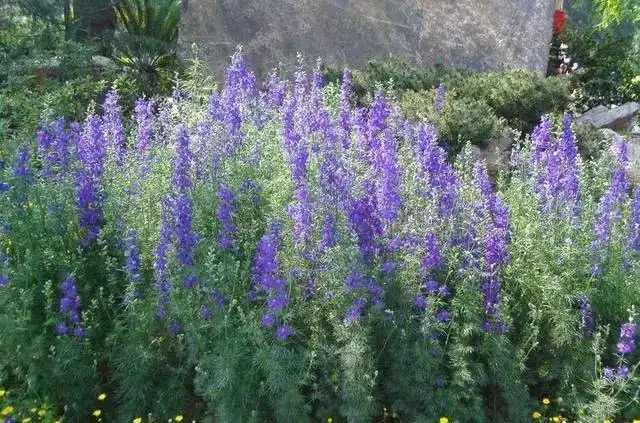Identification, application and maintenance of 200 garden plants
1- Flower name: Bougainvillea (Rhododendron edulis)
Flowering period: November to May or June of the following year
Introduction: Other names include Bougainvillea, Trifoliate Plum, Hairy Turban, Rib Rhododendron, Triangle Flower, Bougainvillea, Leaf Plum, Paper Flower, and Mirabilis jalapa. The Shenzhen city flower is an evergreen climbing shrub. It prefers warm, humid climates and is not cold-tolerant. It can safely overwinter at temperatures above 3°C and will bloom at temperatures above 15°C. It prefers ample sunlight.
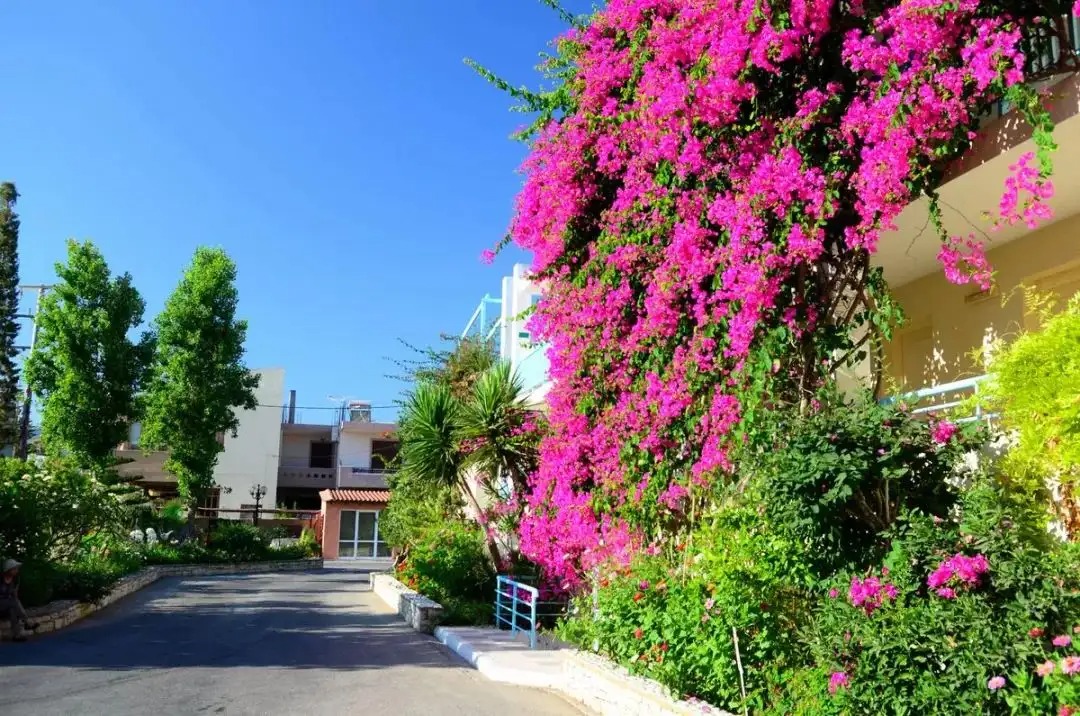

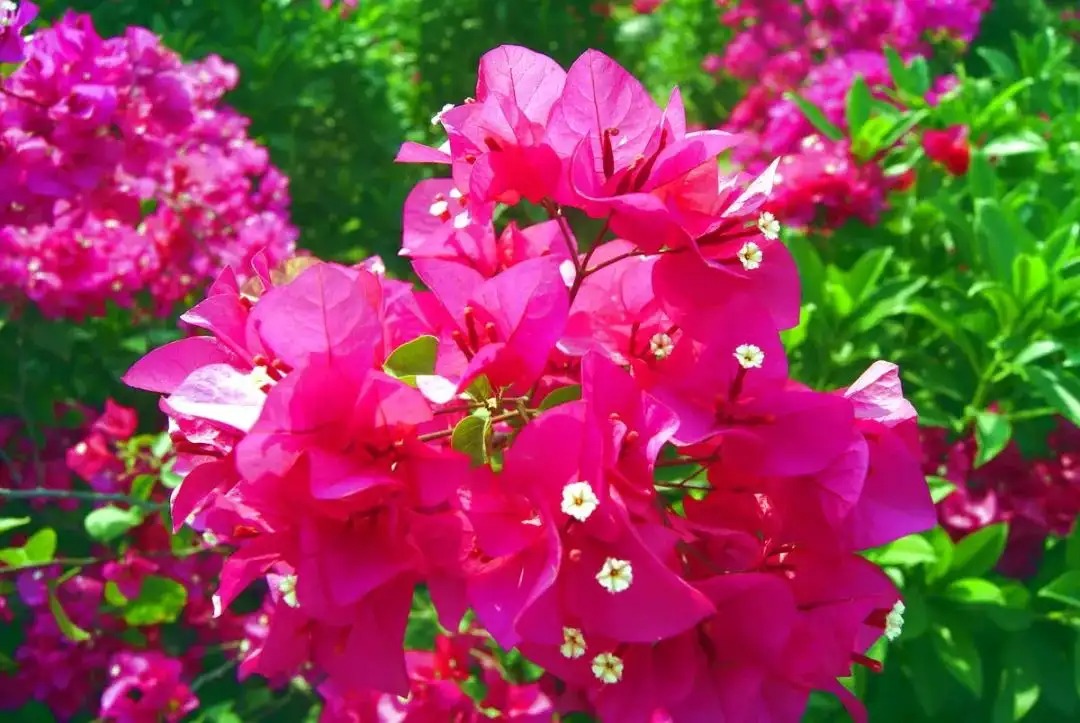
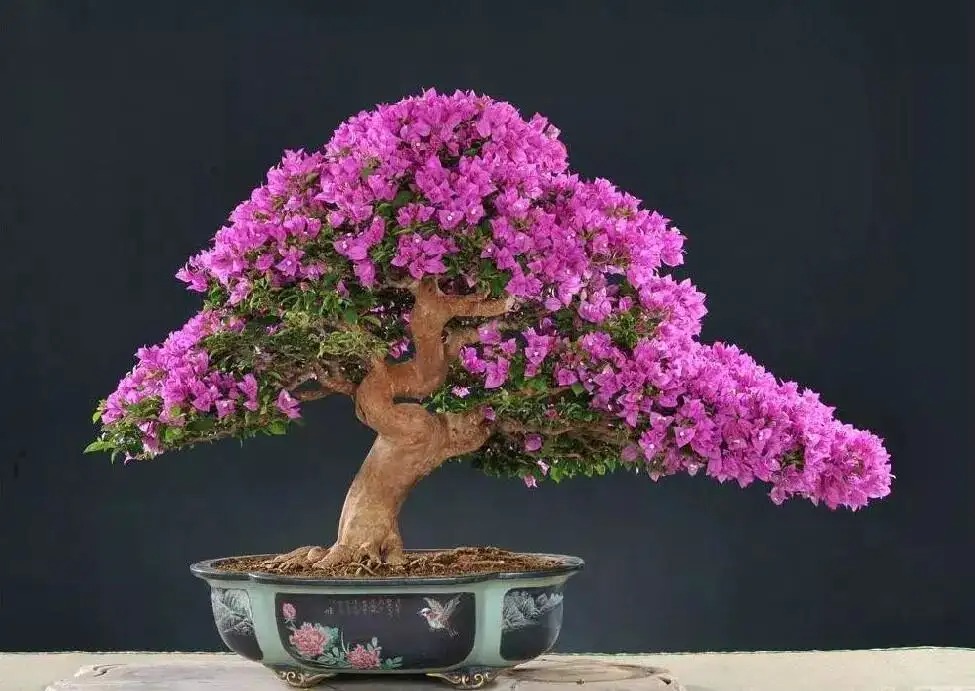
2-Flower name: Kapok
Flowering period: March and April
Introduction: Also known as the red cotton tree, hero tree, climbing flower, spotted cotton, spotted cotton tree, and climbing branch, this tree belongs to the Bombacaceae family and is a large deciduous tree native to India. The kapok tree is found in tropical and subtropical regions, reaching heights of 10-25 meters. Its trunk is densely covered with thorns at its base to protect it from animal intrusion. The kapok tree's appearance varies greatly: in spring, it displays an orange-red hue; in summer, its leaves are lush and shady; in autumn, its branches are withered; and in winter, its branches are bare and cold, presenting a different scene with each season. The kapok flower is orange-red and blooms from March to April, with flowers blooming before leaves appear. Its shape is masculine and beautiful. Its large, beautiful flowers and majestic appearance make it a popular ornamental tree in gardens and as a street tree.

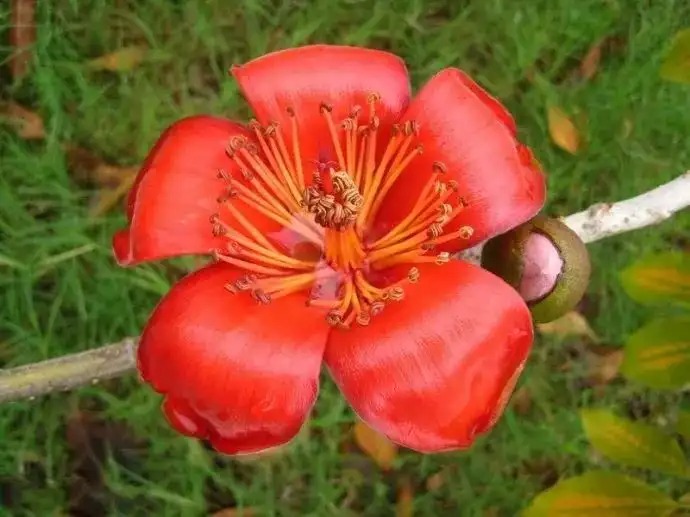

3-Flower name: Phoenix flower
Flowering period: May-June
Introduction: The Delonix regia is a plant of the genus Delonix in the Fabaceae family. It is native to Madagascar, Africa. It is endangered in the wild. It has been introduced and cultivated, and is widely planted as an ornamental tree. It is a common introduced deciduous tree in Hong Kong and was introduced to Taiwan in 1897. Tainan City has designated it as its city flower, in keeping with its nickname, "Phoenix City."
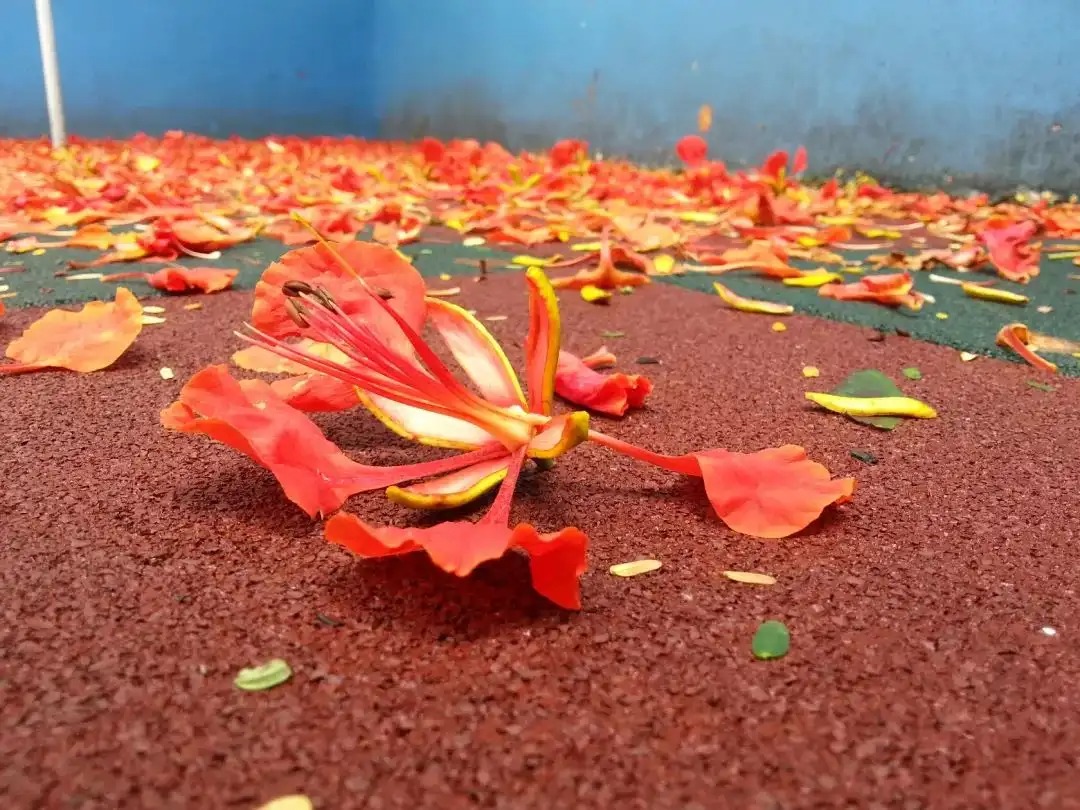
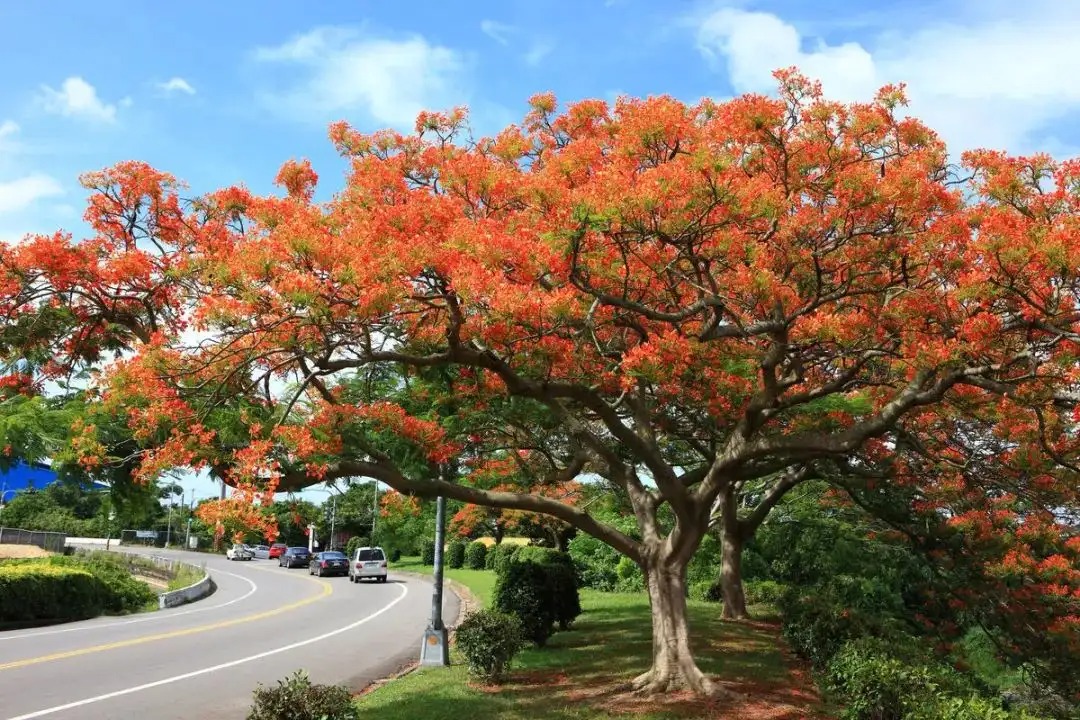

4-Golden Phoenix
A large shrub or small tree up to 3 meters tall, with green or pale green branches and sparse spiny thorns. Its leaves are 4 to 8 pairs of opposite, bipinnately compound leaves, with 7 to 11 pairs of leaflets, oblong or obovate, with an oblique base and a concave apex, and very short petioles. The inflorescence is terminal or axillary, with rounded, petiolate petioles, orange or yellow, and pedicels up to 7 cm long. The pods are black, with 6 to 9 seeds. Flowering and fruiting occur almost year-round. Native to the West Indies, it is cultivated in Yunnan, Guangxi, Guangdong, and Taiwan. It is a valuable ornamental tree in tropical regions.
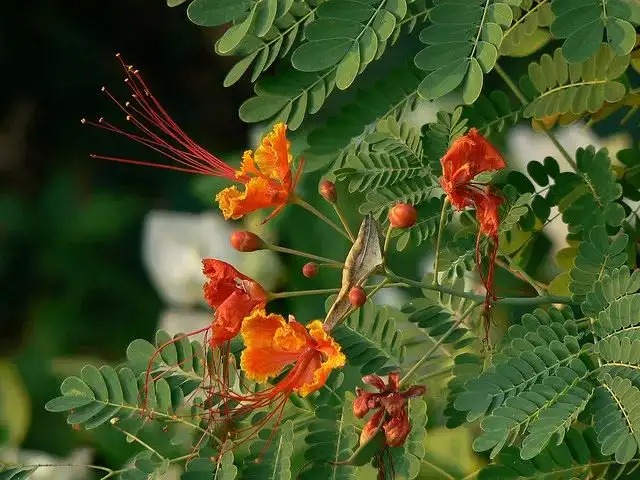

5-Flower name: Jacaranda
Flowering period: April and May
Introduction: Jacaranda is a deciduous tree with a towering crown, reaching 12 to 15 meters in height, and reaching a maximum height of 20 meters. Its leaves are large, bipinnately compound, opposite, and typically contain more than 15 pairs of pinnae, each with 10 to 24 pairs of closely attached leaflets. The leaflets are oblong, about 1 cm long, with entire margins, an acute apex, and slightly pubescent. The inflorescence is terminal or axillary, with bell-shaped flowers and a two-lipped, five-lobed corolla about 5 cm long, bluish-purple in color, and didynamous stamens.
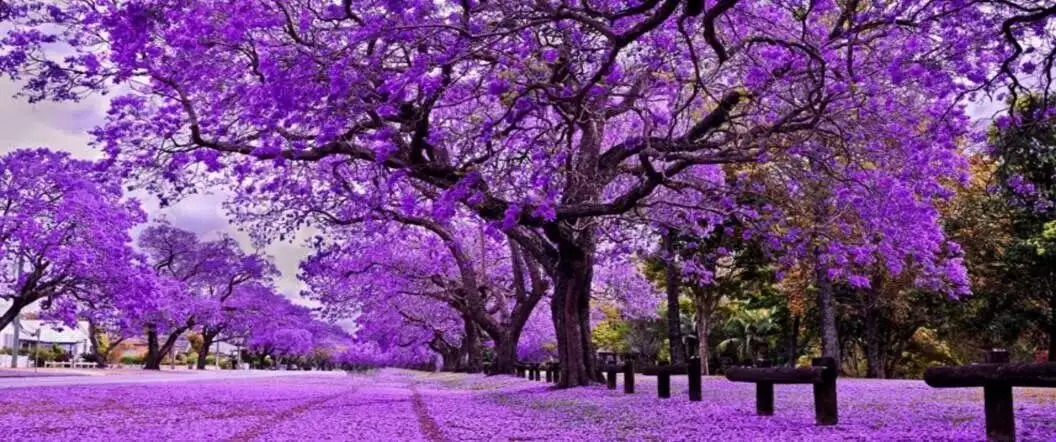



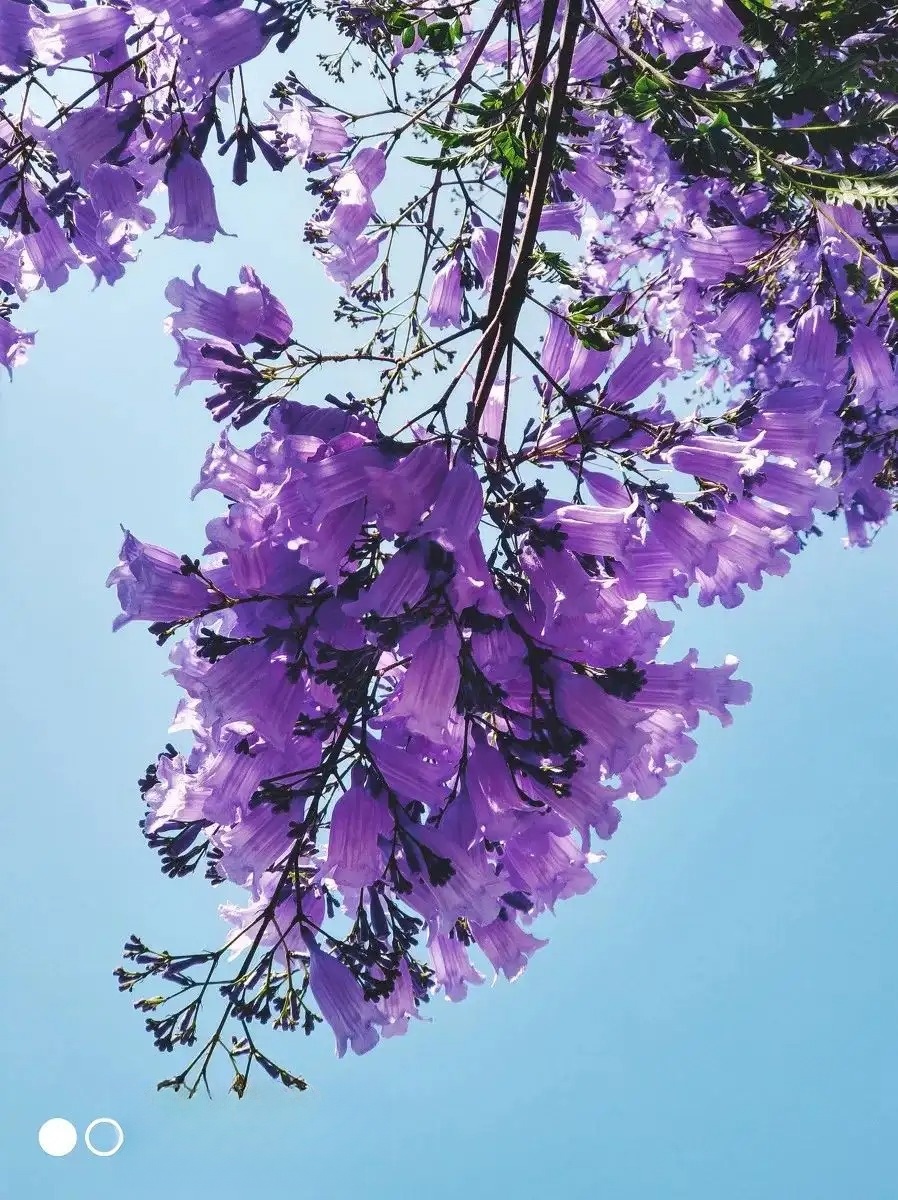
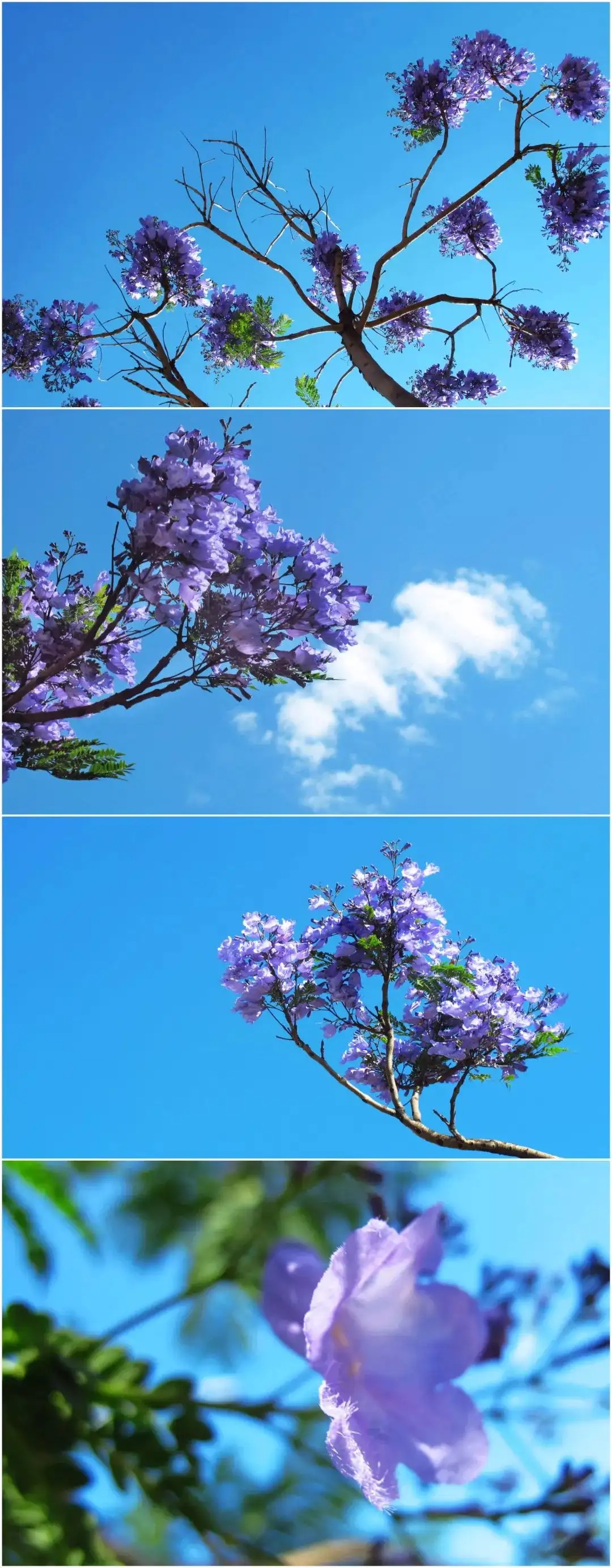
6-Flower name: Flame Flower (Acanthaceae)
Flowering period: April, May, June
Introduction: The Worry-Free Flower is an evergreen tree with large, pinnate leaves and large panicles of inflorescence at the tops of its branches. Its flowers are orange and its pods are large, flat, and drooping. This tree boasts a majestic presence, large leaves, and fiery blooms, earning it the nickname "flame flower." It is a popular greening plant in southern China. It grows to approximately 10 meters tall, with a large crown and pinnate leaves 30-50 cm long, ovate, and dark green. Its flowers are numerous and often clustered at the tops of its branches. These large, cup-shaped flowers, about 10-12 cm long, are vibrant red with a golden ring around the petals, creating a striking appearance. It blooms between winter and spring, and when in full bloom, they resemble a blazing flame, a truly spectacular sight. The flowering period is April-May.
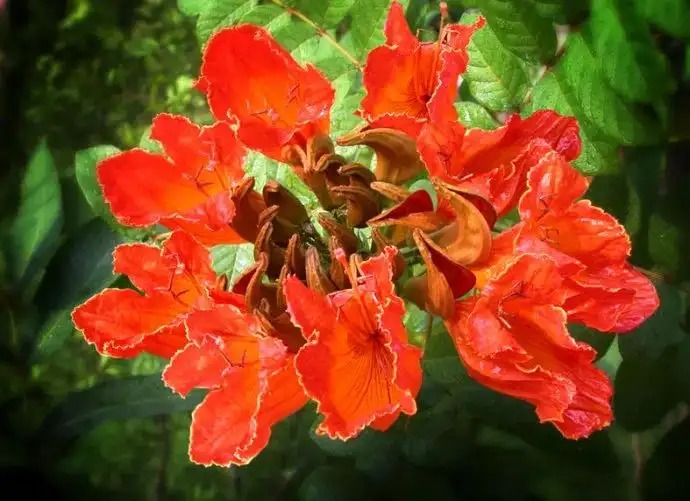

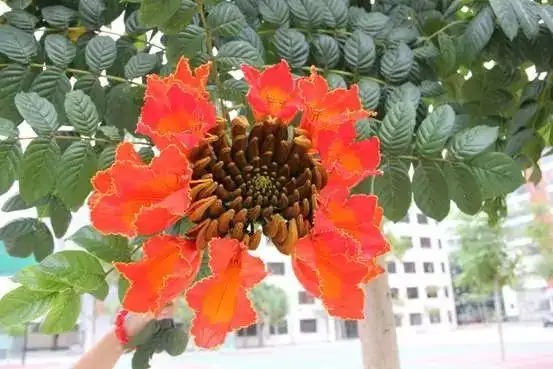
7-Flower name: Plumeria
Flowering period: May-October
Introduction: Plumeria, also known as Plumeria frangipani and Egg Yolk Flower, belongs to the Apocynaceae family and the genus Plumeria. It is native to the Americas and has been introduced for cultivation. It is a deciduous shrub or small tree. Its twigs are thick and fleshy. Its leaves are large, thickly papery, and clustered together at the top of the branches, with veins connecting into a single vein near the leaf margin. The flowers are clustered together at the top of the branches. The corolla is tubular, about 5-6 cm in diameter, with five lobes, creamy white on the outside and bright yellow in the center. It is very fragrant and blooms from May to October. Plumeria blooms in summer, offering a delicate and elegant fragrance. After the leaves fall, the bare trunk curves naturally, creating a beautiful appearance. It is suitable for planting in gardens and lawns, but can also be grown in pots and used as a medicinal herb.

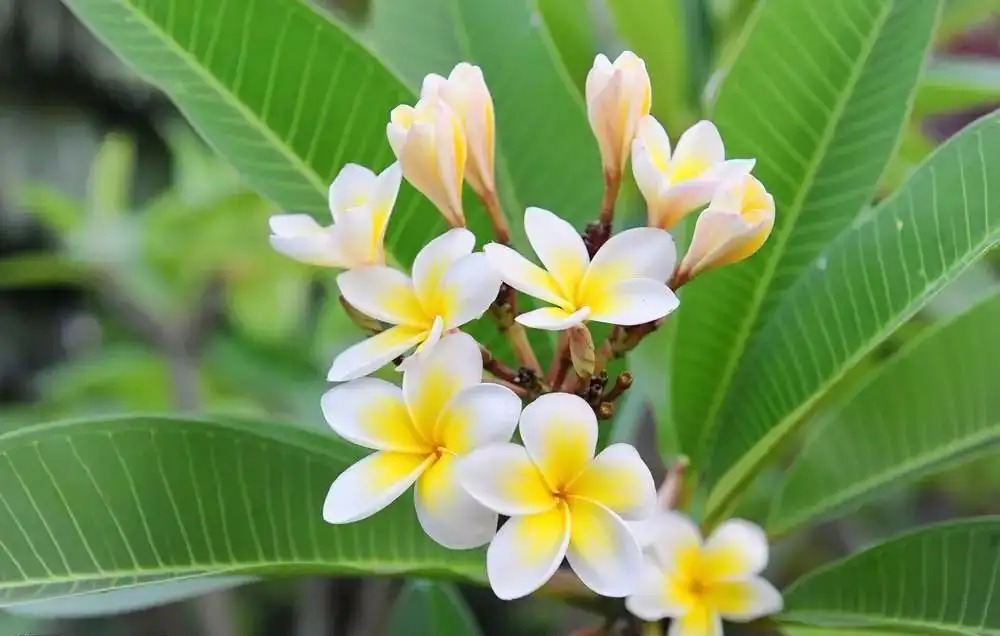

8-Flower name: Crape Myrtle
Flowering period: June-August
Introduction: Also known as the itch flower, itch tree, purple gold flower, purple orchid, mosquito flower, Western bayberry, 100-day red, and barkless tree, this deciduous shrub or small tree of the Lythraceae family and genus Lagerstroemia can reach 7 meters in height. Its bark is smooth, gray or gray-brown. Its trunk is often twisted, and its twigs are slender. Its leaves are alternate or sometimes opposite, papery, oval, broadly oblong, or obovate. They are green to yellow when young, purple-black when mature or dry, and dehiscent. Its seeds are winged and about 8 mm long. It blooms from June to September, and fruiting occurs from September to December. Lagerstroemia has an elegant appearance, a smooth, clean trunk, and vibrant flowers. Its blooming period is during the summer and autumn when flowers are scarce, and its long blooming period earns it the nickname "100-day red." It's also known as "100-day red," and the saying, "In midsummer, green blinds the eyes, but this flower fills the house with red." It makes an excellent bonsai material for viewing its flowers, trunk, and roots. Its roots, bark, leaves, and flowers can all be used as medicine. As an excellent ornamental flowering tree, crape myrtle is widely used in landscaping, including parks, courtyards, roadsides, and urban areas. It can be planted in front of buildings, within courtyards, by pools, rivers, lawns, and along paths in parks. It is also a good material for bonsai.

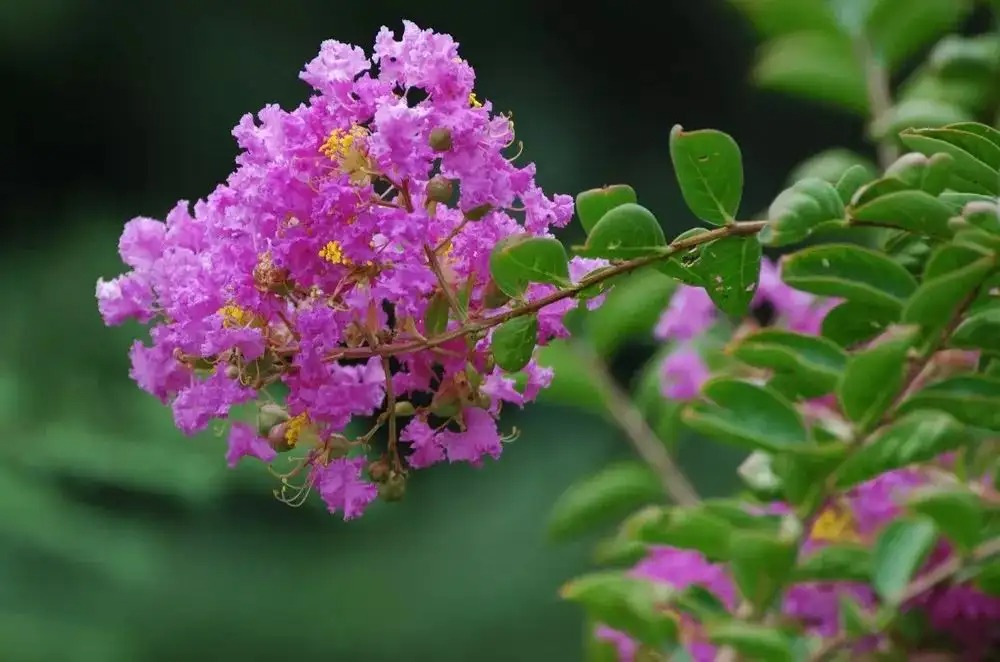
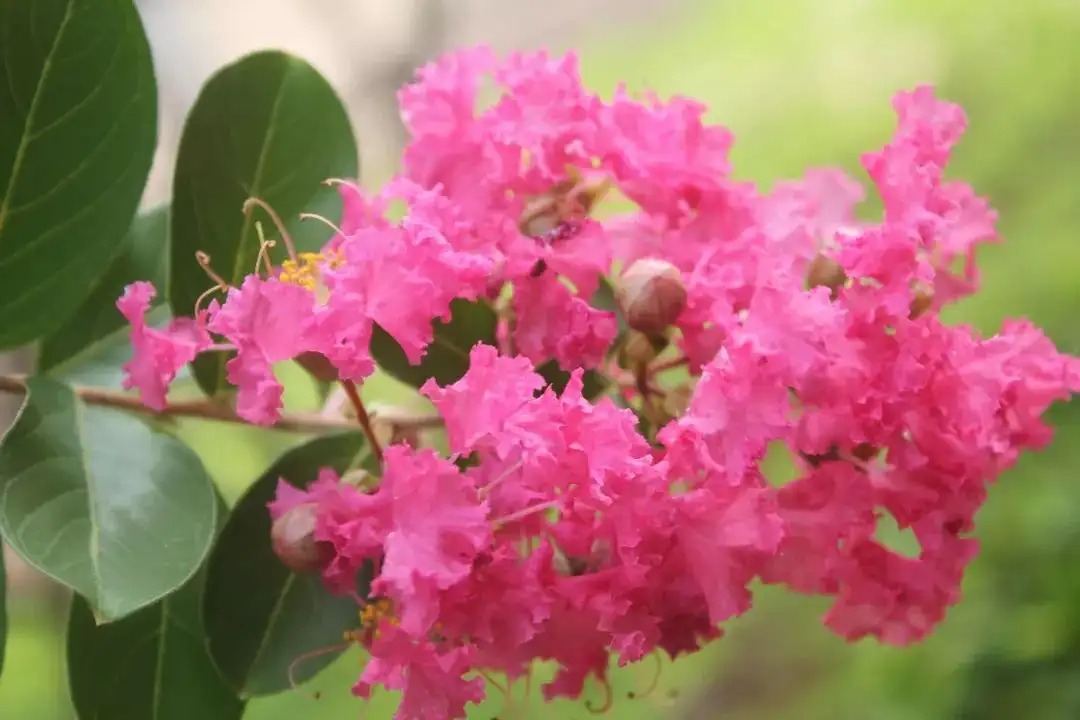
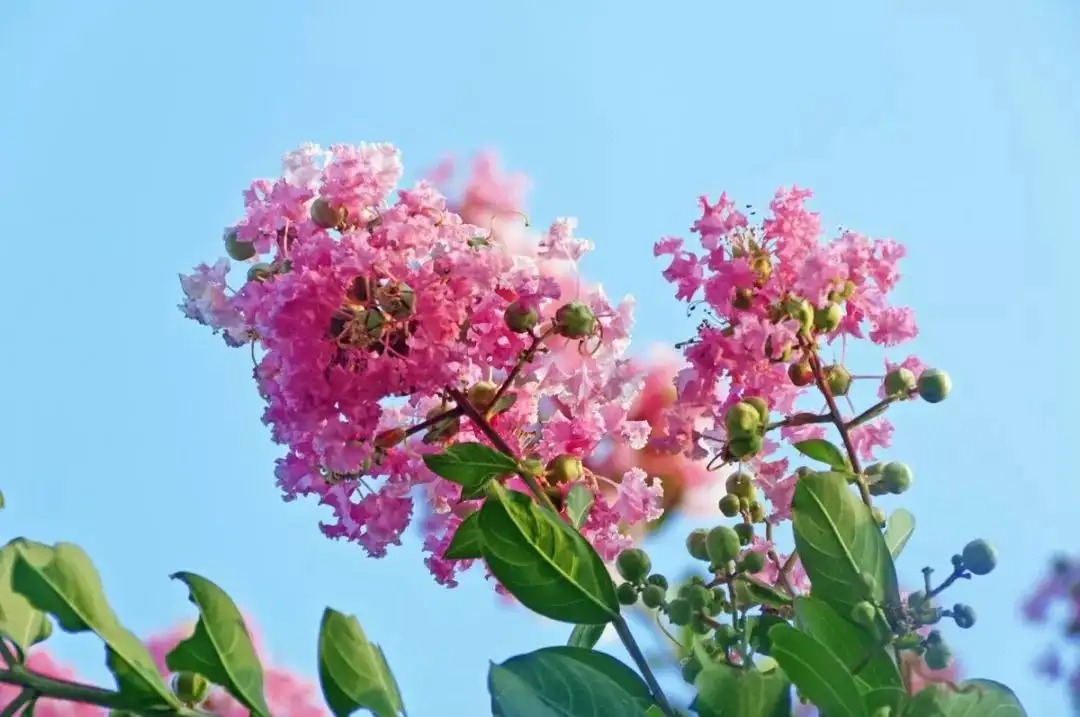

9-Flower name: Lotus
Flowering period: June-August
Introduction: The lotus, also known as lotus and water hibiscus, is a perennial aquatic herb in the Nymphaeaceae family. Its underground stems are long and thick with long nodes, and its leaf shields are round. It blooms from June to September, borne singly at the top of the pedicel. The petals are numerous and embedded in the receptacle. They can be red, pink, white, purple, or have patterns or borders. The nut is oval, and the seeds are ovate. There are many varieties of lotus, divided into ornamental and edible types. Native to tropical and temperate regions of Asia, records of its cultivation date back to the Zhou Dynasty. The lotus is a treasure from head to toe. Its lotus roots and seeds are edible, while its seeds, rhizomes, nodes, leaves, flowers, and seed embryos can all be used as medicine. Its character, rising from the mud without being stained, is constantly praised. Chen Zhisui's poem "Ode to the Lotus" says, "Living in the mud, yet unstained, its white stems buried in the ground, unknown to anyone. Vibrant in the clear red and green, its fragrance fills the pond without waiting for the wind."

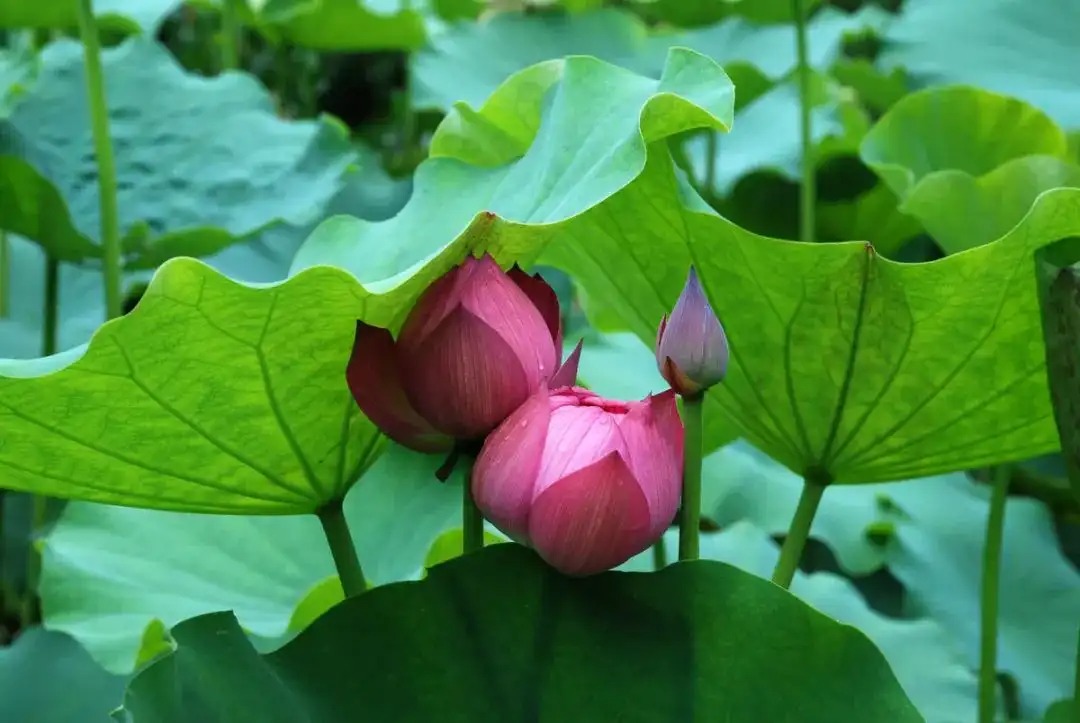
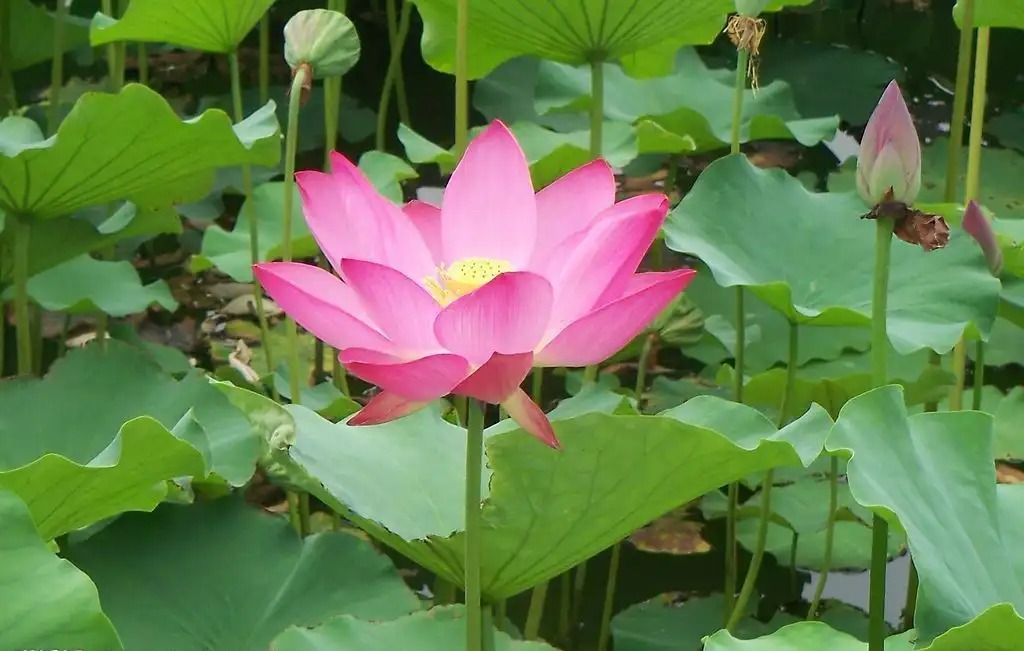
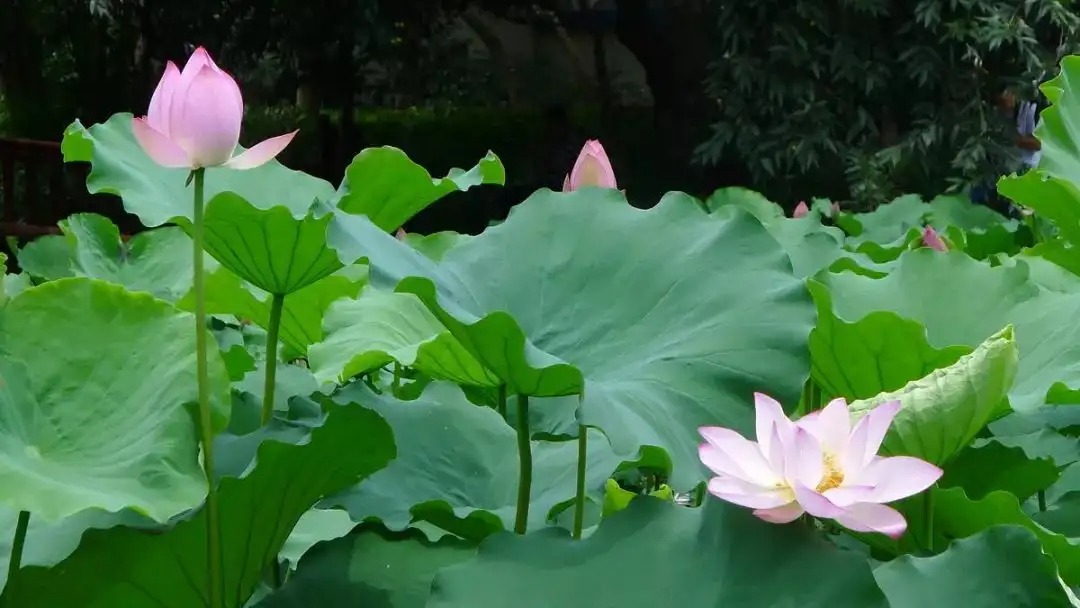
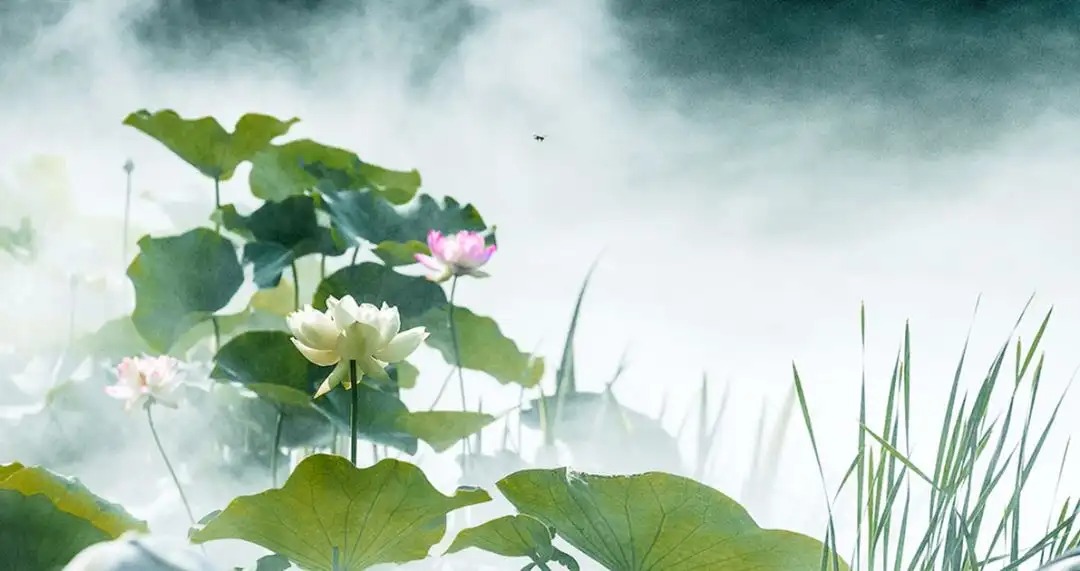
10-Flower name: Lavender
Flowering period: June-August
Introduction: Lavender, a member of the genus Lavandula in the Lamiaceae family, is native to the Mediterranean coast, Europe, and the Australasia archipelago. It was later widely cultivated in the United Kingdom and Yugoslavia. Its elegant leaves and flowers, along with long, beautiful blue-purple inflorescences, make it a new, hardy perennial in the garden, suitable for planting in clumps or strips along paths or as a decorative ornamental plant in pots. Lavender has been a common herb since Roman times, earning it the nickname "Queen of Herbs" for its diverse medicinal properties. It has been widely used medicinally since ancient times, with both its stems and leaves serving as a stomachic, diaphoretic, and analgesic properties, making it an excellent remedy for colds, abdominal pain, and eczema. It has also been the subject of television dramas, films, and poems. Lavender plants are numerous and possess great ecological and ornamental value. They are low-growing plants with a gray-purple color throughout the year. They are vigorous and resistant to pruning, and their leaves and flowers are elegant and graceful. Lavender can be used to create a dedicated lavender aromatic garden, integrating greenery, beautification, color, and fragrance. It can be used for viewing, purify the air, treat diseases and play a role in medical care.

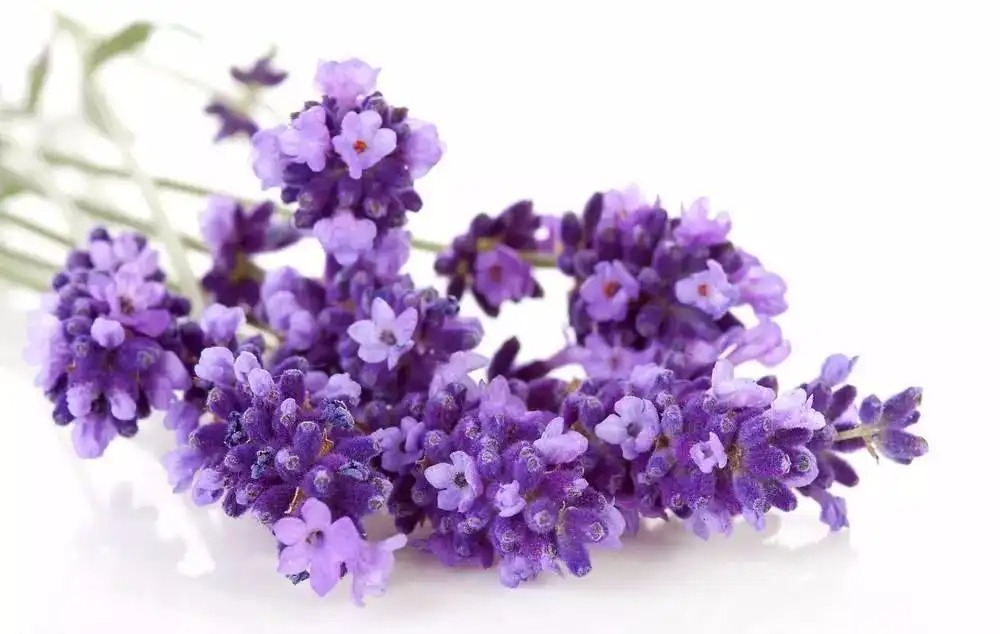
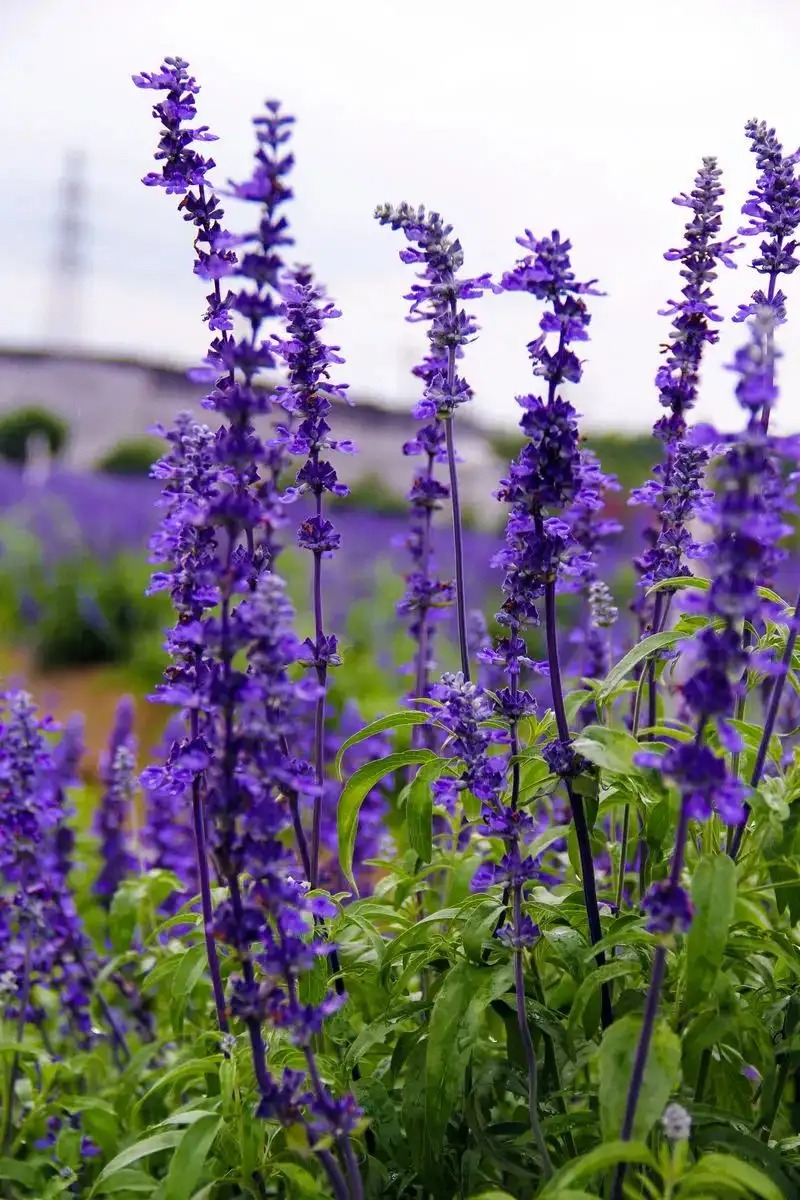
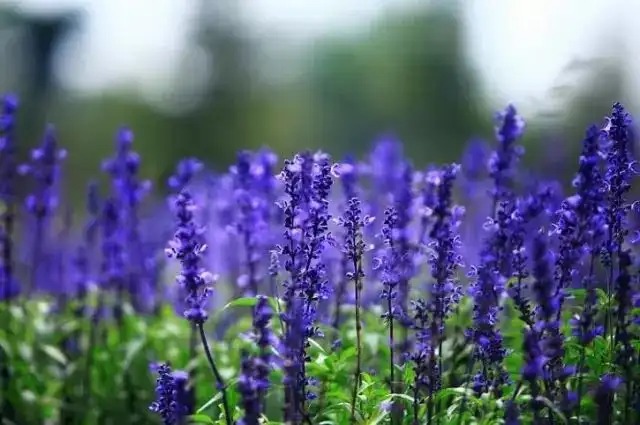
11- Flower name: Sunflower
Flowering period: June-August
Description: Sunflower is an annual herb, 1-3 meters tall. Its stem is erect, sturdy, rounded, and angular, covered with coarse white hairs. It is commonly known as sunflower seed. It prefers warm weather and is drought-tolerant. Native to North America, it is cultivated worldwide.
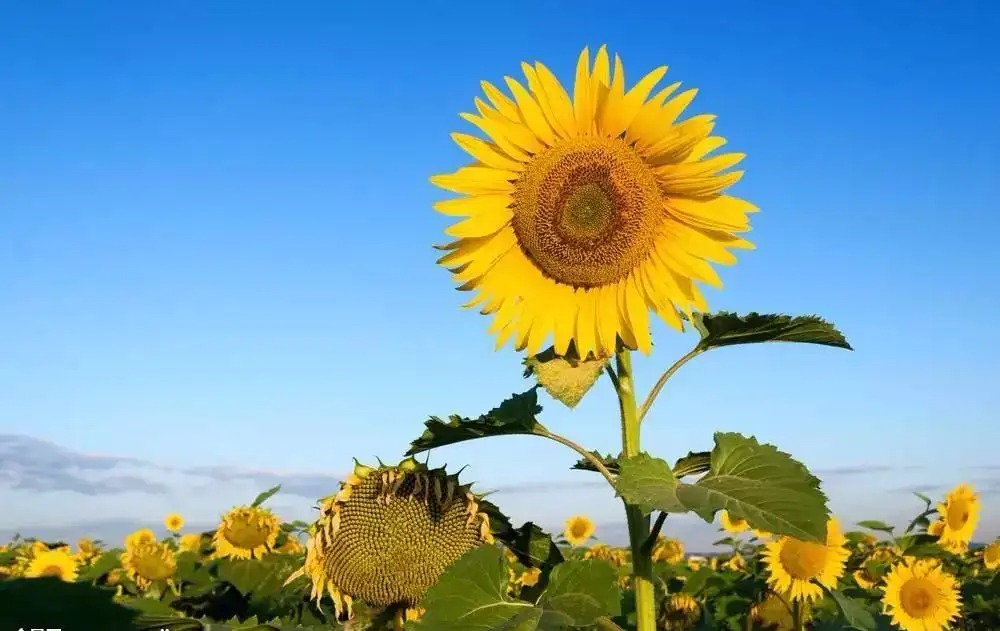

12-Flower name: Bird of Paradise
Flowering period: around Qingming Festival
Introduction: Also known as white-flowered jasmine, flowered jasmine, and bird's flower, it is a Class II nationally protected plant. The bird's-of-the-weed flower belongs to the genus Mucuna in the family Fabaceae, family Phaseolidae. Native to tropical and subtropical Asia, it is cultivated throughout southern China. Because it is evergreen, it blooms profusely around the Qingming Festival, creating a dazzling display of flowers. The hanging clusters resemble dancing bird's-of-the-weed flowers, making it a highly ornamental plant. Because it is evergreen, it blooms profusely around the Qingming Festival, creating a dazzling display of flowers. Therefore, it is ideal for rooftop landscaping in parks, courtyards, large trellises, green corridors, pavilions, and outdoor restaurants. It is also suitable for vertical landscaping on walls, rockeries, balconies, and other structures, or as slope protection plants. It can also be placed on rock faces, stacked rocks, or in forests, creating a natural and rustic atmosphere. When planting on rooftops, it is important to establish supports and manually tie the flowers to aid their climbing.

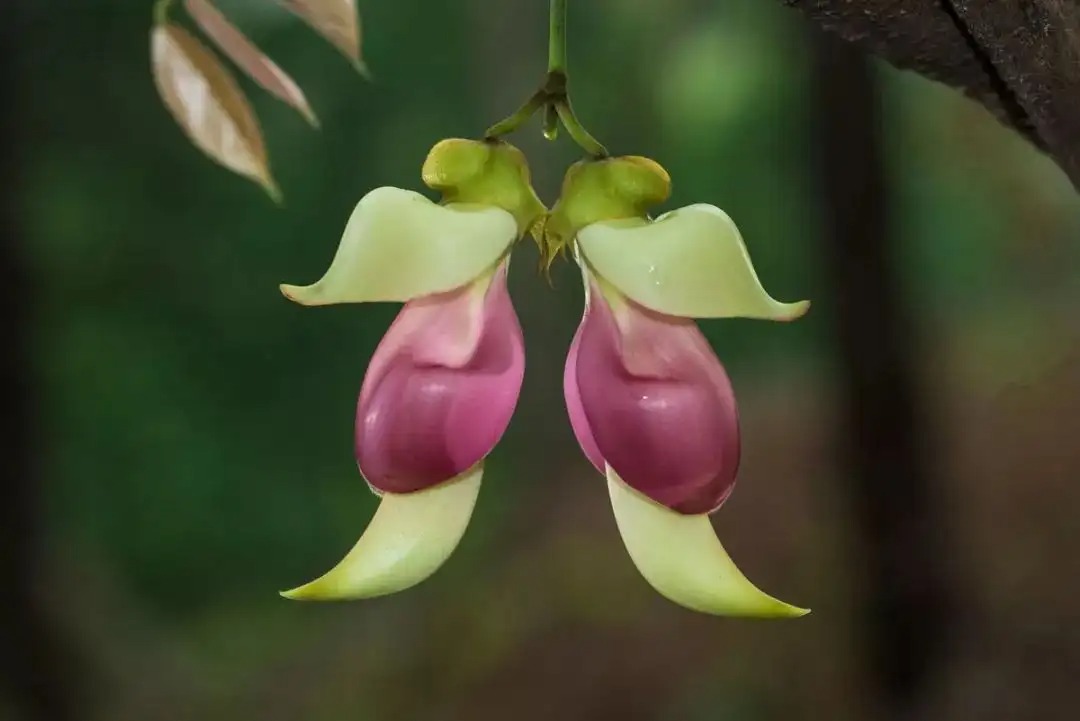

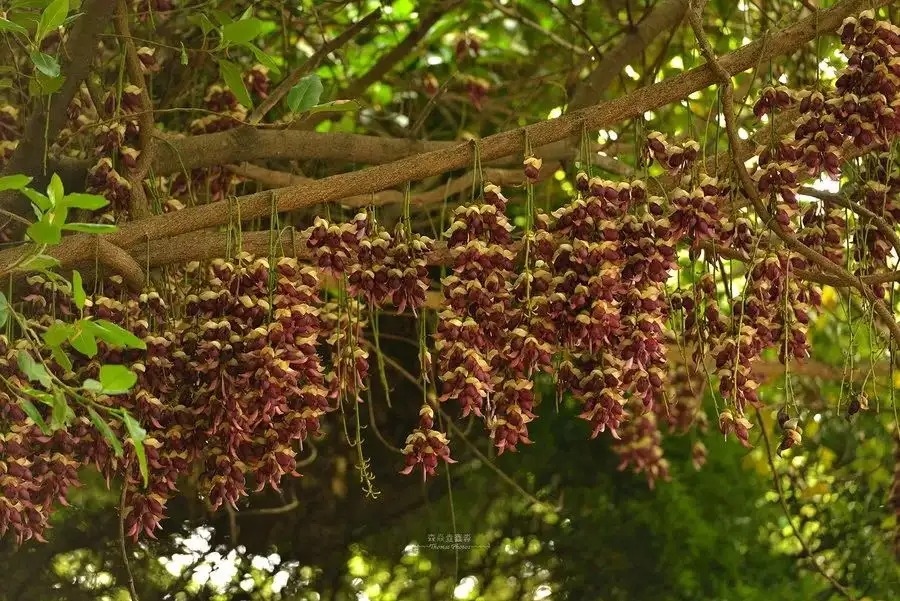

13-Flower name: Datura
Flowering period: April
Introduction: Datura, also known as Mandala, Manda, Manza, Manda, Intoxicating Flower, Dog Walnut, Datura, Maple Eggplant Flower, Peach Flower, Datura, Big Trumpet Flower, and Mountain Eggplant, grows wild in fields, ditches, roadsides, riverbanks, and hillsides. Native to India, Datura has been translated as Round Flower, White Ball Flower, Comfortable Flower, and Pleasing Flower. Native to tropical and subtropical regions, Datura is found in all provinces. It prefers warm, sunny, and well-drained sandy loam. It is widely distributed throughout China and primarily harms cotton, beans, potatoes, and vegetables.
Datura is a green flowering plant, and green flowering plants are supposed to have a positive impact on indoor air quality. However, this isn't the case. Growing datura indoors is relatively rare, as its impact on the home environment is not particularly favorable. While beautiful and enchanting, and capable of purifying the air, datura is a highly toxic plant, potentially carcinogenic, and its fragrance can be hallucinogenic. The main active ingredient in the "Ma Fei San" (Ma Fei San) invented by Hua Tuo, a renowned physician during the Three Kingdoms period, is datura. Therefore, it's not suitable for indoor planting. Even when grown outdoors, caution is advised to prevent accidental ingestion and poisoning.
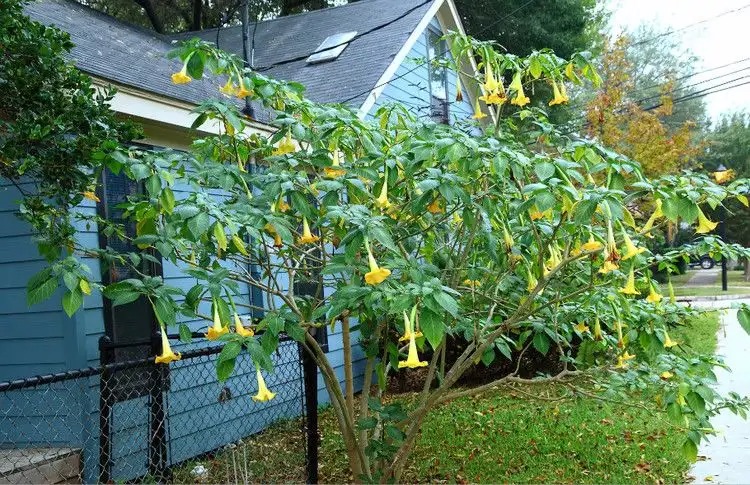
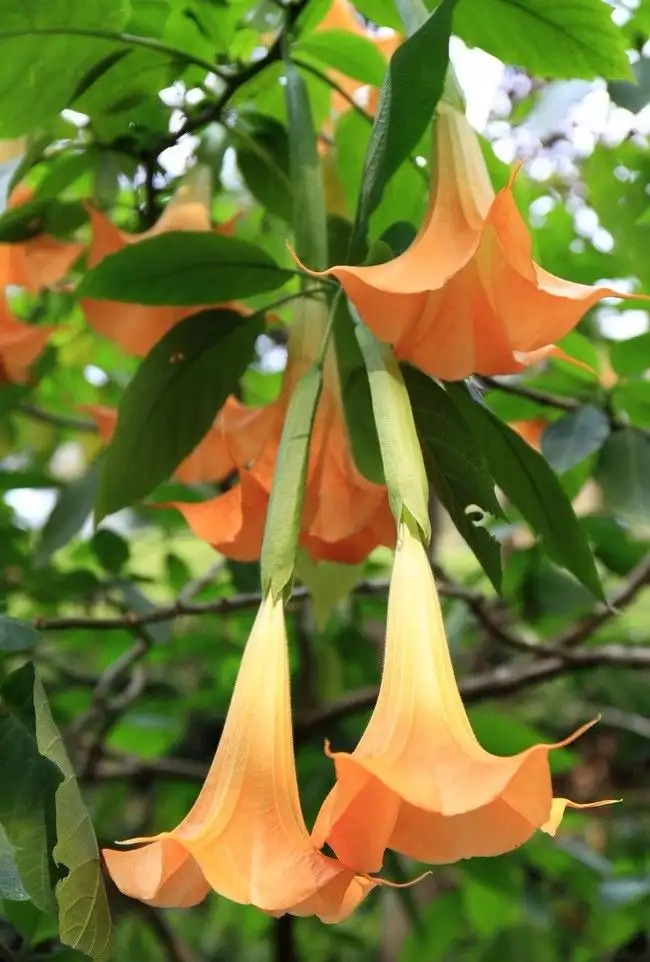
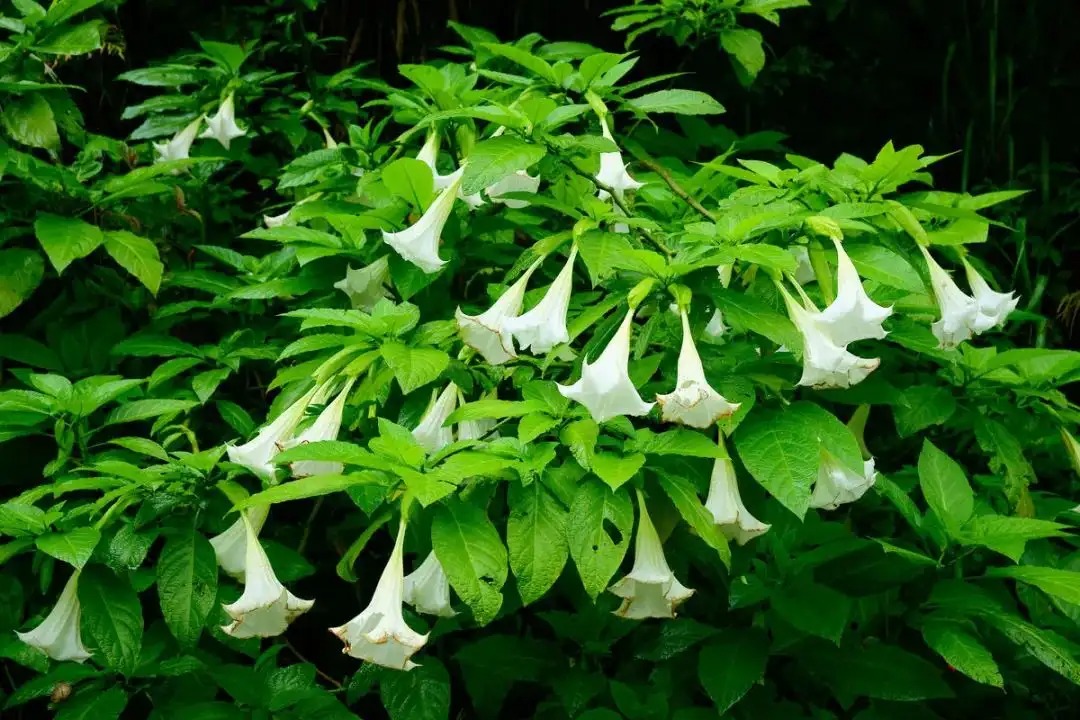
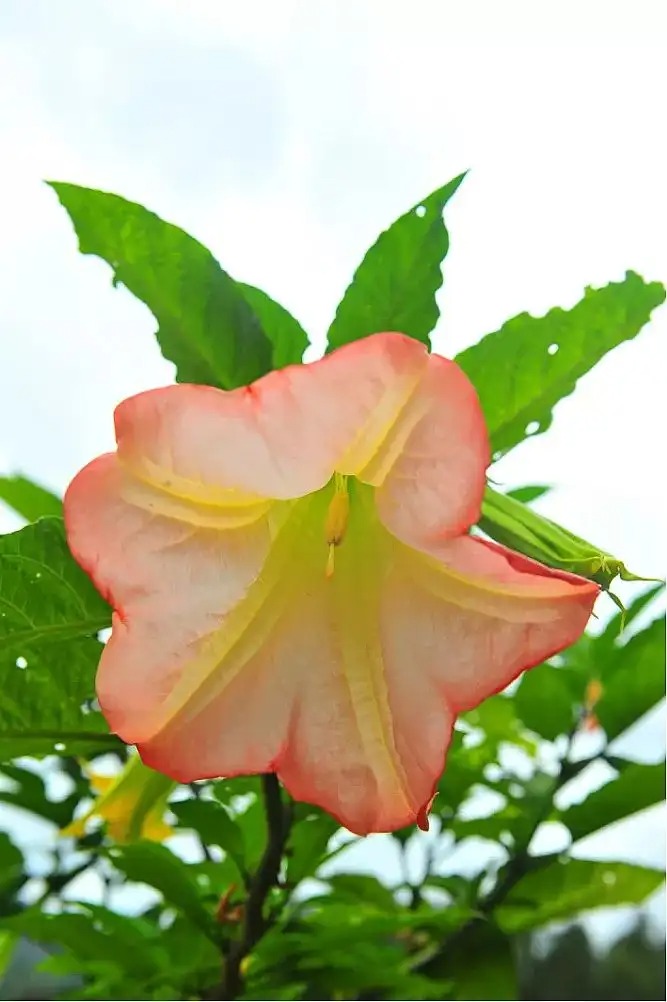
14-Flower name: Purple Golden Flower (Bauhinia)
Flowering season: The deep purple Bauhinia bracteata blooms from November to March. The pink, white, or yellow Bauhinia odorata blooms from February to May.
Introduction: The Bauhinia is the official flower of the Hong Kong Special Administrative Region. The large-scale bronze sculpture, "Eternally Blooming Bauhinia," a gift from the Central People's Government to the SAR Government, stands 6 meters tall and weighs 70 tons. Elegant and graceful, it carries a profound meaning. Located on the waterfront of the new wing of the Hong Kong Convention and Exhibition Centre, it has become a symbol of Hong Kong. Bauhinia, also known as Bauhinia rubra, is an evergreen medium-sized tree in the Caesalpiniaceae family. Its leaves are round, broadly ovate, or kidney-shaped, but each split in two at the apex, resembling a sheep's hoof, hence its name. Blooming between winter and spring, the flowers are large, palm-sized, and slightly fragrant, with five petals arranged evenly in whorls, each in a red or pink color. Bauhinia flowers flourish year-round and are highly resistant to smoke and dust, making them particularly suitable as street trees. The bark contains tannins, which are used as tanning agents and dyes, and the roots, bark, and flowers are also used medicinally.
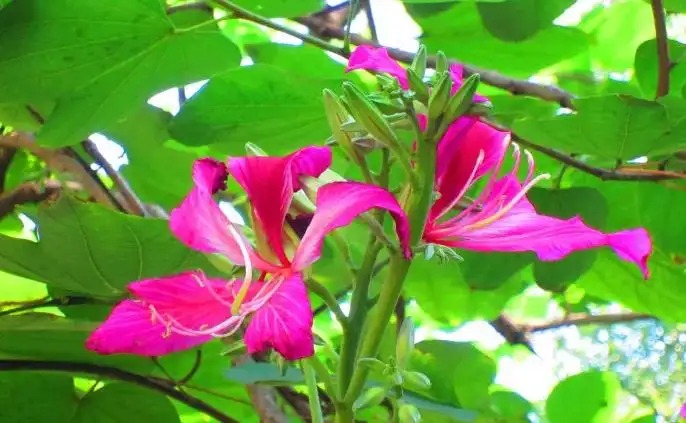


15-Flower name: Dragon's Tongue
Flowering period: all year round
Description: This shrub belongs to the Verbenaceae family. Young branches are quadrangular and covered with short, yellow-brown hairs, becoming glabrous with age. Leaves are papery, narrowly ovate or ovate-oblong, acuminate at the apex and nearly rounded at the base, with entire margins. Cymes are axillary or pseudo-terminal, dichotomously branched. Bracts are narrowly lanceolate. The calyx is white, connate at the base, swollen in the middle, with triangular-ovate lobes that acuminate at the apex. The corolla is deep red, covered with fine glandular hairs, with elliptical lobes. There are four stamens, extending from the corolla along with the style. The stigma is shallowly bifid. The drupe is nearly globose, with a shiny brown-black exocarp. The persistent calyx does not enlarge and is reddish-purple. Flowering occurs from March to May. This species is a beautiful ornamental plant. During flowering, the deep red corolla emerges from the white calyx, resembling a bead. The flowers are uniquely shaped and bloom profusely. Each calyx is composed of bracts, forming a prismatic calyx resembling a milky-white "star fruit." From the fissure at its tip, five crimson blossoms emerge, evenly spaced across the leaves, like red beads embodying the fire of life. Due to the limitations of pruning, potted plants typically grow very short. Primarily cultivated in greenhouses, they can be used as flower stands, as potted plants to adorn windowsills and small summer gardens, and in parks and tourist areas to create flower baskets, arches, pavilions, and various other designs, adding a touch of elegance to visitors.


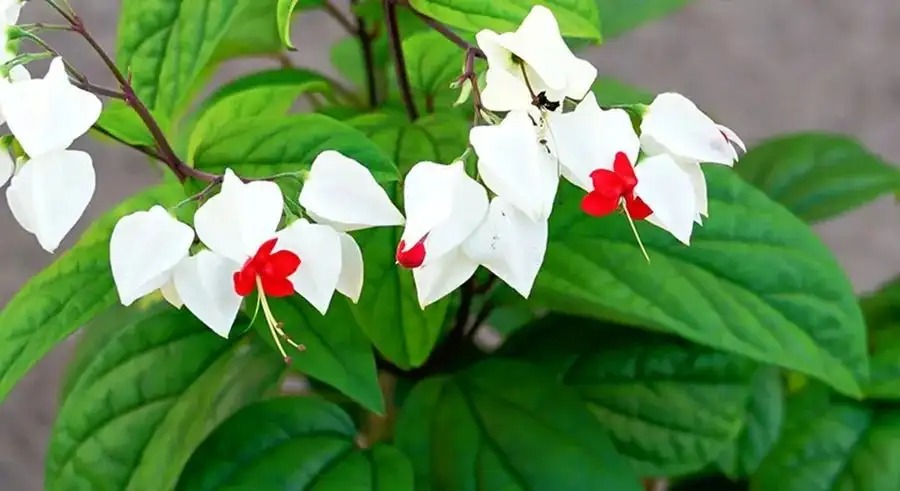
16-Flower name: Peach Blossom
Flowering period: February-March
Introduction: Peach blossoms are the blooming flowers of the peach tree, a plant in the Rosaceae family. Native to central and northern China, they are now widely cultivated in temperate regions around the world. Peach blossoms are highly ornamental and a common subject of literary creation.
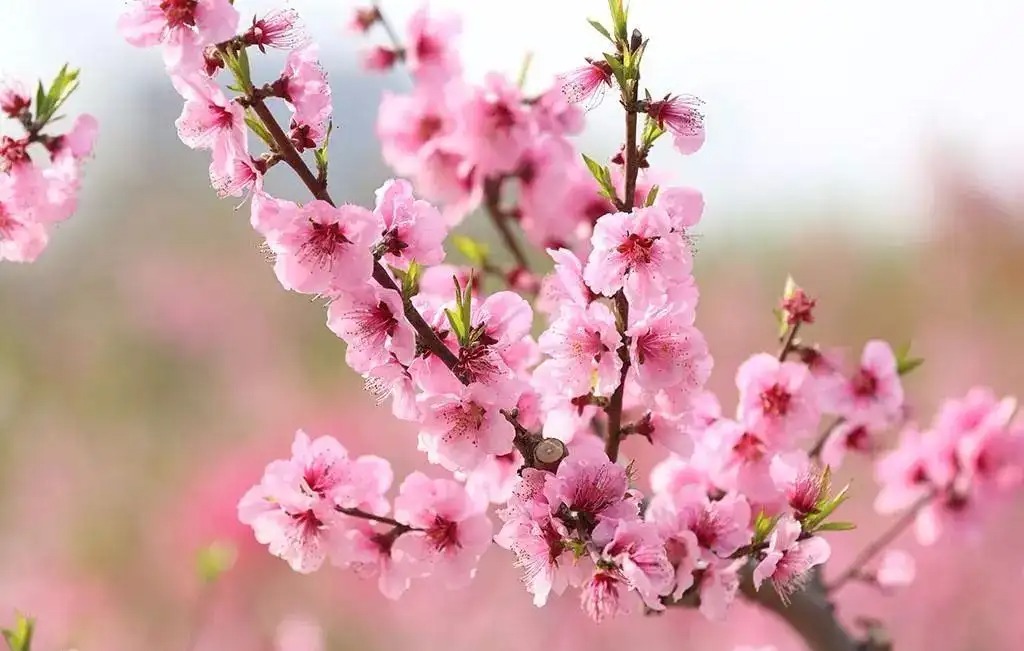
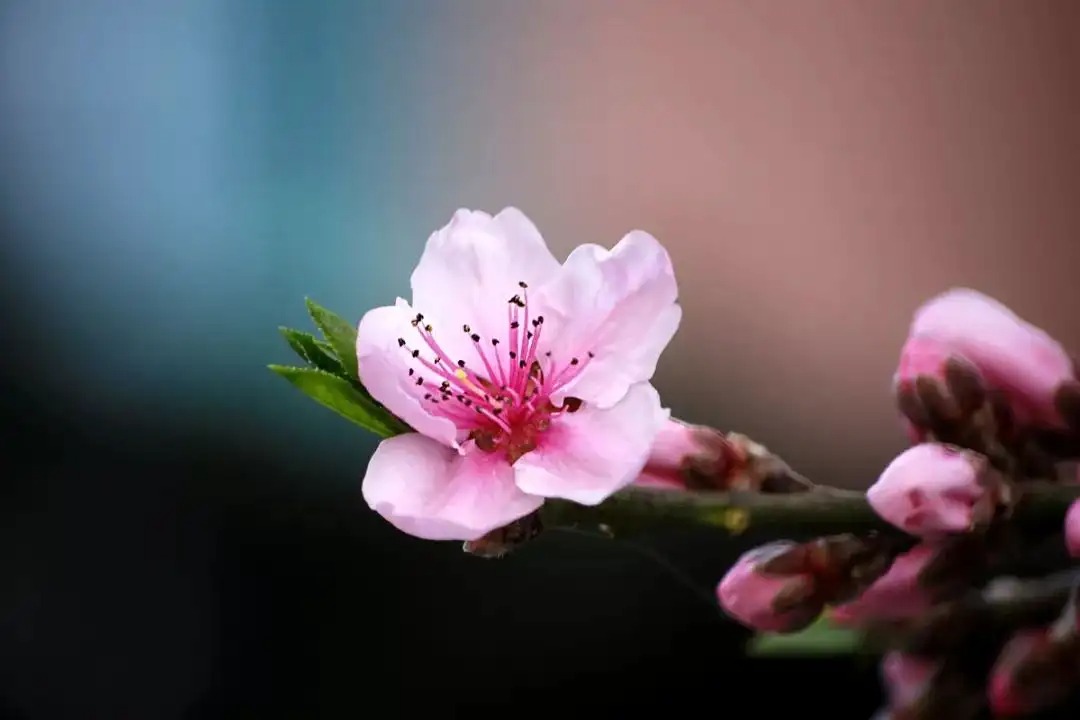
17-Flower name: Forsythia suspensa
Flowering period: May to September
Introduction: Forsythia suspensa belongs to the Verbenaceae family, genus Forsythia. It is native to Mexico, Brazil, and the Indian Ocean Islands. It is an evergreen shrub. Its branches are long, drooping or procumbent, and its leaves are two opposite, ovate-elliptical or obovate, with mucronate or rounded tips, a cuneate base, and serrated margins above the middle. The inflorescences are axillary, arranged in a terminal panicle, usually borne on one side of the central axis. The corolla is bluish-purple or white. The drupes are fleshy, ovate, clustered within sepals, and are glossy yellow. Forsythia suspensa is a flowering and fruiting plant. Small bluish-purple or white flowers bloom year-round, and the fruits change color in autumn. They are borne on long, drooping branches, making them very attractive. It can be potted for hallway displays or planted in the ground as garden hedges or clumps. It can also be cultivated as a shrub.
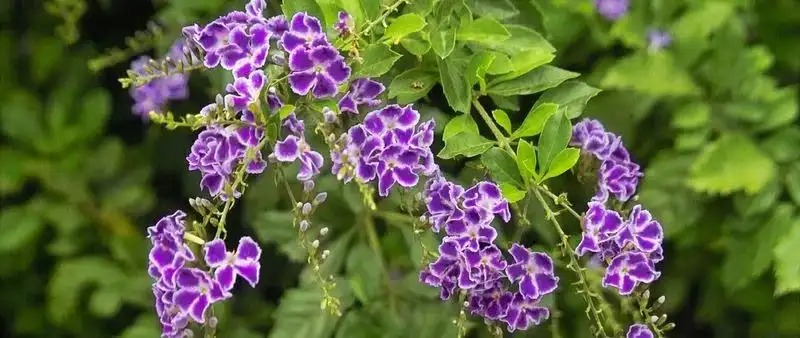

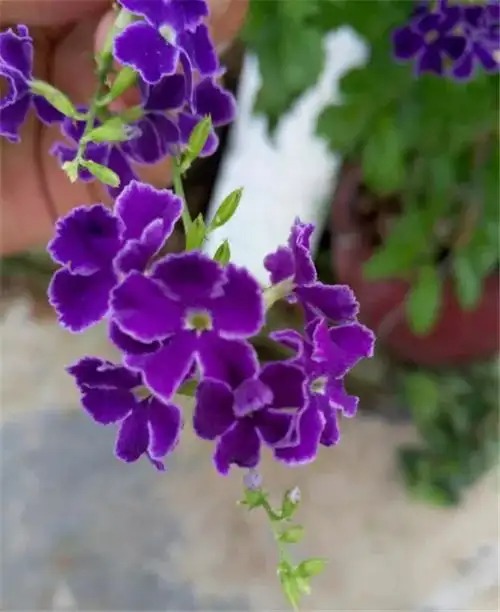
18-Flower name: Murraya
Flowering period: June-October
Introduction: Murraya paniculata can sometimes grow into a small tree. It has an elegant appearance, beautiful foliage, and a rich floral fragrance. Young branches are cylindrical, 1–5 mm in diameter, grayish-brown in color, and longitudinally wrinkled. They are tough, resistant to breaking, and have an uneven cross-section. Pinnately compound leaves have 3–9 leaflets, most of which have fallen off. The leaflets are obovate or nearly rhombus-shaped, with the widest point above the middle, approximately 3 cm long and 1.5 cm wide. They have obtuse, acute, or concave apexes, slightly oblique bases, and entire margins. They are yellowish-green, thinly leathery, with hyaline glandular dots on the upper surface. The petioles are short or nearly sessile, sometimes pubescent below. Potted plants reach 1–2 meters tall, are heavily branched, and grow upright. The bark is gray or light brown, often with longitudinal fissures. The odd-pinnate compound leaves are alternate, with 3–9 leaflets, ovate, spoon-shaped, obovate, or nearly rhombus-shaped, with entire, dark green, glossy margins. The inflorescence is white, about 4 cm in diameter, and blooms from July to October. The berries are nearly spherical, fleshy red, and ripen from October to February. The fruit has a fragrant aroma and a bitter, pungent taste that can leave a numbing sensation on the tongue.
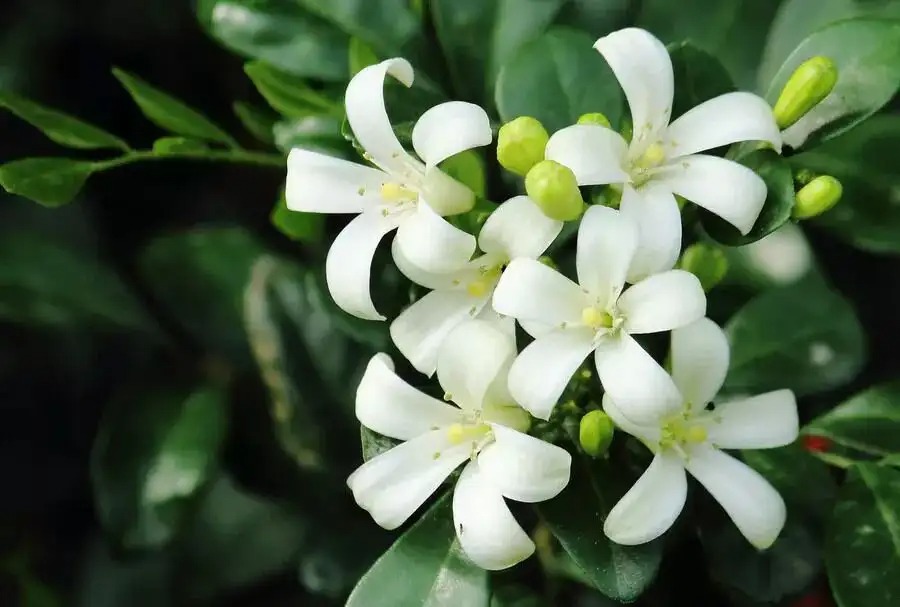
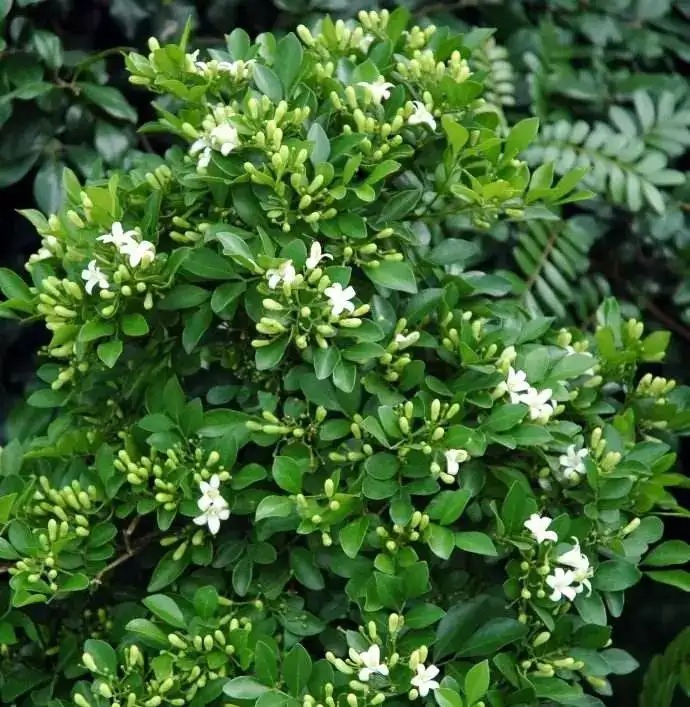
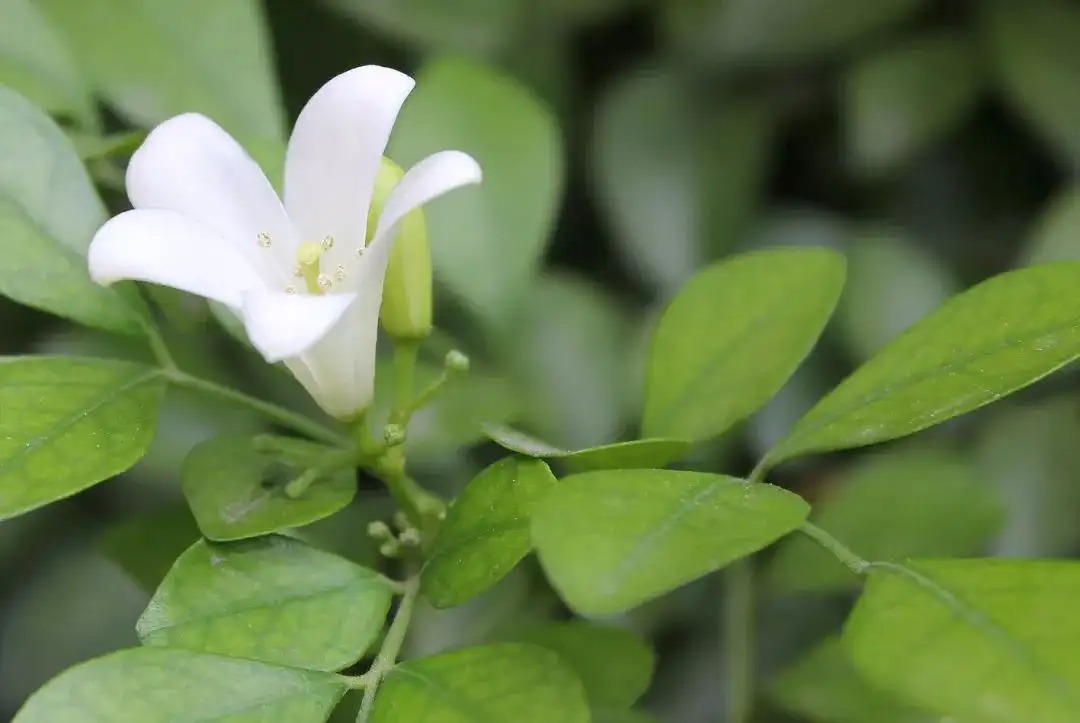
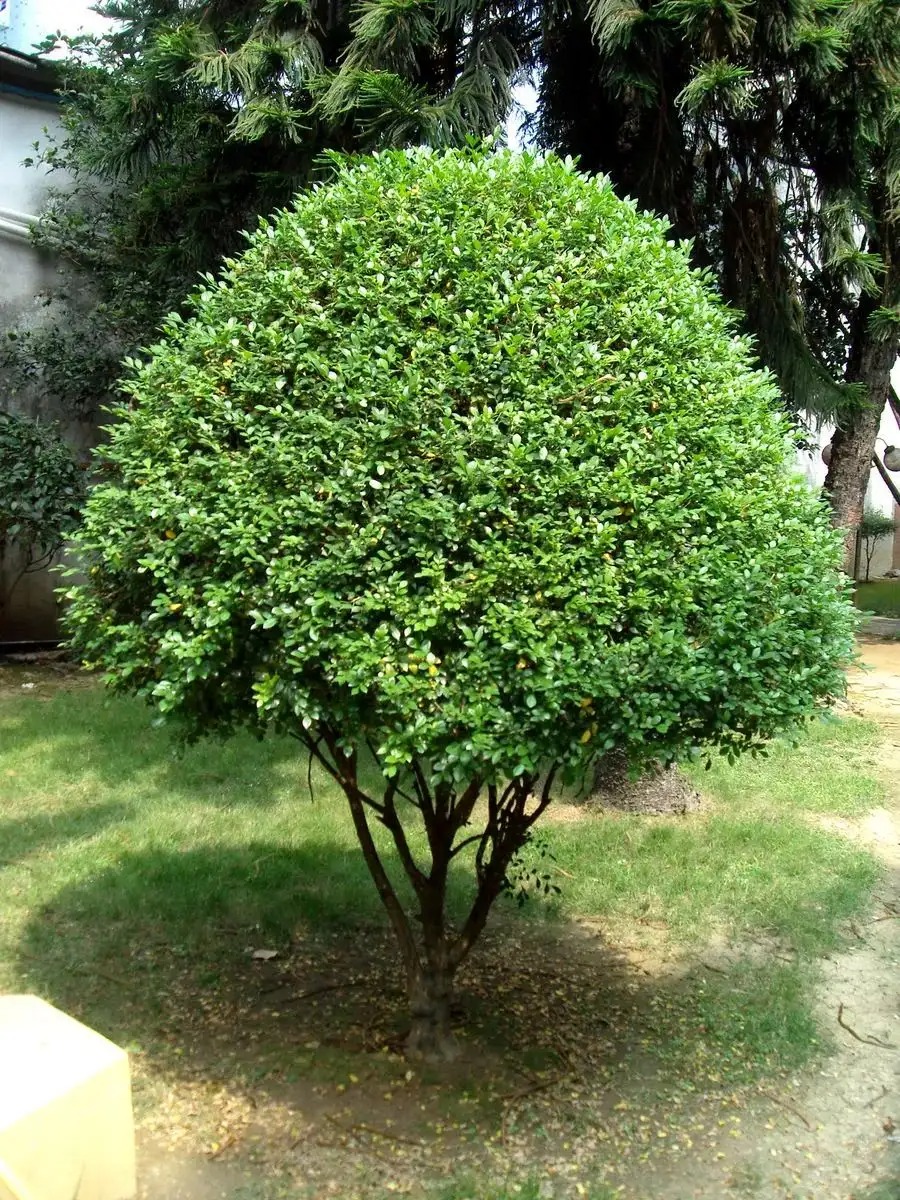
19-Flower name: Yellow Sophora japonica
Flowering period: May-June
Introduction: The yellow locust tree has a beautiful shape and is covered with yellow flowers when in bloom, making it an excellent street tree and solitary tree species. Its main function is that the tree has a round crown, lush branches and leaves, a long flowering period, and brilliant golden flowers, which are rich in tropical scenery. It has now become one of the common street trees and landscape trees in South China. It is more suitable for matching with red flowers and green leaves, and is an important decorative flower in the garden. However, after being damaged by wind, the trunk may be crooked or broken, affecting the landscape effect, so it needs to be planted in a sheltered place. The flowers are beautiful and colorful and can bloom almost all year round, making it an excellent woody flower. It is suitable for planting in gardens and green spaces or as a street tree. It is often used as a hedge and ornamental plant for greening roadsides, poolsides or in front of courtyards.
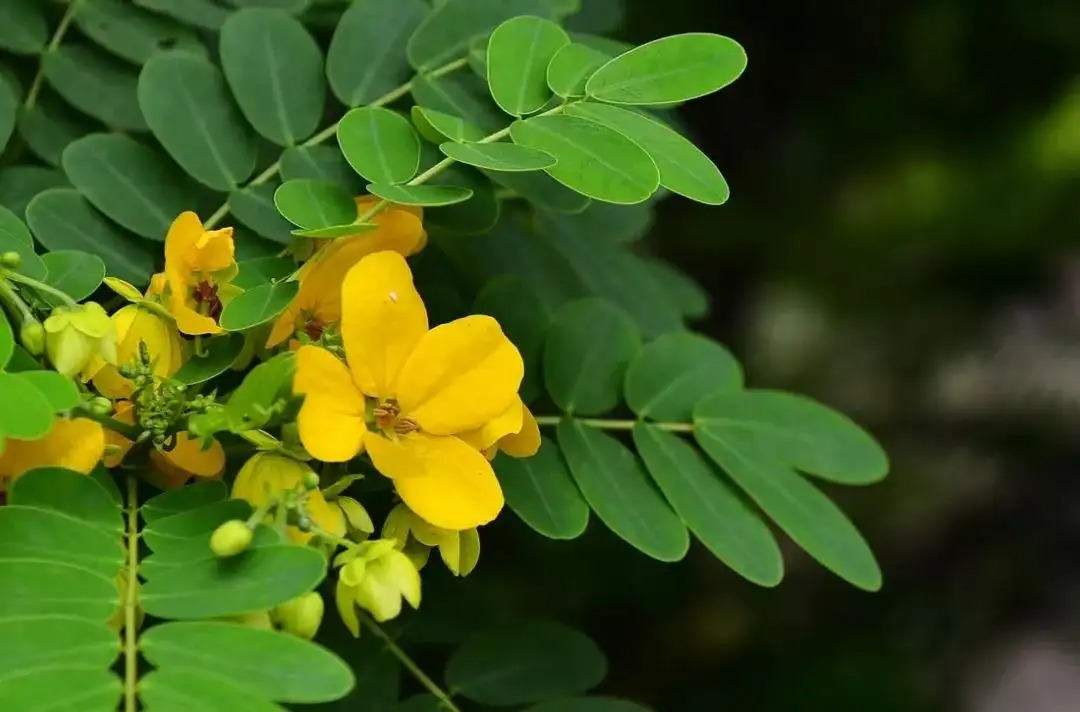
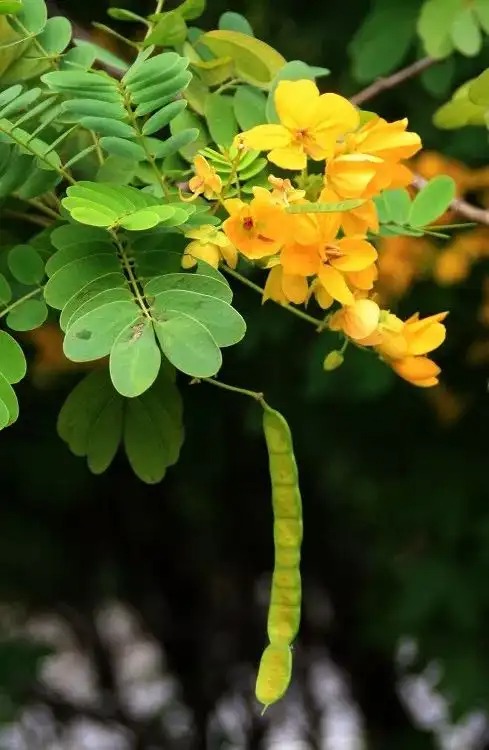
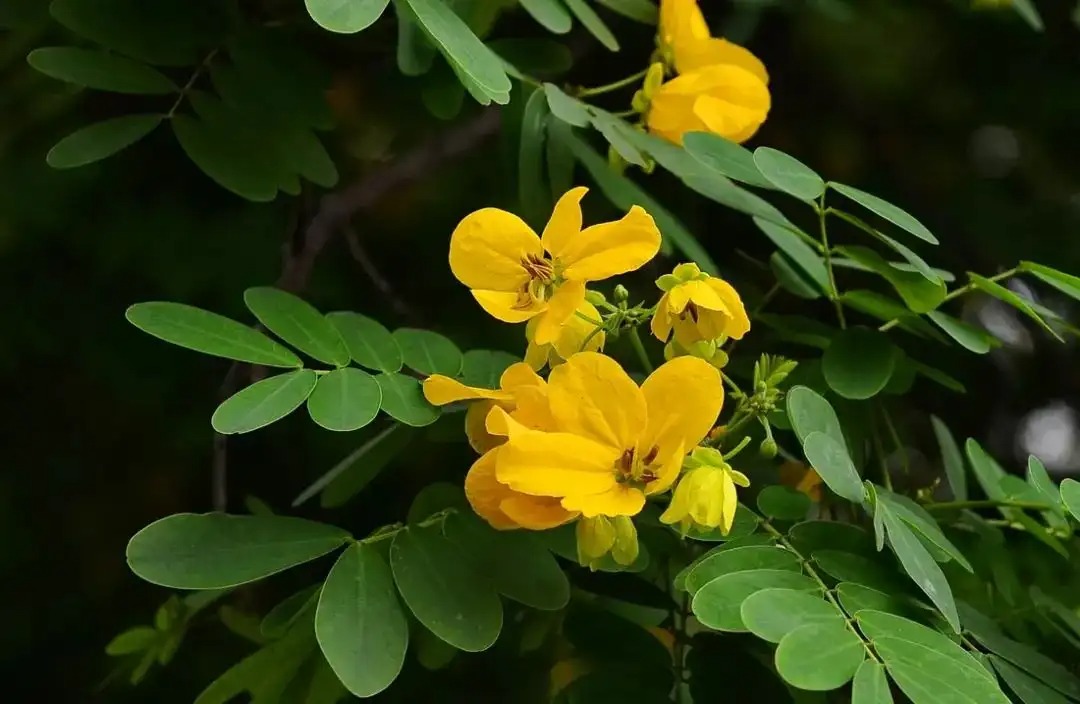
20-Flower name: Cactus flower
Introduction: The cactus is a plant and the national flower of Mexico. It belongs to the family of desert plants in the order Caryophyllales. As an adaptation to the water-scarce desert climate, its leaves have evolved into short, small spines to reduce water evaporation and serve as a deterrent to predators. Its stems have become thick and water-rich. Furthermore, it develops extensive roots to absorb the most water during heavy rainfall. There are currently nearly 2,000 species of cacti.
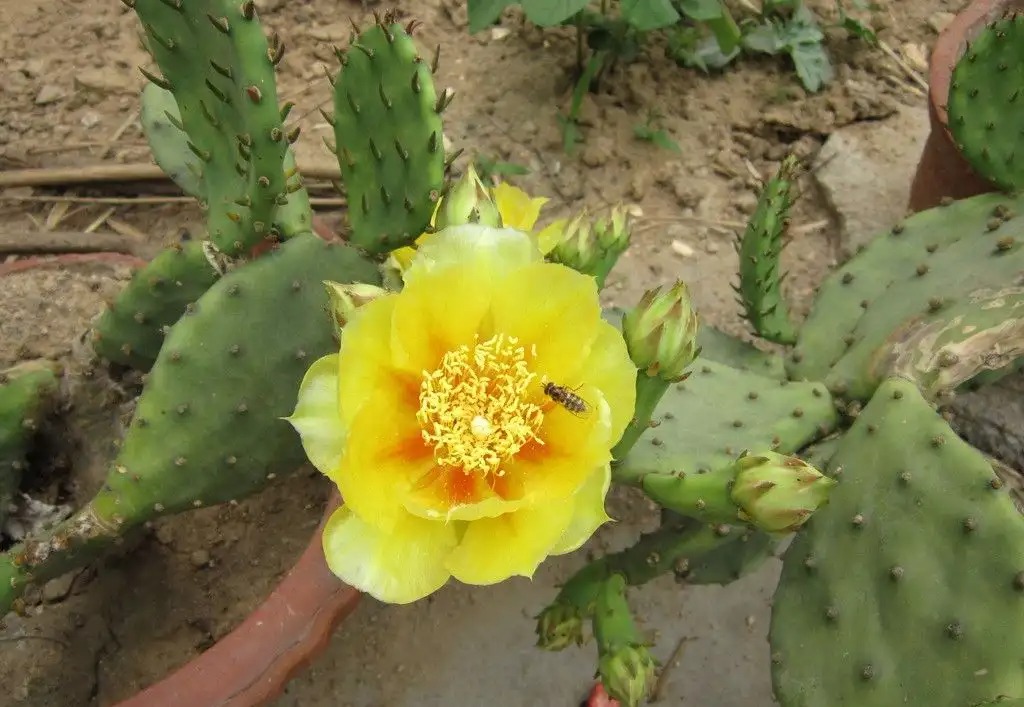
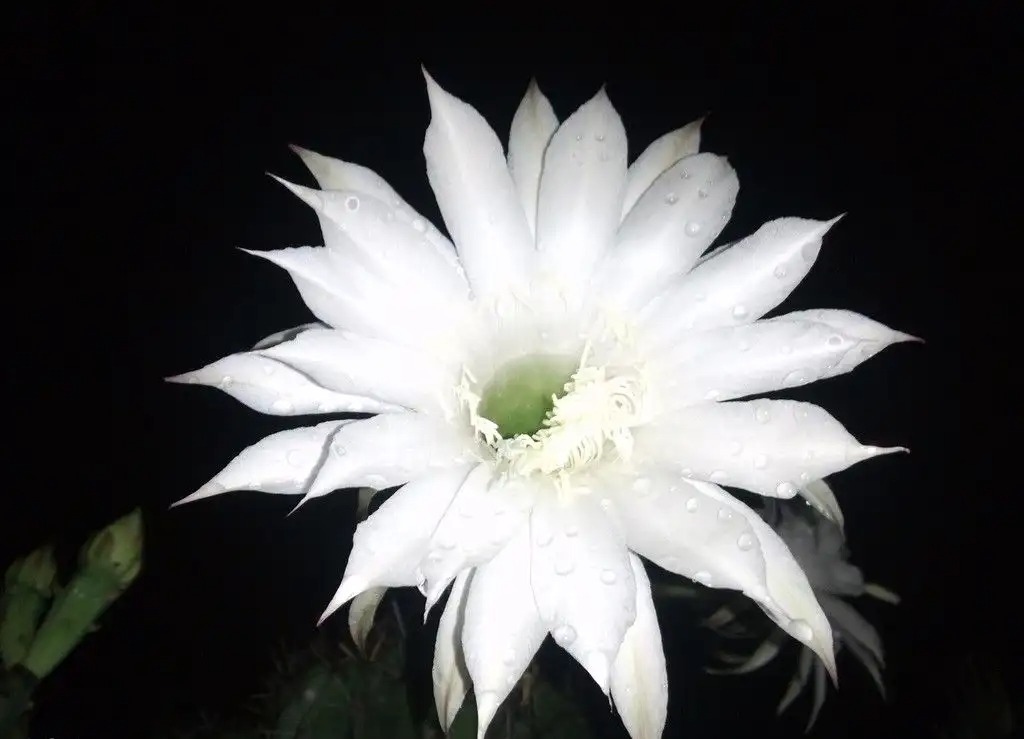
21-Flower name: Firecracker flower
Introduction: This perennial evergreen herb, about 1 meter tall, has slender green stems with longitudinal ridges and numerous branches arranged in whorls at the nodes. The leaflets are opposite or arranged in whorls. With the exception of a few oval leaves, most have degenerated into small scales. The inflorescence is paniculate, with a pale green calyx and a long, cylindrical, red corolla. The apex is vaguely bilobed, with the upper lip lobed twice and the lower lip lobed three times. Peak flowering occurs from May to August. The flowers of this plant primarily bloom on young shoots and are resistant to pruning. Therefore, regular pruning is recommended to encourage more young shoots, maintaining the plant's beauty and ensuring a high level of flowering. Its tubular flowers, resembling ignited firecrackers, bloom on slender, verdant branches, creating a festive and lively atmosphere. It can be grown in pots or hanging pots, making it a great decorative ornament for balconies, patios, or porches.
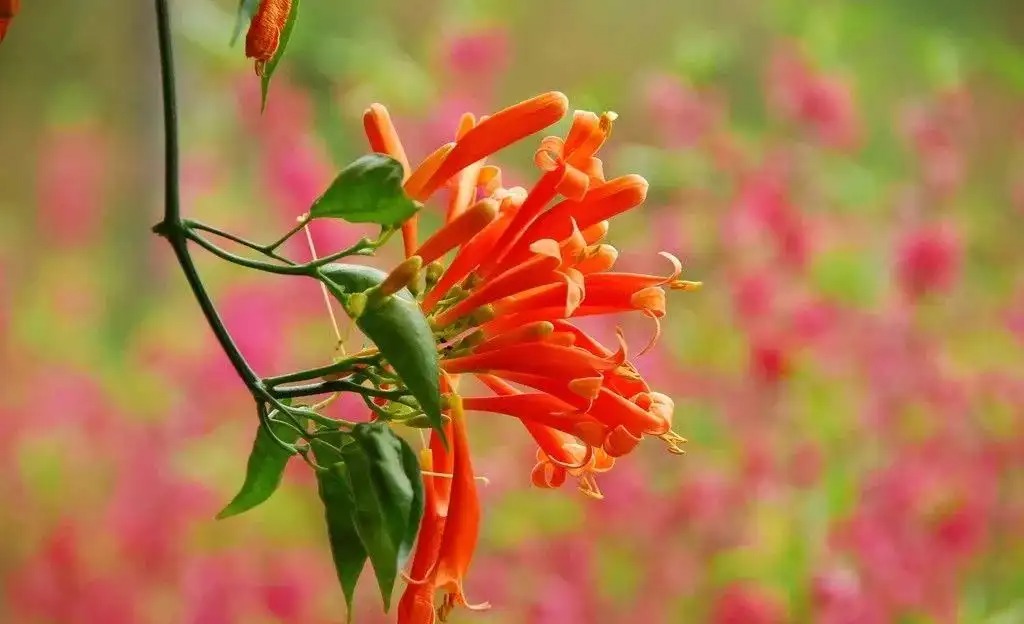
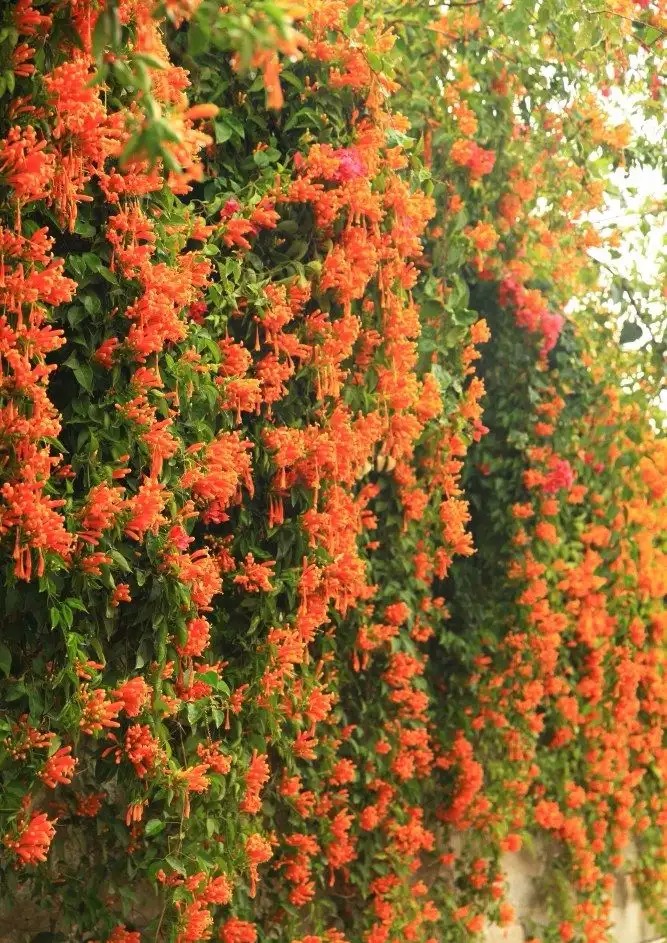
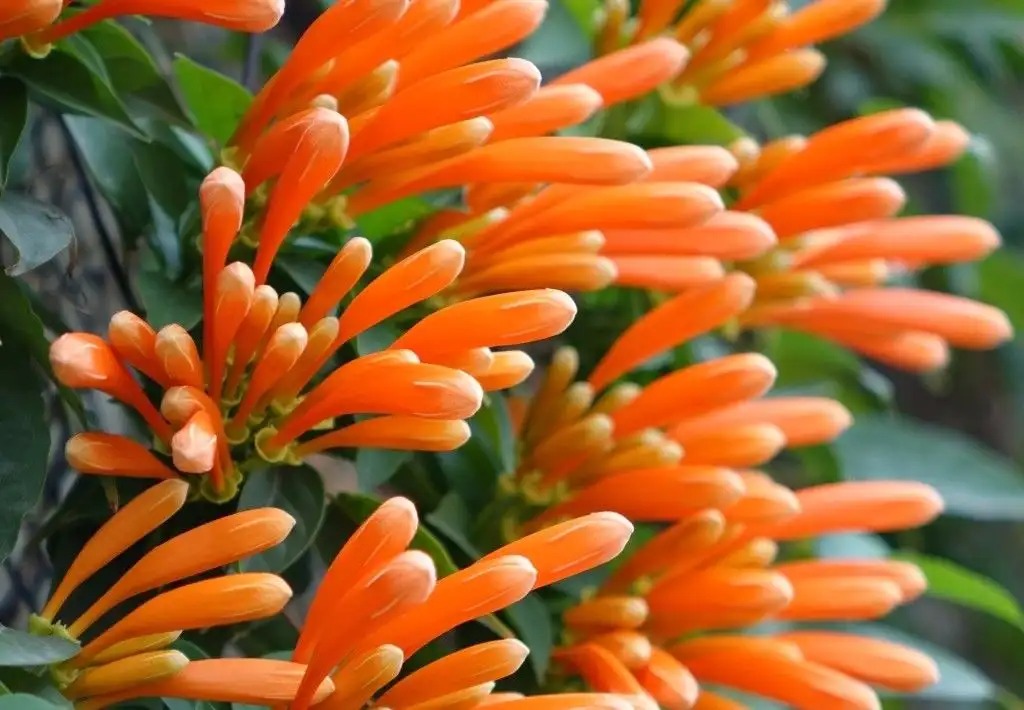

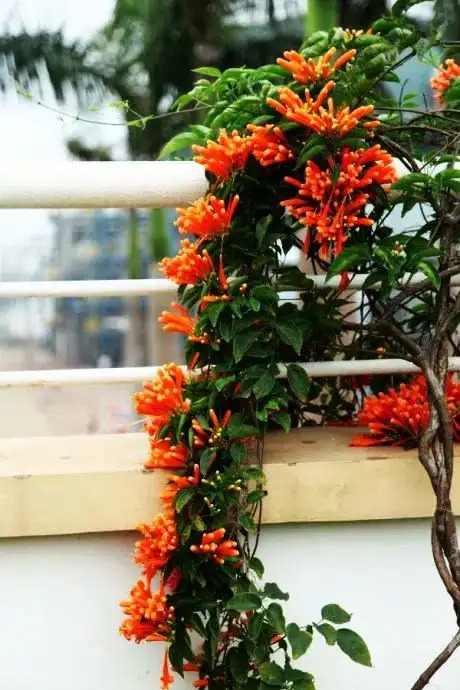
22-Flower name: Golden Bud Flower
Introduction: Also known as yellow shrimp flower, coral acanthus, gold-wrapped silver, and golden-bracted shrimp flower, it is an evergreen subshrub of the Acanthaceae family, 30-50 cm tall, with swollen internodes and opposite, oblong leaves with distinct veins. It is named for its yellow spike-like inflorescence at the top of the stem, with its overlapping bracts and small white flowers, resembling a shrimp. The golden petals are actually protective bracts, while the white, bilabial petals above them are the true petals. It blooms in spring and autumn, with its unusual flower shape. Since its introduction in the 1980s, it has quickly gained popularity among flower growers due to its long flowering period and high ornamental value. The golden-bracted flower grows in neat clusters, with bright yellow flowers and a long blooming period. It is suitable for decoration in venues, halls, homes, and balconies. It is also used in flower beds in the south.
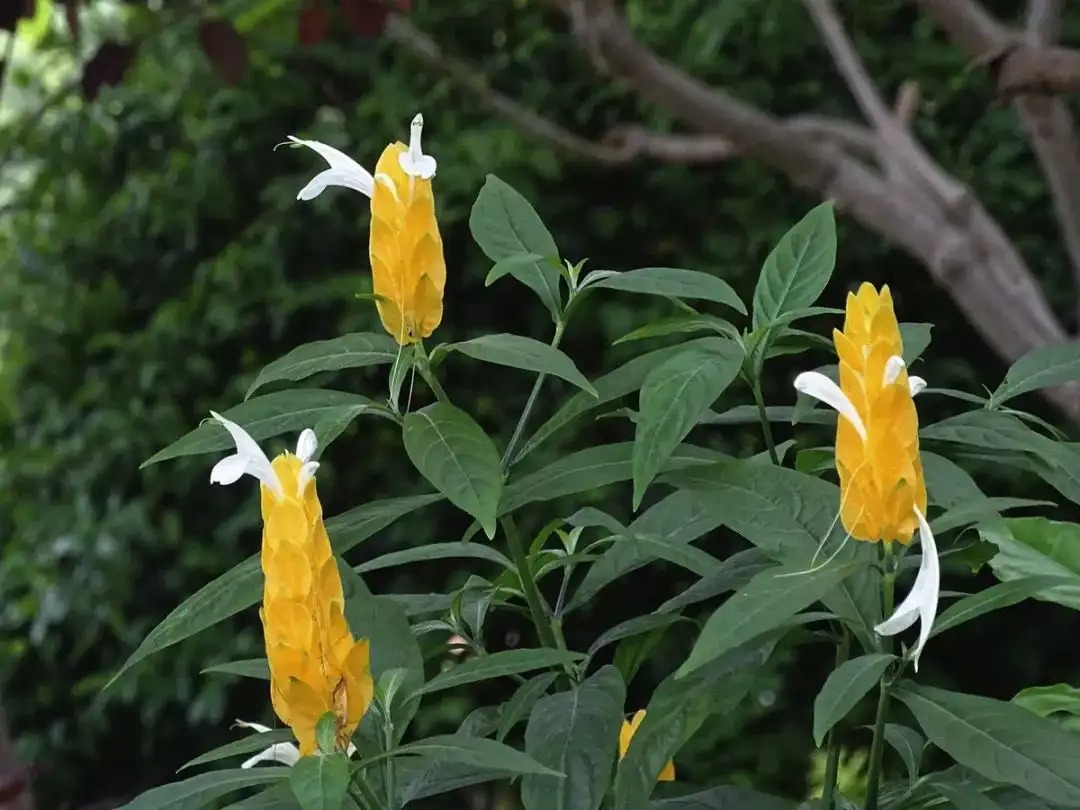
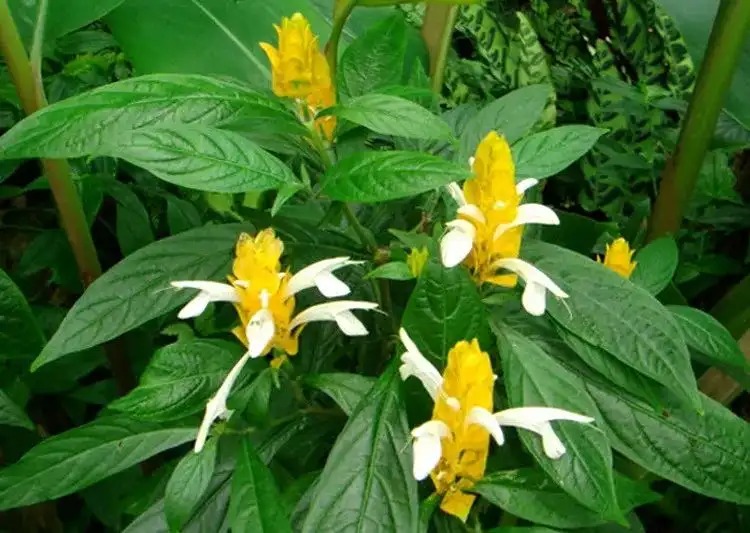
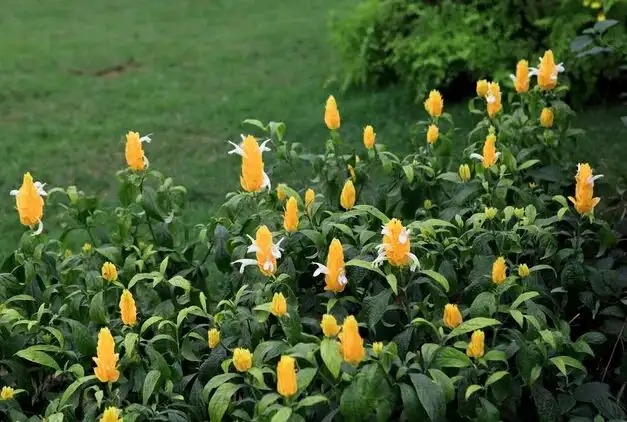
23-Flower name: Oleander
Introduction: Oleander, native to India, Iran, and Afghanistan, has a long history of cultivation and is widespread across cities and towns, both north and south. It prefers ample sunlight and warm, humid climates. It comes in red and white varieties. It is cultivated in various provinces and regions, particularly in southern China, often in parks, scenic areas, along roadsides, and near rivers and lakes. Those grown north of the Yangtze River must overwinter in greenhouses. It grows wild in Iran, India, and Nepal and is now widely cultivated in tropical regions around the world. Its large, showy flowers, with a long blooming period, are often used for ornamental purposes. Propagation by cuttings or layering is highly successful. The bark fiber is an excellent raw material for textile blends. The seeds, with an oil content of approximately 58.5%, can be pressed for lubricant production. The leaves, bark, roots, flowers, and seeds all contain various glycosides, which are highly toxic and can be fatal if ingested by humans or animals. Cardiac stimulants can be extracted from the leaves and bark, but these are toxic and should be used with caution.
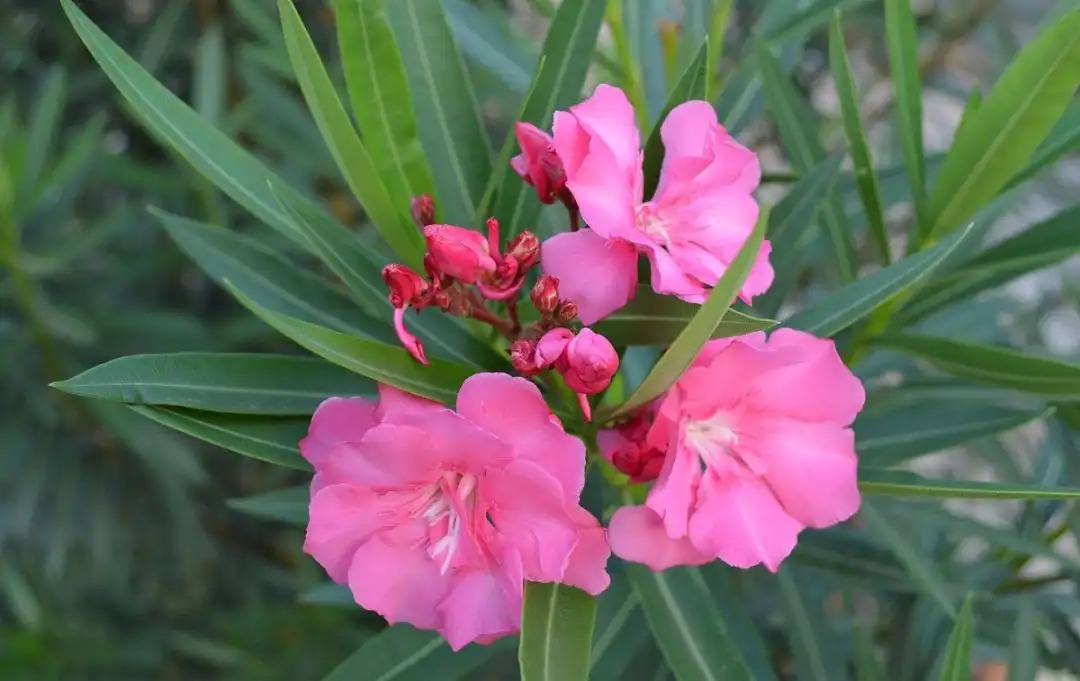
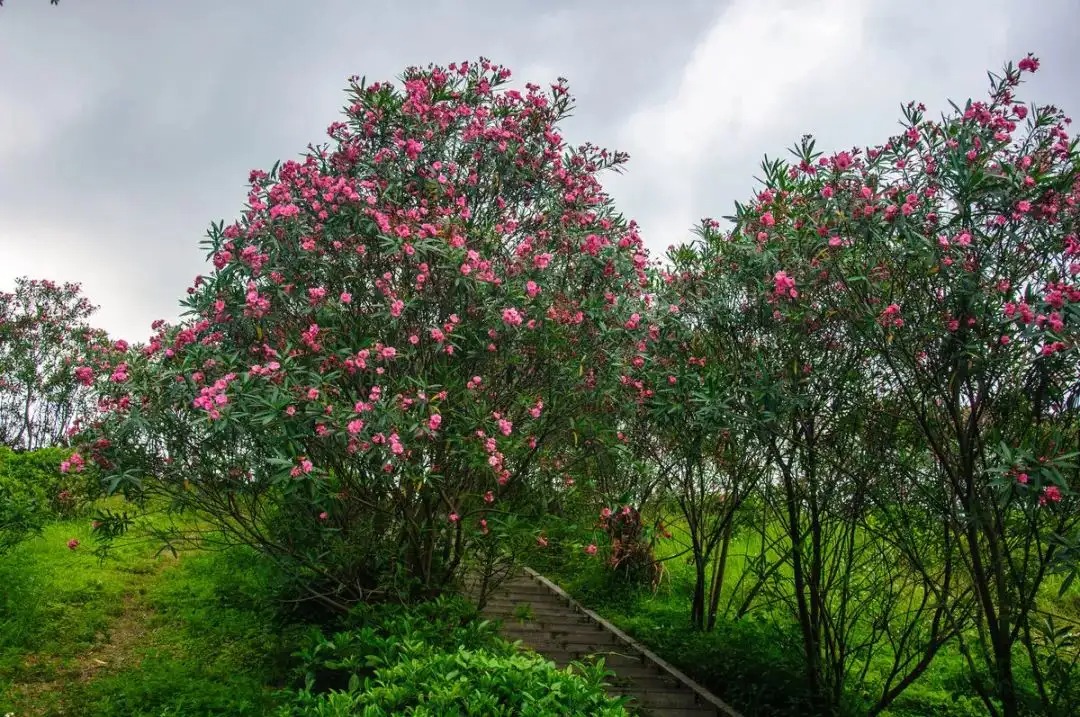
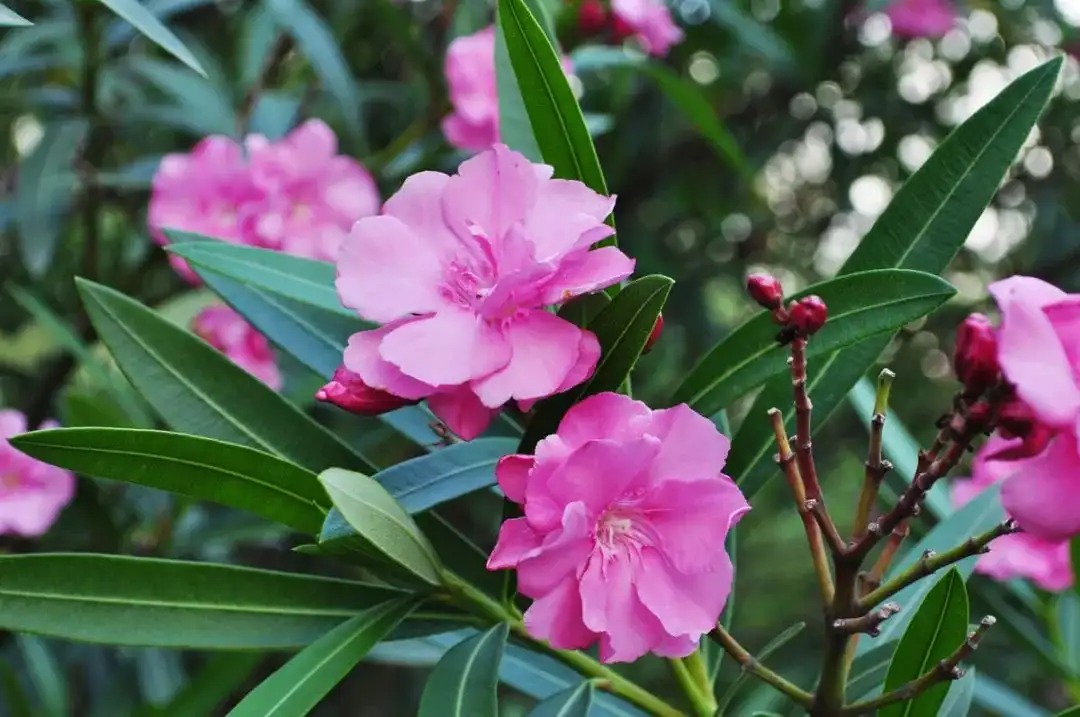

24-Kotoha Coral
Also known as coral flower, harp-leaf cherry, South Sea cherry, and daily cherry, this Euphorbiaceae plant is an evergreen shrub with red flowers and a poisonous latex. Native to the West Indies, it is widely cultivated in southern China. The latex is toxic and should not be ingested. Accidental contact with the latex can cause blisters or pustules, severe skin inflammation, and is extremely toxic to the eyes. Ingestion of fallen leaves by livestock often results in severe mouth blistering.
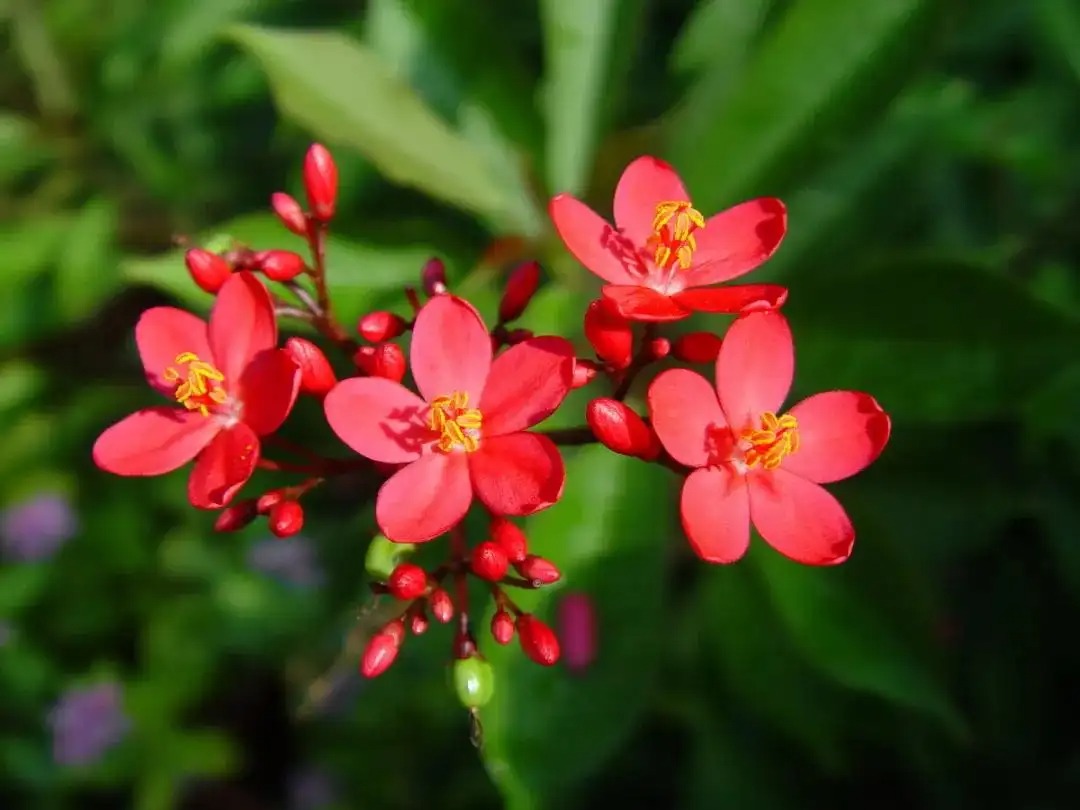
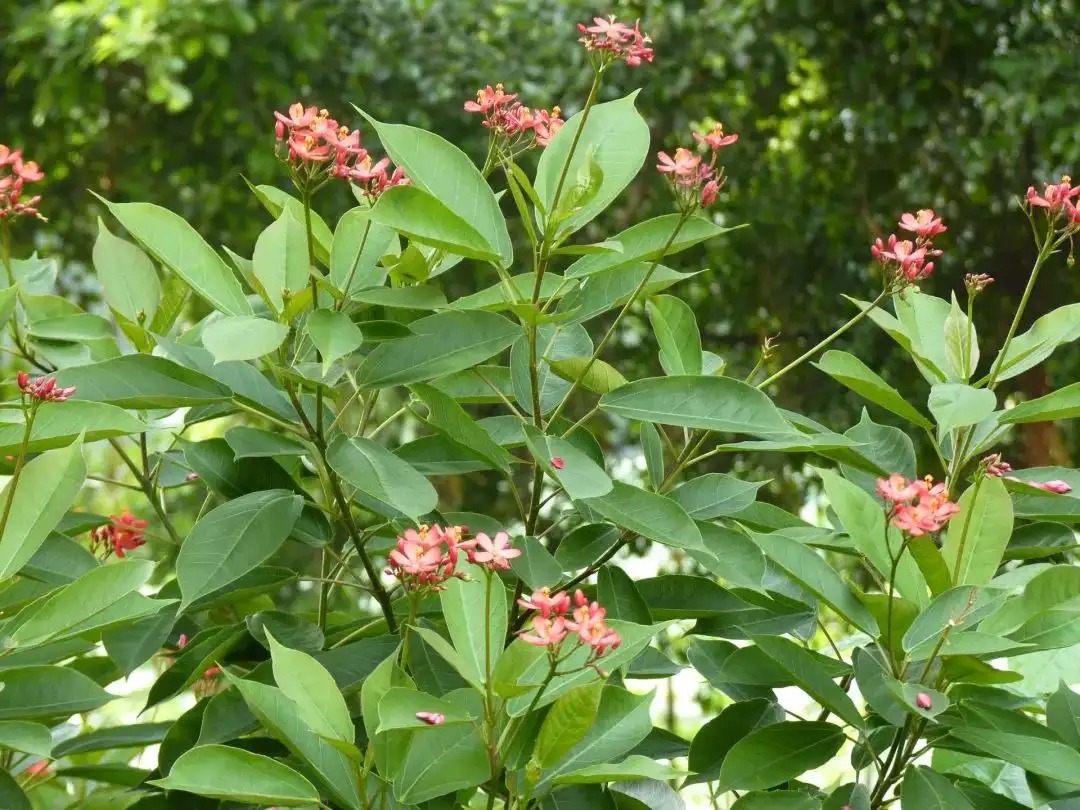
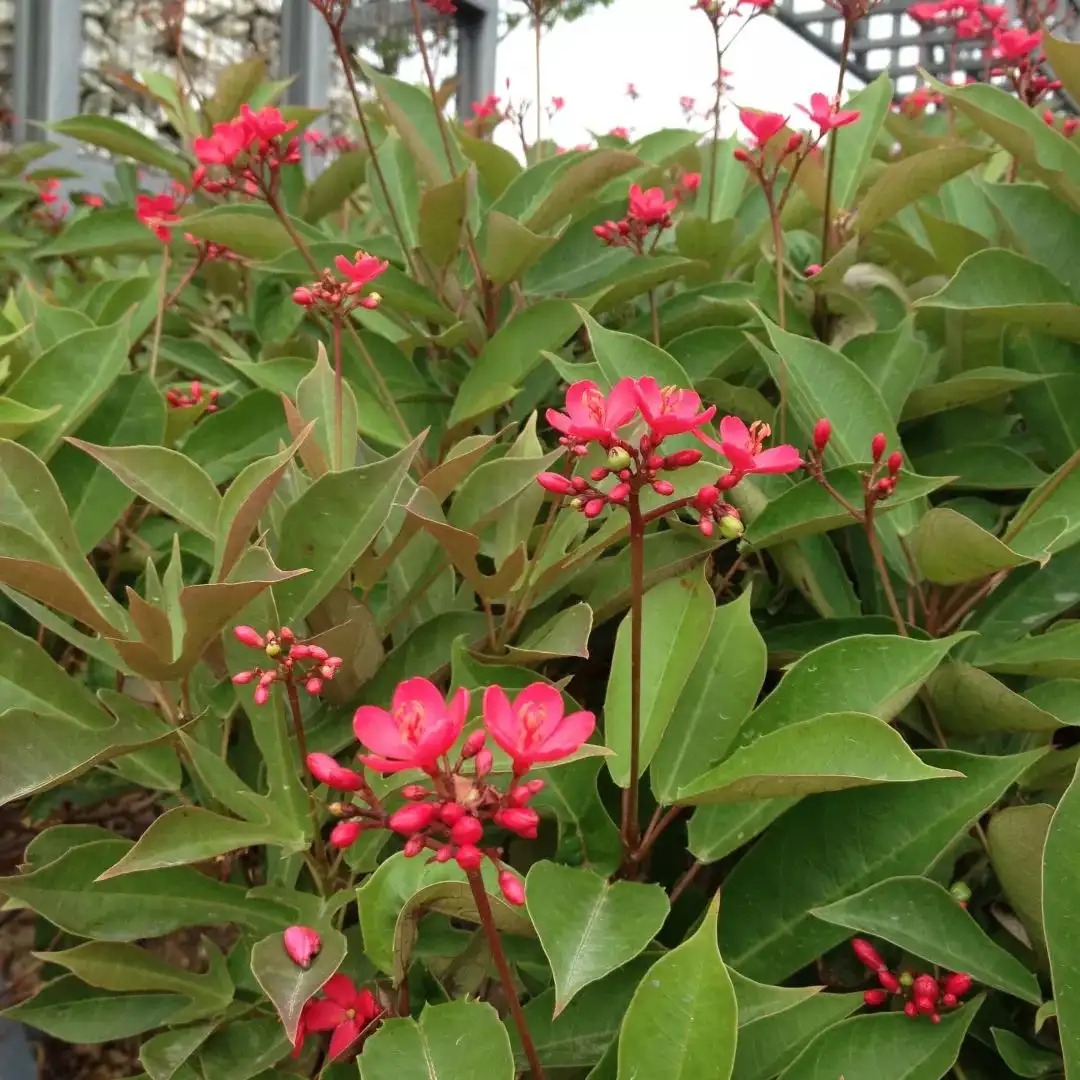
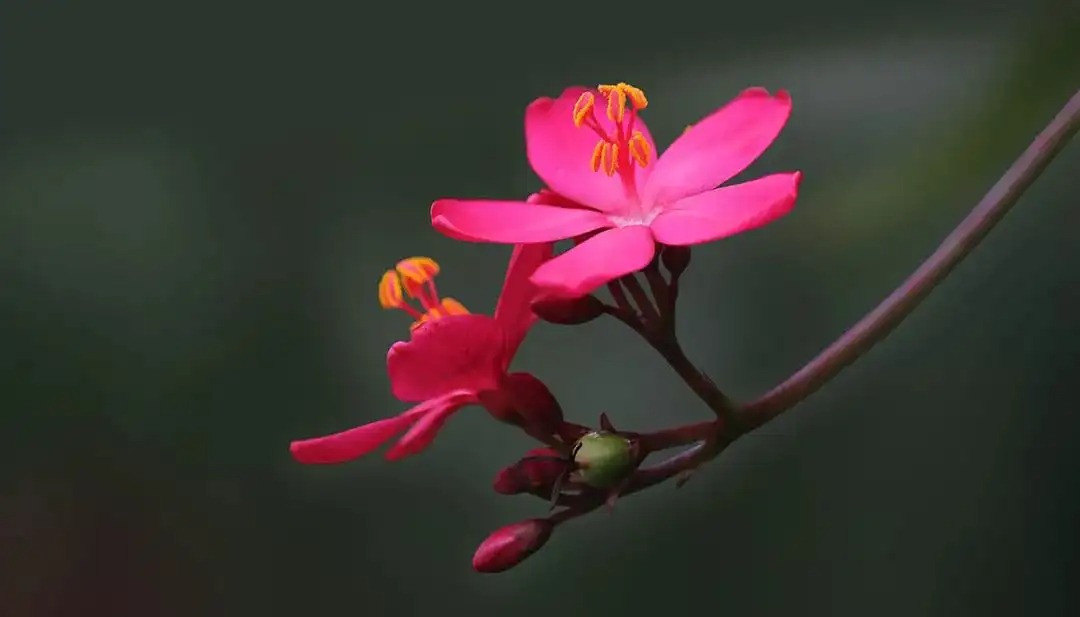
25-Flower name: Hibiscus
Flowering period: all year round
Introduction: Also known as hibiscus, big red flower, and hibiscus peony, this is a large evergreen shrub in the Malvaceae family. It has an upright, heavily branched stem and a broadly square crown, reaching up to 6 meters in height. Its leaves are alternate, broadly ovate to narrowly ovate, 7-10 cm long, with three main veins, pointed or acuminate at the apex, and coarsely serrated or notched at the margin. The base is nearly entire, either bald or with a few sparse hairs on the dorsal veins, resembling a mulberry leaf. The flowers are large, with either pendulous or upright petioles, solitary in the upper leaf axils. They can be single or double. Single petals are funnel-shaped and typically rose-red, while double petals are non-funnel-shaped and can appear in colors such as red, yellow, pink, or white. They bloom year-round, peaking in summer and autumn.
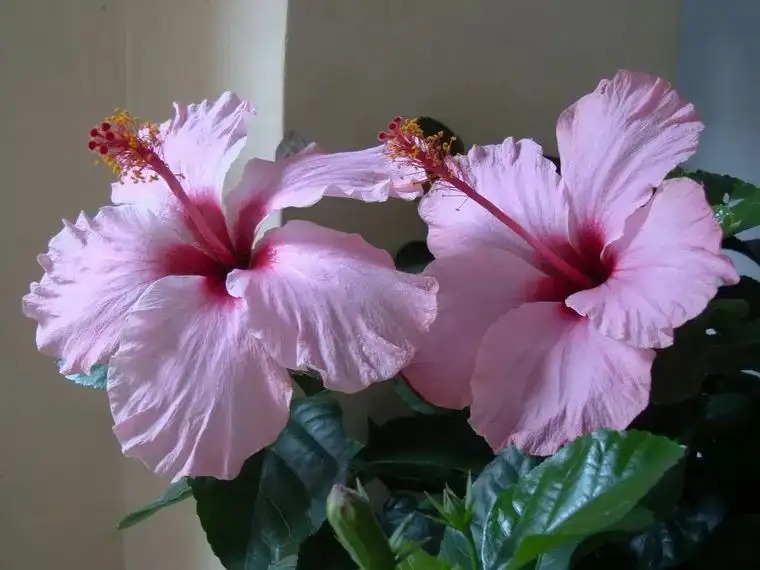
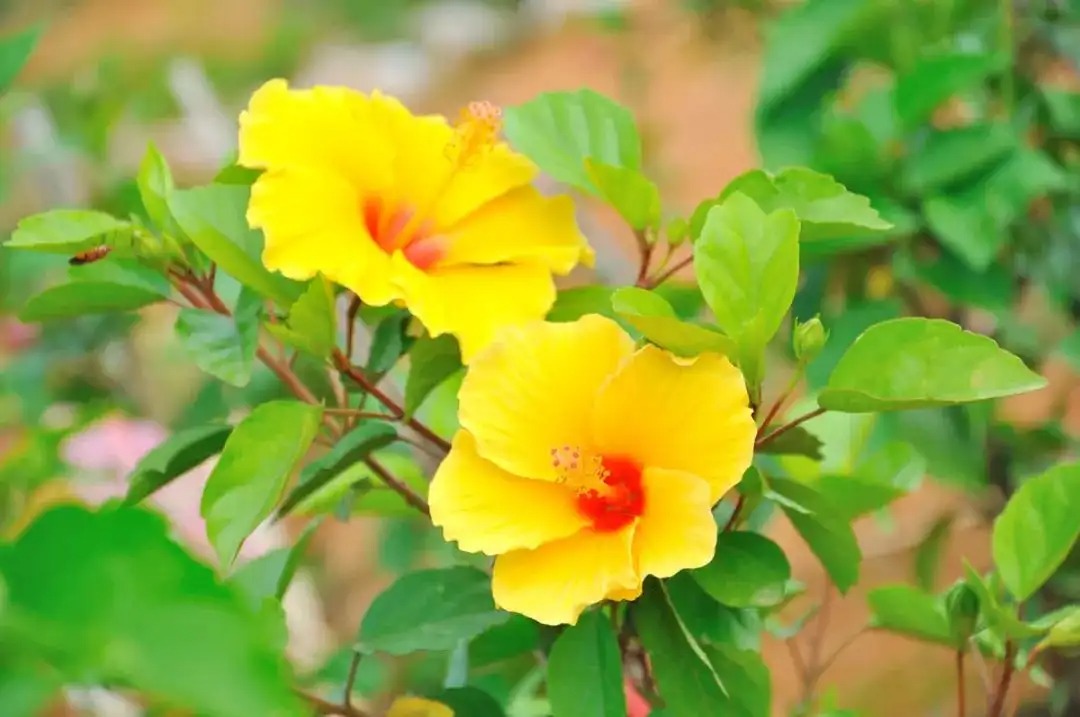
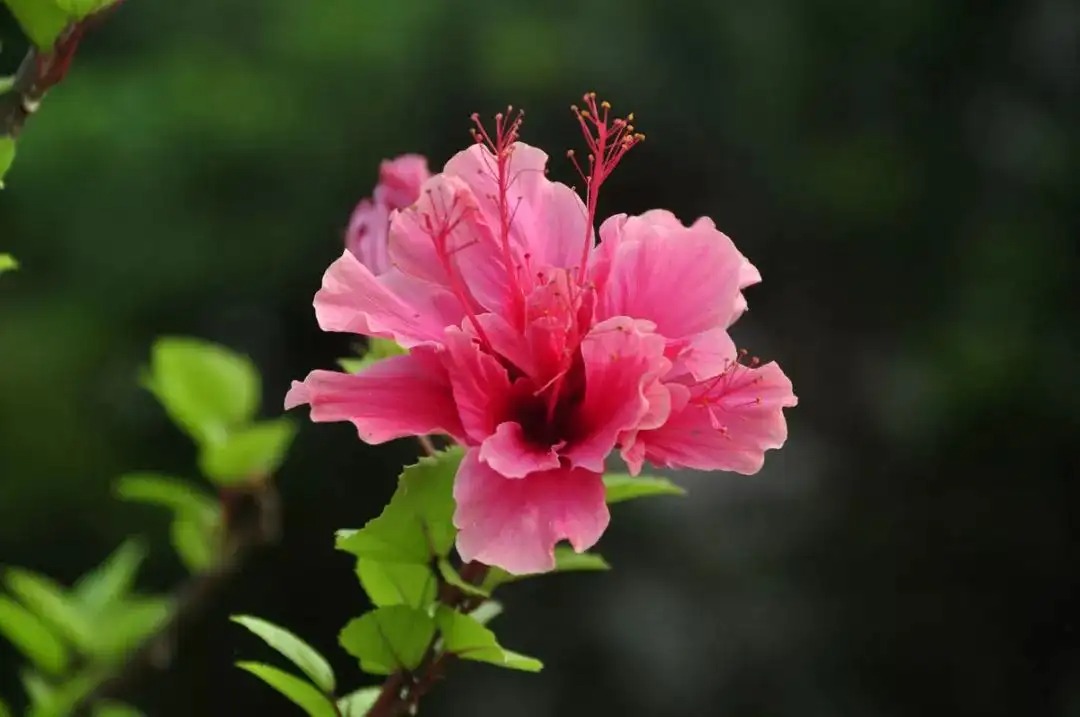
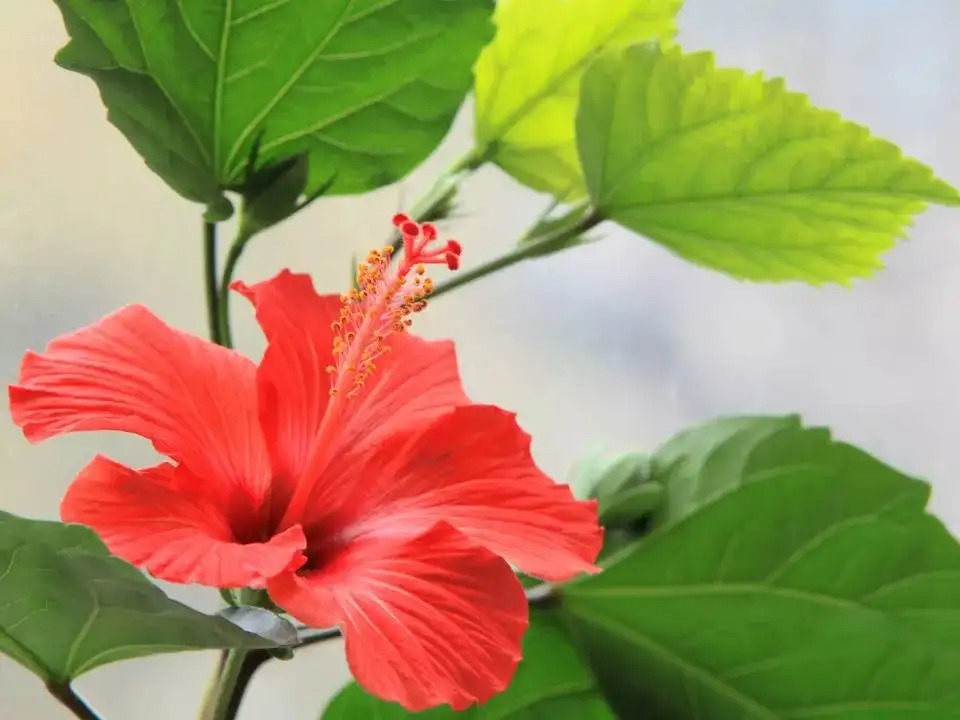
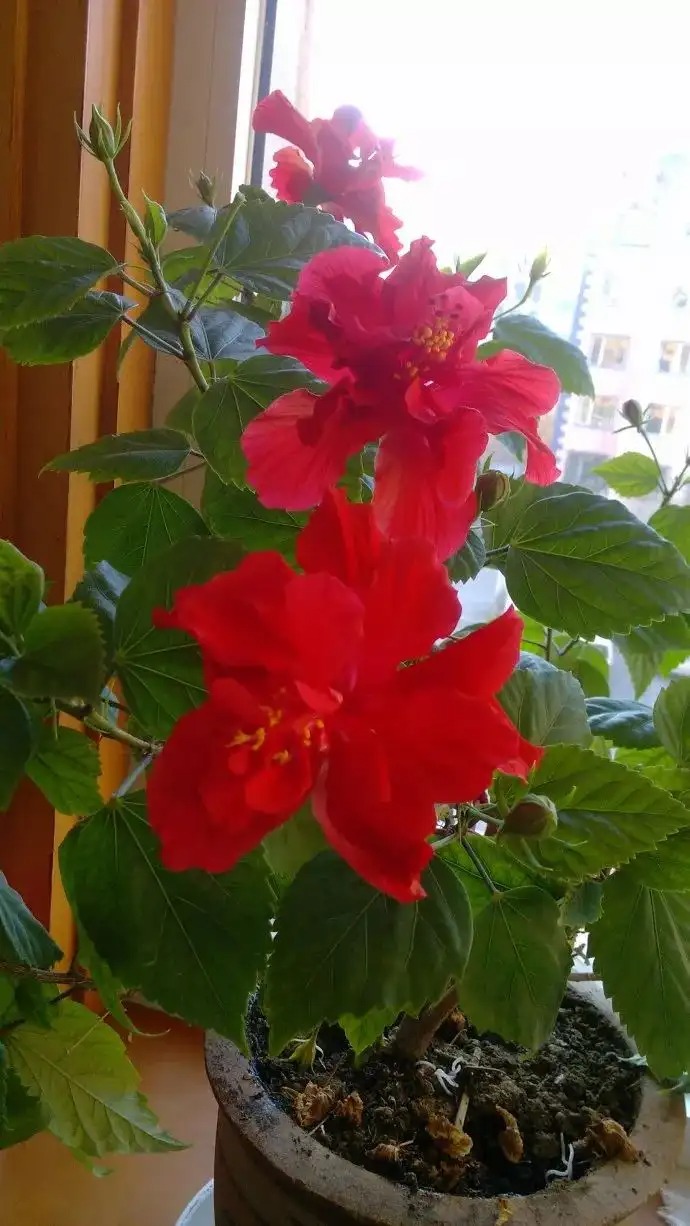
26-Pengxun
It is a plant of the genus Wedelia of the Asteraceae family, also known as yellow flowered Wedelia, yellow flowered Mocai, yellow flowered Agave, Tianhuangju, and Halogen Chrysanthemum. The whole plant is used as medicine for clearing away heat, detoxifying, removing blood stasis and reducing swelling.

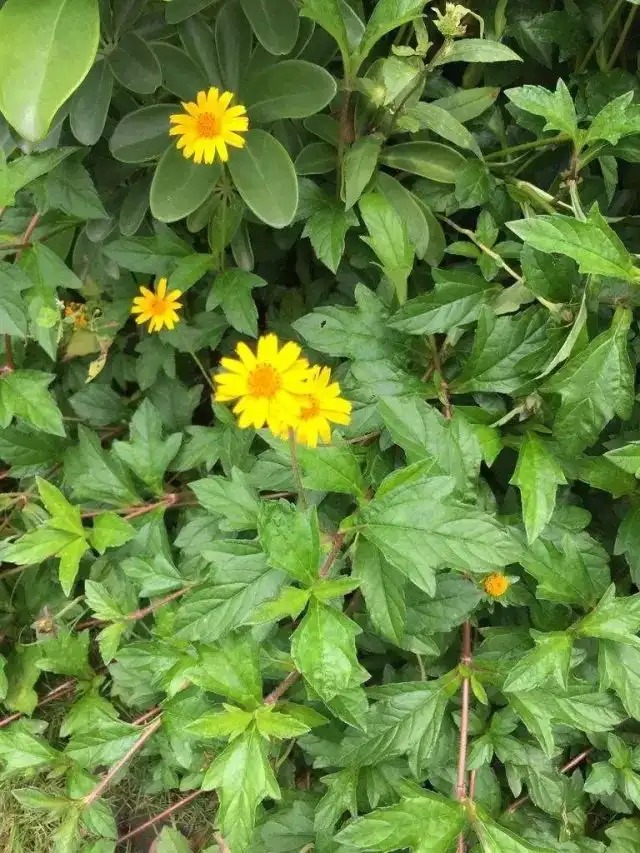
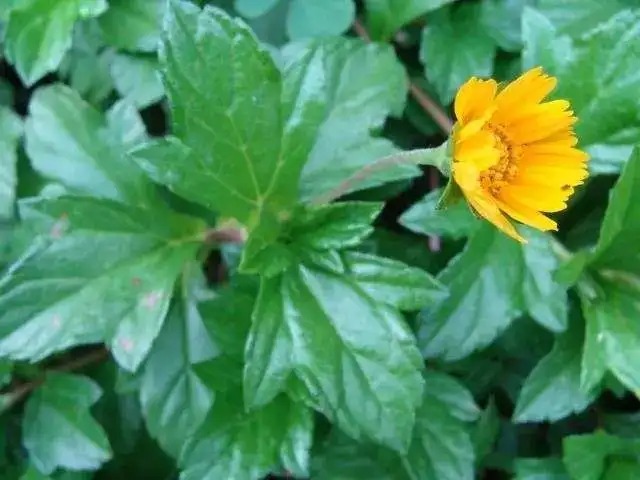
27-Flower name: Yellow Horn Orchid
Flowering period: June-October
Introduction: Some call it the Yellow Jasmine Orchid, also known as the White Jasmine Orchid. It belongs to the Magnoliaceae family, the genus Michelia. It is an evergreen tree, some say deciduous. Potted plants are typically 3-4 meters tall, though smaller plants are also available. The bark is grayish-white, and the leaves are alternate, single, green, leathery, and glossy. The flowers are white or slightly yellowish, with thick, long-lanceolate petals and a strong fragrance. The flowering period is long, lasting from June to October. In winter, if the temperature is suitable, the flowers will continue to bloom, but the fragrance is not as strong as in summer.


28-Flower name: Michelia
Introduction: Michelia saccharina is an evergreen shrub or small tree. Its numerous, densely branched, rounded crown is covered with dense brown hairs on the bark and leaves. Its leaves are simple, alternate, oval, shiny green, thickly leathery, and have entire margins. The flowers are solitary and borne in the leaf axils. They are small, round, and have six fleshy, pale yellow petals, often with a purple tinge at the edges. The fragrance is captivating and intoxicating, reminiscent of banana. The flowers rarely bloom in full, resembling the beauty of Michelia saccharina, and the flowering period lasts for three to four months. The fruit is oval and ripens in September.
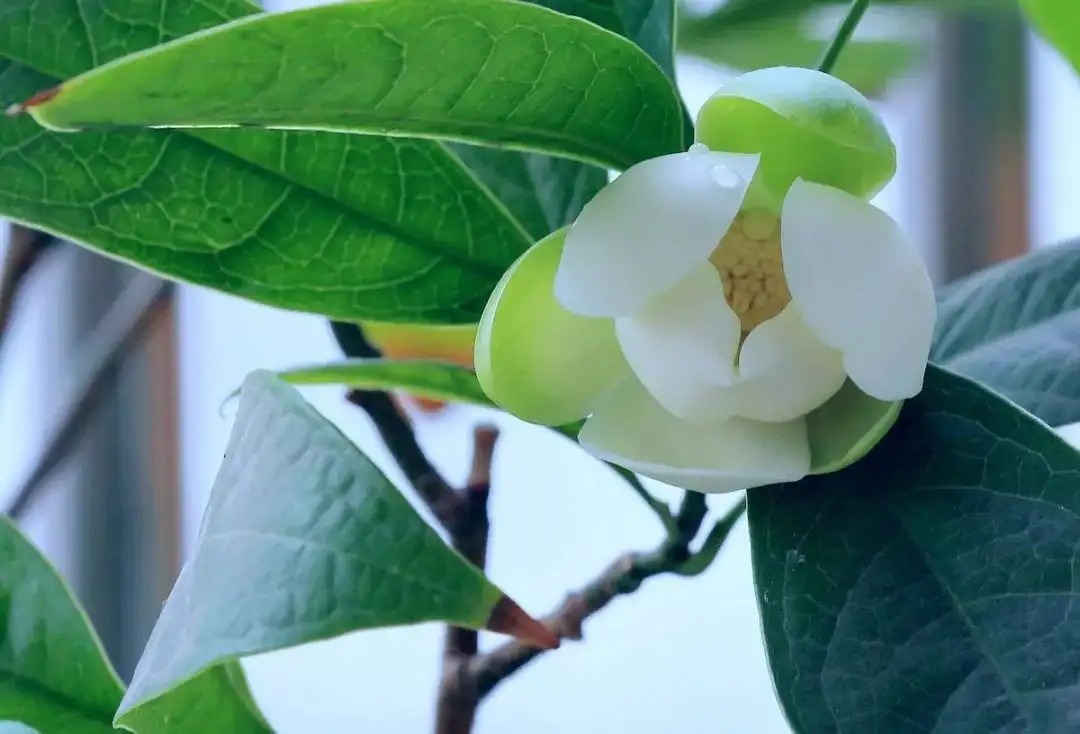
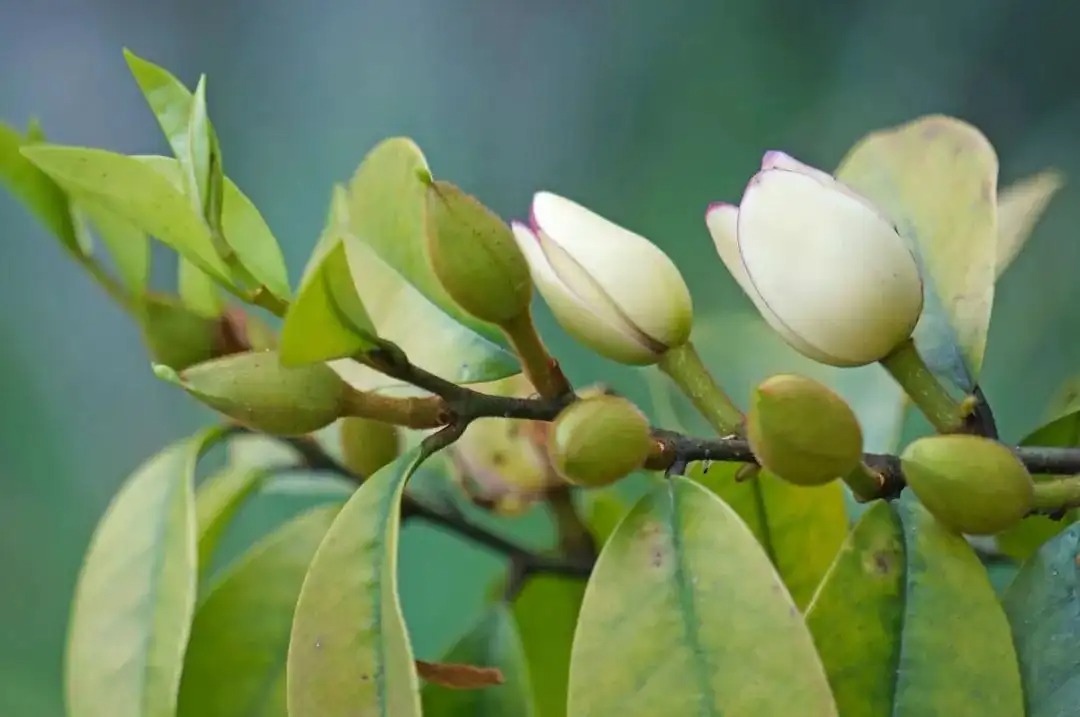
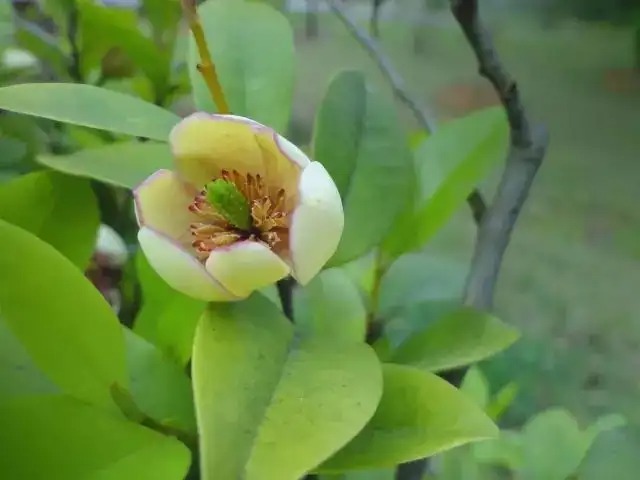

29-Oxalis (red and yellow flowers)
Oxalis serrata (Oxalis serrata), also known as Oxalis serrata, Oxalis serrata, Oxalis serrata, and Copper Hammer Grass, is a perennial herbaceous plant in the Oxalidaceae family. Its stems and leaves contain oxalic acid. Its compound leaves, with three leaflets in an inverted heart shape, open during the day and close at night. It blooms from spring to autumn, with yellow, peach, or purple-red flowers. Its fruit is cylindrical, and when ripe, the peel splits, ejecting the seeds through elastic force. It is native to South Africa and is now widely distributed worldwide. It is not very cold-tolerant, but is heat-tolerant and shade-tolerant.
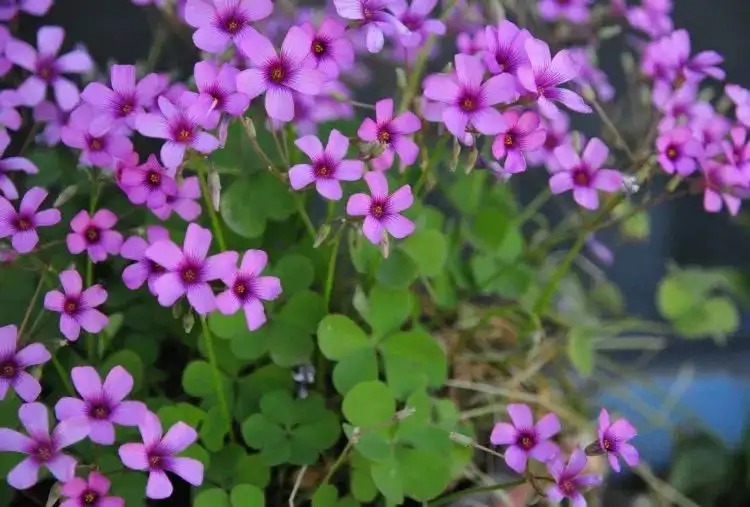
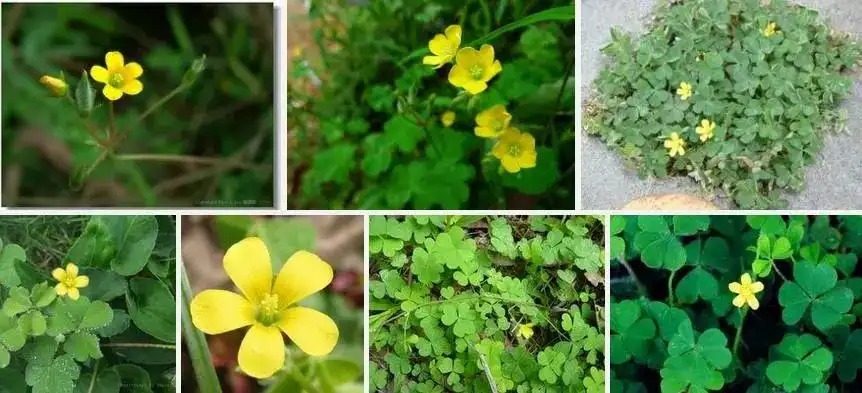
30-Cleome
Cleome is a biennial herbaceous plant in the genus Cleome, in the family Brassicae. Its flower stems are erect, reaching 40-60 cm in height, with some varieties reaching up to 1 meter. Its stems are covered with fine, sticky hairs, emitting a strong, distinctive odor. Its leaves are palmately compound, with 5-7 oblong-lanceolate leaflets. Its inflorescence is terminal, with flowers opening gradually from the base upward. Its petals are lanceolate and curl outward. The buds are red, with rose-red or white petals and long stamens. Its capsule is cylindrical, with light brown seeds. It blooms from June to September, with long, sturdy flower stems. When in full bloom, the raceme forms a plump, delicate ball of flowers, each resembling a fluttering butterfly. It is a truly beautiful sight.
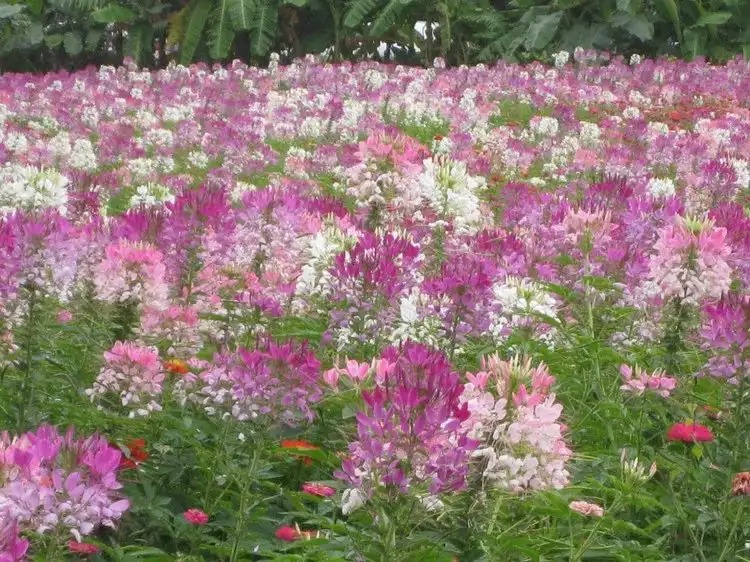

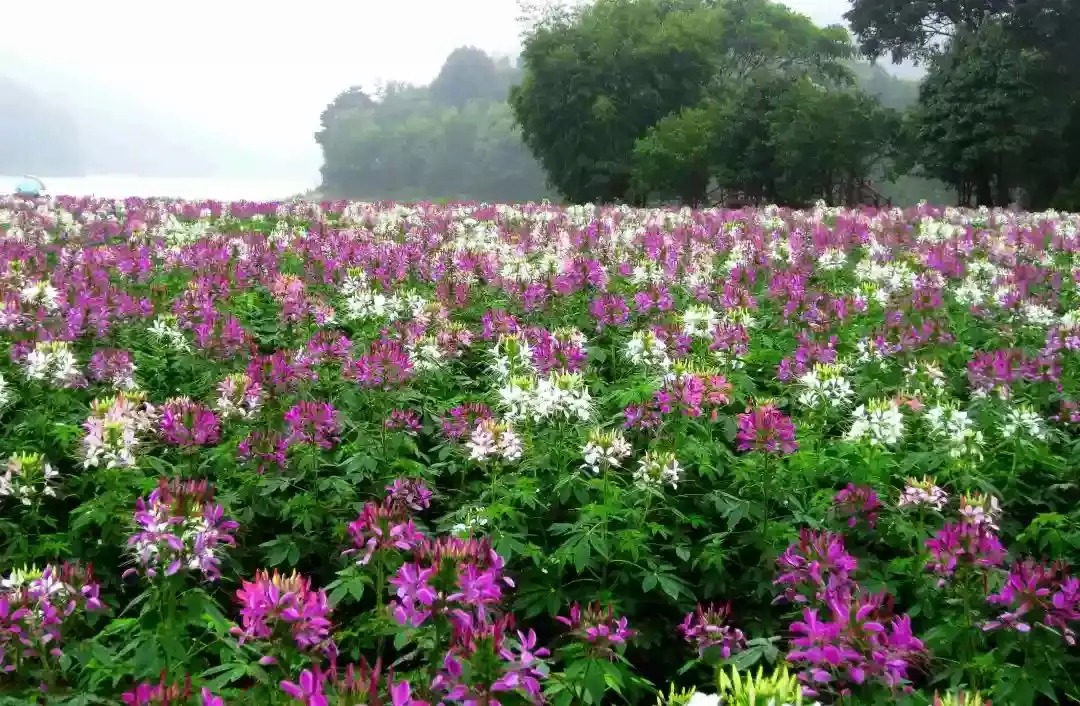

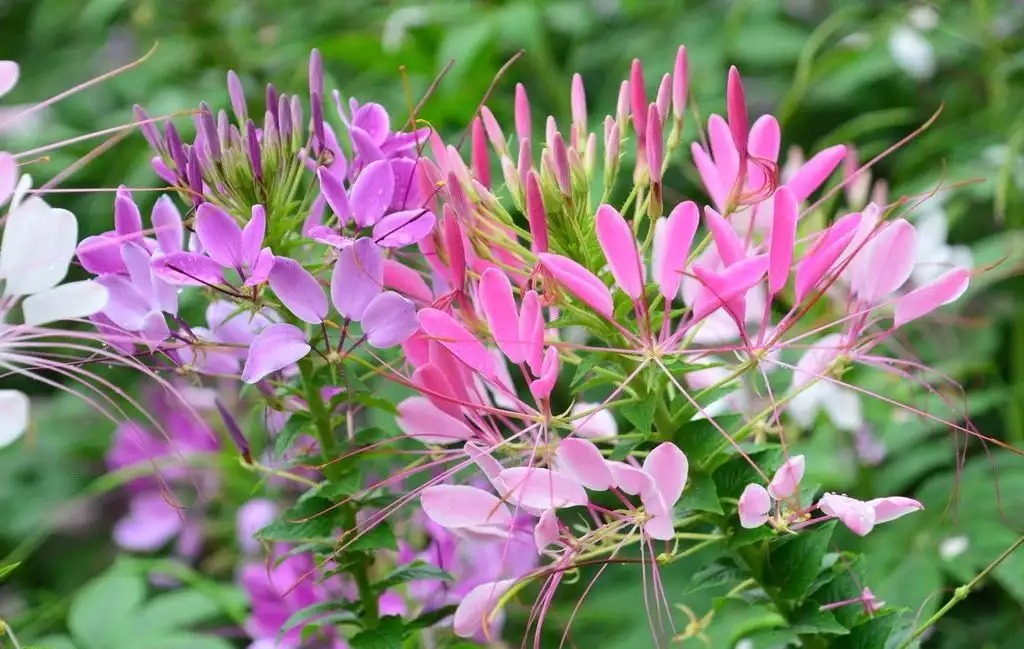
31-Callista
Callistemon, also known as the bottlebrush tree, red bottlebrush, or gold treasure tree, is an evergreen shrub or small tree in the Myrtaceae family. Callistemon is a sun-loving species that prefers warm, humid climates and can withstand intense heat. It is native to Australia. Its lanceolate leaves, similar to those of a Podocarpus, remain evergreen year-round. Its flowers, densely clustered at the tips of its branches and blooming from June to August, are a unique, spike-like shape with vibrant colors. It is a popular choice for flower arrangements and is also a popular choice for garden ornamental plants, streetscapes, and community landscaping. It can also be used as a windbreak, landscaping plant, or as a potted, high-end bonsai after being pruned and shaped. It has been cultivated for over a century and is cultivated in Taiwan, Guangdong, Guangxi, Fujian, and Zhejiang. Its red stems are ideal for garden beautification, making it a premium garden ornamental tree, street tree, garden tree, and landscape tree. It can also be used as a windbreak, cut flower, or large potted plant, and can be pruned and shaped into a distinguished bonsai.

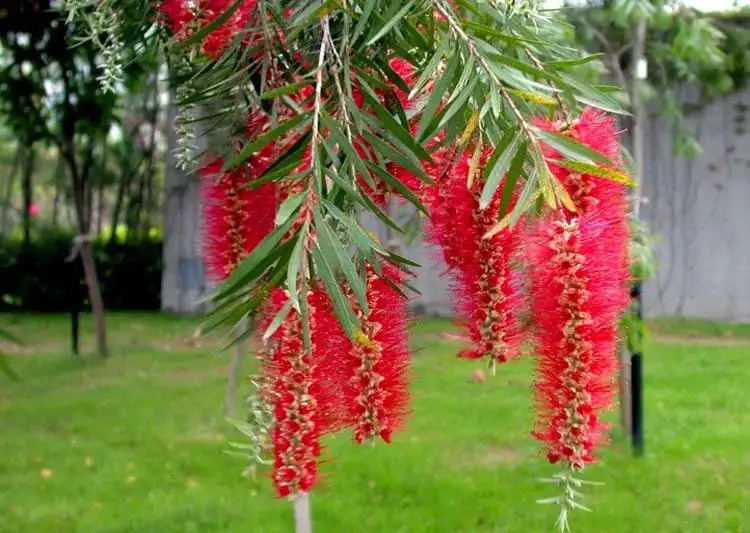
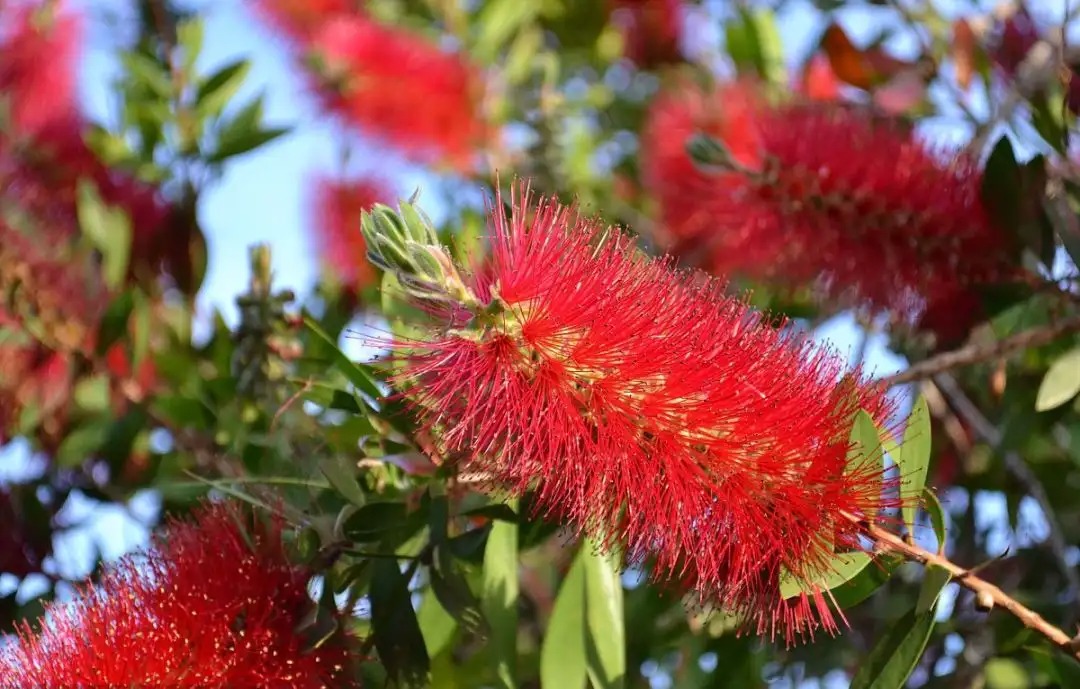
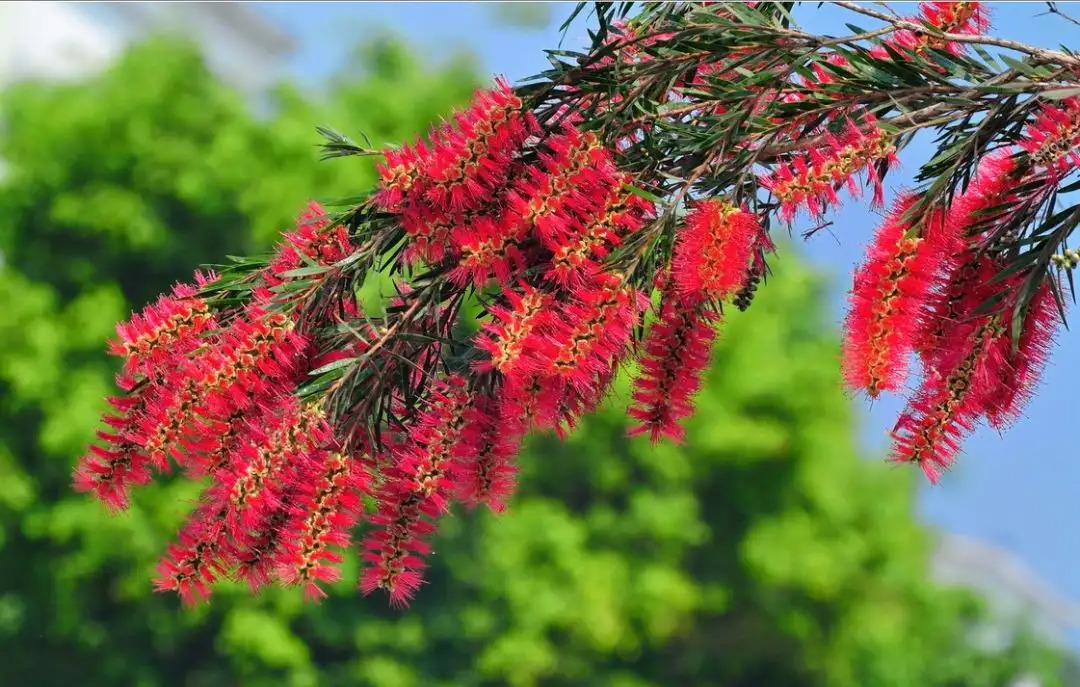
32-Yihua
This small tree or shrub belongs to the genus Ilex in the family Fabaceae. It is native to Gaoyao, Maoming, and Wuhua in Guangdong, as well as Longzhou in Guangxi and Yunnan. Its beautiful flowers make it an excellent garden plant.

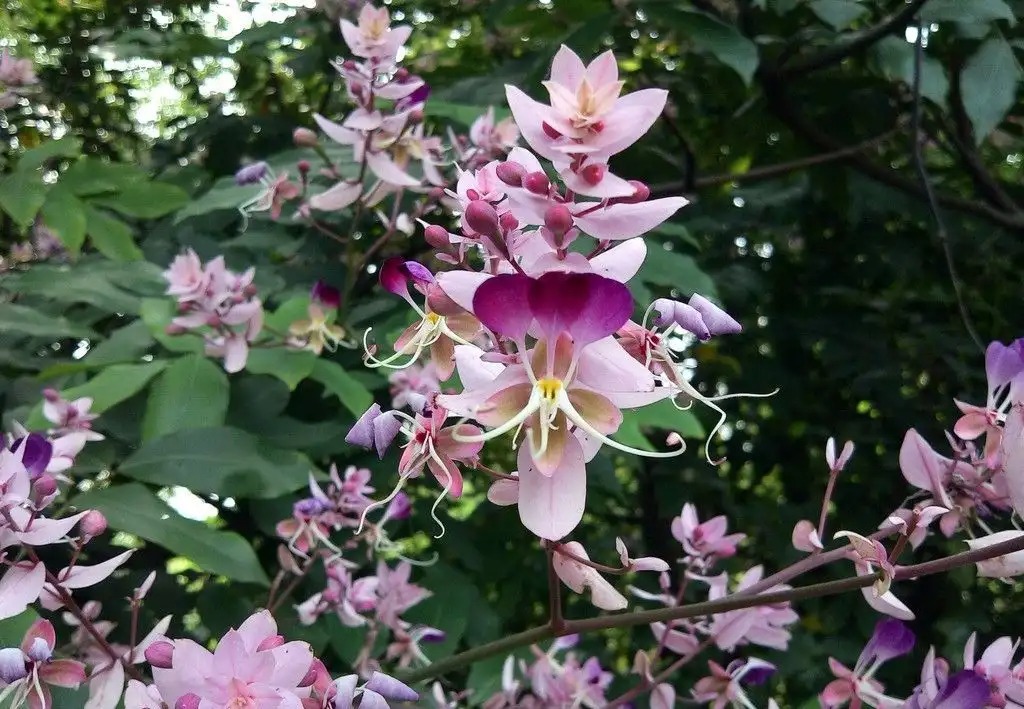
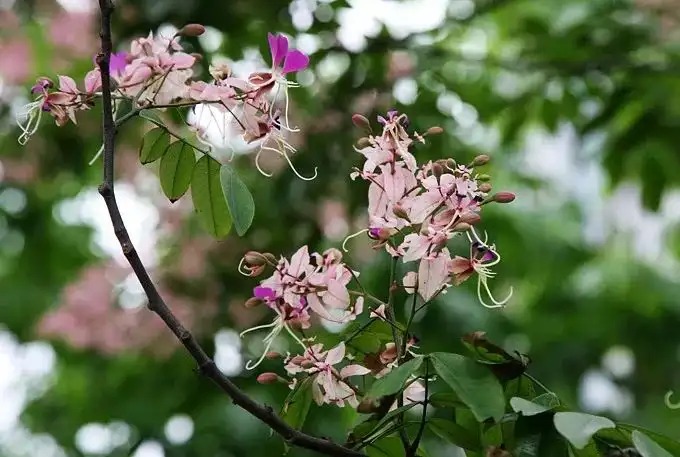
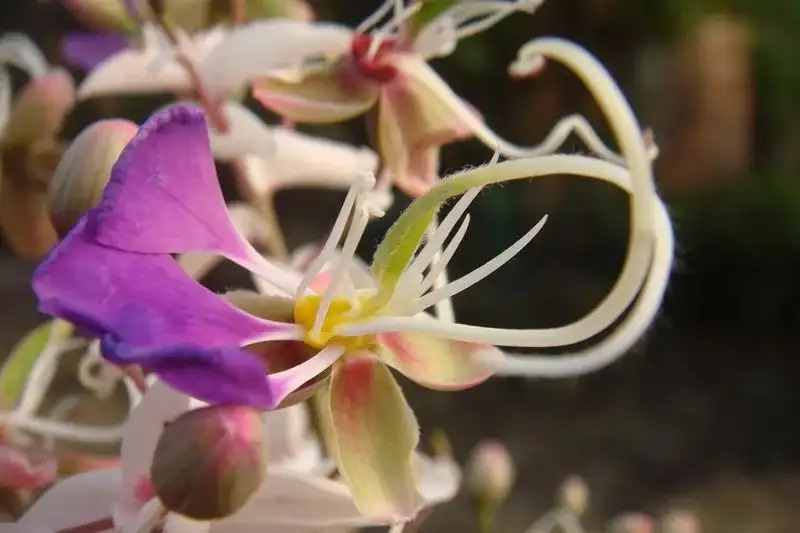


33-Five-color plum
Lantana camara, also known as "Mianbi Gonghua" by the Hakka people, is an evergreen shrub originally found in South America and the West Indies. Its flowering period typically lasts from mid-to-late April to mid-February, but due to climate and temperature, it can be seen blooming almost year-round, making it a perennial. Its inflorescence often exhibits multiple colors, earning it nicknames such as "five-color plum" and "five-color flower." Its foliage also has a distinctive, pungent odor, earning it nicknames such as "stinking grass" and "stinking golden phoenix." Introduced to Taiwan by the Dutch around 1645, it is now a common invasive species found in the wild across the Taiwanese plains due to its robust reproductive capacity.
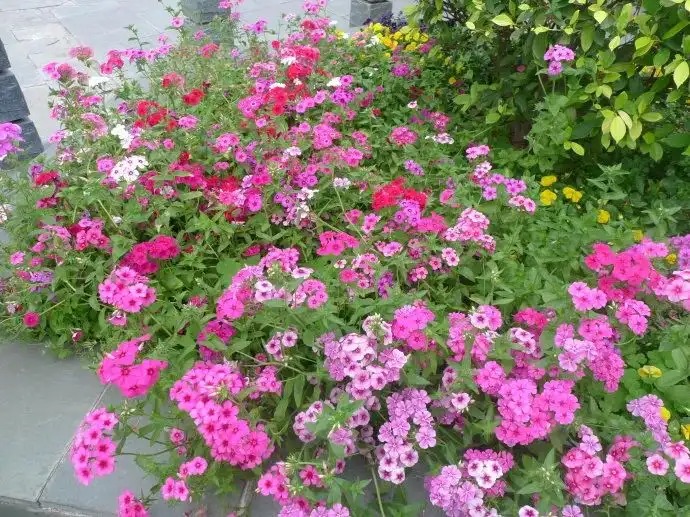


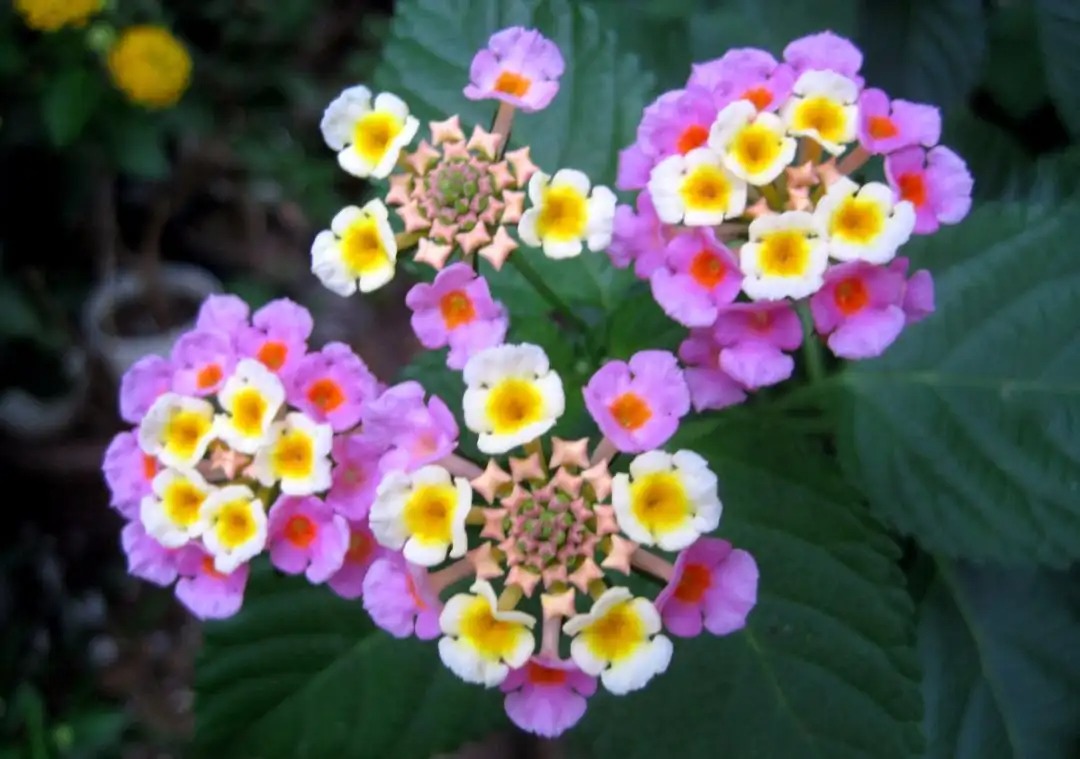
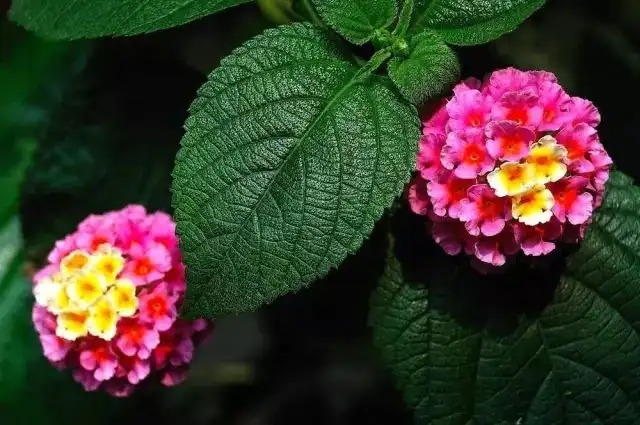
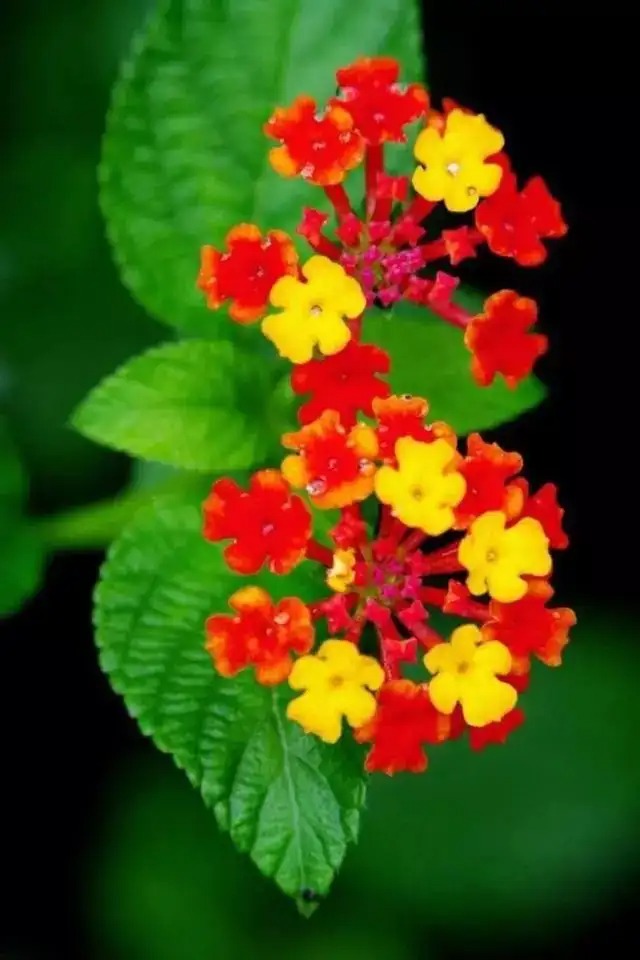
34-Iris
Also known as the English Dan, Xian Dan Hua, and Zinnia, it is a plant of the Rubiaceae family and the genus Ixora. The plant is short, with beautiful flowers and leaves, and rich colors, including red, orange, yellow, white, and two-color. The plant has a beautiful shape, dense flowers, and rich colors. It is an important potted woody flower and the national flower of Myanmar. In southern Guangxi Province, people usually call it water hydrangea. Ixora has a long flowering period and can bloom from March to December every year.

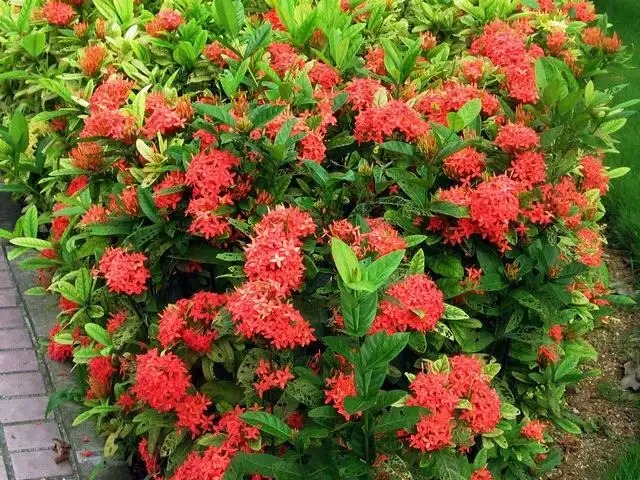
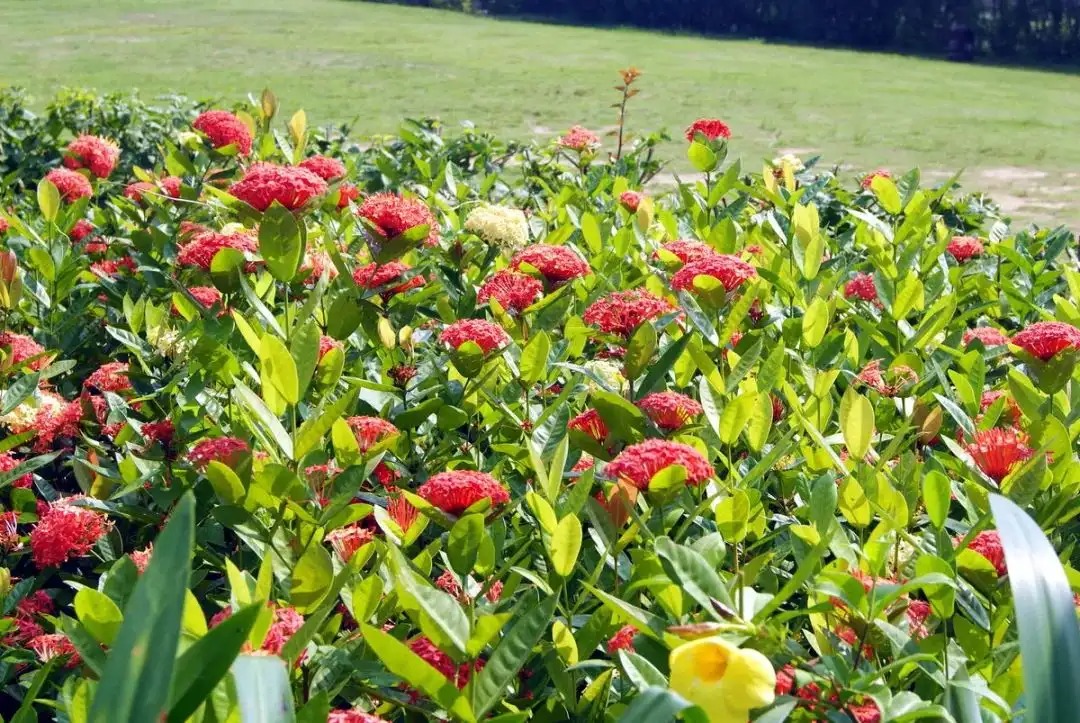

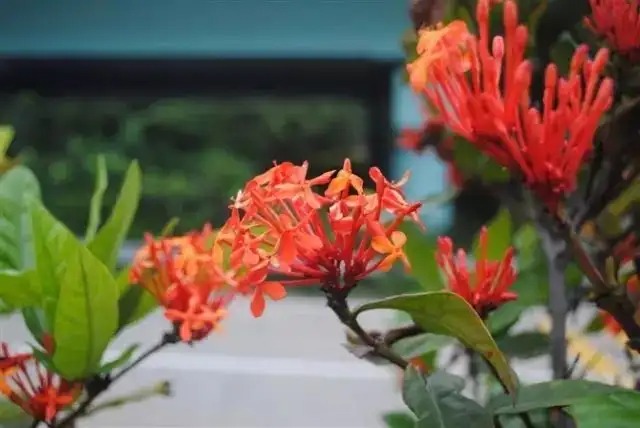
35-Peony
This perennial deciduous shrub belongs to the Ranunculaceae family and the genus Paeonia. Its vibrant, elegant, and magnificent flowers are known as the "King of Flowers." Within cultivation, hundreds of varieties are classified, primarily based on flower color. Peonies come in numerous varieties and colors, with yellow, green, flesh-red, deep red, and silver-red being considered the finest, with yellow and green being particularly prized. Peonies are large and fragrant, earning them the nickname "National Beauty and Heavenly Fragrance."
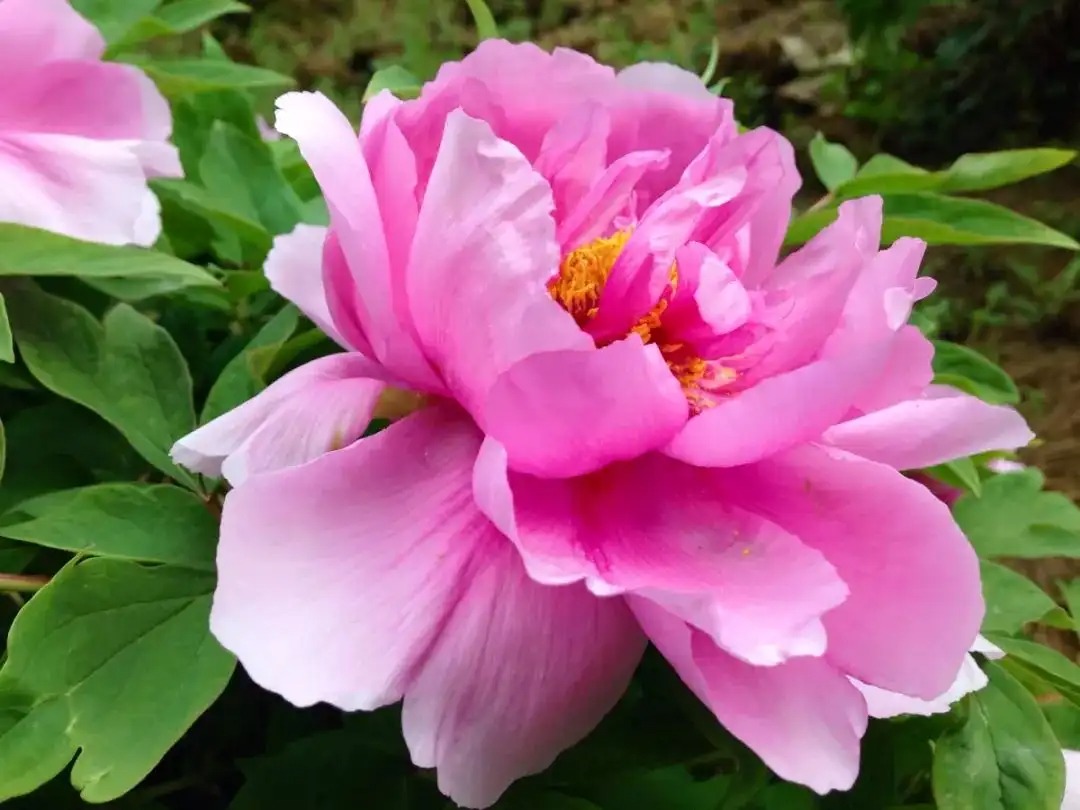
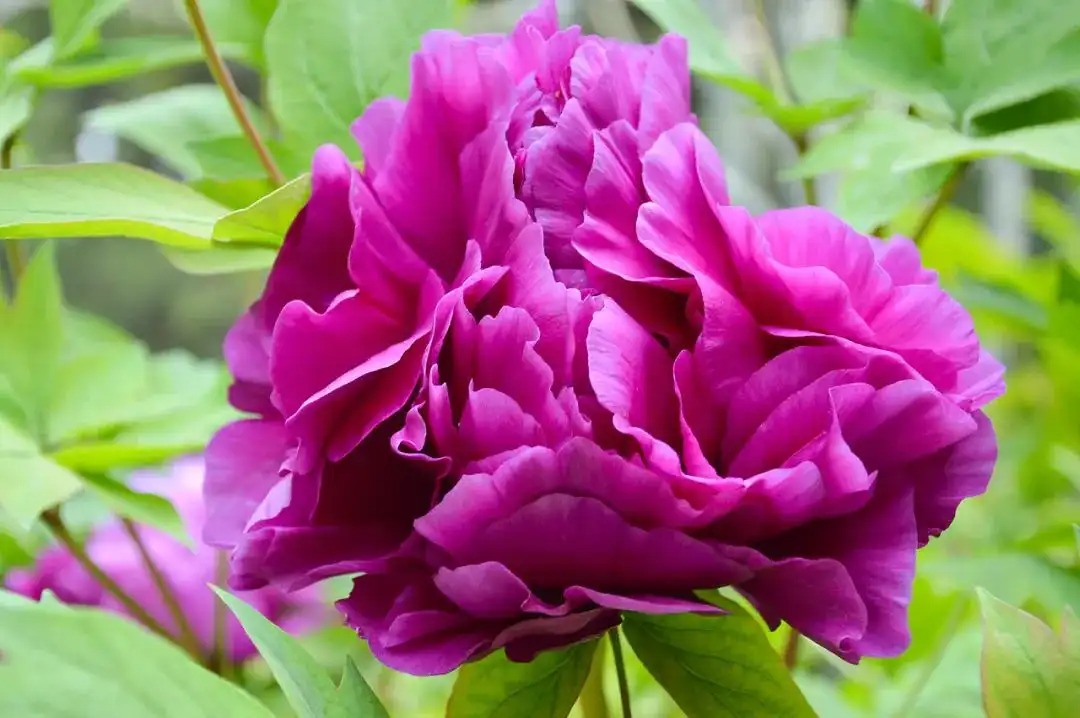

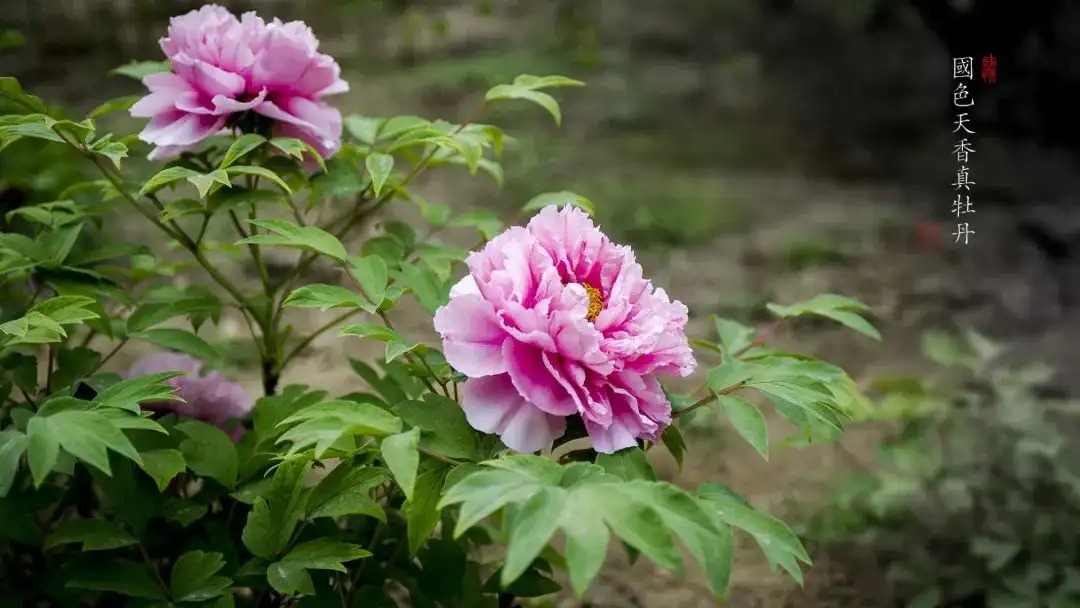
36-Cuckoo
Also known as azalea and mountain pomegranate, this is an evergreen or plain green shrub. Legend has it that in ancient times, a cuckoo bird would cry day and night, coughing up blood, staining the flowers across the mountains red, hence its name. Azaleas typically bloom in spring, with clusters of 2-6 flowers. The funnel-shaped corolla comes in vibrant colors, including red, pale pink, apricot red, snow-blue, and white. Grown in sparse mountain thickets or under pine forests at altitudes between 500 and 1200 meters (-2500 meters), it is a typical indicator plant for acidic soils in central, southern, and southwestern China.
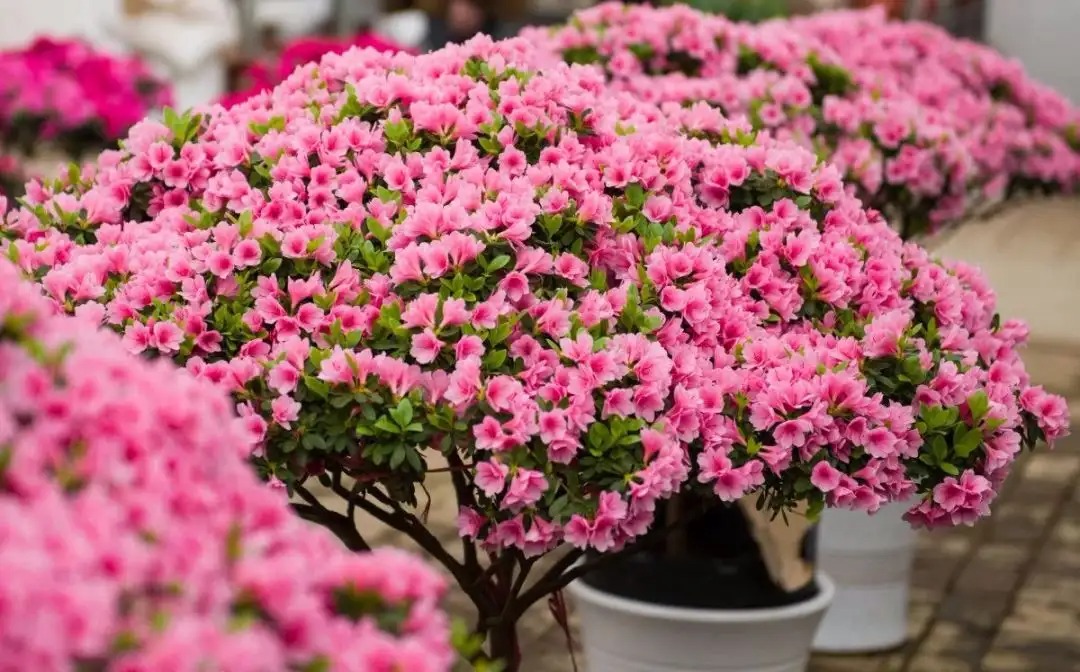
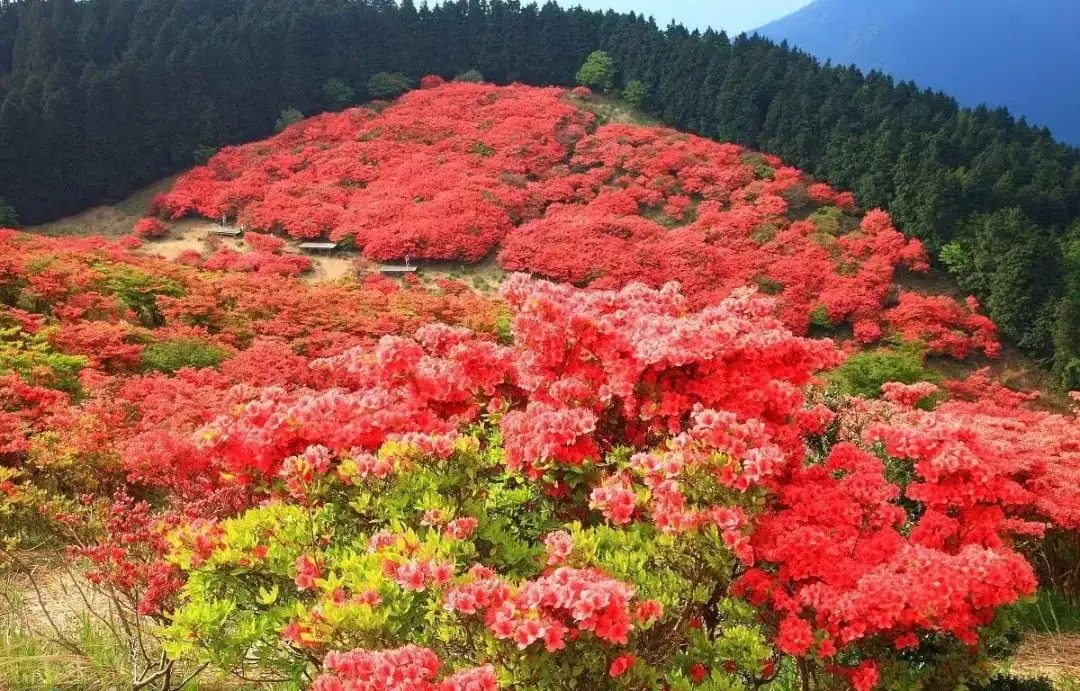
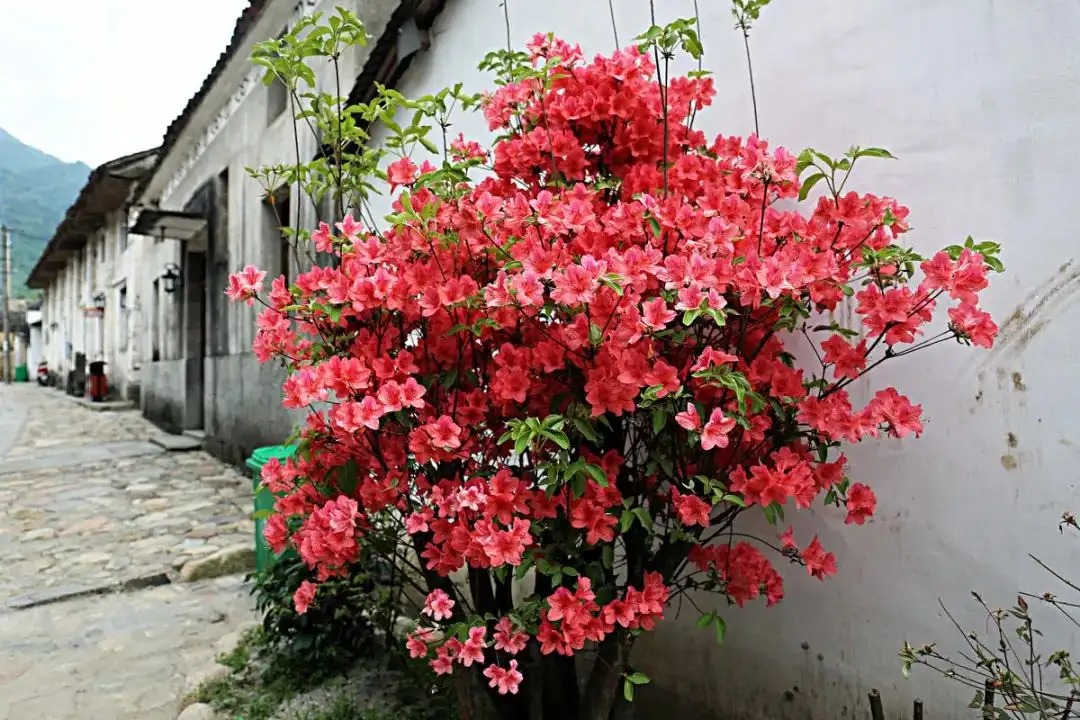
37-Eichhornia crassipes (Water Hyacinth)
The fibrous roots are well-developed and brown-black. The stem is very short, with pale green stolons. Leaves are clustered at the base in a rosette arrangement. The blades are rounded and dark green. The petioles vary in length and contain numerous air cells composed of polygonal columnar cells, interspersed with yellow-green to green vascular bundles. Sheath-like yellow-green bracts are present at the base of the petioles. The peduncle is angular. The inflorescence is usually composed of 9-12 flowers in a spike. The petals are purplish-blue, the corolla is slightly bilaterally symmetrical, pale purple-red around the periphery, blue in the center, and has a yellow circular spot in the center of the blue. The tepals are connate at the base to form a tube. The stamens are adnate to the tepal tube. The filaments are covered with glandular hairs. The anthers are bluish-gray, and the pollen grains are yellow. The ovary is long pear-shaped. The style is about 2 cm long, and the stigma is densely covered with glandular hairs. The capsule is ovate. Flowering occurs from July to October, and fruiting occurs from August to November.


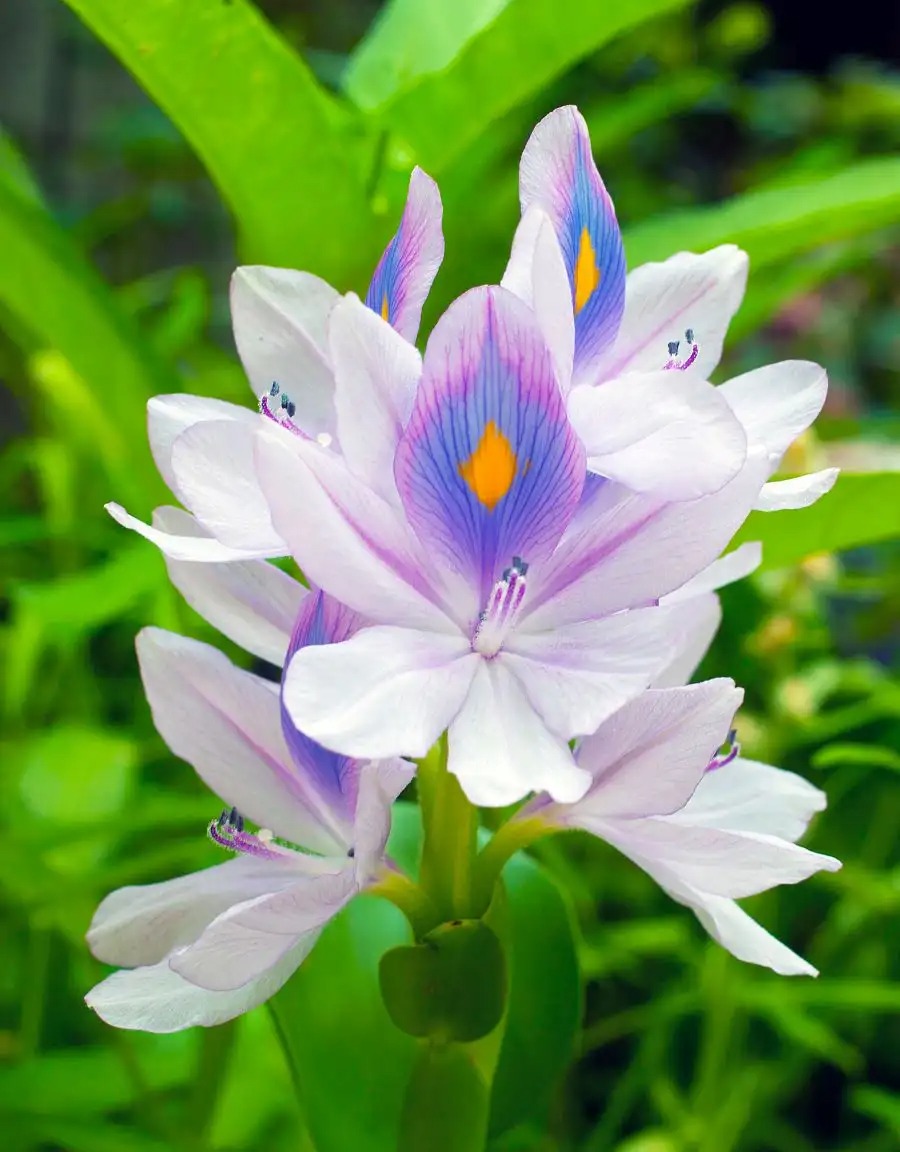
38-Alpinia officinalis
This plant, belonging to the Zingiberaceae family, can reach up to 3 meters tall. Its leaves are lanceolate, tapering at the base, with short, soft pubescent margins and glabrous surfaces on both sides. Its inflorescence is drooping, racemose, and has a purplish-red rachis with very short branches. Its bracts are elliptical, white, and pink at the tips, enclosing the flower when in bud. Its lobes are oblong, creamy white, and pink at the tips. Its lip is broadly ovate and spoon-shaped, and its ovary is covered with coarse golden-yellow hairs. Its seeds are angular. It blooms from April to June and sets from July to October. Its flowers are extremely beautiful and are often cultivated in gardens for ornamental purposes. Its rhizomes and fruits nourish the spleen and warm the stomach, dispel dampness and dispel cold, and treat indigestion, vomiting, and diarrhea. The leaf sheaths are used as fiber.
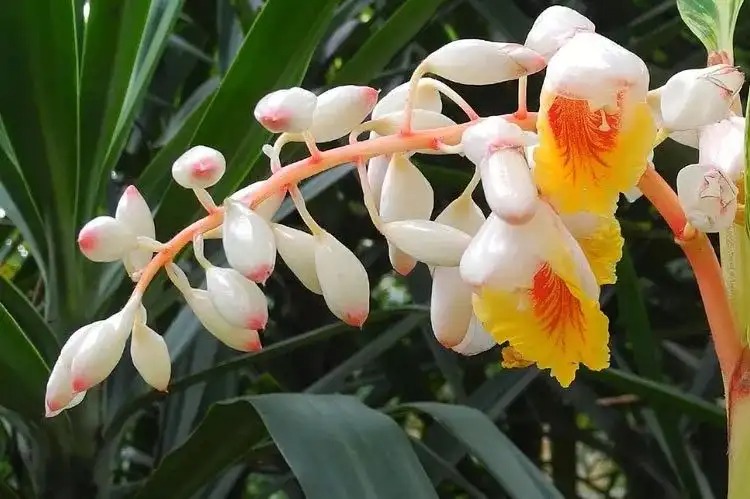

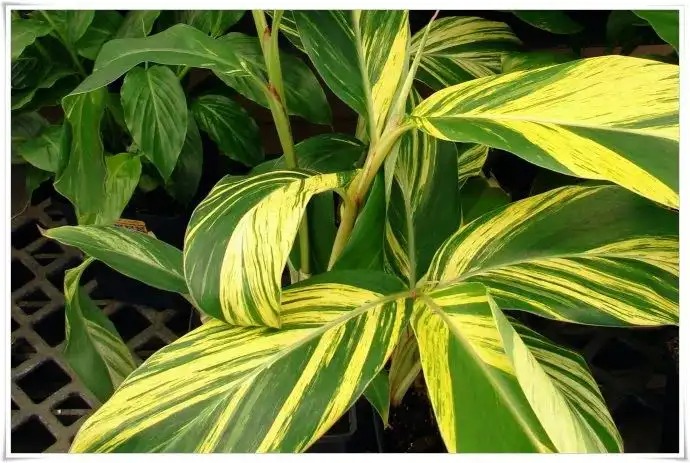
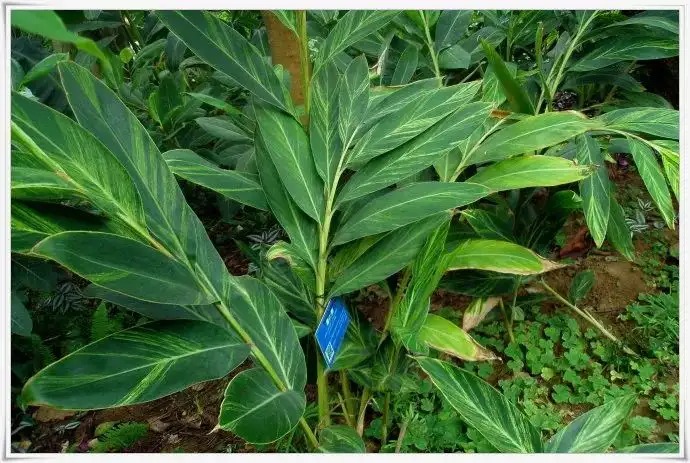
39-Flower Name: Sage
Flowering period: summer
Introduction: Sage is a perennial herb with a clumping plant shape. Its leaves are oval in shape and gray-green in color. The leaf surface has concave and convex textures. It has a strong and pungent fragrance. It blooms small lavender flowers in summer. It grows vigorously and is resistant to diseases and pests. There is a nickname for it online: Sage.
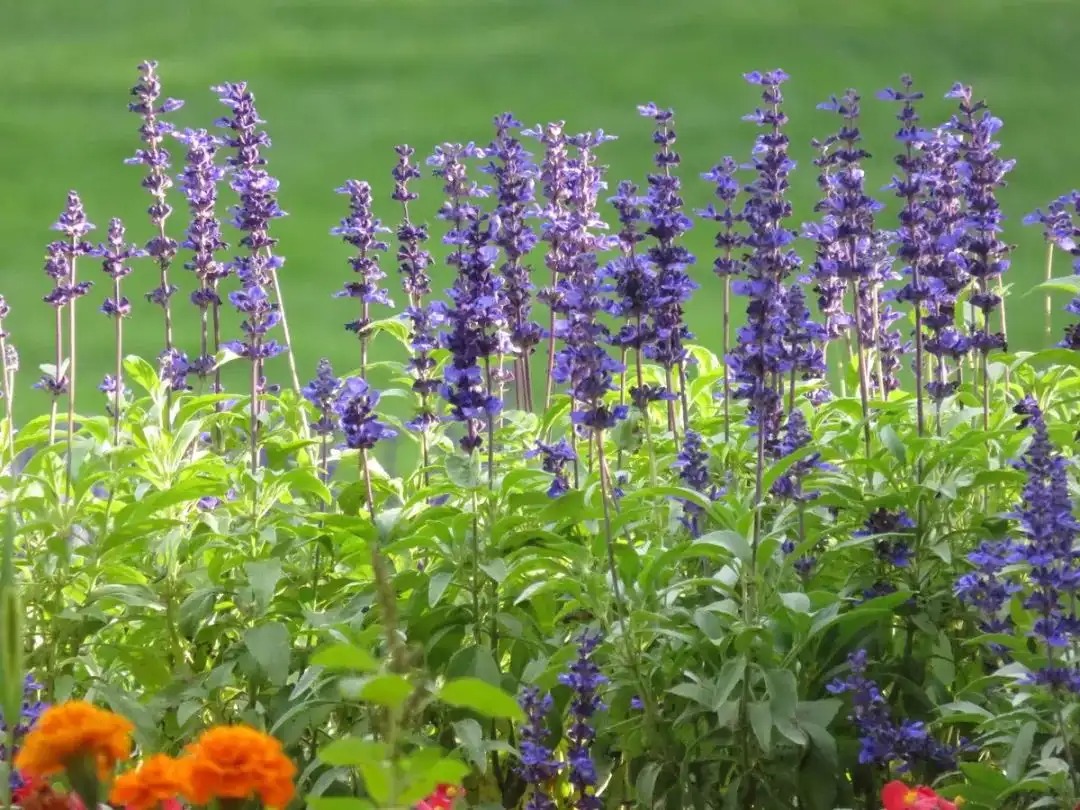
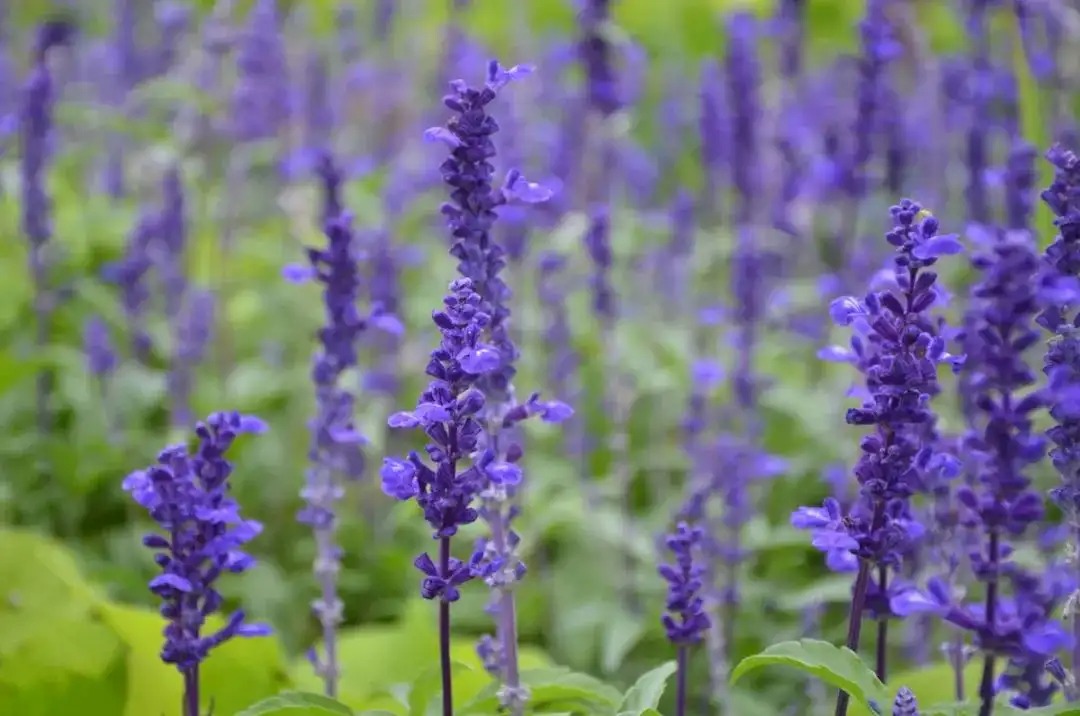
40-Common Creeper
This climbing shrub, belonging to the Combretaceae family and the genus Combretaceae, reaches 2-8 meters in height. Its branches are covered with short, brownish-yellow pubescence. Its leaves are opposite or nearly opposite, membranous, ovate or elliptic, with a short, acuminate apex and a blunt, rounded base. The surface is glabrous, the abaxial surface sometimes sparsely covered with brown pubescence, and densely covered with rusty pubescence when young. The inflorescence is arranged in a terminal spike-like corymbose pattern. The bracts are ovate to linear-lanceolate and hairy, with five distinct, acute corners. When mature, the exocarp is brittle, thin, bluish-black or chestnut, and white, cylindrical and spindle-shaped. It blooms in early summer and fruiting occurs in late autumn. Its seeds are one of the most effective anthelmintics in Traditional Chinese Medicine, particularly effective against parasitic ascariasis in children.
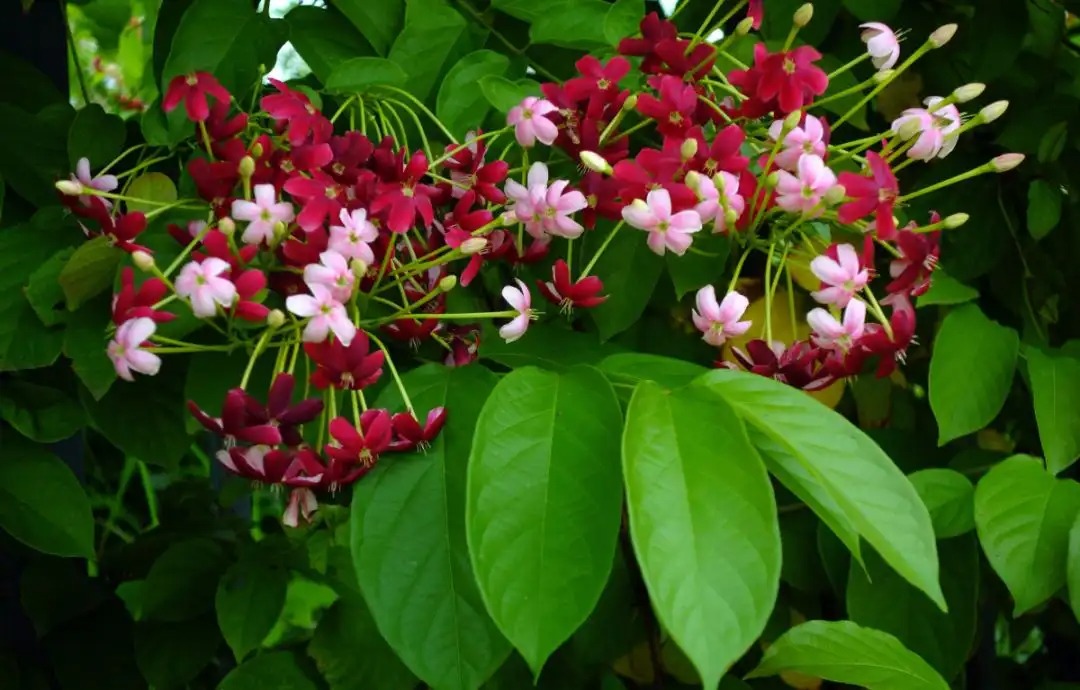

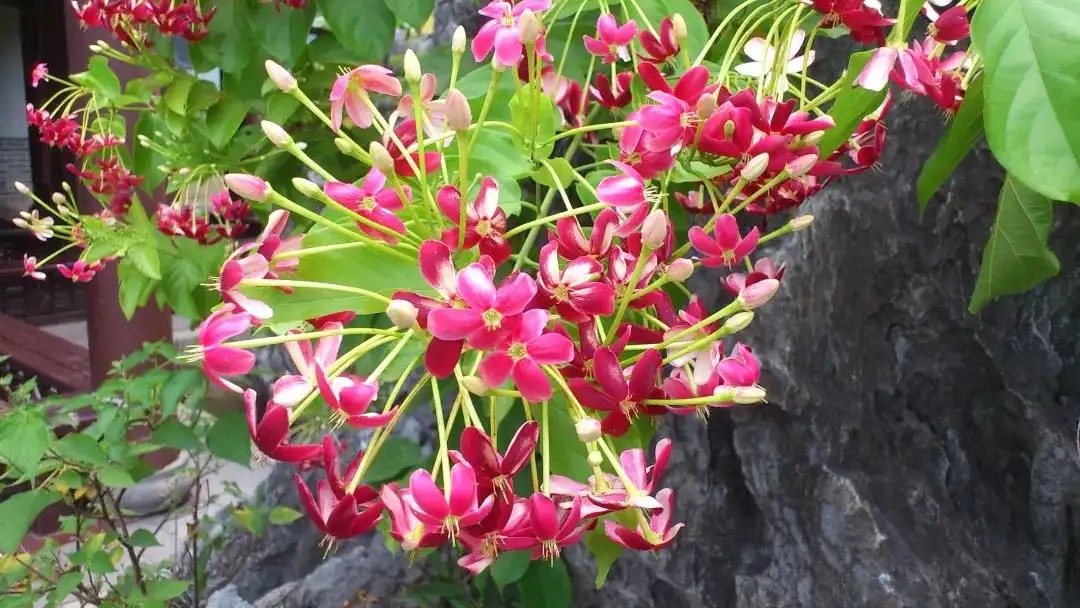
41-Osmanthus
Osmanthus fragrans is the common name for many trees in the genus Osmanthus, an evergreen shrub or small tree in the family Rhinocerotaceae. It has hard, thin-skinned leaves with oblong, pointed tips, opposite petals that remain in place through winter. The petals are small, four-lobed, and fused between the leaves. There are many horticultural varieties, the most representative of which include golden osmanthus, silver osmanthus, red osmanthus, and bay laurel.
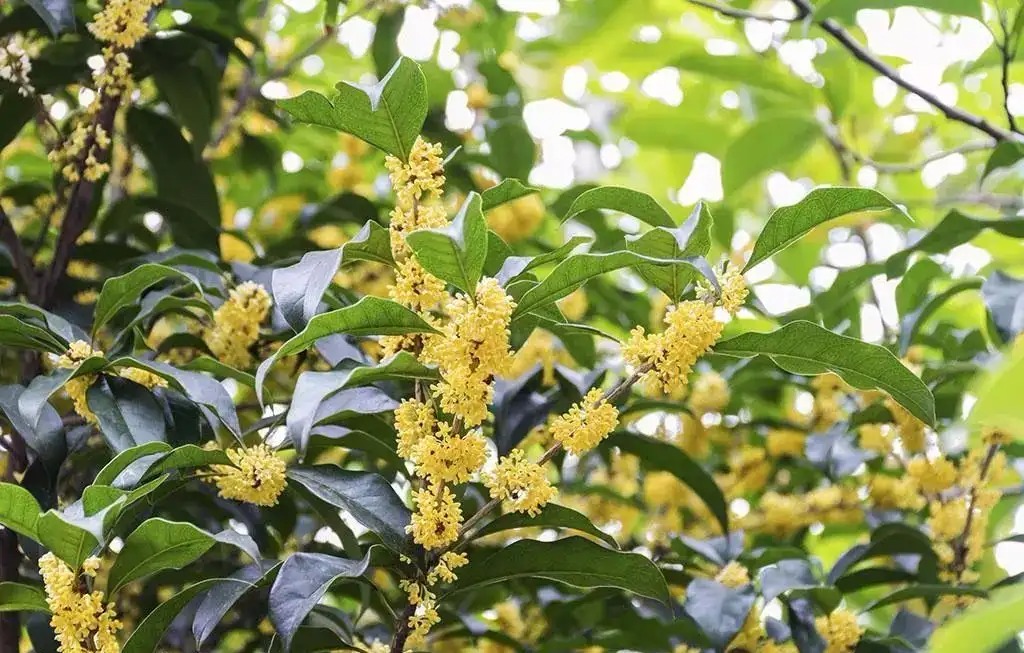
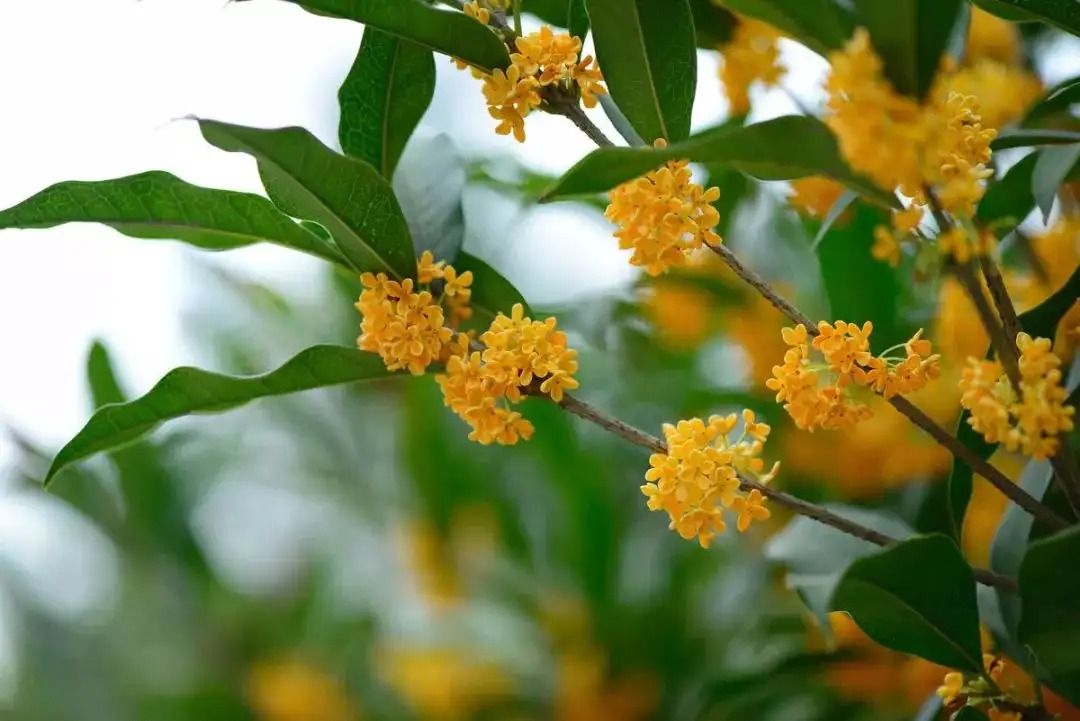

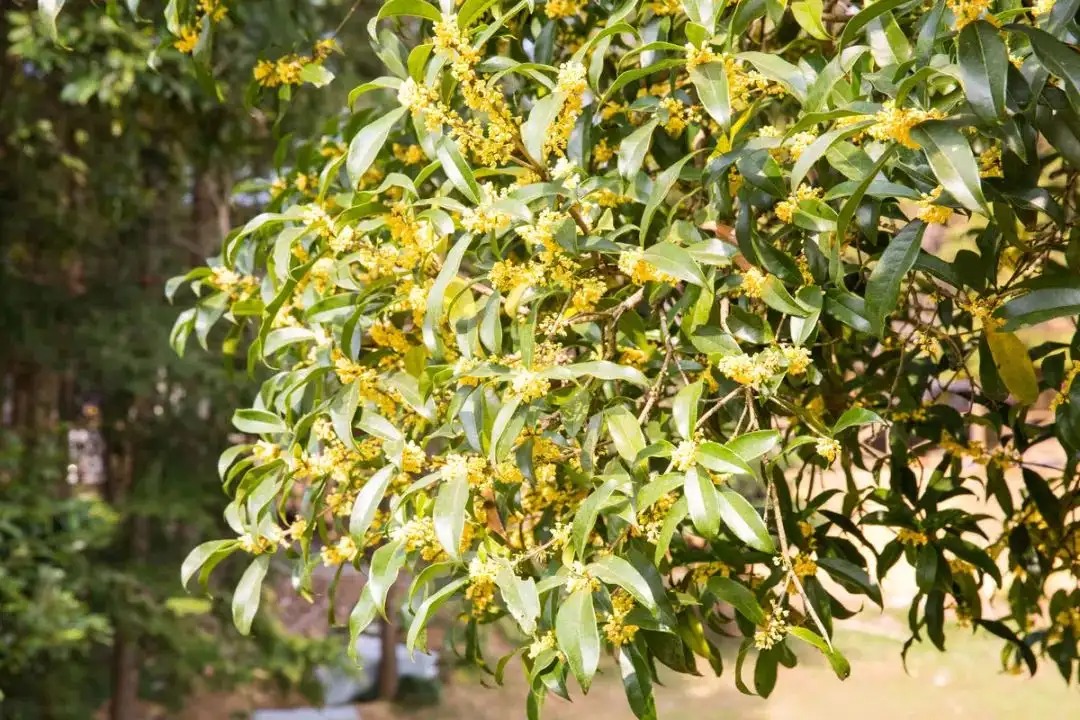
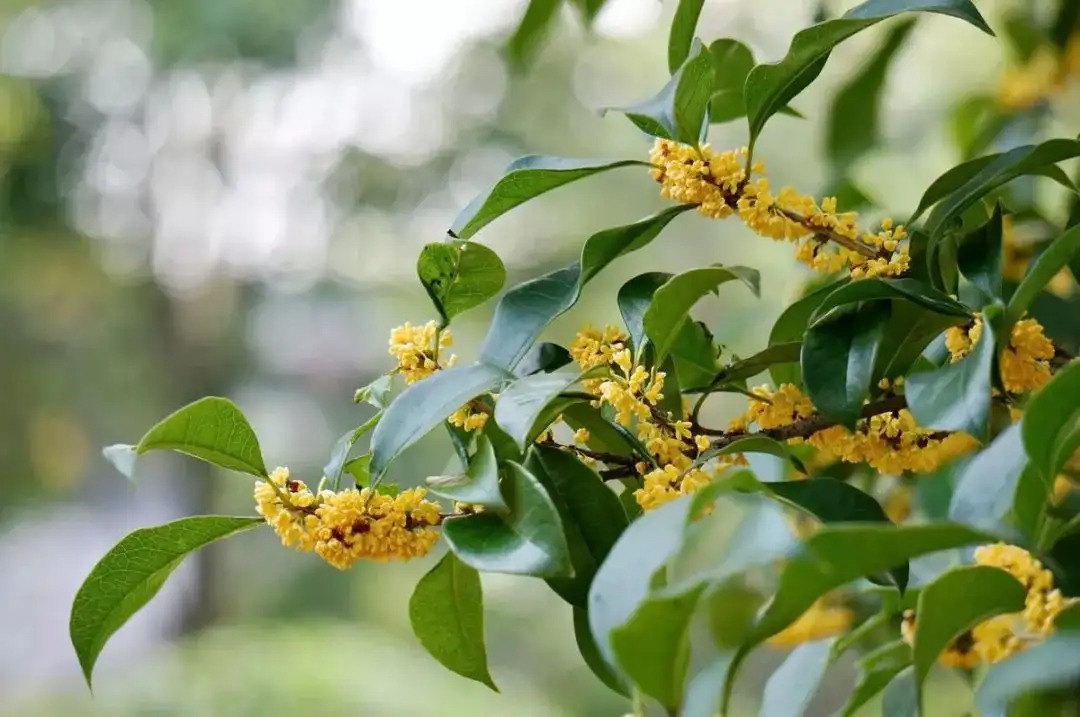

42-Royal Coconut
The royal palm is a tall tree, reaching up to 20 meters in height and with a diameter at breast height of 30-40 cm. Its stem is off-white with ring markings and often swollen in the middle. Its leaf sheaths are green and smooth, and its leaves are pinnately lobed, 3-4 meters long. Its inflorescence is multi-branched and short, 40-60 cm long. Its fruit is spherical. It is a famous tropical ornamental plant.

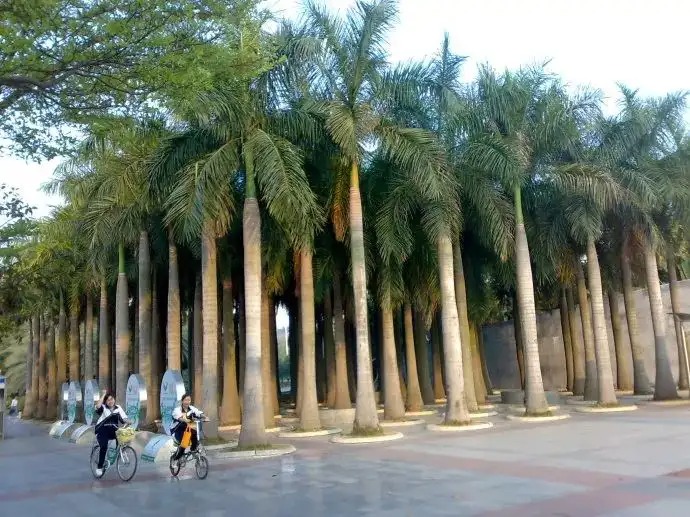
43-Bright Leaf Red Jade
Also known as the cycad tree, this plant belongs to the genus Cordyline in the Liliaceae family. It grows in an upright, shrub-like form, 1-3 meters tall, with stems 1-3 centimeters thick, sometimes slightly branched. Its leaves are clustered at the top of the stems or branches, and are green or purplish-red. Its panicles are 30-60 centimeters long, with flowers ranging from light red, bluish-purple to yellow, and bloom from November to March. It is commonly cultivated in provinces such as Guangdong, Guangxi, Fujian, and Taiwan, and is now widely cultivated in warm regions of Asia.
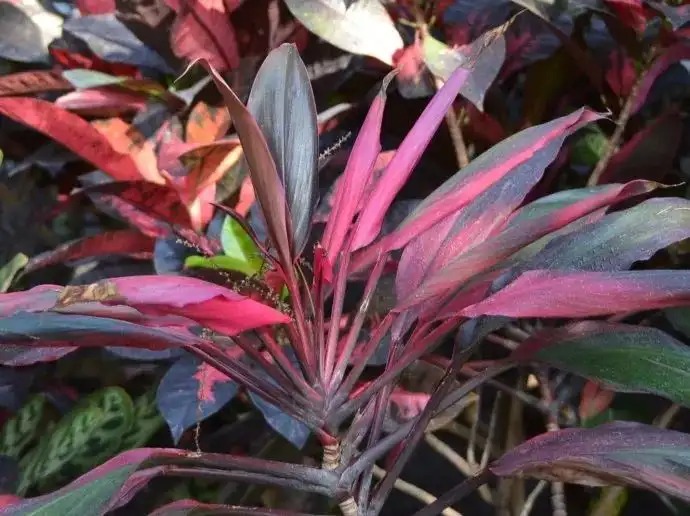
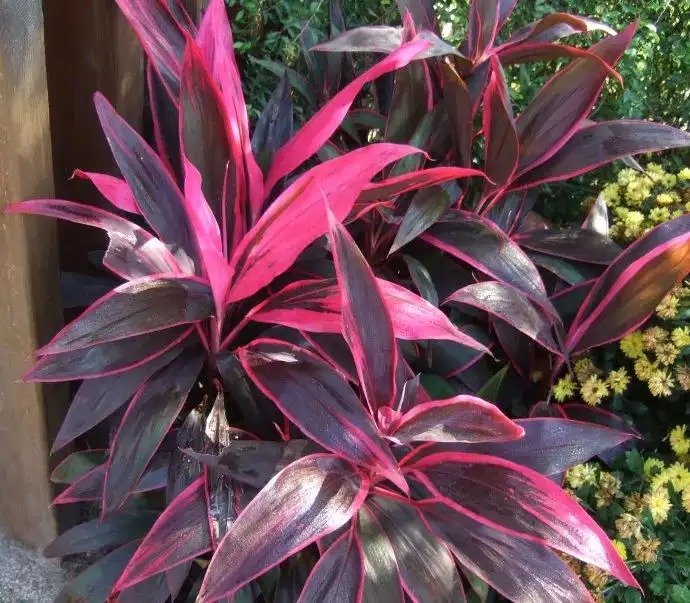
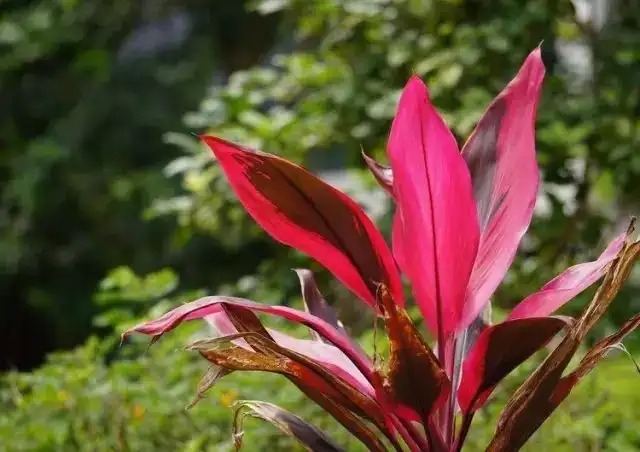
44-Strelitzia
This perennial herb is stemless. Its leaves are acute at the apex, and its petioles are slender. Several flowers are borne on a peduncle, supported by a spathe. The spathe is green with purple-red edges, the sepals are orange-yellow, and the petals are dark blue. The stamens are the same length as the petals, and the anthers are narrowly linear. It blooms in winter. Native to southern Africa, it is cultivated in parks and flower gardens in major southern cities and in greenhouses in northern China. Strelitzia reginae is evergreen, with large, beautiful leaves and uniquely shaped flowers. It can be planted in clusters in corners of courtyards, used for landscape gardens, and used to embellish flower beds and borders.
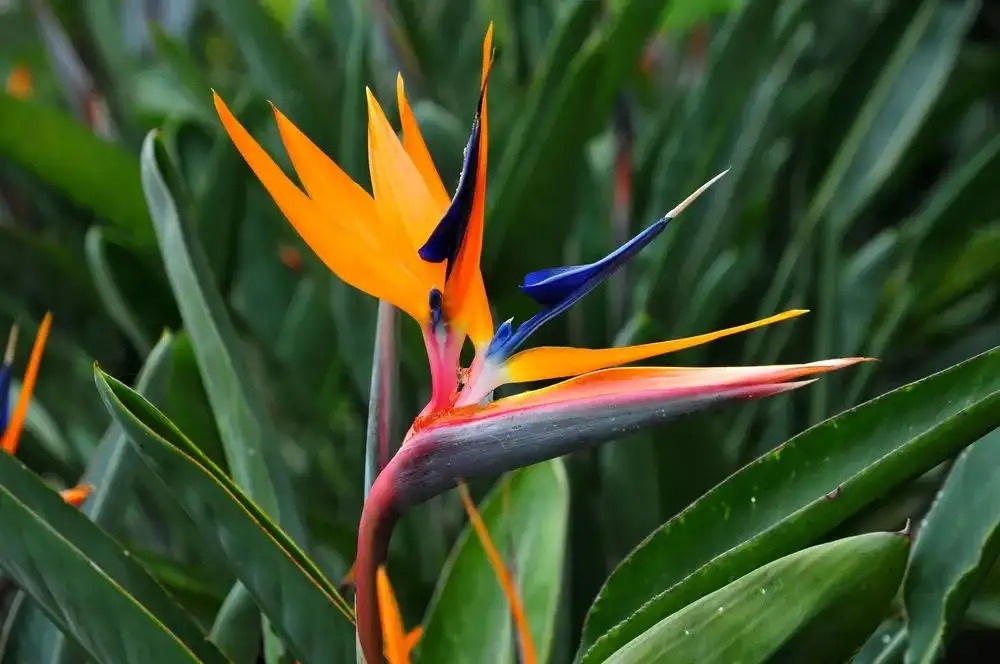


45-Soft-branched yellow cicada
Also known as the yellow warbler, small yellow cicada, double-petaled yellow cicada, man's flower, and purging yellow cicada, this perennial evergreen shrub belongs to the Apocynaceae family and the genus Cicada. Its name, "soft-branched yellow cicada," comes from the shape and color of its flower buds, which resemble those of a cicada pupa about to emerge, and its branches, which are soft. Native to Brazil and other regions, it has since been widely cultivated in tropical regions as an ornamental plant. It is found in tropical and American regions and has been introduced for cultivation.

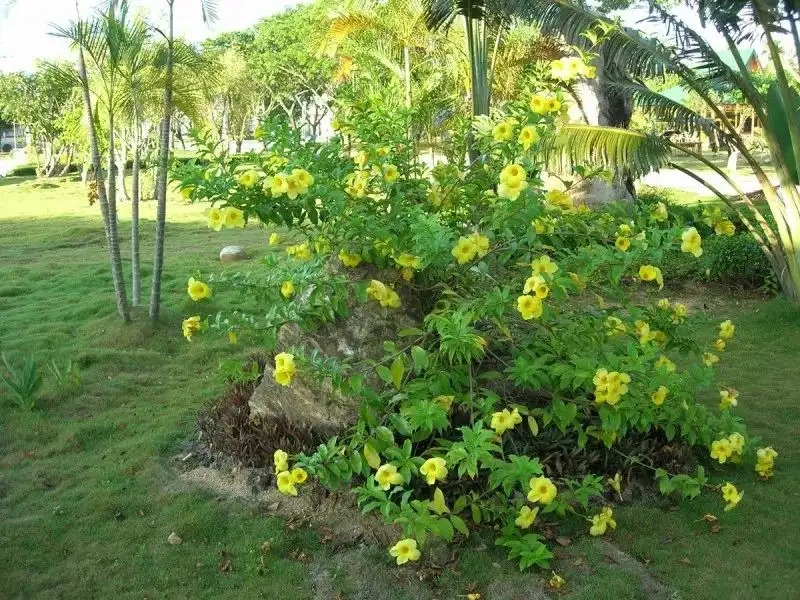
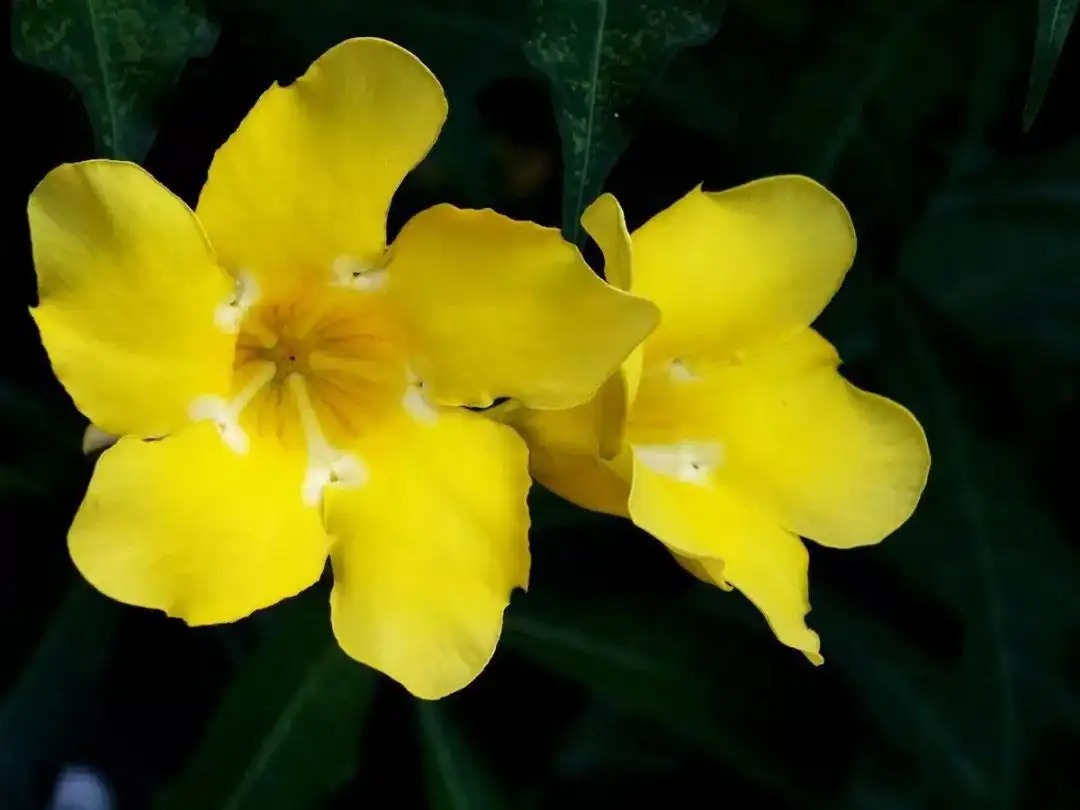
46-Oil palm
The stalks are erect trees, reaching 10 meters or more in height and up to 50 cm in diameter. The leaves are numerous, pinnately divided, and clustered at the top of the stem, 3–4.5 meters long. The pinnae are outward-folded, linear-lanceolate, 70–80 cm long and 2–4 cm wide, reduced to spinules at the base. The petioles are broad. The flowers are monoecious and inflorescences are arranged in separate, finger-like spikes 7–12 cm long and 1 cm in diameter, bearing densely packed flowers. The spikes have prominent pointed apexes, and the bracts are oblong with spiny tips at the ends. The male sepals and petals are oblong, 4 mm long and 1 mm wide, with acute apexes. The female inflorescence is subcapitate, densely packed, 20–30 cm long, with large bracts 2 cm long and a 7–30 cm long spinule. The female sepals and petals are ovate or ovate-oblong, 5 mm long and 2.5 mm wide. The ovary is about 8 mm long.
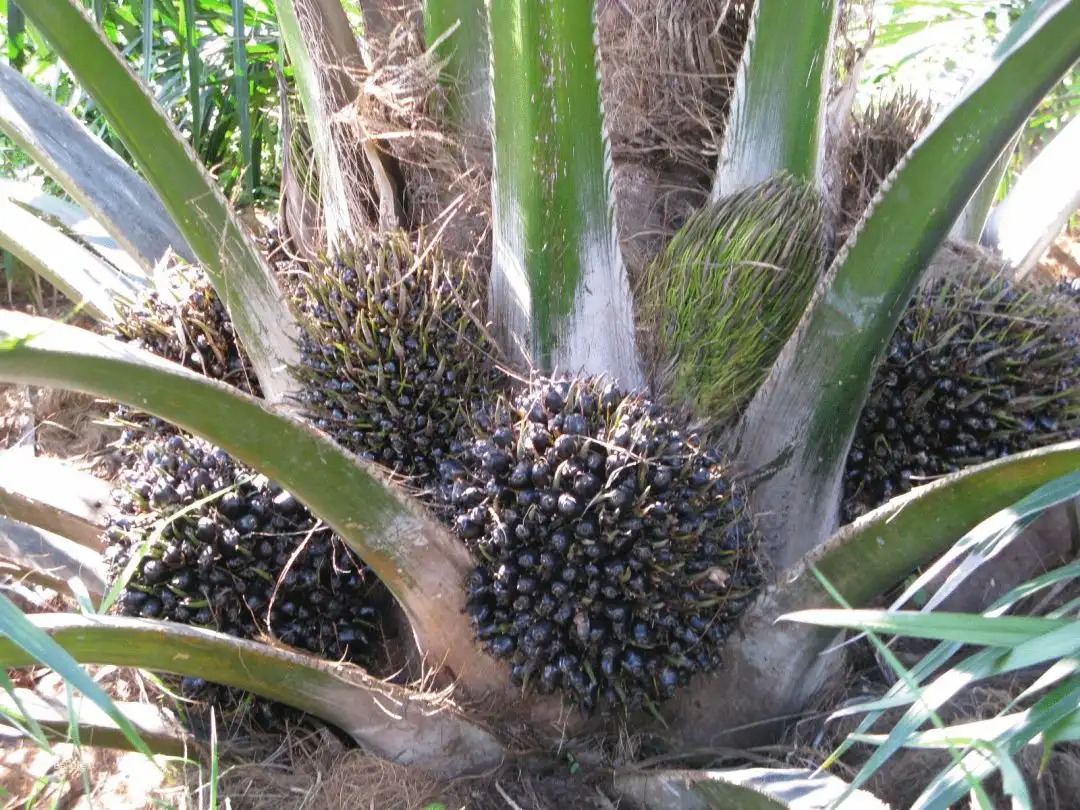
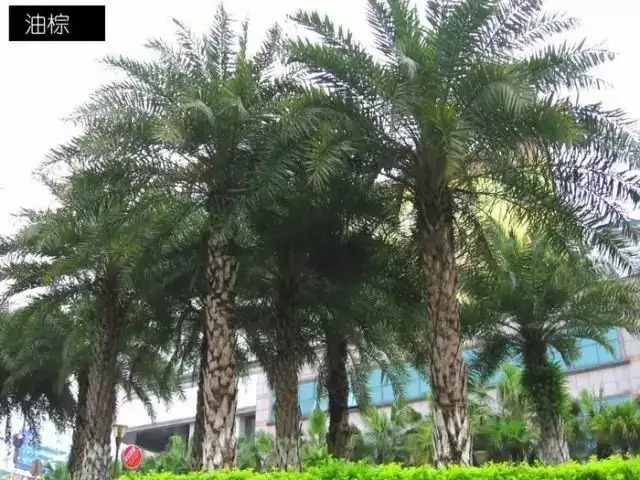
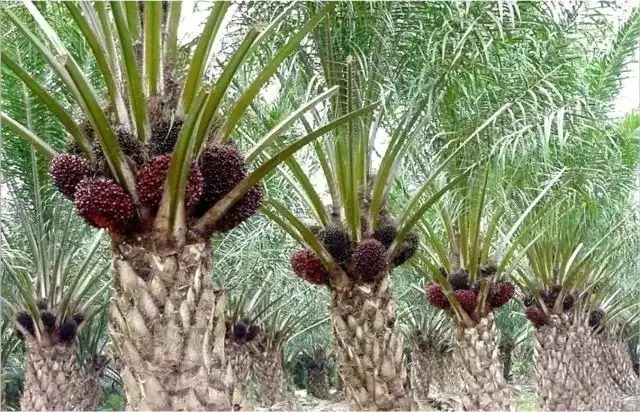
47-Sugar Gum Tree (Pot Stand)
Also known as the elephant bark tree, lampstand tree, blackboard tree, milkwood, and demon tree, it belongs to the Apocynaceae family, genus Dichroa. Native to the hot and humid climate of South Asia, its wood is soft and fine, and the plant is rich in latex, which is used to extract chewing gum, hence the name "sugar gum." Its wood can also be used as a material for blackboards, hence the name "blackboard tree." A popular street tree and garden shade tree, the sugar gum tree boasts a beautiful shape, evergreen branches and leaves that grow in a layered, tower-like pattern. Its fruit is long and slender, like noodles, making it a popular street tree in southern China and a great garden embellishment.
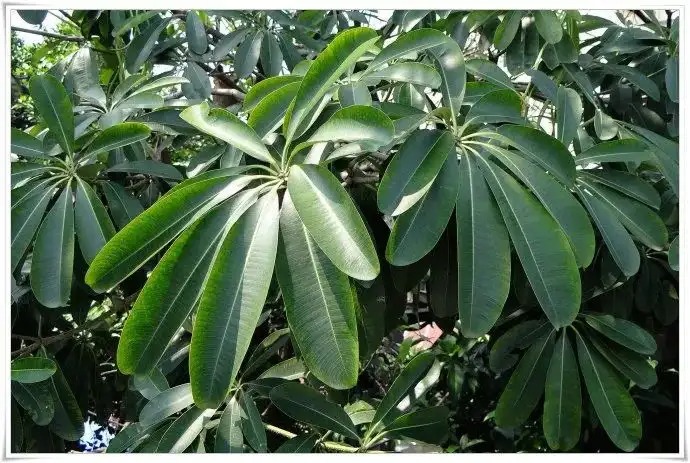
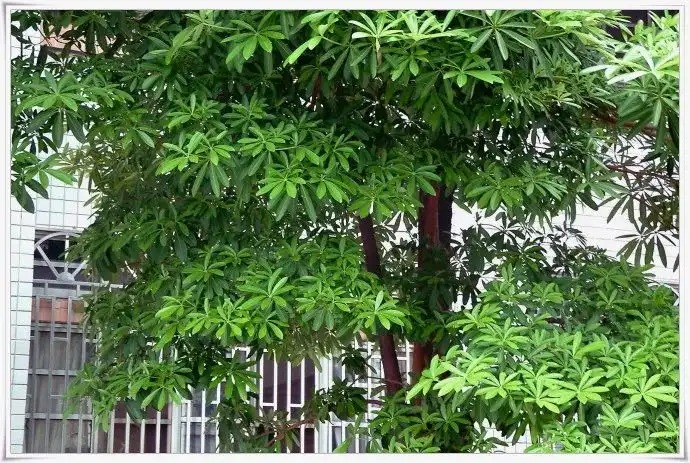
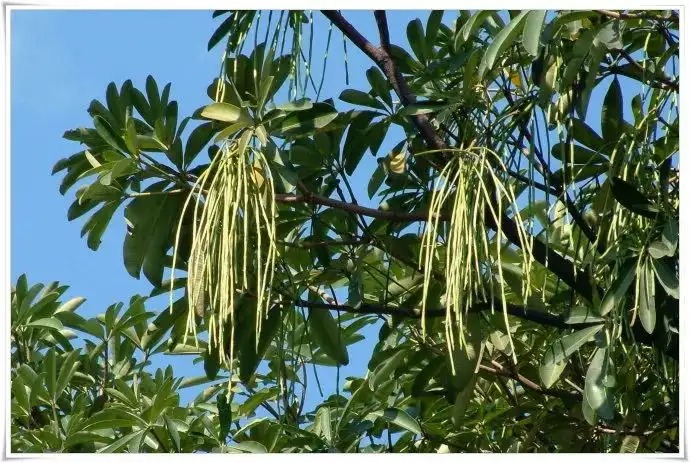
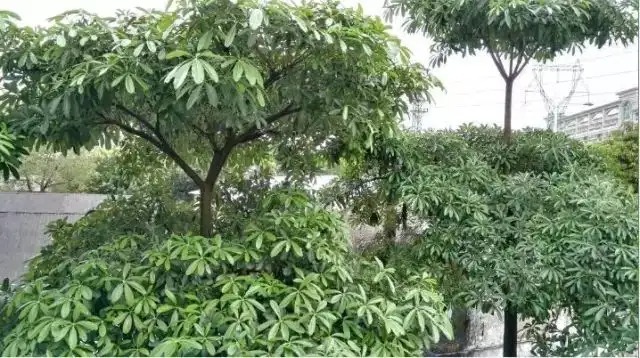
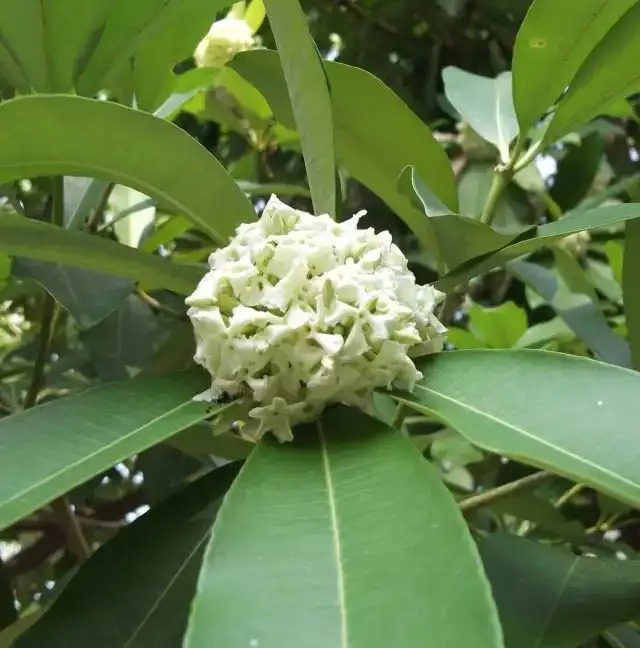
48-Purple Cup Amaranth
This perennial herb, 15-20 cm tall, has opposite leaves that range from purple-red to purplish-black, creating an elegant appearance. Its inflorescence heads are densely clustered into small pink balls without petals. It grows 30-60 cm tall by 30-50 cm tall, with a medium to fine texture. Purple-cup Amaranthus has copper-red stems and leaves, and blooms in winter with creamy white, spherical flowers that resemble globe amaranths. Round-leaved Amaranthus has bright red stems and leaves. It thrives in neutral light conditions, with 60% to 100% sunlight. It can be planted in flower beds, gardens, or rows, creating a vibrant, fiery red. Round-leaved Amaranthus is particularly well-suited to high-altitude, cold climates, where its leaves are a vibrant, fiery red. After pruning, Purple-cup Amaranthus forms dense, rich red stems and leaves, creating an attractive, beautiful appearance. Red Dragon Grass blooms in winter and resembles a natural dried flower. This perennial herb, 15-20 cm tall, has opposite leaves that range from purple-red to purplish-black, creating an elegant, beautiful appearance. The inflorescence is densely packed into pink balls without petals. The stem is pseudo-dichotomously branched with pith in the middle, and the stem sap is purple-red.
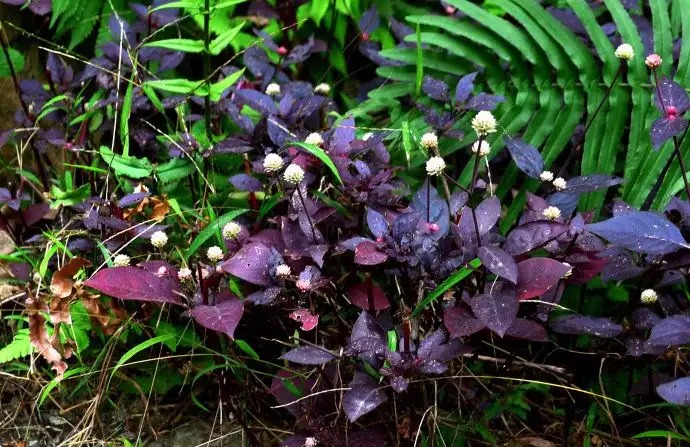
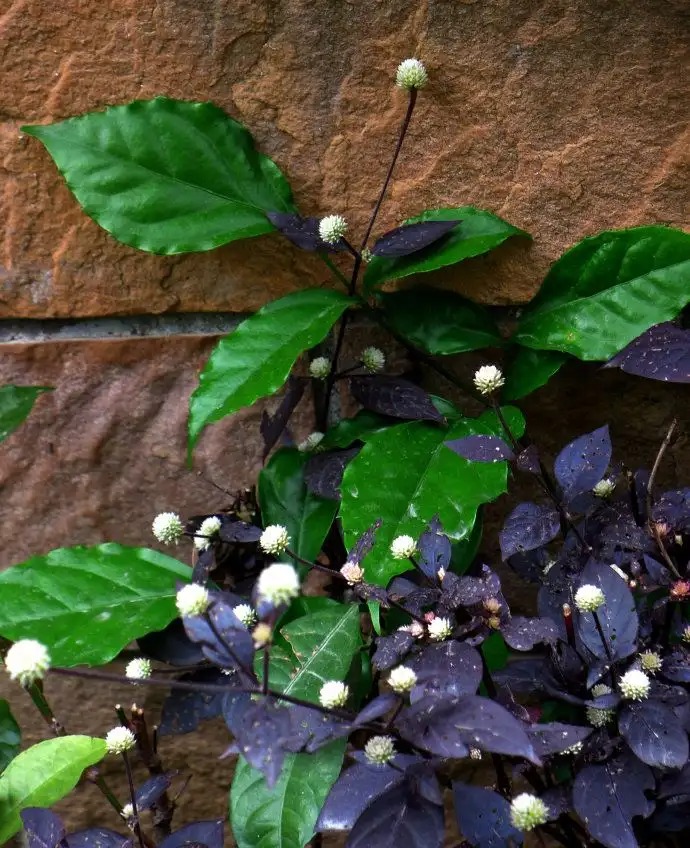
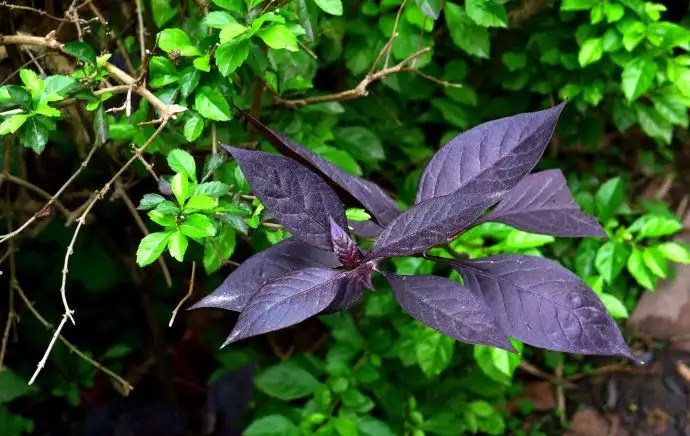
49-Tequila
Also known as Agave palm and Agave tequila, it is a large, perennial, evergreen herb in the Asparagaceae family. It is known for its firm, evergreen leaves and yellow-green flowers, which produce numerous bulbils on the inflorescence after flowering. In its native habitat, it typically takes several decades for flowering to occur, after which the mother plant dies, requiring cross-pollination to produce fruit. It prefers well-drained, fertile, and moist sandy soil. Native to tropical America, it is often introduced and cultivated in southern and southwestern China.
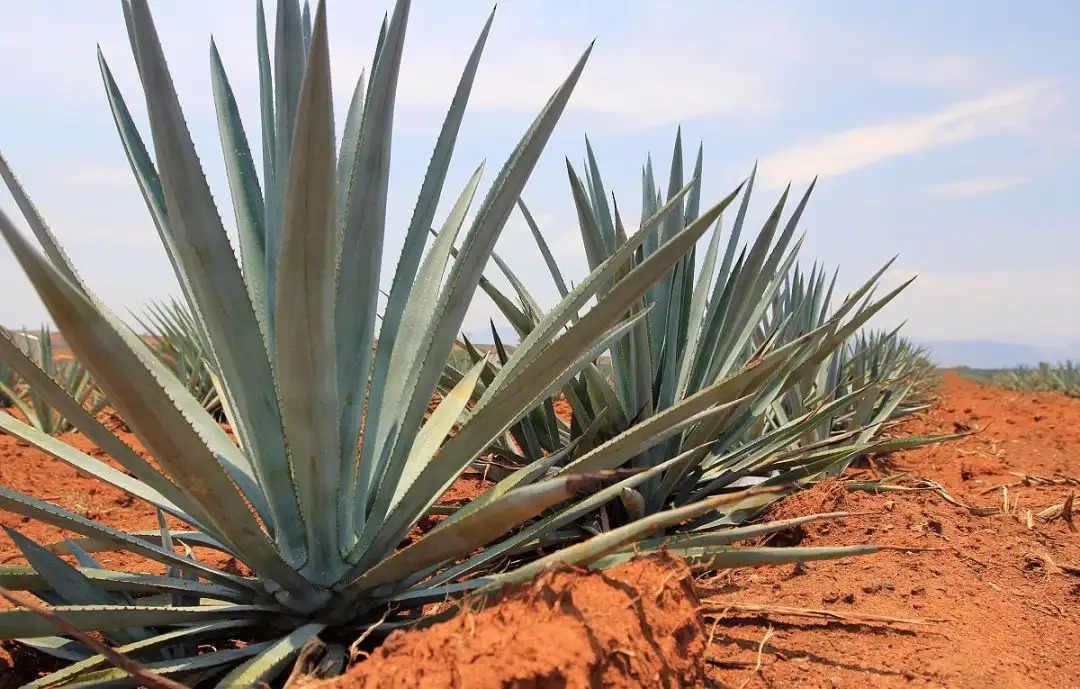
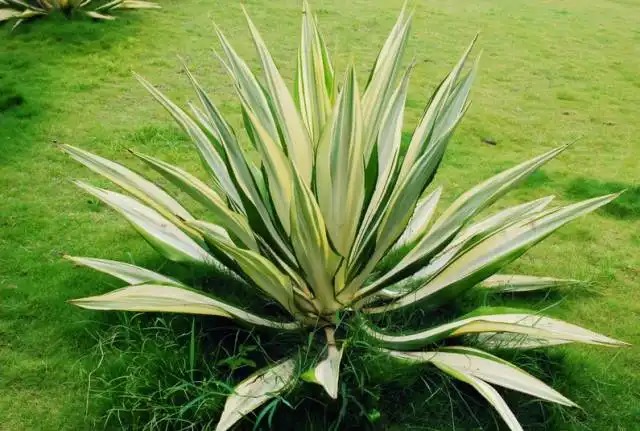
50-Red Pompom (Red Tassel Flower)
The beautiful, slightly fragrant flowers, long flowering period, and rapid growth make it a popular ornamental plant and a source of nectar, widely cultivated in tropical and subtropical regions. Its hard wood is used for agricultural tools; its bark contains tannins; its root bark, taken in a decoction, can treat indigestion; and its flower buds, young leaves, and young fruits are edible.


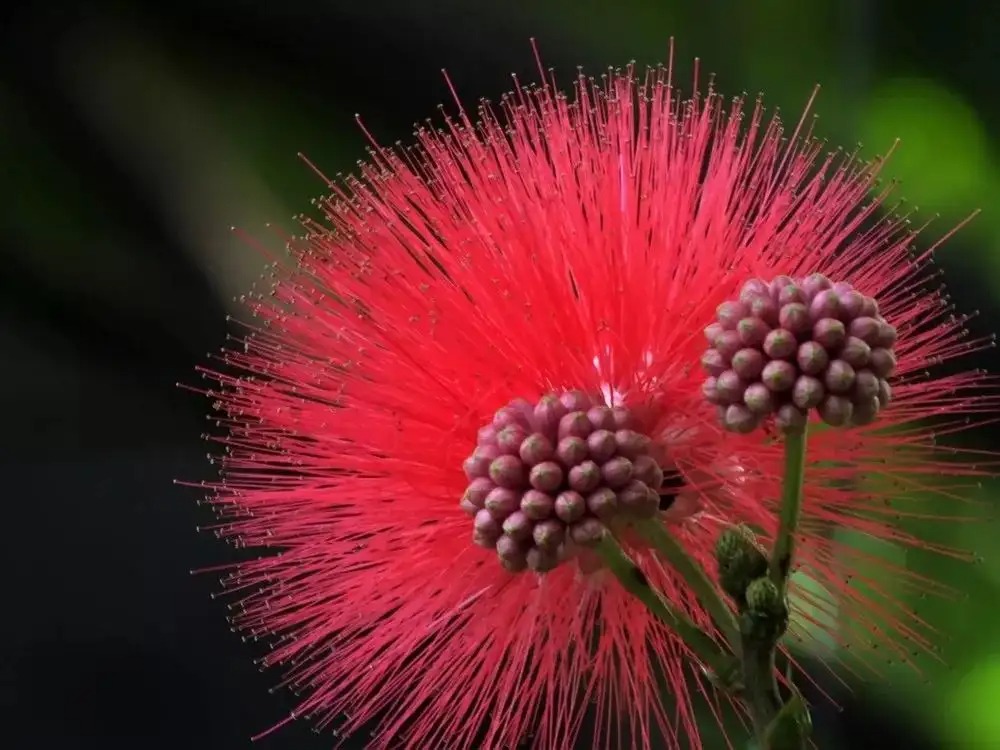
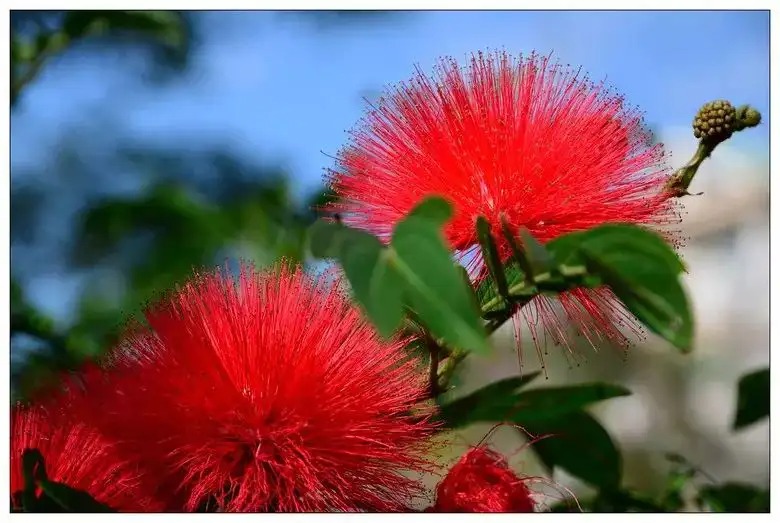
51-Traveler Sho
A plant of the family Musa, the traveler's banana has a palm-like trunk, reaching 5-6 meters in height. Leaves are arranged in two rows at the top of the stem, resembling a large folding fan. The leaves are oblong and resemble banana leaves. The inflorescence is axillary, with 5-12 flowers arranged in a scorpiontail-like cyme within a spathe. The sepals are lanceolate and leathery; the petals are similar to the sepals, except that the central one is slightly narrower. The stamens are linear, with anthers twice as long as the filaments. The ovary is flattened, with the style approximately as long as the perianth. The capsule dehisces into three lobes. The seeds are kidney-shaped and covered with a turquoise, tear-like aril. Native to Madagascar in Africa, it is cultivated in small quantities in Guangdong and Taiwan as a garden plant. It is said that travelers to Madagascar, thirsty, could obtain water by piercing the base of the petiole with a knife, hence the name.
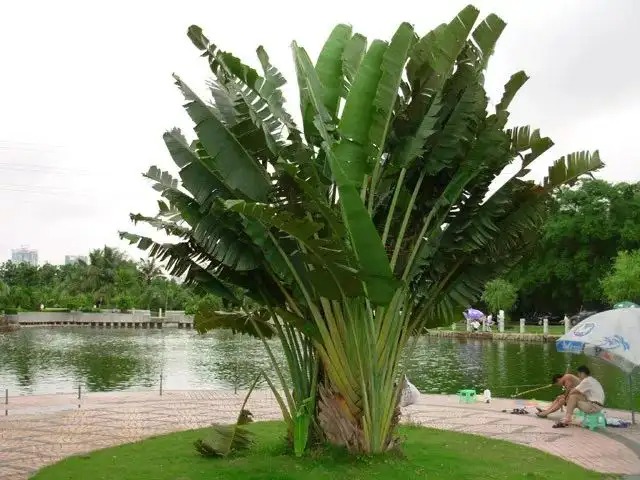
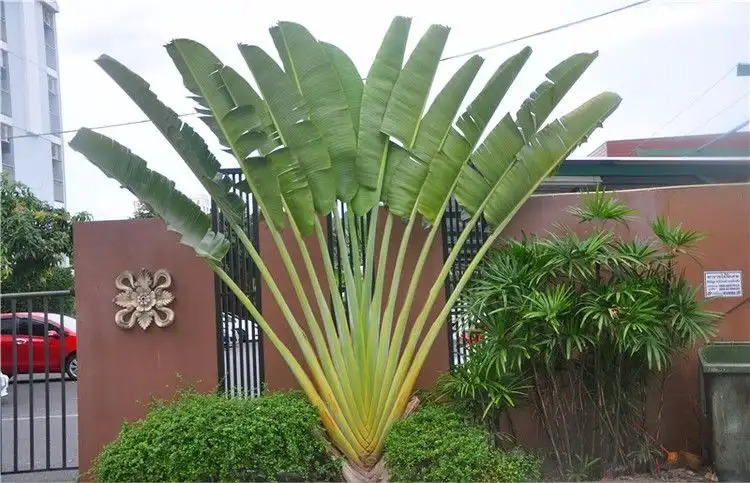
52-Large-leaf Curculigo
Also known as wild palm and common grass, Curculigo belongs to the Curculigo family. It is found in China, Vietnam, and India. It is a herbaceous plant. The plant is approximately 40 to 70 cm tall and, at first glance, resembles a coconut seedling, with a boat-like shape. Mature plants grow in clusters, with small yellow flowers. The optimal temperature for growth is 20 to 30°C. Fertile sandy loam is ideal for cultivation. It can be grown in gardens or potted as an indoor foliage plant. Curculigo is a perennial herb that can reach up to 1 meter in height. Its leaves are 30 to 90 cm long and 5 to 15 cm wide, oblong-lanceolate, with 3 to 6 leaves at the base and fan-shaped veins. It also has tuberous rhizomes underground. Its pedicels are axillary and shorter than its petioles. Its flowers are yellow and typically bloom in summer, making it an excellent foliage plant.

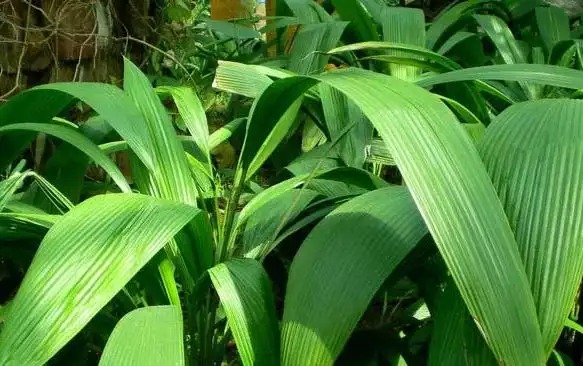
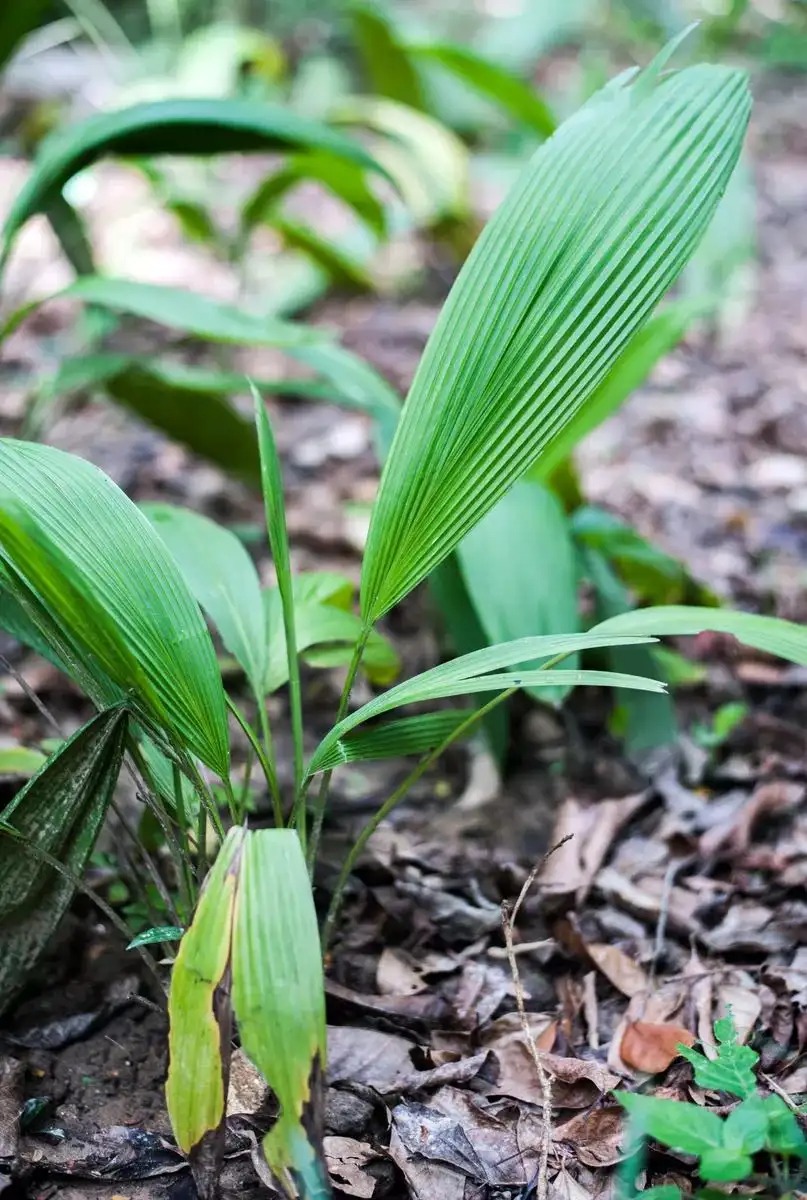
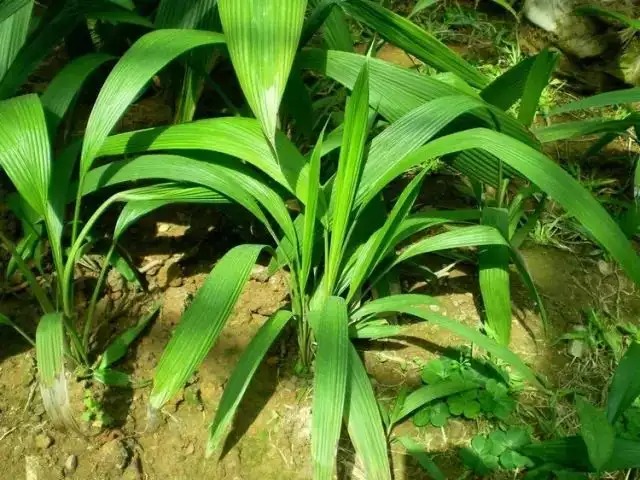
53-Periwinkle
Also known as Calendula, Four Seasons Spring, Daily New, Goose Head Red, and Three Thousand Flowers. Several varieties have been bred in Taiwan, with a trend toward larger flowers. In traditional Chinese medicine, the entire plant can be used for analgesia, anti-inflammation, sleep, laxatives, and diuretics. Some doctors use it in cancer treatment formulas, perhaps because of its anti-tumor properties. However, the entire plant is toxic, so be cautious. Ingestion can cause symptoms such as leukopenia, thrombocytopenia, muscle weakness, and paralysis. Its latex contains alkaloids, such as vinblastine and vincristine, which are extracted and used as chemotherapy drugs for various cancers, including leukemia and Hajjkin's disease.
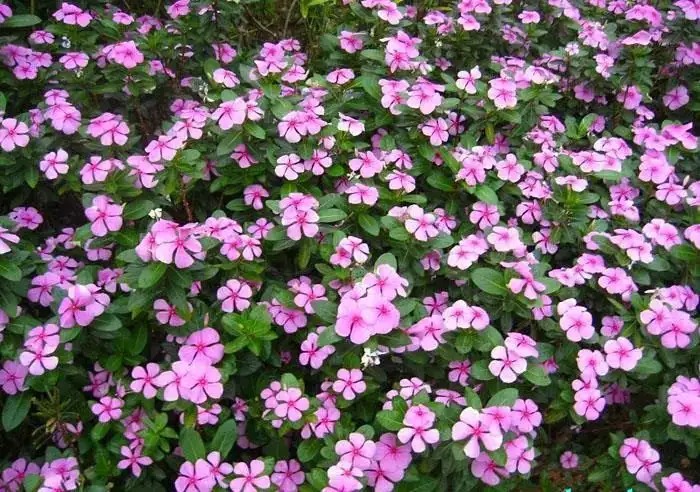
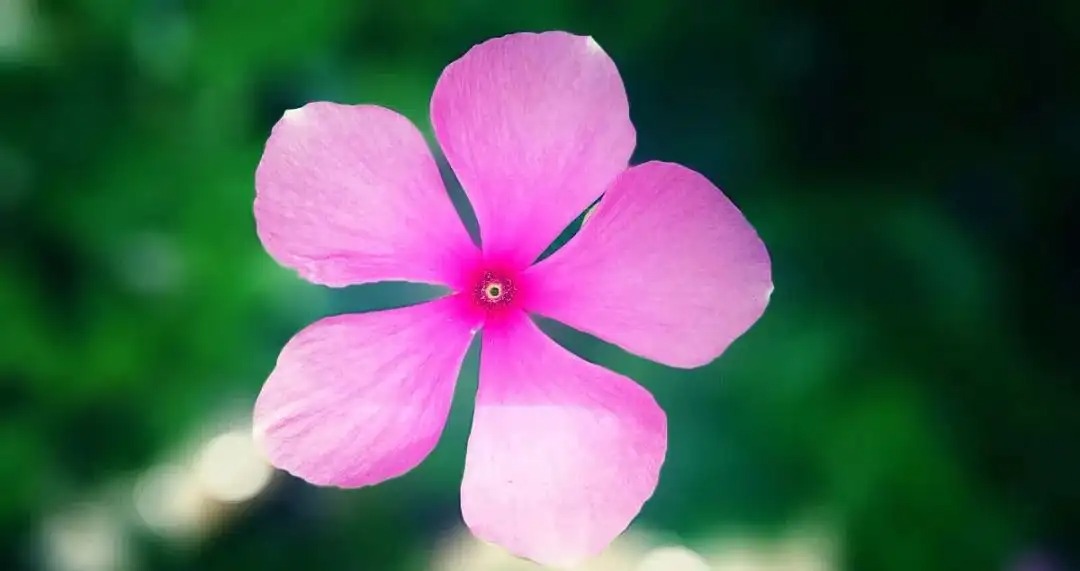
54-Purple-backed evergreen
Also known as Purple Brocade Orchid, Aster, Purple Orchid, Red-faced General, Blood-seeing Sorrow, Clam Flower, and Clam Shell Flower, Dieffenbachia is an evergreen perennial herbaceous plant in the Commelinaceae family. Its broadly lanceolate leaves, borne in a ring-like pattern on short stems, are glossy, dark green. It is a common indoor foliage plant. It prefers a warm, humid climate. Native to Mexico and the West Indies, it thrives in warm, humid climates and thrives in temperatures between 15-25°C. It is light-loving but shade-tolerant, but sensitive to strong sunlight and requires fertile, water-retaining soil.
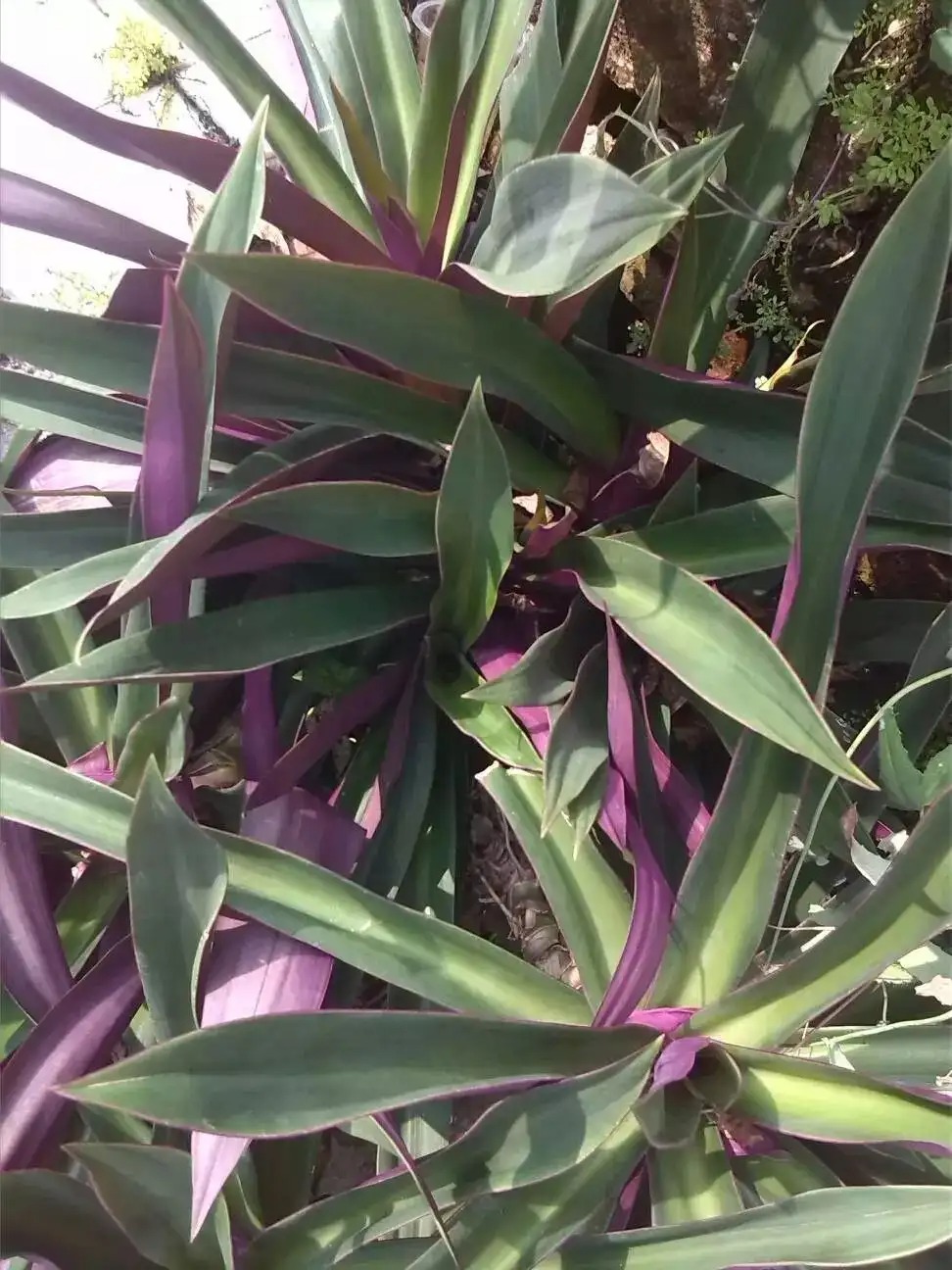

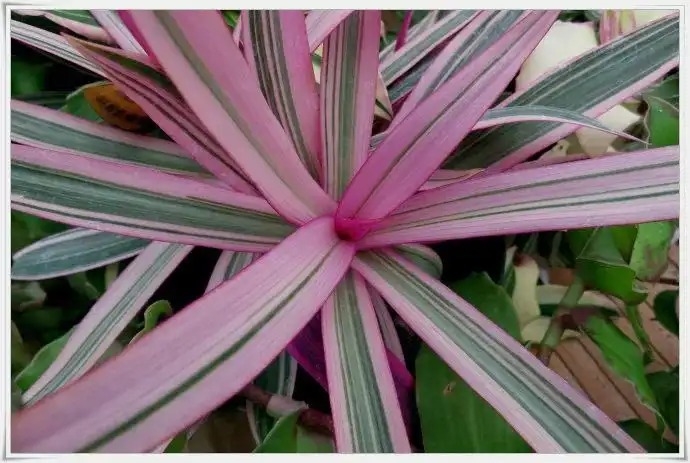
55-White Butterfly
Also known as arrow-leaf taro, purple-stemmed taro, shear-leaf taro, silk vine, and fruit taro, Syngonium is a plant of the Araceae family. With its graceful plant form, varied leaf shapes, and elegant colors, Syngonium, along with Pothos and Philodendron, is considered a representative indoor foliage plant of the Araceae family. It is also a popular decorative material for hanging pots in Europe and the United States.
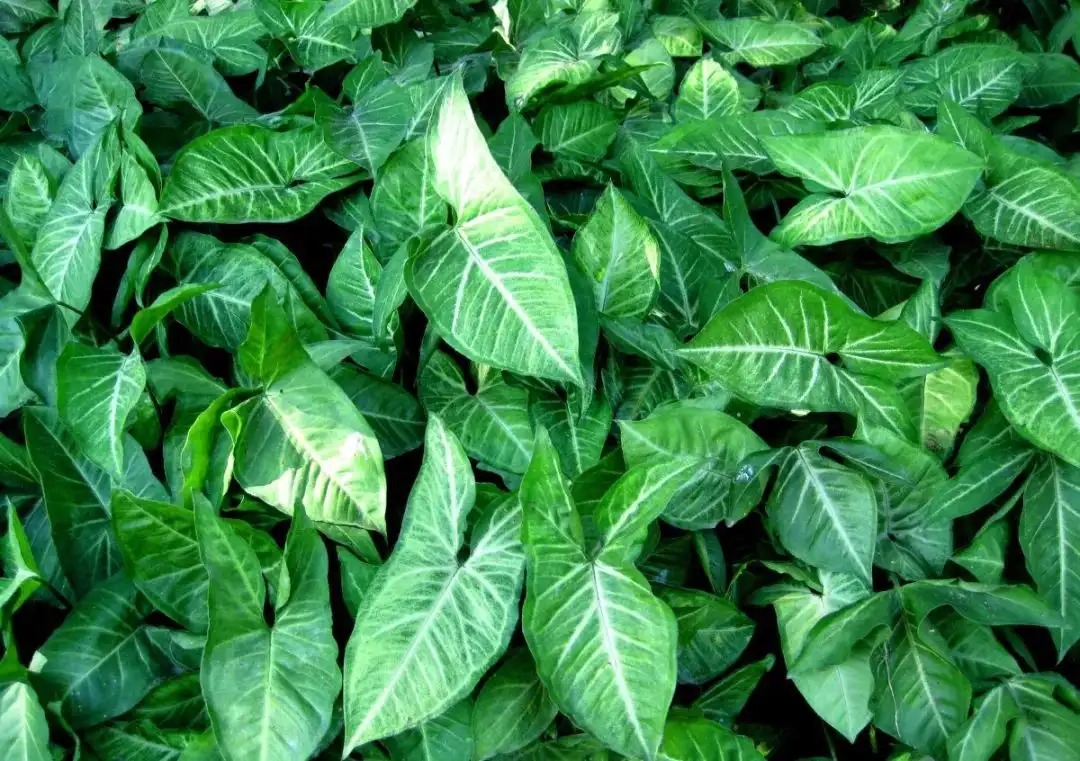
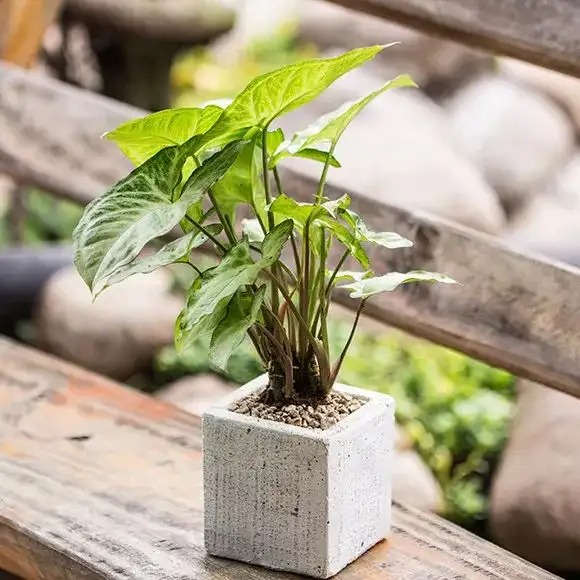
56-Red-backed Osmanthus
This is Osmanthus fragrans, a small evergreen shrub in the Euphorbiaceae family, named for the red undersides of its leaves. It is a highly practical foliage and flowering plant. In the Yangtze River Basin and areas south of it, it is often grown as a potted plant on windowsills, balconies, or gardens. It is also used as a medicinal plant. Its swaying foliage is fresh and beautiful, and potted plants often adorn indoor living rooms (not suitable for long-term indoor placement due to potential carcinogenicity, according to "Light of Science and Technology"). In southern China, it is used for landscaping gardens, parks, and residential communities. Dense clusters with vibrant foliage create a natural and leisurely landscape against buildings or trees.
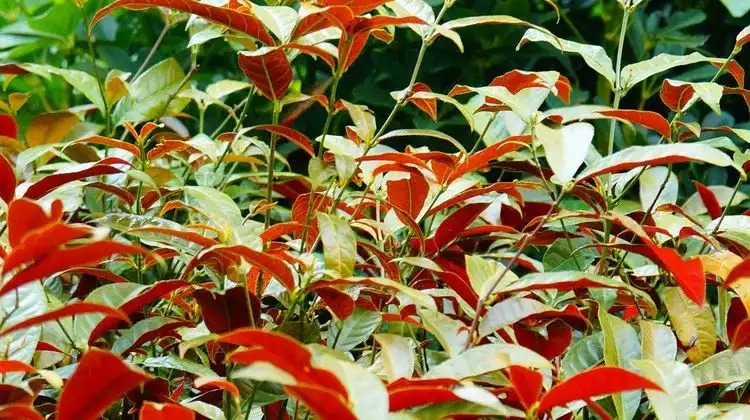
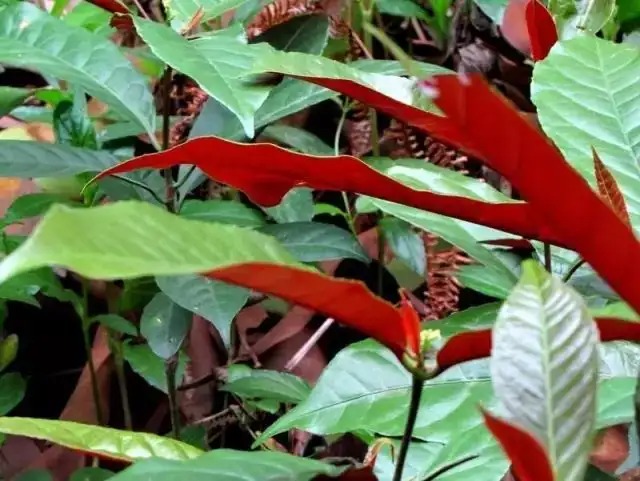
57-Duck leg tree
Other names: Schefflera octophylla, auspicious tree, or shrub. Its twigs, leaves, inflorescences, and calyx are densely covered with short, stellate hairs when young, which gradually fall off. Schefflera octophylla (Lour.) Harms is an evergreen shrub with numerous branches and densely packed branches. Its palmately compound leaves have 5 to 8 leaflets that are oblong, leathery, dark green, and glossy. Its inflorescence is paniculate, with pale pink flowers and deep red berries. It is a common plant in evergreen broad-leaved forests in tropical and subtropical regions. It is native to the subtropical rainforests of Oceania, Guangdong, Fujian, and South America, and is also found in Japan, Vietnam, and India. It is now widely cultivated worldwide.

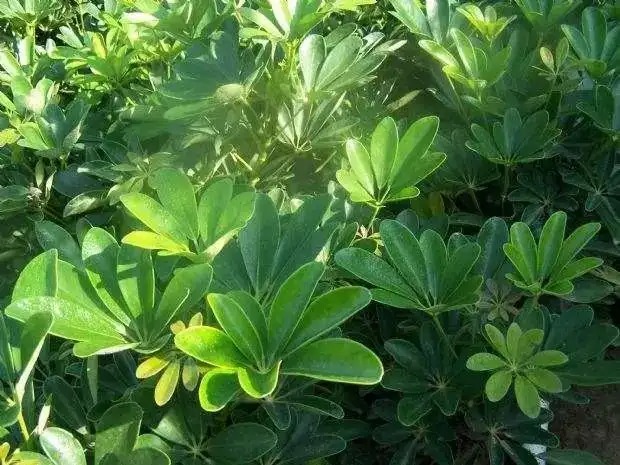
58-Daffodil
Also known as Narcissus, this is a variant of the multifloral daffodil. It is a perennial herbaceous plant in the Amaryllidaceae family. Its leaves emerge from a greenish-white tubular sheath at the top of the bulb, with flower stalks (commonly known as arrows) emerging from the leaves. Each bulb typically produces one to two flower stalks, but sometimes as many as eight to eleven, in an umbel-shaped inflorescence. The petals are usually six, with the tips tinged with pale yellow. The stamens are protected by a bowl-like covering. The bulb is ovate to broadly ovoid, coated with a tan membrane. The leaves are narrow and ribbon-shaped, and the capsule dehisces dorsally. It blooms in spring.

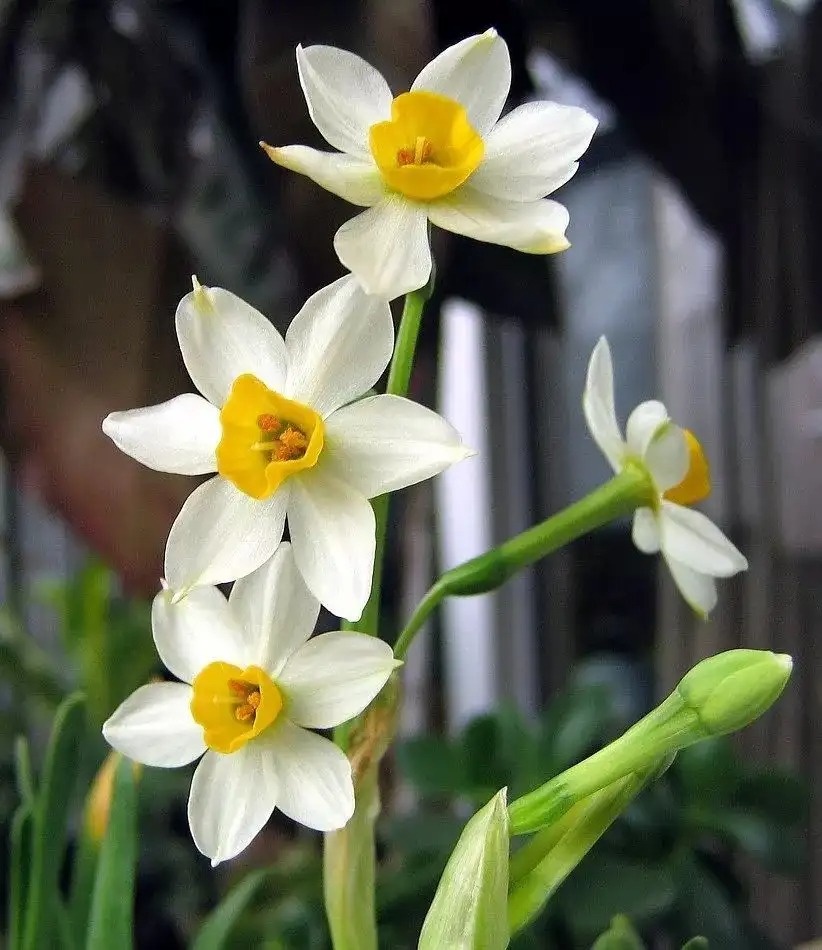
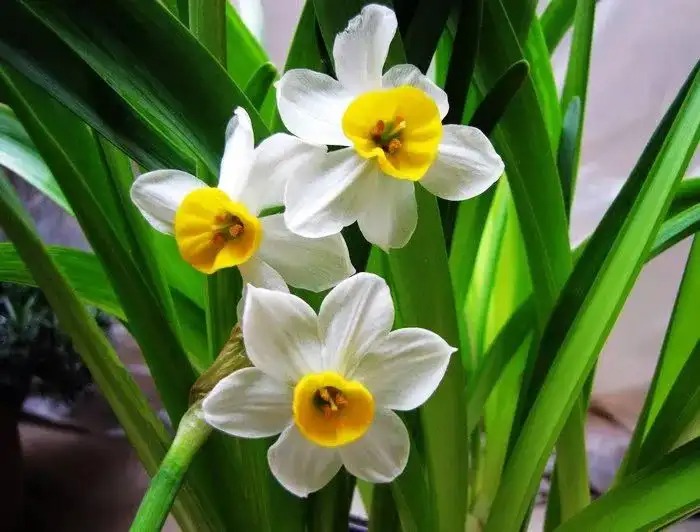

59-Cycad
Commonly known as the Cycad, other names include fire-avoiding banana, phoenix-tail banana, phoenix-tail pine, and phoenix-tail grass. Its Latin name: Cycas revoluta Thunb. It belongs to the Cycadaceae family and genus Cycas. One theory is that it gets its name from its dense wood, which sinks in water and is as heavy as iron; another theory is that it requires a large amount of iron for growth. Also known as phoenix-tail banana, fire-avoiding banana, and phoenix-tail pine, it is primarily cultivated in southern China and is now widely distributed in countries such as Japan, the Philippines, and Indonesia. Cycads are best known for their blossoms, known as "iron tree blossoms." Cycads are beautiful ornamental trees and are widely cultivated. Their stems contain starch, which is edible; their seeds are oily and rich in starch, and are slightly toxic. They are used for both food and medicine, and are effective in treating dysentery, coughs, and hemostasis.
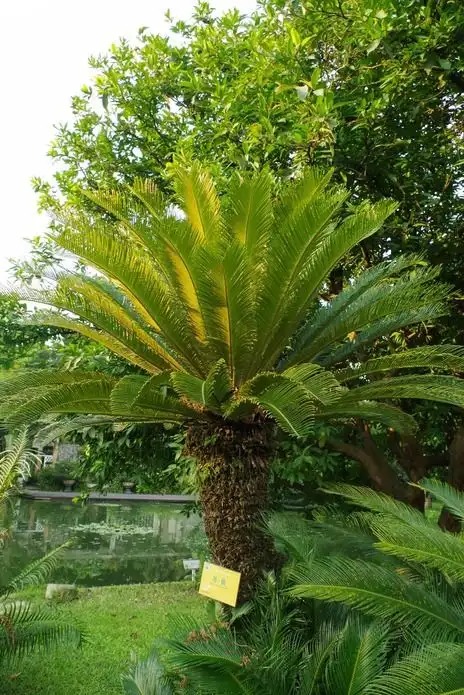
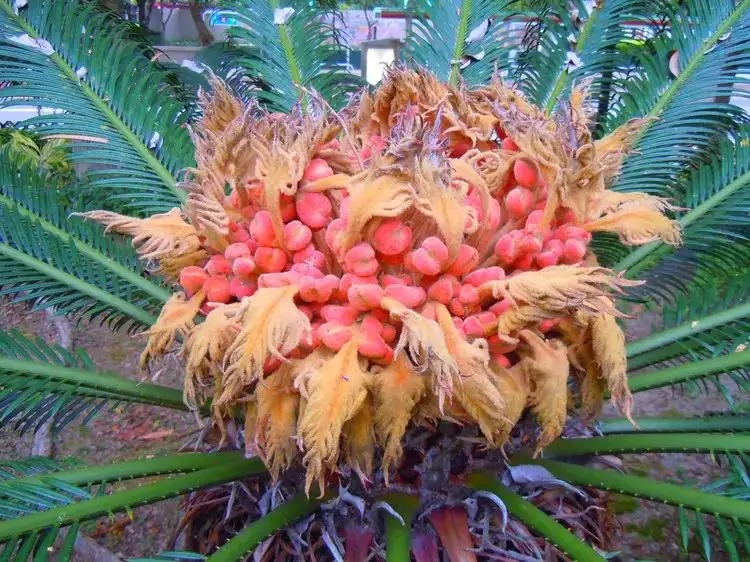
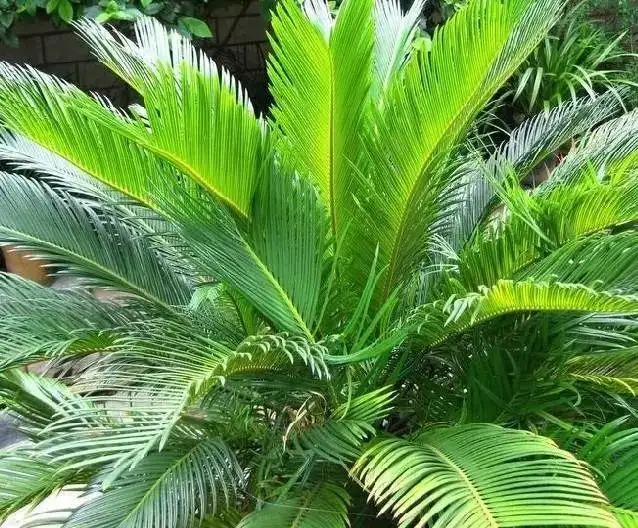
60-Passion Fruit
Passion fruit, also known as passion fruit, is a herbaceous vine of the genus Passiflora in the family Passifloraceae, growing up to 6 meters tall. Its stem is finely striated and glabrous. It bears five petals, equal in length to the sepals. Its base is light green, its center is purple, and its tip is white. The berries are ovoid, 3-4 cm in diameter, glabrous, and purple when ripe. The seeds are numerous and ovate. Flowering occurs in June, and fruiting occurs in November. The fruit can be eaten raw, used as a vegetable, or used as animal feed. Its medicinal properties are stimulating and invigorating. The juicy pulp, when added with calcium bicarbonate and sugar, can be made into a fragrant and delicious beverage, which can also be added to other beverages to enhance their quality. The seeds are pressed for oil, which can be used for food, soap, paint, and other purposes. The flowers are large, beautiful, and fragranceless, making them suitable for garden ornamental plants. In other regions outside of China, the passion fruit is known as the "King of Juice" and the "Money Tree."
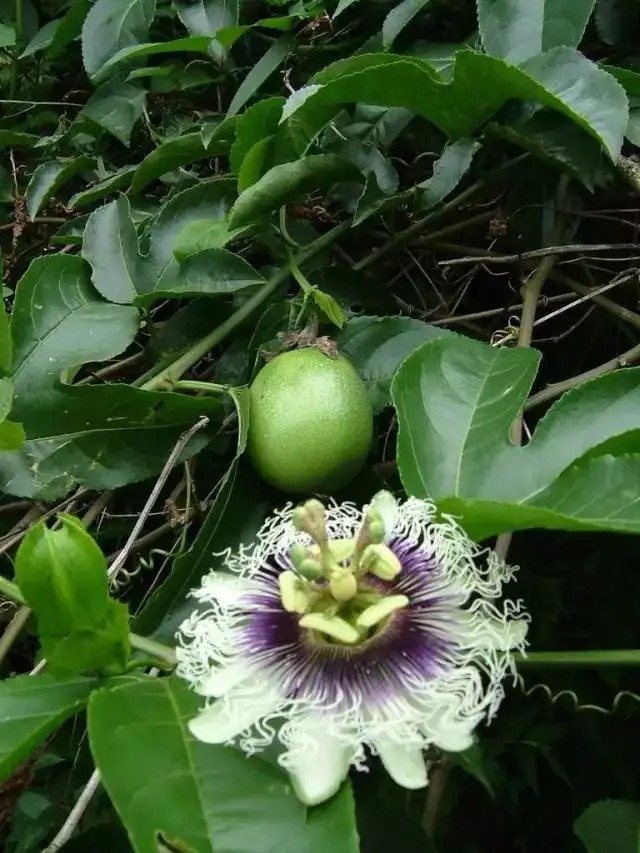
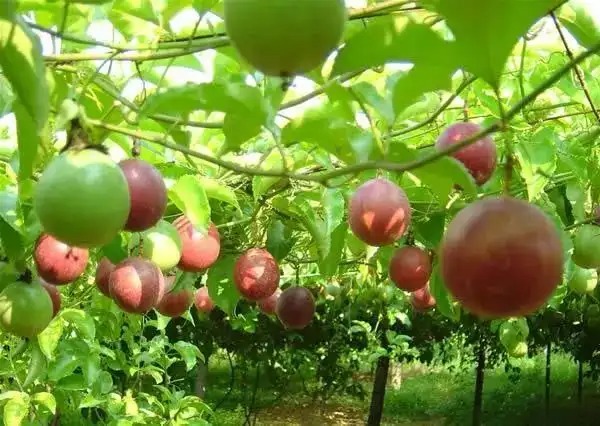
61-Impatiens
Impatiens balsamina (also known as henna, impatiens, or impatiens root) is an annual herbaceous plant from the family Impatiens, family Balsamales, and genus Impatiens. The plant consists of six parts: root, stem, leaves, flowers, fruit, and seeds. Because its flower head, wings, tail, and legs are all phoenix-like, it is also known as Golden Phoenix Flower. The flowers come in a variety of colors, including pink, scarlet, purple, and pale purple. Crushing the petals or leaves and wrapping them around nails creates a vibrant red, a beautiful color that is very popular with girls.
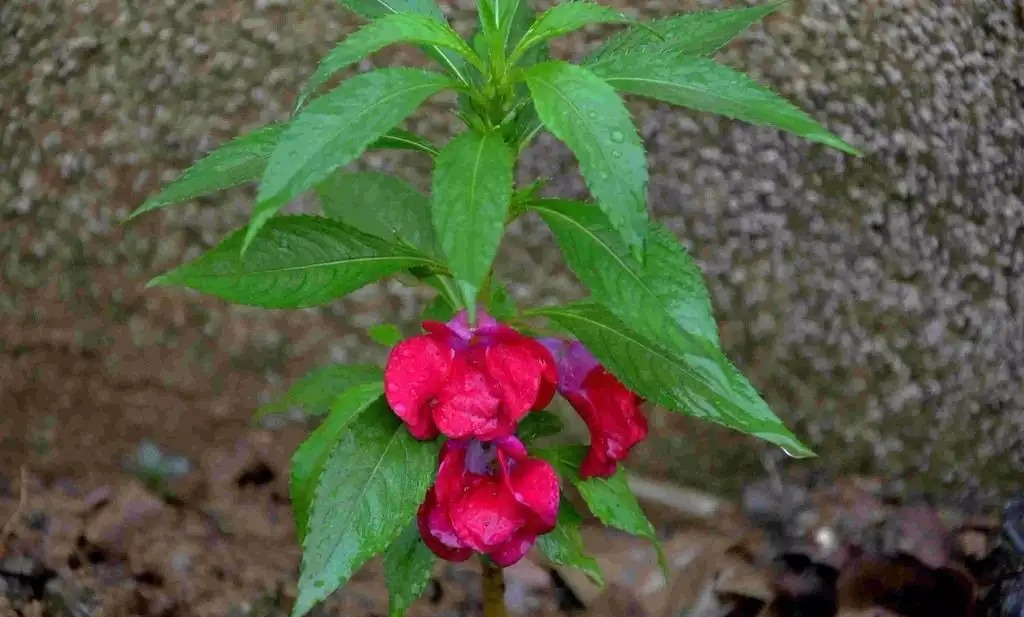
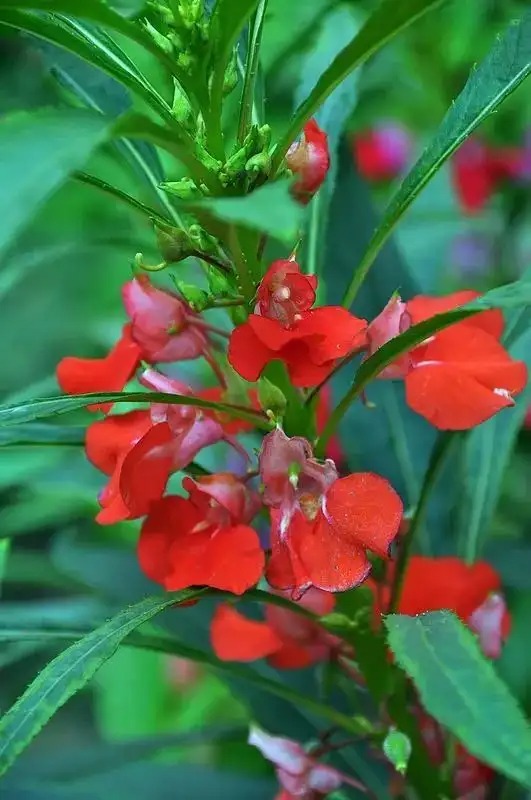
62- Dogtooth Flower
Also known as white dogtooth, lion flower, or tofu flower, this shrub, belonging to the Apocynaceae family, is typically up to 3 meters tall. Its sepals are glabrous, except for the hairy edges. Its branches and twigs are gray-green with lenticels and longitudinally streaked when dry. Its internodes are 1.5–8 cm long. Its leaves are firm, papery, elliptical or elliptical-oblong, shortly acuminate, and cuneate at the base. They are 5.5–11.5 cm long and 1.5–3.5 cm wide, dark green above and light green below. Its corolla is white, with a tube up to 2 cm long. The stamens are borne below the middle of the tube. The style is 11 mm long, with an obovoid stigma. It blooms from June to November, and fruiting occurs in autumn. Dogtooth prefers warm, humid environments, boasting dense foliage and a compact plant. Its flowers are pure white, elegant, and simple, with a long flowering period. It is an important decorative element and a vibrant color, making it suitable for hedges, flower paths, or large potted plants. The leaves are used medicinally, having the effect of lowering blood pressure. They are said to be cooling, relieving heat, promoting diuresis, and reducing swelling. They are also used to treat eye diseases, scabies, breast sores, epilepsy, and dog bites. The roots can treat headaches and fractures. It is cultivated in southern provinces and regions.

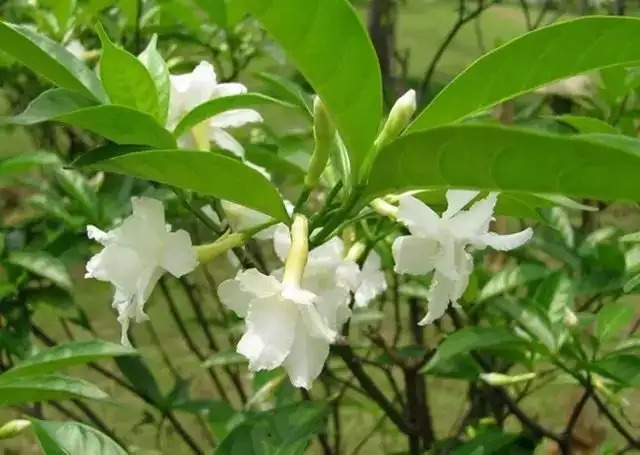
63-Red Fruit
Belonging to the Myrtaceae family, the genus Euphorbia, this small evergreen tree, reaching up to 5 meters in height, is completely hairless and blooms in spring. It is native to Brazil. It prefers moisture and is intolerant to cold and drought. It can be grown as an ornamental potted plant or grown as food. Its elegant and lovely fruiting branches make it a valuable ornamental fruit plant. Red Fruit is a high-end garden tree, popular in South China and often used as a pathside ornamental plant on campuses.


64-Crinum
Also known as Crinum orchid, Eighteen Scholars, and Green Bank Flower, it belongs to the genus Crinum in the Amaryllidaceae family. While its name might mislead you into thinking it's an orchid, it's actually a perennial, robust herb. It blooms from June to August, emitting a fragrant aroma in the evening. Its perianth lobes are white and linear, its stamens are pale red, its anthers are linear and gradually pointed at the apex, and its ovary is fusiform. The fruit is nearly spherical, usually containing one seed. Its leaves and roots are used medicinally to promote blood circulation, dissipate blood stasis, and relieve swelling and pain. It can treat injuries from falls, feverish headaches, and toxic sores. It's found primarily in southern China, often growing in coastal areas or sandy riverbanks. The orchid leaves of Crinum julibrissin are beautiful and have high ornamental value. It can be used as an embellishment for garden scenic areas, campuses, green spaces of government offices, and lawns in residential areas. It can also be used as decorative flowers in courtyards and as hedges around houses. If it is potted, it can be placed in solemn conference halls, luxurious hotels, at the entrance of banquet halls, etc. It is elegant and generous, filling the room with fragrance, and is pleasing to the eye.

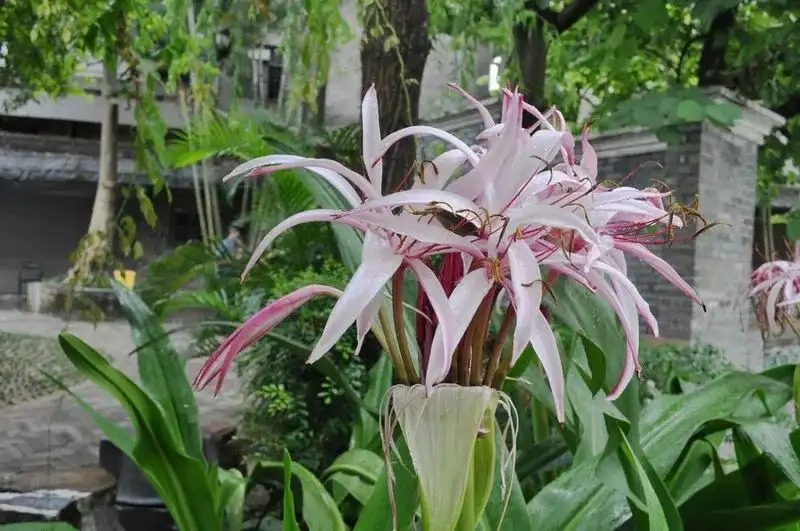
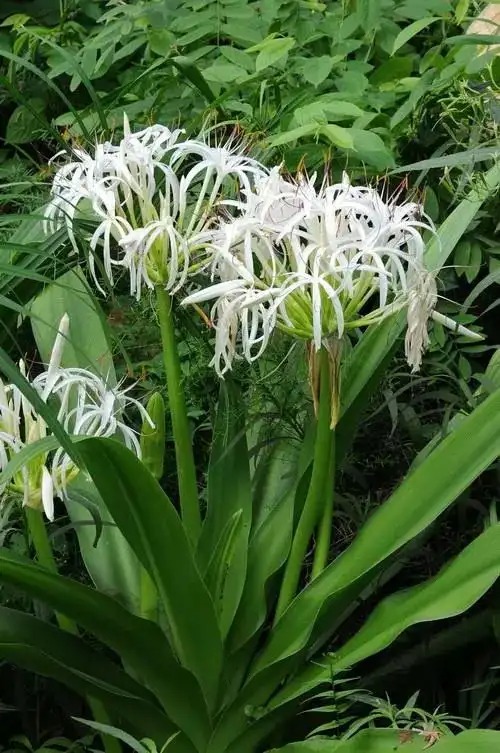
65-Fire Flower (Bignoniaceae)
This small tree belongs to the genus Fireweed in the Bignoniaceae family. Its bark is smooth, and young branches have oblong white lenticels. Its leaflets are ovate to ovate-lanceolate, with a long acuminate apex and a broadly cuneate base, glabrous on both surfaces. The inflorescence, consisting of 5-13 flowers, forms a short raceme and is borne on older stems or side branches. The pedicels are 5-10 mm long. The calyx is spathe-shaped and densely pubescent on the outside. The corolla is orange-yellow to golden yellow, tubular, slightly constricted at the base, with five semicircular, reflexed lobes at the apex. The filaments are finely pubescent at the base, and the anthers are arranged in a "S" shape, with the anthers and stigma slightly protruding from the corolla tube. The style is bifid. It often blooms on tree trunks or older branches, resembling a blazing flame, hence the name Fireweed. The capsule is pendulous and corky. The seeds are ovoid with white, transparent, membranous wings. Flowering occurs from February to May, and fruiting occurs from May to September.
The shaohua tree is found in Taiwan, Guangdong, Guangxi, and southern Yunnan. It is often used in landscaping and is an excellent garden tree. Its flowers can be grown as a vegetable; its bark, stem bark, and root bark are used medicinally to treat dysentery and diarrhea.
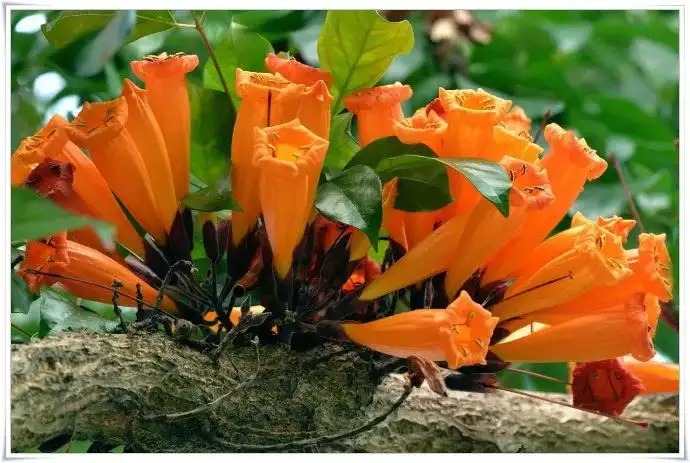
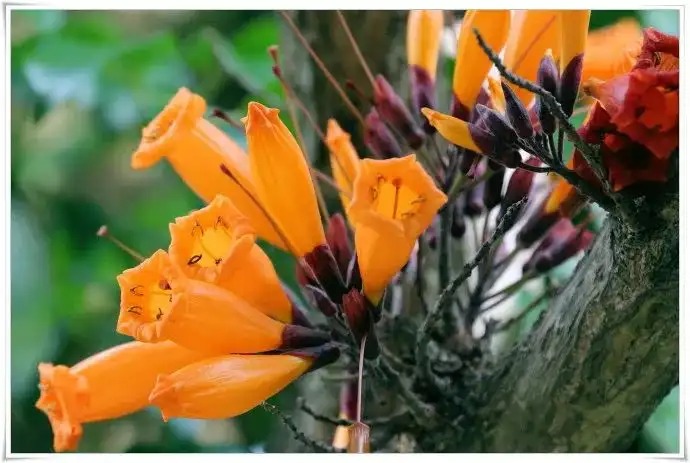
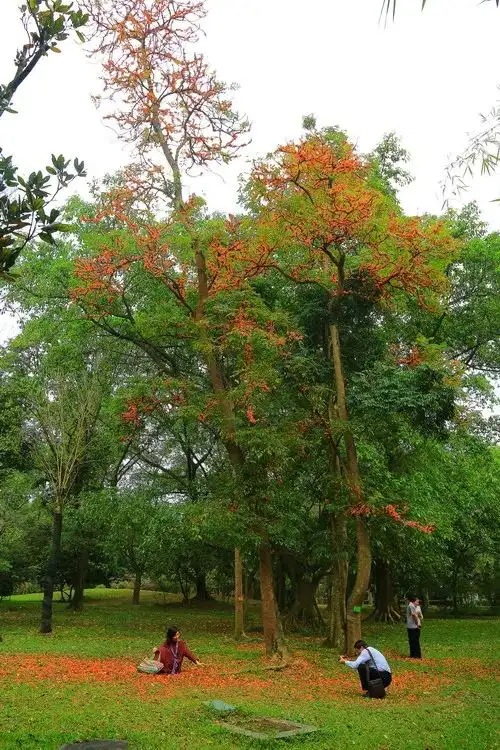
66-Golden Bell Flower
Also known as lantern flower, net-flowered ramie, and red-veined ramie, this evergreen shrub is highly prized for its evergreen leaves, uniquely shaped flowers, long flowering period, and ease of propagation. Its flowers grow in clusters, with erect stems and thick, emerald green leaves that are ovate or palmate with serrated edges. The pedicels are slender, pointing upward during the bud stage and gradually downward as the buds expand, with the flowers typically drooping. The bell-shaped, orange-yellow flowers are veined with vibrant purple-red veins. The stamens and style are long and extend beyond the corolla, giving the flower a hanging, golden bell-like appearance, hence its name. It prefers warmth and full sun, is not cold-tolerant, and tolerates some shade. It prefers fertile, moist, and well-drained sandy loam. Native to Brazil and Uruguay in South America, it is cultivated in the southwest for ornamental gardens.
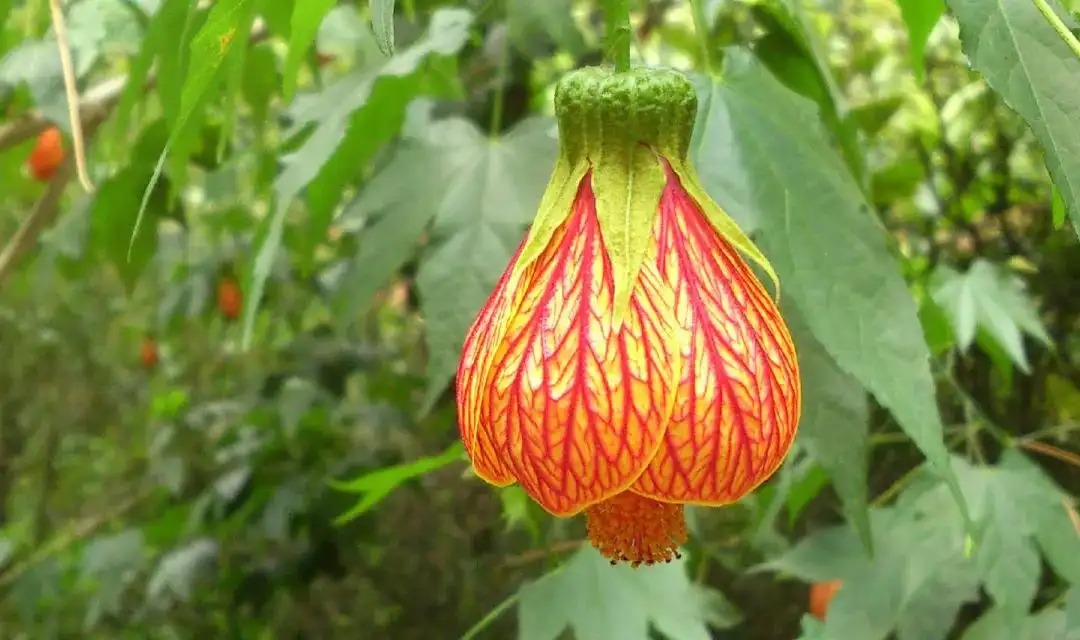
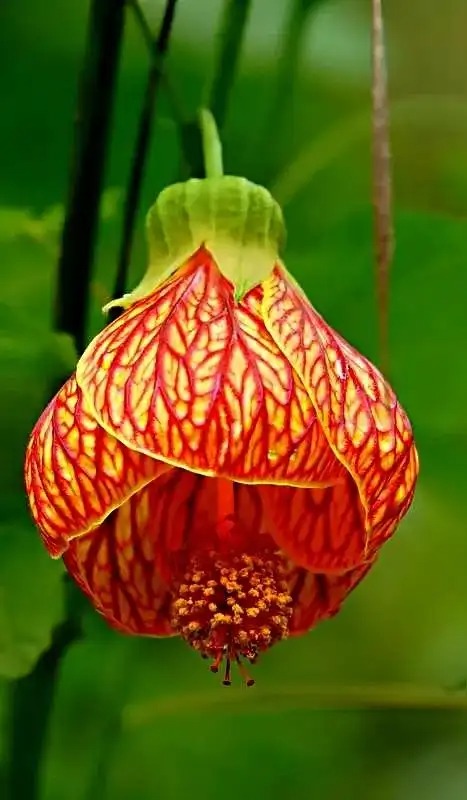
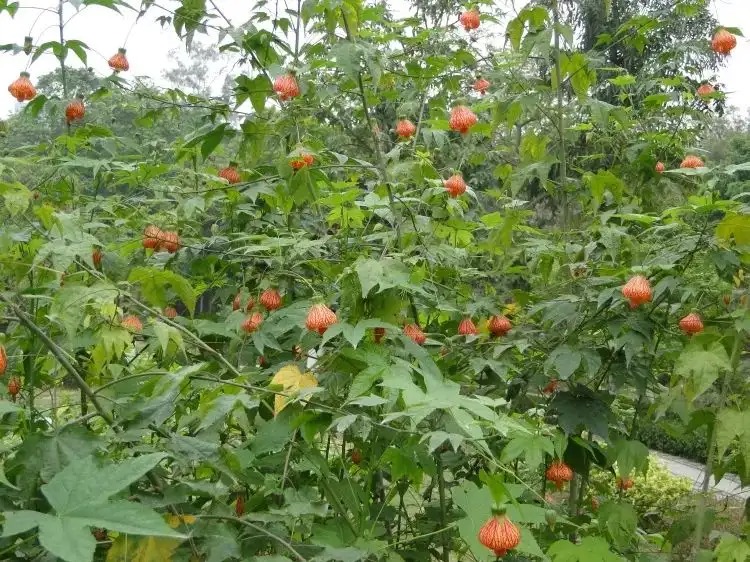

67-Mizilan
This plant is an evergreen shrub or small tree belonging to the genus Meliaceae in the Meliaceae family. Also known as Milan, tree orchid, and fish orchid, it has alternate, pinnate leaves with narrow wings on the petioles. Each leaf has 3 to 7 obovate, entire leaflets with a dark green, glossy surface. Small panicles of inflorescence are borne in the axils of the tree's tips. The flowers are small, about 2 mm in diameter, yellow, and have a strong fragrance. The flowering period is long, peaking in summer and autumn. Meliaceae is native to southern China and blooms yellow flowers in summer and autumn, with each branch bearing 70 to 100 tiny flowers. Because the flowers are so small, about the size of a grain of rice, they are called "meliaceae." Meliaceae can be grown as a potted plant for both foliage and flowers. The small yellow flowers resemble fish roe, earning it the name "fish roe orchid." Its mellow and alluring fragrance makes it an excellent aromatic plant, exuding a rich aroma during its blooming season. It is suitable for decorating venues, foyers, gardens, and homes. During the falling flower season, it can be displayed as an evergreen plant outside the hallway and in front of the building.
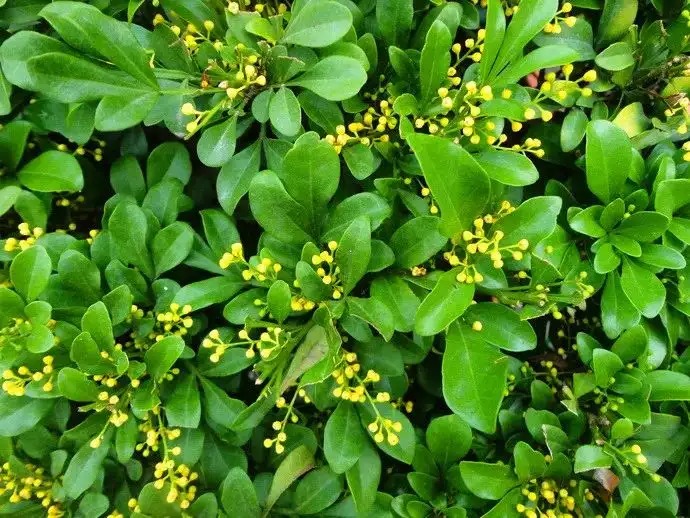
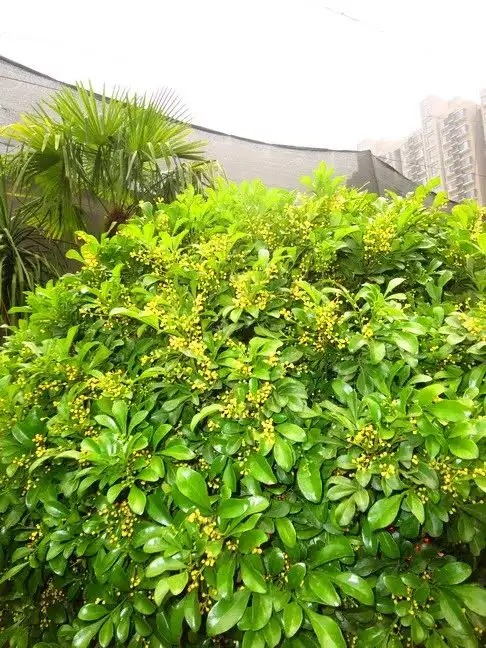
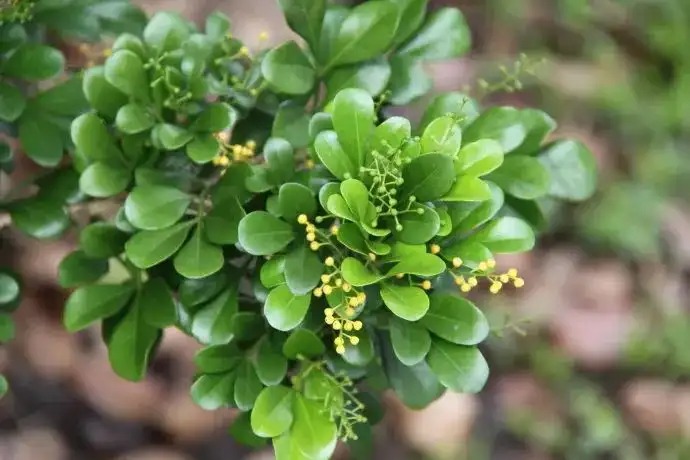
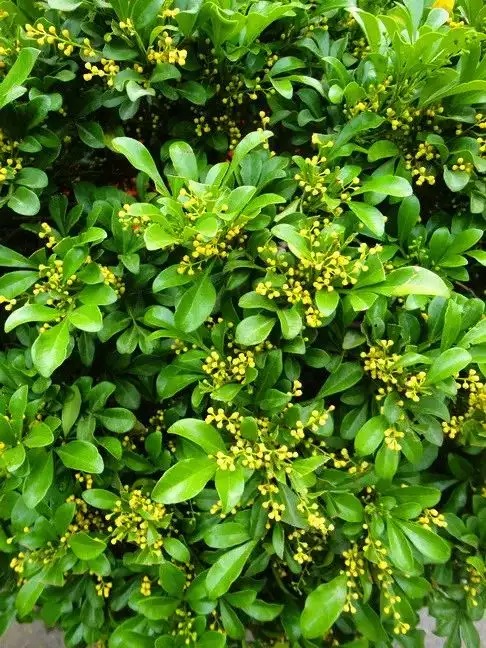
68- Calla Lily (Dripping Guanyin)
Alocasia is a perennial herbaceous plant in the genus Araceae. Its chromosome number is 2n=2x=26. Its stem is sturdy and can reach up to 3 meters tall. Its leaves are clustered at the top of the stem, ovate and hastate-shaped. The spadix is slightly shorter than the spathe, with female flowers at the bottom and male flowers at the top. It is native to southern and southwestern China, Taiwan, and is also found in Southeast Asia. It prefers warm, humid, and semi-shady environments. Its optimal growing temperature is 20-25°C, and its wintering temperature is 10-15°C. Potted plants require semi-shade in summer. It can be cultivated in regular garden soil supplemented with peat, sand, turf, and leaf mold. It can be propagated by division, cuttings, and sowing. Alocasia is a large foliage plant, ideally grown in large pots or barrels. It is suitable for large halls or indoor gardens, and can also be grown in tropical greenhouses, creating a spectacular display. Many people mistake alocasia for calla lilies, but this is not the case. Its rhizomes are rich in starch and can be used as industrial substitutes, but they are not edible. Alocasia is poisonous. It must be fried with rice until golden brown and simmered for a long time (more than 2 hours) to remove the toxins before oral administration. Using it raw or simmering it too briefly can cause tongue swelling and numbness, or even symptoms of central nervous system poisoning. For mild cases, drinking rice vinegar or ginger can help detoxify.

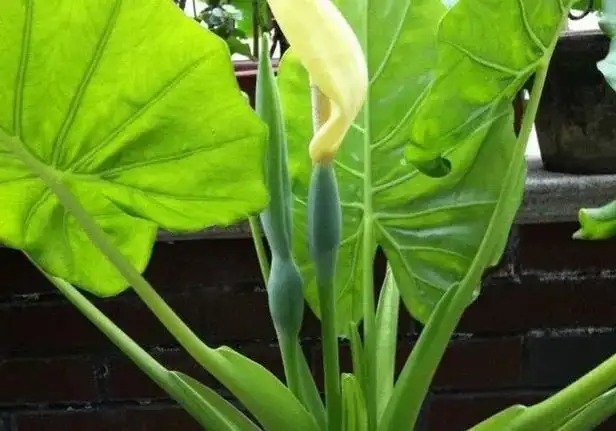
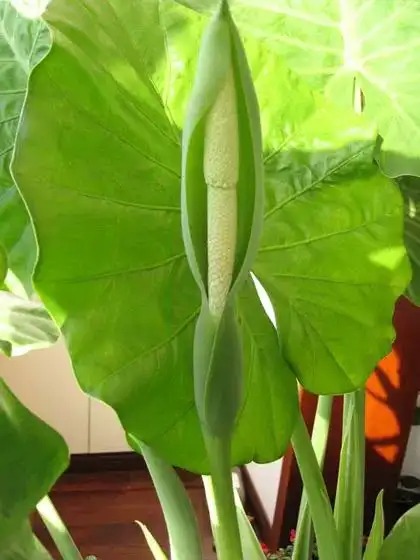
69-Melon Chestnut (Money Tree)
Also known as the Money Tree, this small tree reaches 4-5 meters in height, with a loose crown and chestnut-brown, glabrous young branches. The leaflets are short-stalked or nearly sessile. Flowers are solitary in the axils of the branches' tips; the pedicels are stout, covered with yellow, stellate hairs that fall off; the calyx is cup-shaped and nearly leathery; the petals are pale yellowish-green, narrowly lanceolate to linear, and recurved in the upper half; the stamens are short, with the filaments and tubes 13-15 cm long, yellow below, turning red upward; the anthers are narrowly linear and curved; the style is longer than the stamens and deep red. The capsule is nearly pear-shaped, with a thick, woody, yellowish-brown rind, glabrous on the outside and densely covered with long, woolly hairs on the inside. It dehisces, and each locule contains numerous seeds. The seeds are large, irregularly ladder-shaped, wedge-shaped, dark brown in color, with white whorls, and contain multiple embryos. Flowering occurs from May to November, with the fruits ripening sequentially and germinating naturally after the seeds fall to the ground.
Native to Central America, Mexico, and Costa Rica, it is cultivated in Xishuangbanna, Yunnan. The peel is edible when unripe, and the seeds can be roasted. The beautiful plant, with its stems and leaves remaining green year-round, makes it a popular indoor foliage plant. Its young branches are soft and resistant to pruning, allowing it to be crafted into various artistically shaped bonsai and stylings. It is often used as a street tree and landscape plant in southern China.
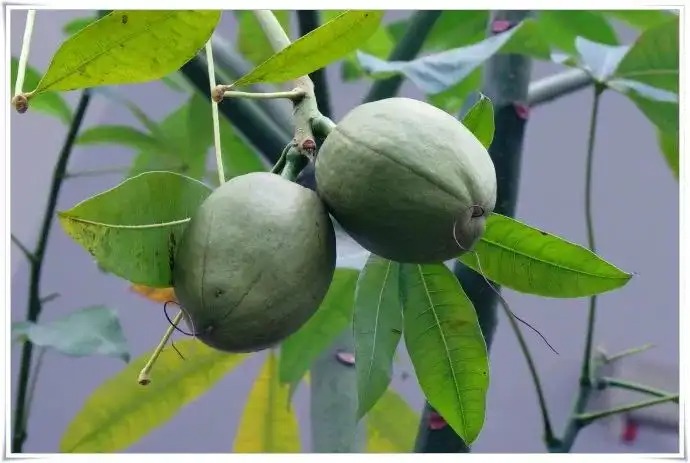

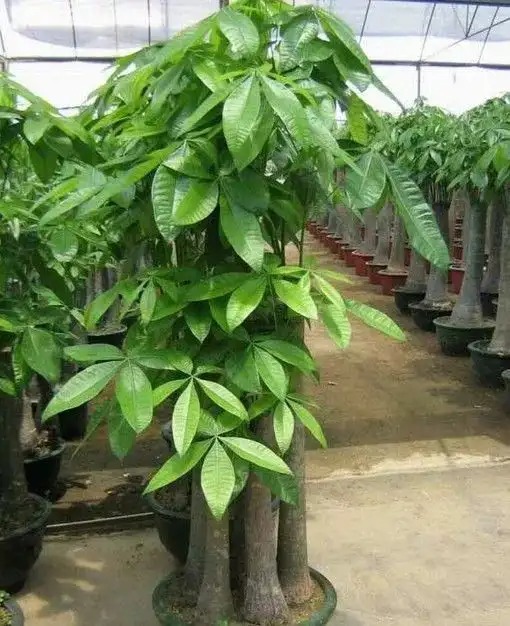
70-Large Leaf Oil Grass
Large-leafed oilgrass, also known as Brazilian carpet grass, is a perennial herbaceous plant of the genus Carpetgrass in the Poaceae family. It is native to tropical America and is an excellent slope protection plant. It is used as a soil-stabilizing and slope-protecting plant for garden lawns and water conservation lawns in South China, and can be used as lawns along roadsides.
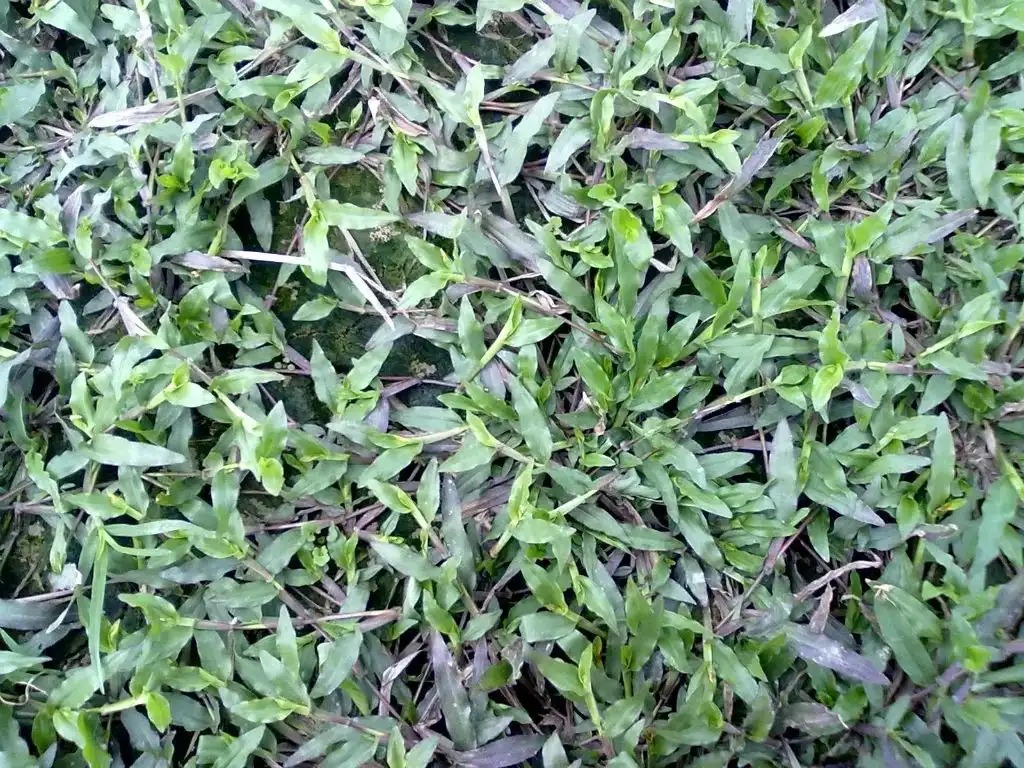
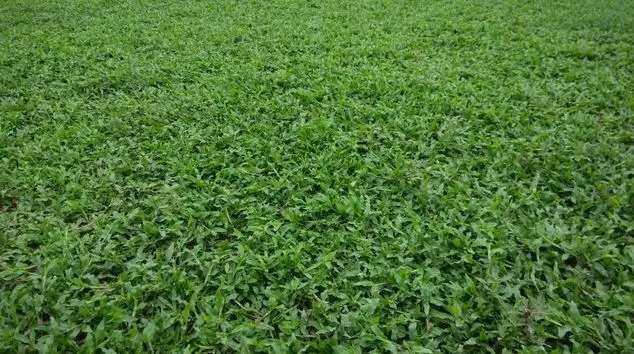

71-Purple Cigar Flower
The plant is about 30 to 60 centimeters tall, with lush foliage. The leaves are small, opposite, oblong or elliptical, and have pointed tips. Flowers bloom year-round, either terminally or axillary, with delicate purple-red corollas. They bloom year-round, but are most abundant in spring.

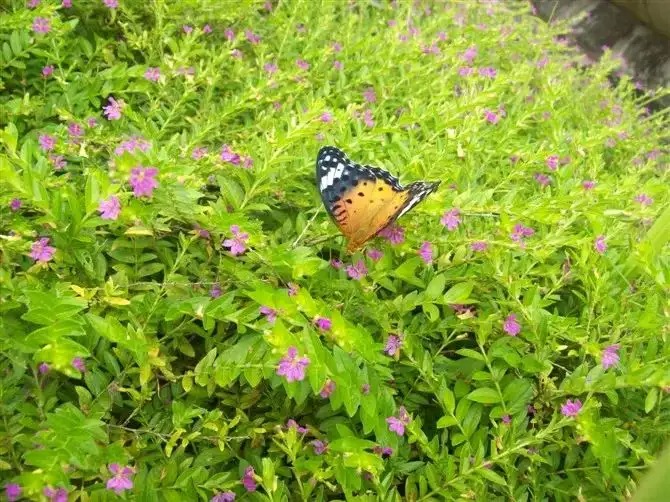
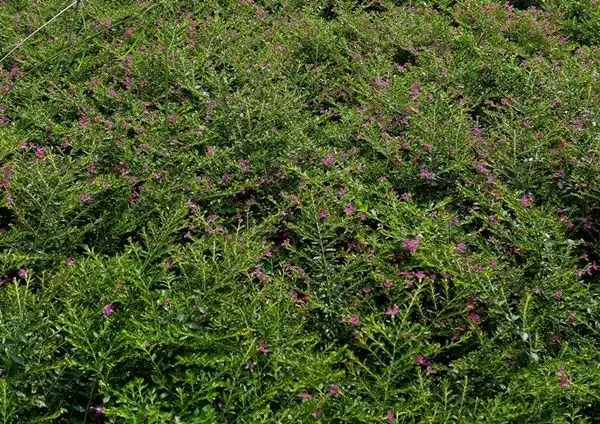
72-Haruha
It is a perennial evergreen herbaceous foliage plant. The plant is tall, reaching over 1.5 meters. The stem is very short, upright, woody, and has many aerial roots. The petiole is strong and slender, reaching up to 1 meter. The leaves are clustered and borne at the end of the stem. The leaves are huge and broadly heart-shaped, up to 60 cm long and 40 cm wide. The leaves are deeply pinnate and palm-shaped, leathery, dark green, and shiny. It is suitable for hotel lobbies, indoor gardens, offices, and home living rooms and study rooms. It can be placed indoors in bright light for several months without significantly affecting its growth; it can also be viewed in a darker room for 2-3 weeks. It is also often grown as a large potted plant, and looks very spectacular when displayed in a living room.
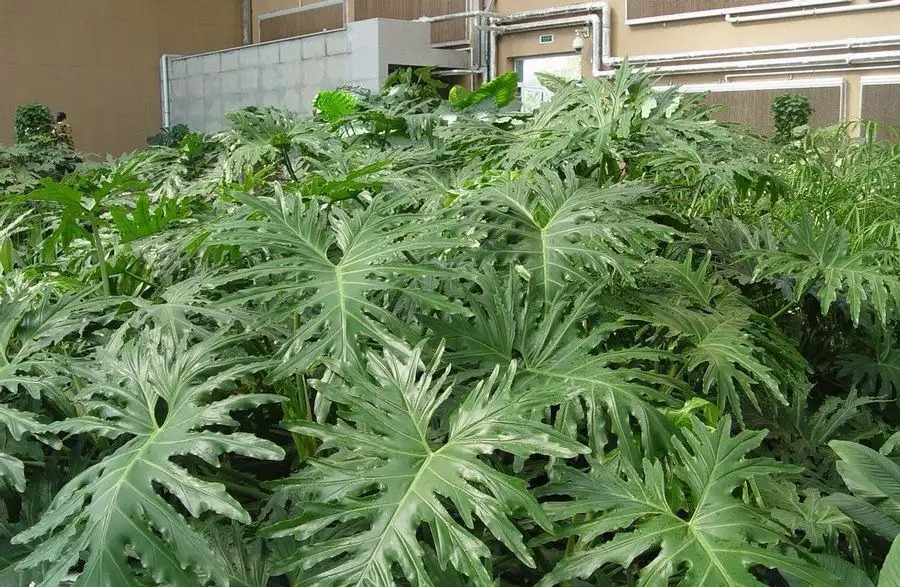
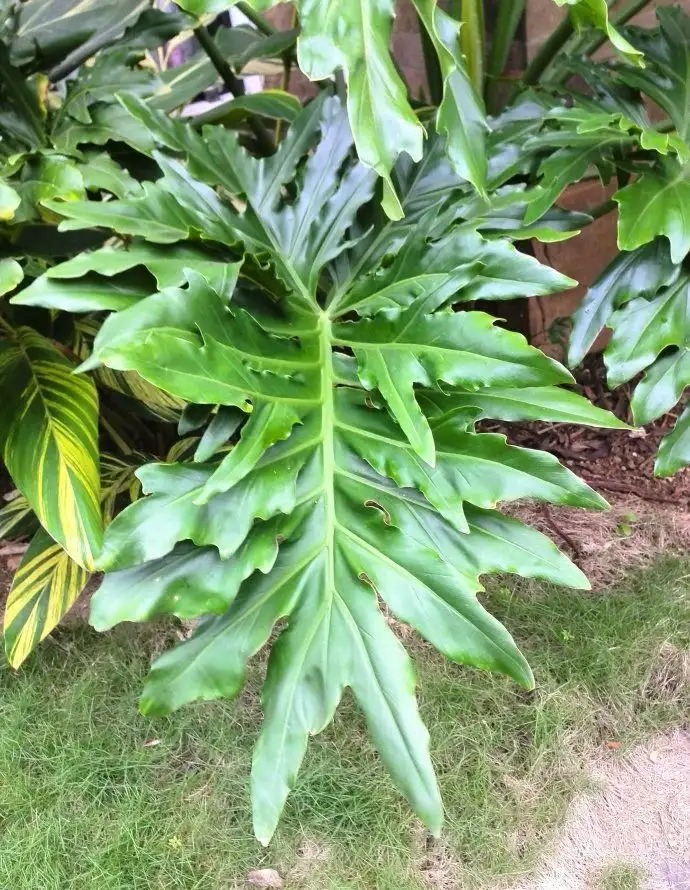
73-Monstera
A climbing shrub. Its stem is green, sturdy, and circular, with a smooth petiole and green leaves. The leaves are large, heart-shaped and ovate in outline, thickly leathery, shiny light green on the surface, and greenish-white on the underside. The spathe is thickly leathery, broadly ovate, boat-shaped, and nearly erect. The inflorescence is nearly cylindrical and pale yellow. The stamen filaments are linear. The pistil is gyroid, yellow, and slightly raised. The berries are pale yellow with bluish-purple spots around the stigma. Flowering occurs from August to September, with the fruit ripening after the flowering period in other years. It is cultivated in the open in Fujian, Guangdong, and Yunnan, and in greenhouses in Beijing, Hubei, and other places. It is native to Mexico and is often introduced and cultivated in tropical regions for ornamental purposes. The infructescence is delicious and edible, but often has a numbing flavor. The leaves of Monstera deliciosa are peculiarly shaped, with cracked pores, resembling the back of a turtle. The stems have thick nodes similar to those of Podocarpus rostratus, and dark brown aerial roots crisscross and resemble electrical wires. Its leaves are green all year round and it is extremely shade-tolerant. It is a famous large indoor potted foliage plant.

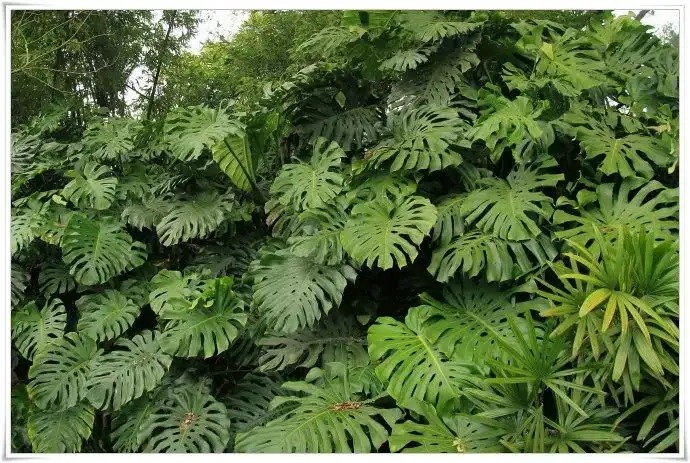

74-Araucaria
Araucaria is a tree that reaches 60 to 70 meters tall in its native habitat, with a diameter at breast height exceeding 1 meter. Its bark is gray-brown or dark gray, coarse, and transversely fissured. Its branches are flat or oblique, with a spire-shaped crown in young trees and a flat top in older trees. Its branches are densely distributed, drooping, and arranged in a nearly pinnate pattern. Araucaria is cold-tolerant and drought-shy, requiring ample sunlight in winter. Native to the southeastern coastal areas of Oceania, it is now cultivated in gardens in Guangdong, Fujian, Taiwan, Hainan, Yunnan, and Guangxi. It is also a prized indoor potted ornamental tree. Its spire-shaped form, lush branches and foliage, with triangular or ovate leaves, makes it a world-renowned garden tree. Potted seedlings are suitable for embellishing living rooms, hallways, and study rooms. They can also be used to decorate various conference halls and exhibition halls. They also make great gifts for friends and family celebrating a business opening or housewarming.
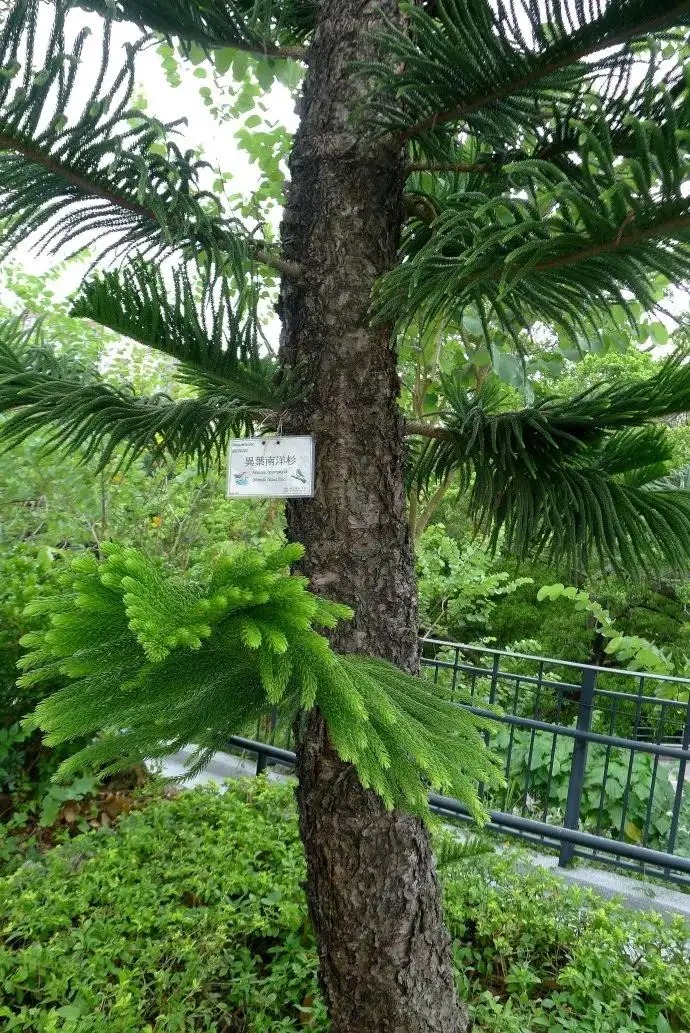
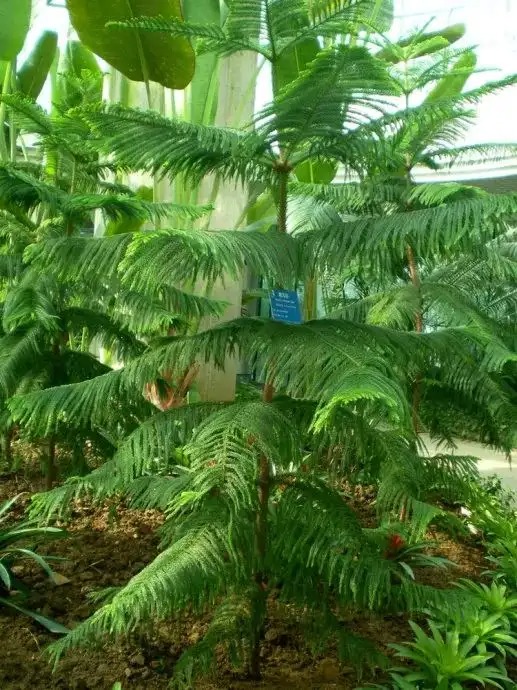
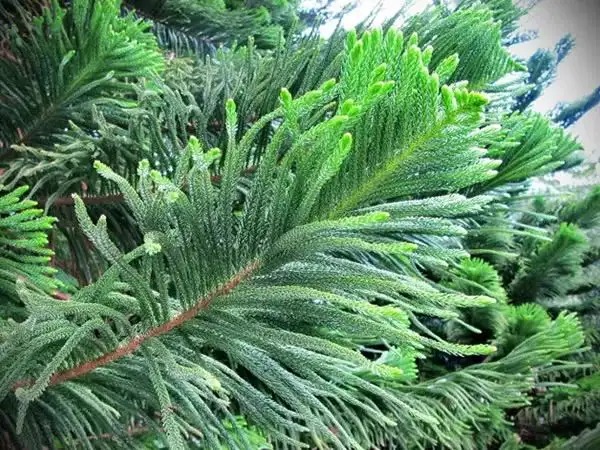

75-Palmetto
Livistona is a perennial evergreen tree of the genus Livistona in the Arecaceae family. It can reach heights of up to 20 meters, often with a swollen base, broad kidney-shaped, fan-shaped leaves, and oval, olive-shaped fruits. Livistona is not only an ornamental plant and a good landscape plant for gardens, but also a valuable resource for forestry. Its young leaves can be used to weave fans, while its older leaves are used to make straw raincoats. The ribs of its leaf lobes can be used to make toothpicks. Its fruits and roots are used medicinally. Livistona, with its evergreen, umbrella-shaped crown and large, fan-like leaves, is an important landscape plant in tropical and subtropical regions. It is often planted in landscapes, providing dense shade in summer, creating a tropical atmosphere.
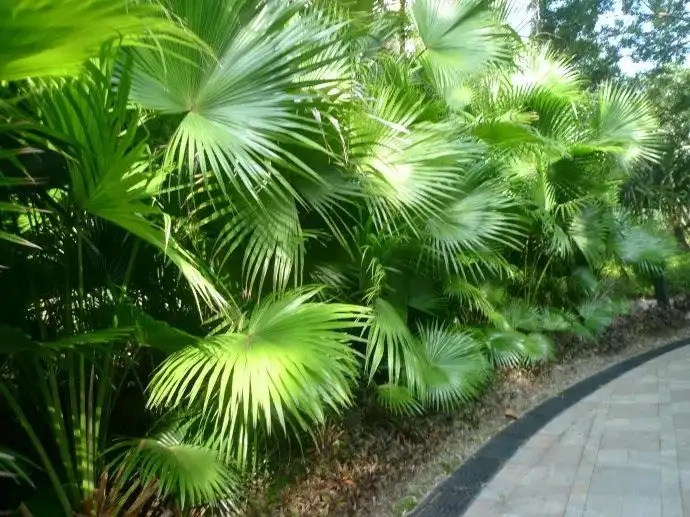
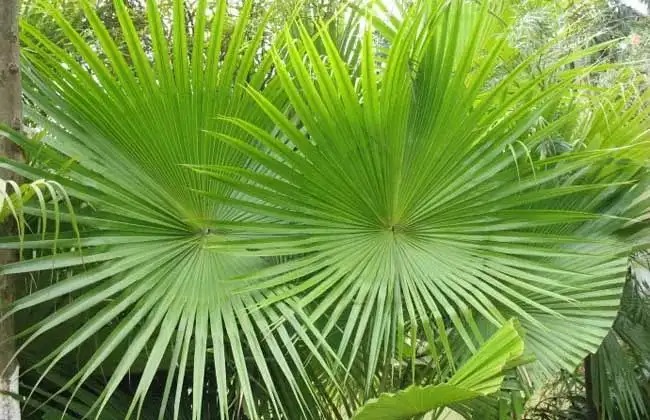
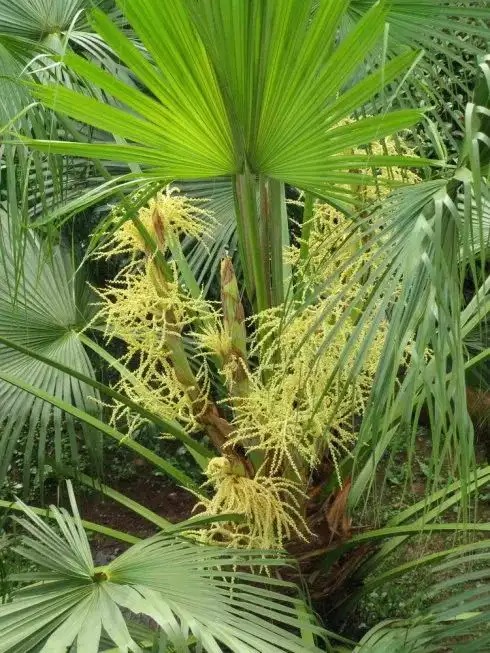
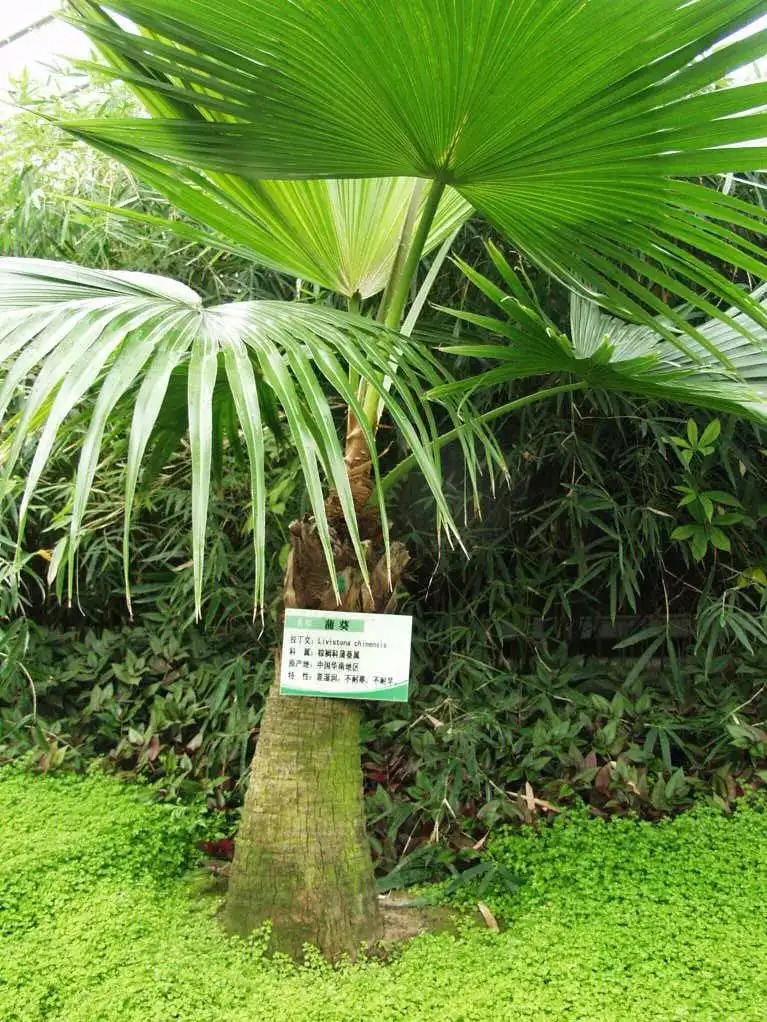
76-Dragon Blood Tree
It is also known as the "bleeding tree," the "blood-activating elixir," and the "plant of longevity." It is a precious Yunnan red medicine, also known as "Dracaena draco" (Dracaena draco), and is as famous as Yunnan Baiyao. It is also the main ingredient in the famous medicine "Qili Powder." Li Shizhen praised it in his "Compendium of Materia Medica" as a "blood-activating elixir," boasting excellent blood-activating properties, including promoting blood circulation, removing blood stasis, relieving swelling and pain, and astringing and stopping bleeding. The name "Dracaena draco" comes from the fact that when its bark is cut, a deep red sap, resembling human blood, oozes out. It is primarily found in limestone regions at high altitudes. Dracaena draco prefers high temperatures, high humidity, and abundant sunlight, resulting in vibrantly colored leaves. However, it is not cold-tolerant, with winter temperatures around 15°C, with a low of 5-10°C. Low temperatures can cause yellow-brown patches to appear on the leaf tips and margins due to insufficient water absorption by the roots. Dracaena draco prefers loose, well-drained soil rich in humus and nutrients. With its graceful, regular shape and diverse leaf shapes and colors, Dracaena is an excellent foliage plant for modern interior decoration. Small and medium-sized potted plants can beautify study rooms, living rooms, and bedrooms, while large and medium-sized plants can beautify and decorate living rooms. Dracaena is highly adaptable to light and can be displayed continuously for 2-4 weeks in a dark room, or long-term in a bright room.
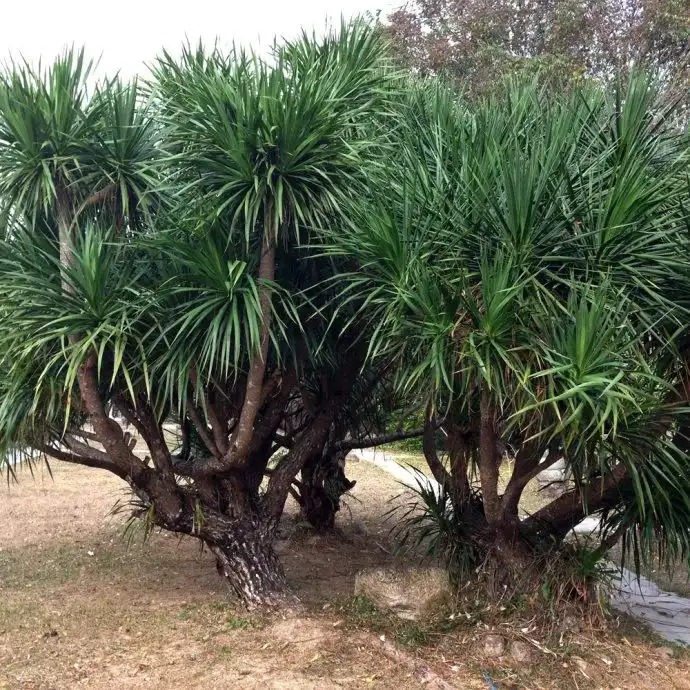
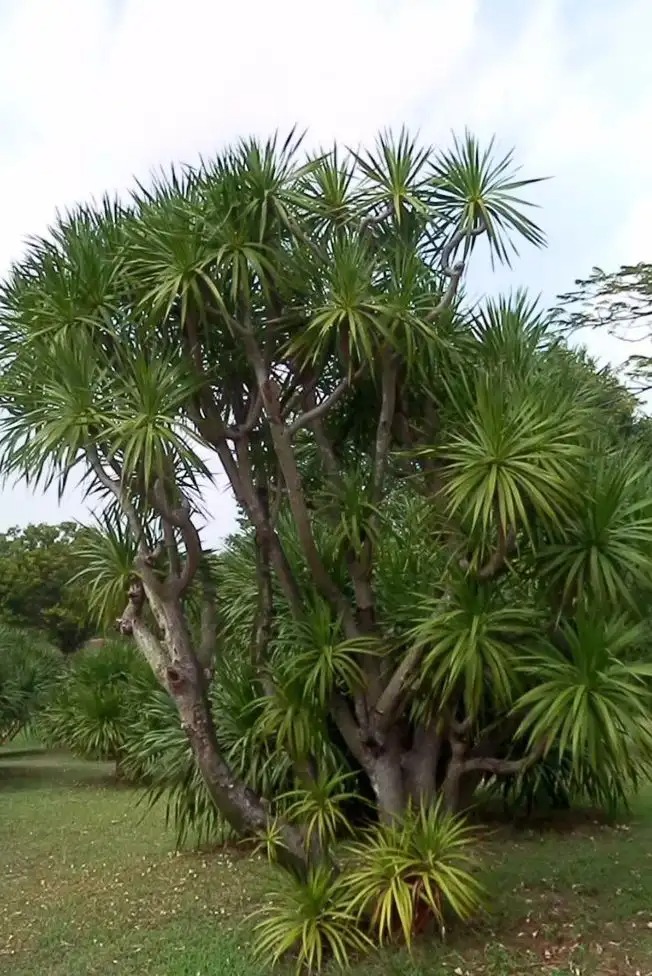
77-Breadfruit Tree
An evergreen tree with thick, gray-brown bark, the breadfruit tree is a woody food plant that also serves as an ornamental plant. Its fruit, which tastes like bread, derives its name. Its wood is light, soft, and coarse, making it suitable for construction and for use by island residents as canoes. The breadfruit tree is suitable for planting as a street tree or in gardens.
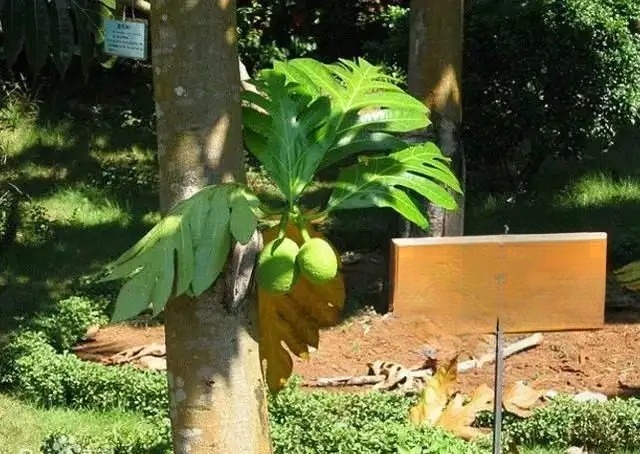
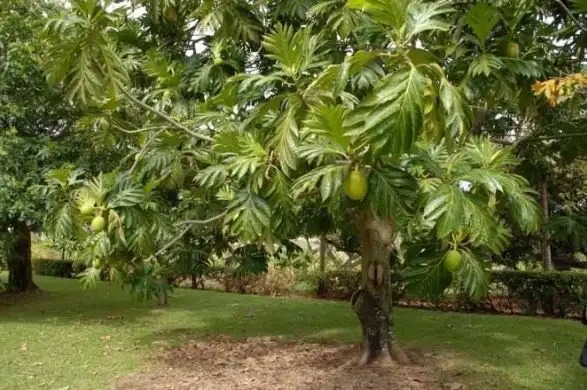

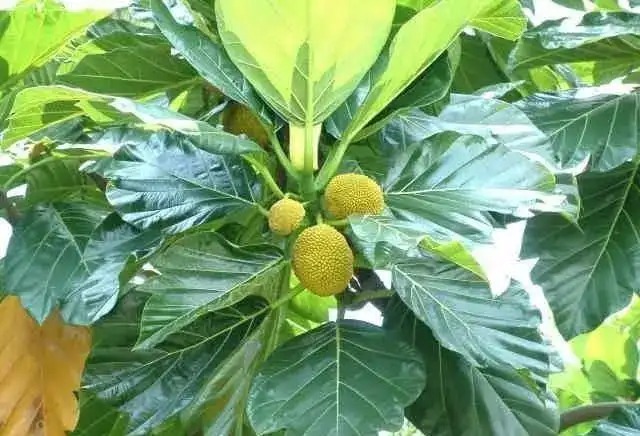

78-Dicranopteris dichotoma
Also known as iron wolf fern, it is a species of true fern in the genus Dicranopteris of the family Diplodocosapentaenopsis in the order Polypodiaces. It is widely distributed in provinces and regions south of the Yangtze River; southern Korea and Japan. It is an indicator plant for acidic soil and has medicinal value.

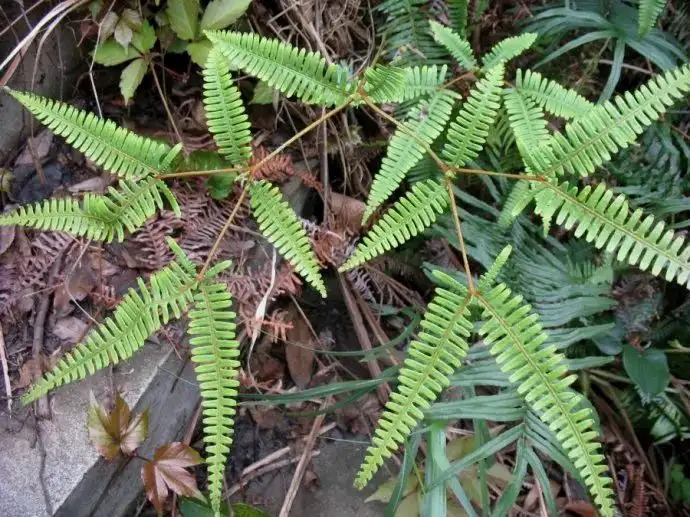
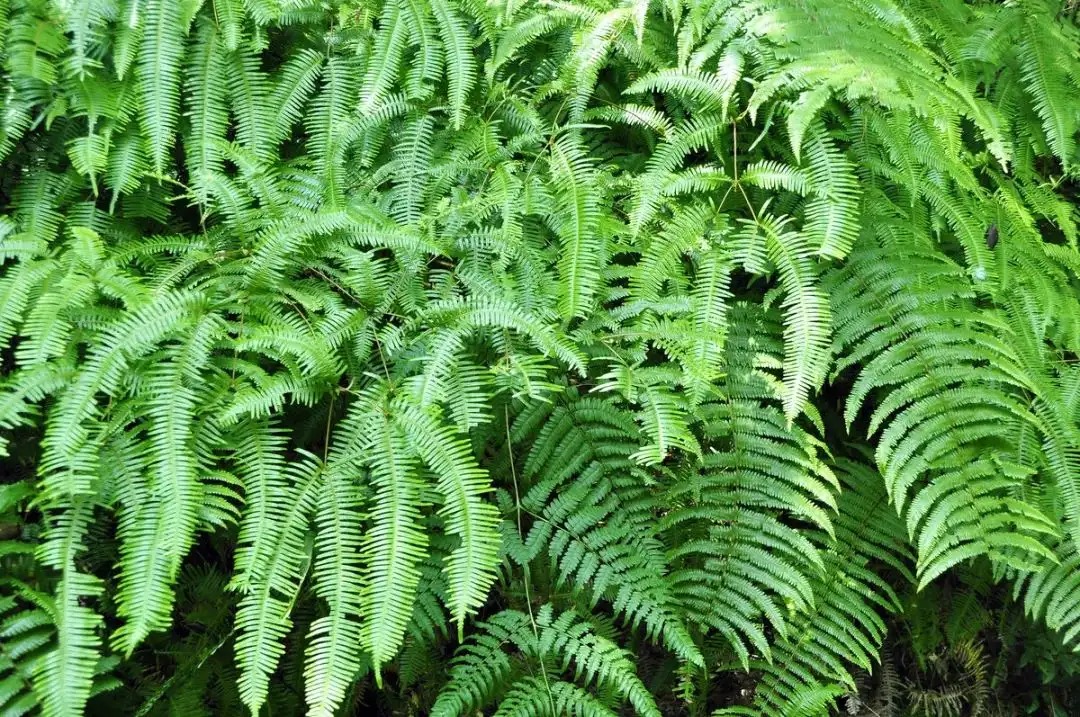
79-Nephrolepis
Epiphytic or terrestrial. The rhizome is erect, covered with fluffy, light brown, long, subulate scales. The lower portion bears thick, wire-like runners that spread horizontally in all directions. These runners are tan, unbranched, sparsely scaly, and have slender brownish-brown whiskers. The leaves are clustered, dark brown, and slightly glossy. The leaf blades are linear-lanceolate or narrowly lanceolate, once pinnate, with numerous pinnates, alternate, often densely arranged in a shingle-like pattern, lanceolate, and with sparse, shallow, obtuse serrations on the leaf margin. The leaf veins are distinct, with slender lateral veins that slant upward from the main vein and fork at the base. The leaves are firm, herbaceous, or herbaceous, and brownish-green or brownish-brown when dry, becoming smooth. The sori are arranged in a single row on either side of the main vein. They are reniform and borne at the tips of the upper lateral veinlets of each group of lateral veins, located one-third of the way from the leaf margin to the main vein. The sori cap is reniform, brownish-brown, with a lighter margin and no glabrous hairs. Nephrolepis ornamental value: Nephrolepis potted plants can be used to decorate desks, coffee tables, windowsills and balconies. They can also be hung in hanging pots in guest rooms and study rooms. In gardens, they can be used as shade-bearing ground cover plants or arranged in wall corners, rockery and poolside. Its leaves can be used as a foil for cut flowers and vases. In Europe and the United States, Nephrolepis is processed into dried leaves and dyed, becoming a new type of interior decoration material. If dendrobium is used as the main material, accompanied by Nephrolepis, bamboo palm and Schefflera chinensis, the effect is simple, bright and full of modern atmosphere. If African daisy is used as the main flower, wall inserted, and accompanied by Nephrolepis and bamboo palm, there is a strong visual decorative effect. Nephrolepis can absorb heavy metals such as arsenic and lead, and is known as the "soil cleaner". Centipede grass's ability to absorb arsenic in the soil is 200,000 times greater than that of ordinary plants. It can be harvested for many years after being planted once, and can be harvested three times a year. After absorbing a large amount of heavy metals, it is incinerated on site. The entire treatment process is subject to strict process control. Not only is the volatilization of arsenic effectively controlled during the incineration of centipede grass, but the diffusion of heavy metals in contaminated soil is also reduced, and heavy metals are blocked from entering the food chain to avoid secondary pollution.
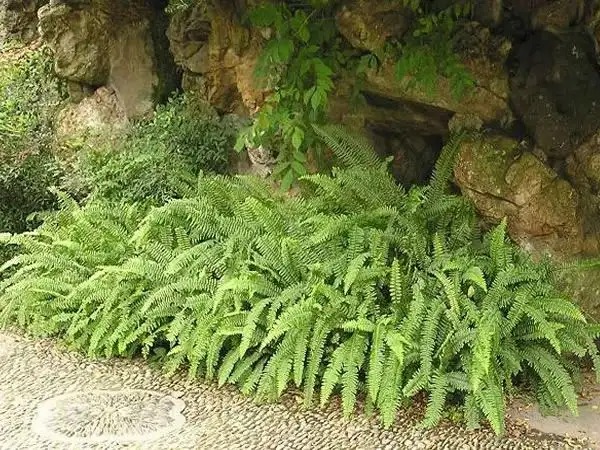
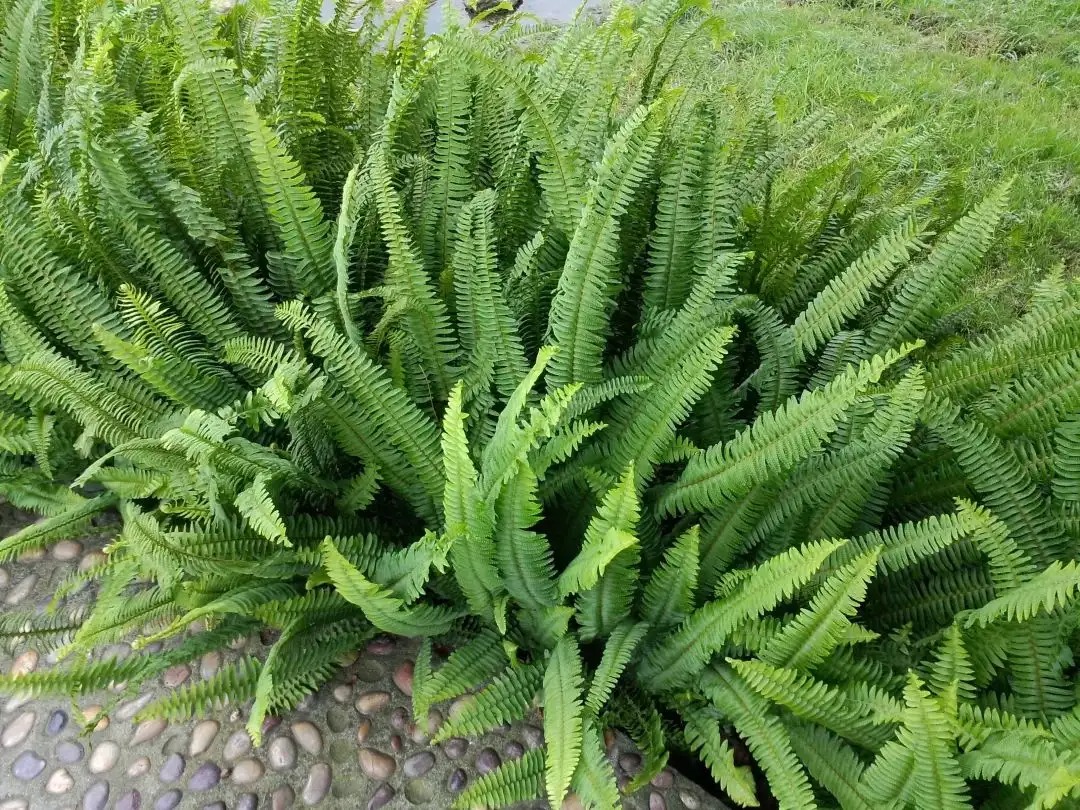

80-Petunia
This plant is a branched, often glandular-hairy herb. Leaves are entire and alternate. Flowers are solitary. The calyx is deeply or almost completely lobed, with oblong or linear lobes. The corolla is funnel-shaped or butterfly-shaped, with a cylindrical tube or gradually widening upwards, with a cleaved or slightly obliquely bilabiate rim. The lobes are short and broad, arranged in a shingle-like pattern. The stamens are five, inserted in the middle or lower part of the corolla tube and not extending beyond the corolla. Four stamens are strong, the fifth is short, rarely sterile, or degenerate. The filaments are filiform, and the anthers are split longitudinally. The disc is glandular, entire or notched and bifid. The ovary is two-chambered, with an inconspicuously bifid stigma and numerous ovules. The seeds are nearly globose or ovoid, with a reticulate pattern of pits on the surface. Suitable for indoor ornamental cultivation or hanging pots.
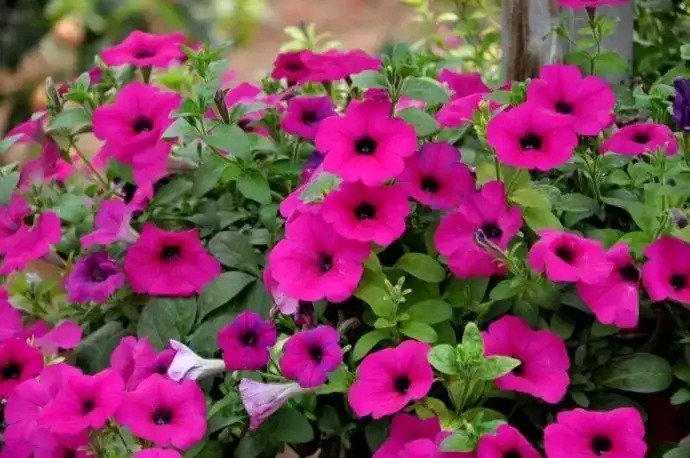
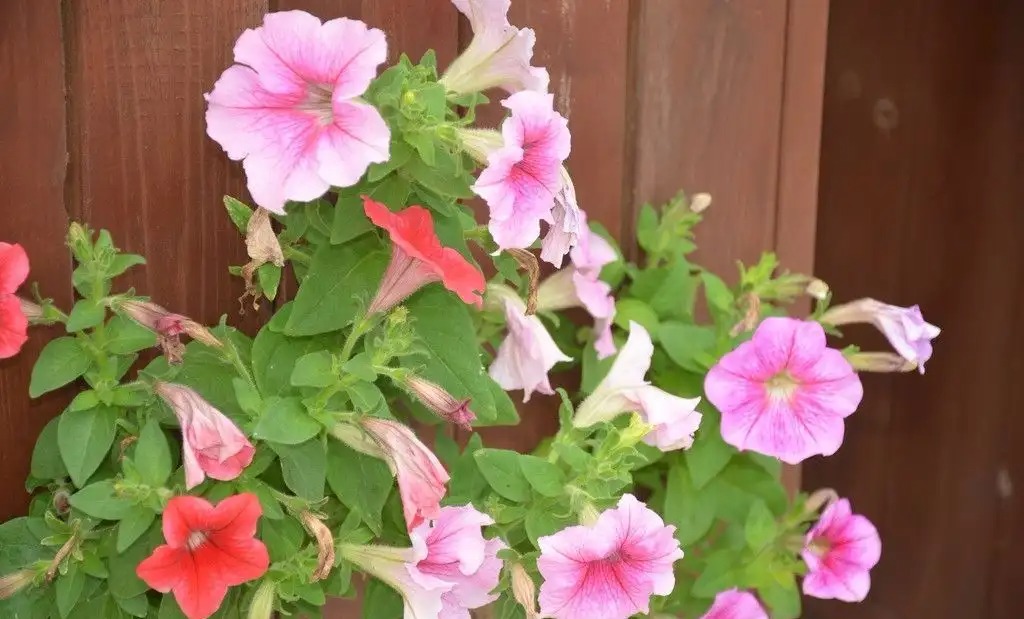
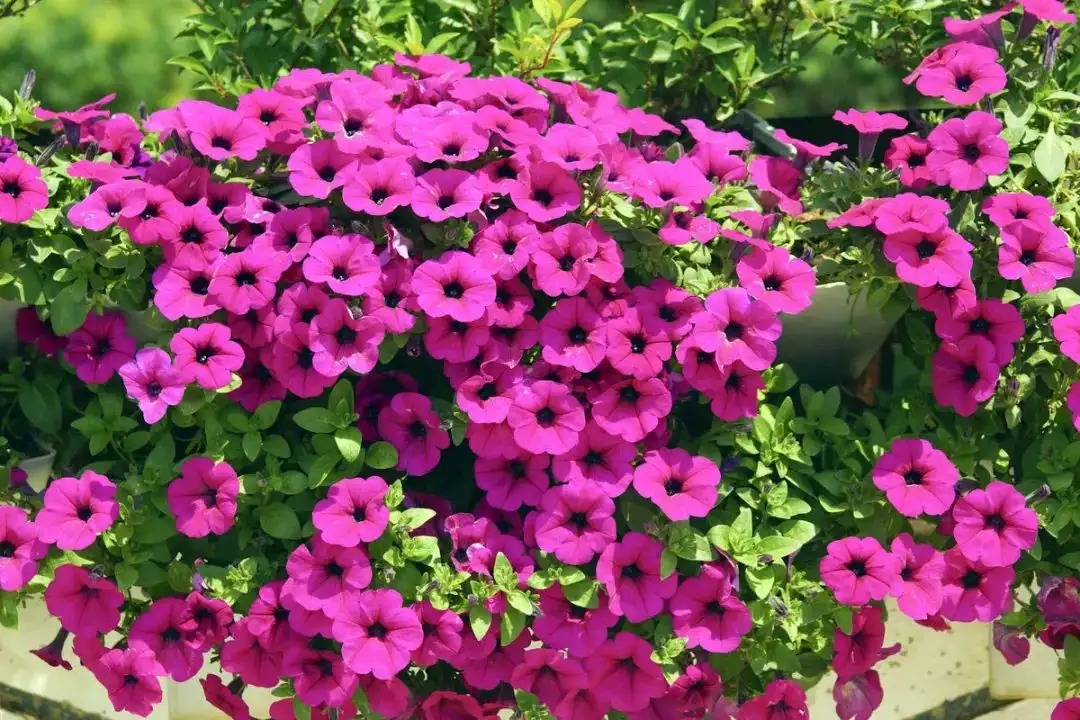
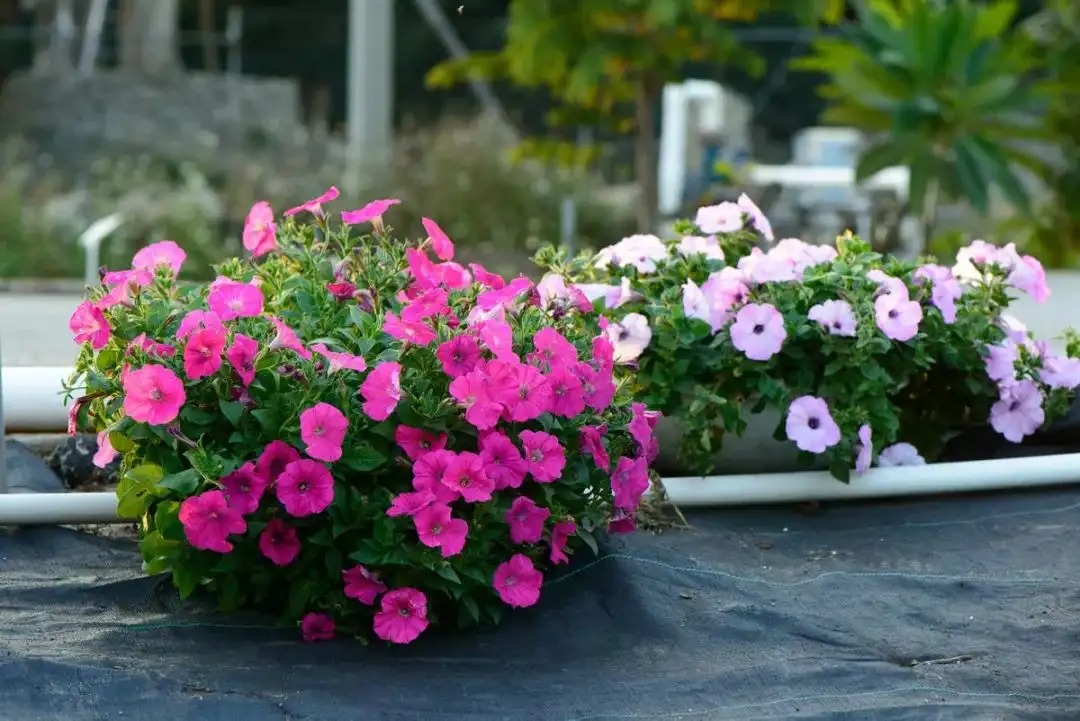
81-Tung oil tree
Other names: Millennium Tung, Wrinkled Tung, Euphorbiaceae, Tung genus. This deciduous tree stands 10-18 meters tall. Its bark is smooth and yellow-lined. Its leaves are alternate, cordate or broadly ovate, 10-20 cm long and 8-20 cm wide, acuminate at the apex, cordate or truncate at the base, and have margins that are entire or 4-7 lobed. The flowers are white or with red veins. The trees are dioecious, occasionally on the same plant. Female inflorescences are often arranged in racemes or panicles, each with 20-60 florets; male inflorescences often have over 300 florets.
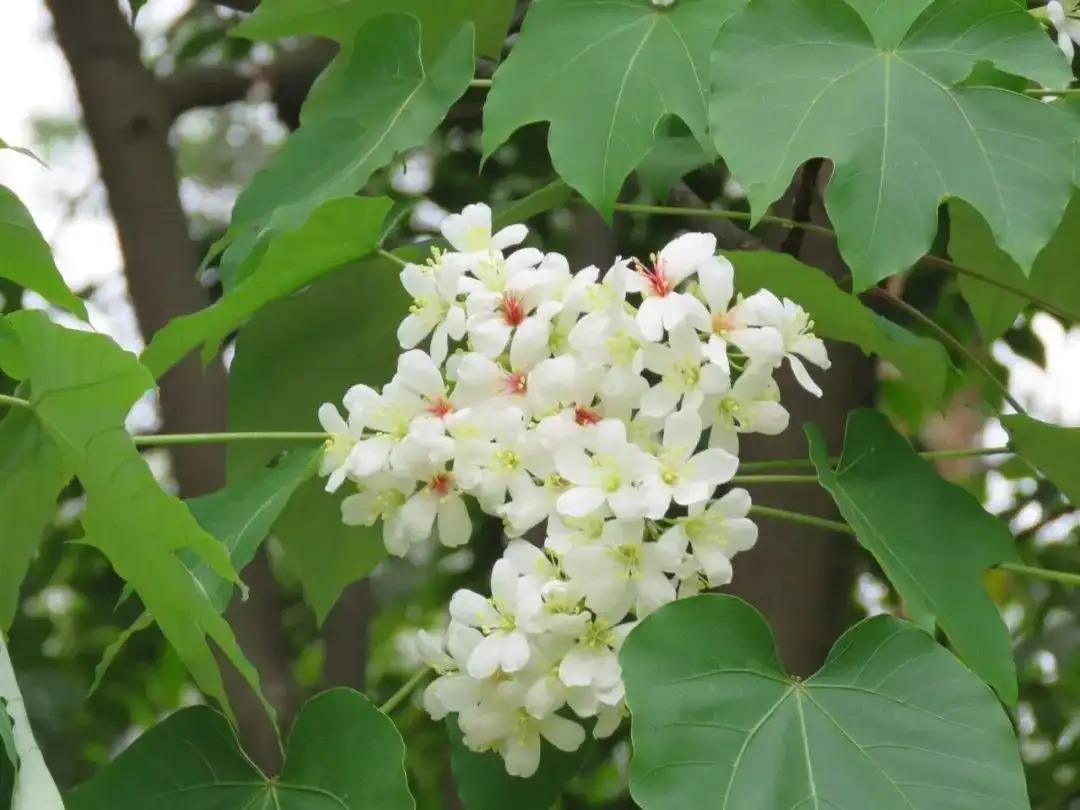

82-Peach Gold Girl
Myrtle, also known as Doni, Gangsu, Shansu, Duolian, Dangligen, Renzishu, Douren, Zhongni, Wuduzi, Taojiuniang, and Dangni, is a shrub in the Myrtaceae family, genus Myrtaceae, reaching up to 2 meters in height. Its leaves are opposite, leathery, elliptical or obovate, and its flowers are often solitary, purple-red. Its calyx tube is obovate, its calyx lobes are nearly round, its petals are obovate, and its stamens are red. Its berries are ovate-pot-shaped, turning purple-black when ripe. It blooms from April to May. Its flowers bloom in a dazzling array of colors, resembling a crimson glow, with both flowering and fruiting. The ripe fruit is edible and can be used to make wine. It is a natural food source for birds. It is an evergreen shrub used in landscaping, ecological environment development, hillside regreening, and soil and water conservation. Its fruit is edible, and the entire plant is used medicinally, promoting blood circulation, astringency, antidiarrheal, and tonic effects.
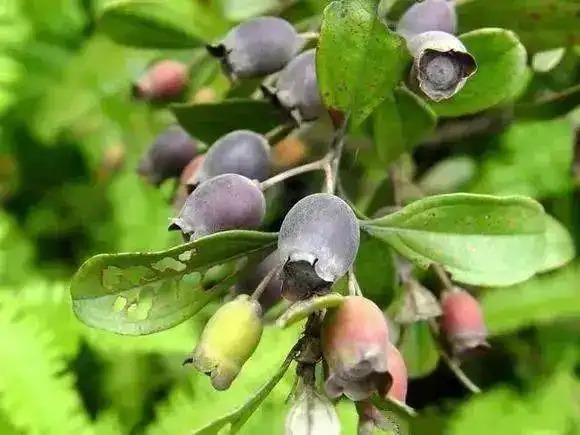
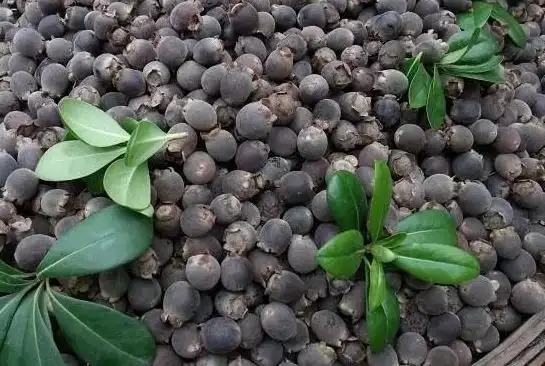
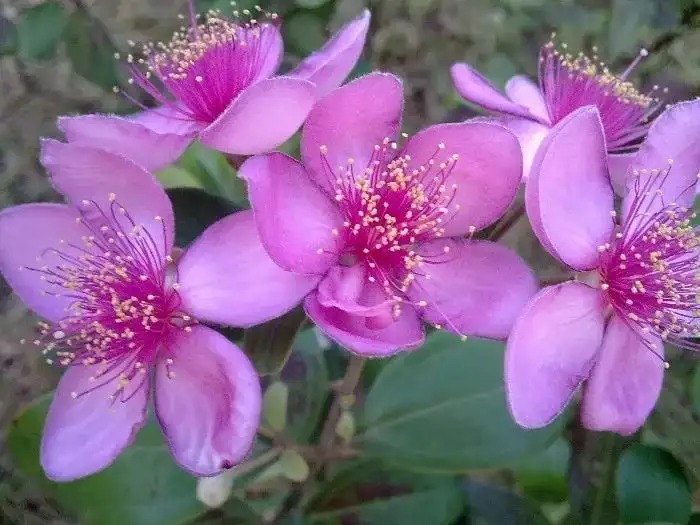
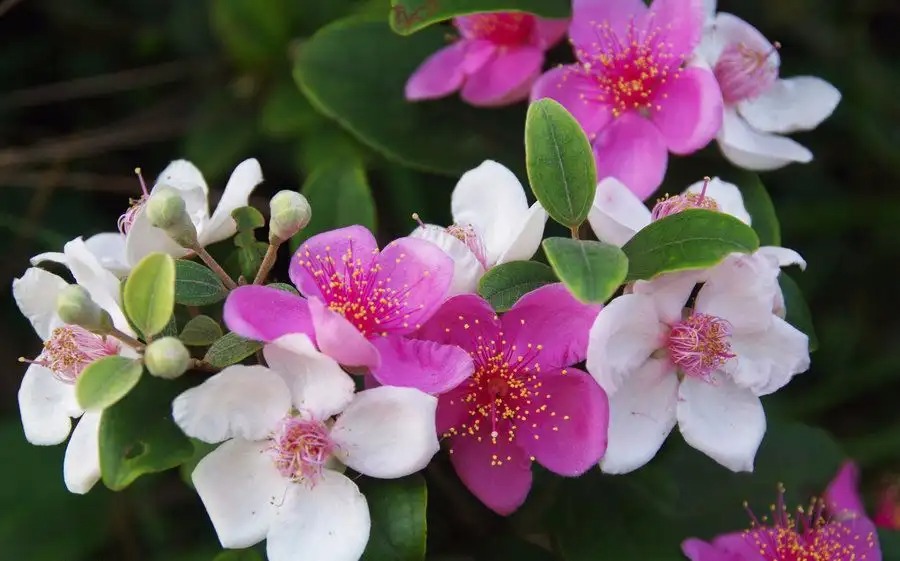
83- Honeysuckle
Also known as honeysuckle, the name "Jin Yin Hua" comes from the Compendium of Materia Medica. The name "Jin Yin Hua" comes from the fact that honeysuckle flowers initially bloom white and then turn yellow. The medicinal herb, honeysuckle, belongs to the genus Lonicera, in the family Caprifoliaceae. Dried buds or newly opened flowers of honeysuckle and similar plants are more suitable for groundcover cultivation under forests, at forest edges, and on the north sides of buildings due to their prostrate rather than climbing abilities. It can also be used to create low green walls, and its twining ability can be used to create flower corridors, flower stands, flower fences, flower columns, and winding rockeries. Its advantages are its prolific growth and minimal management, but its disadvantages are its intertwining vines, resulting in uneven groundcover and a messy appearance.
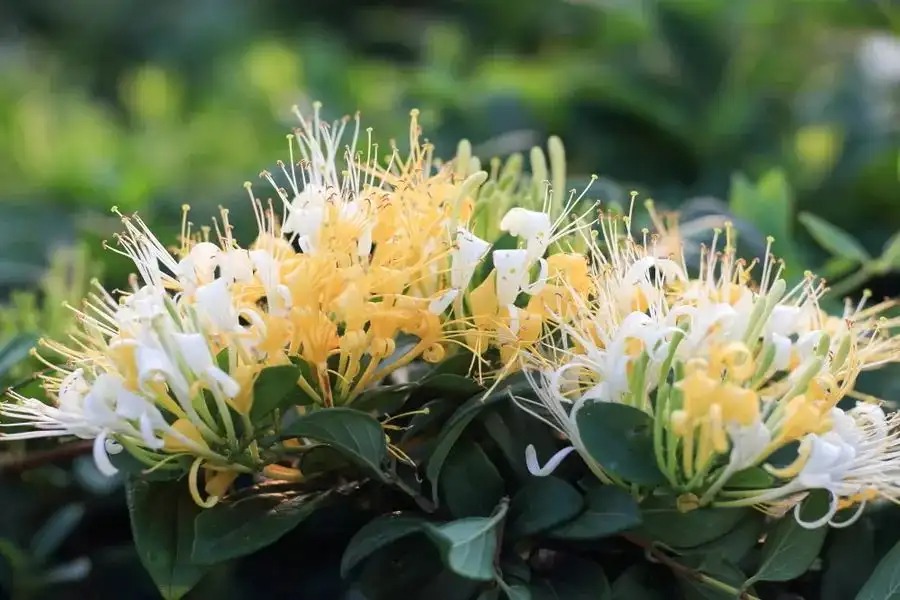
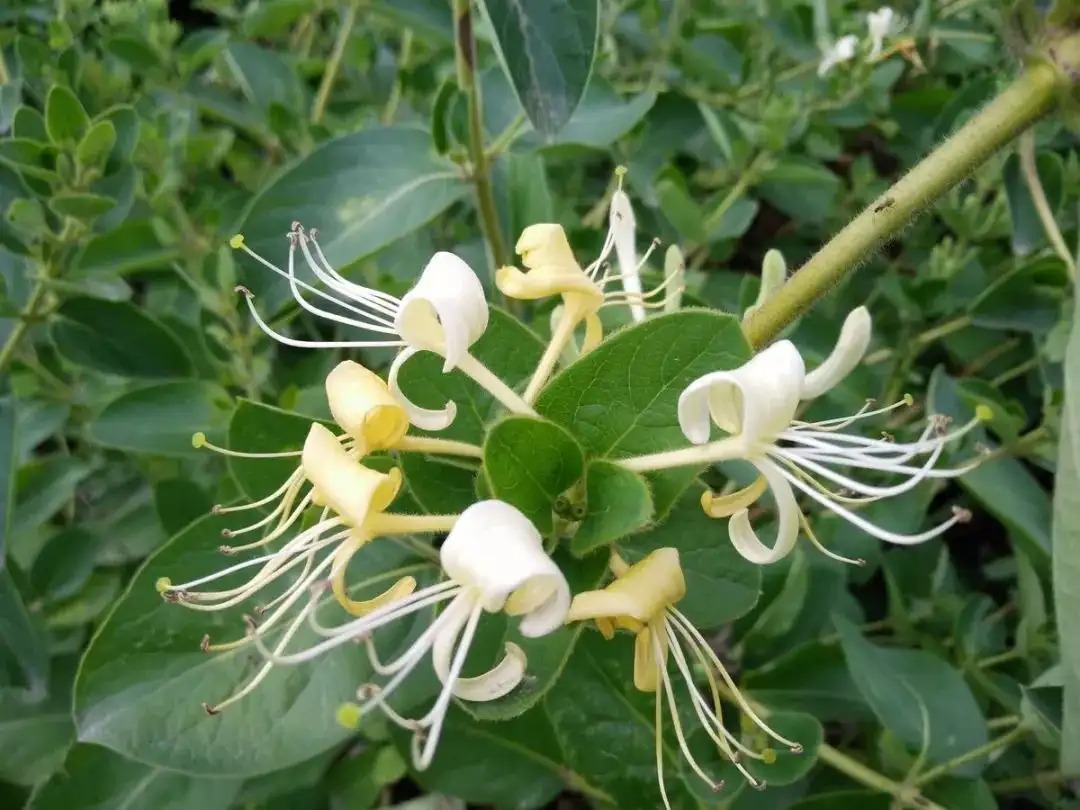

84-Coleus (Coleus)
The genus Coleus is an erect or ascending herb in the Lamiaceae family. Its stems are usually purple, and its leaves are membranous and highly variable, usually ovate, obtuse to shortly acuminate at the apex, broadly cuneate to rounded at the base, with crenate-serrate or crenate margins. Its colors vary, ranging from yellow, dark red, purple, and green. The inflorescence is multi-flowered, with many flowers densely arranged in a verticillaster. The pedicels and rachis are slightly puberulent. The bracts are broadly ovate, the calyx is bell-shaped, the limbs are bilipped, the middle lobe is broadly ovate, and the lateral lobes are short and ovate. The corolla is light purple to purple or blue, with a suddenly recurved, bilipped limb. The filaments are united below the middle to form a sheath. The style extends beyond the stamens, and the disc is swollen in front. The nutlets are brown and shiny, and flowering begins in July.



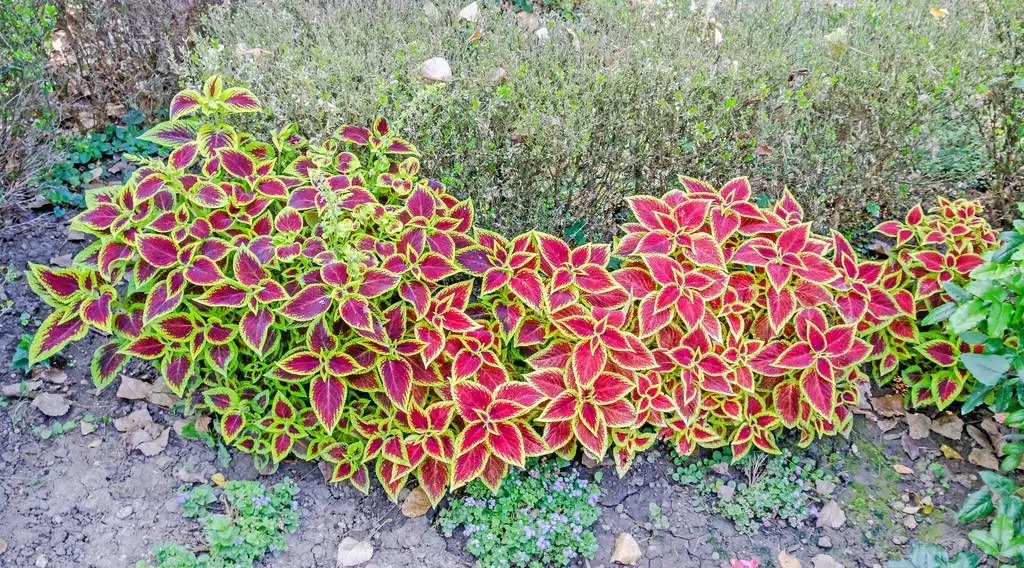

85-Kalanchoe (Kalanchoe)
Also known as "longevity flower," this perennial succulent herb grows 10-30 cm tall. Its stems are erect. Its leaves are single, opposite, oval, and have bluntly serrated margins. Its inflorescence is a corymbose cyme with small orange-red to crimson flowers. Its fruit is follicle-shaped. It bears numerous seeds. It blooms from February to May. Its dense, emerald green foliage blooms near Christmas, forming clusters of vibrant colors, making it a popular indoor potted plant.

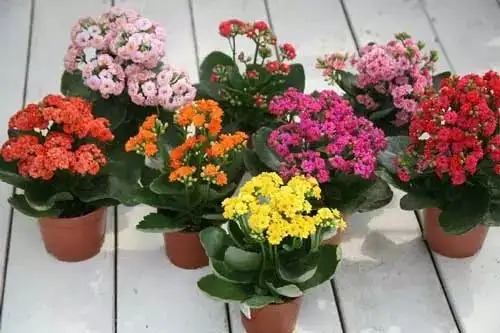
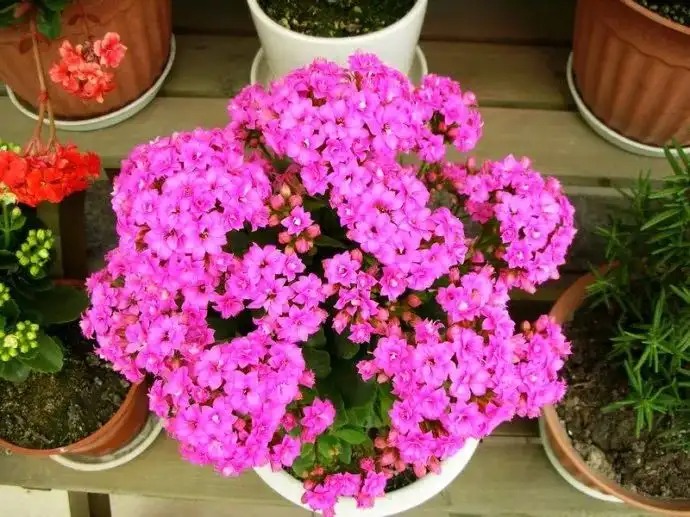
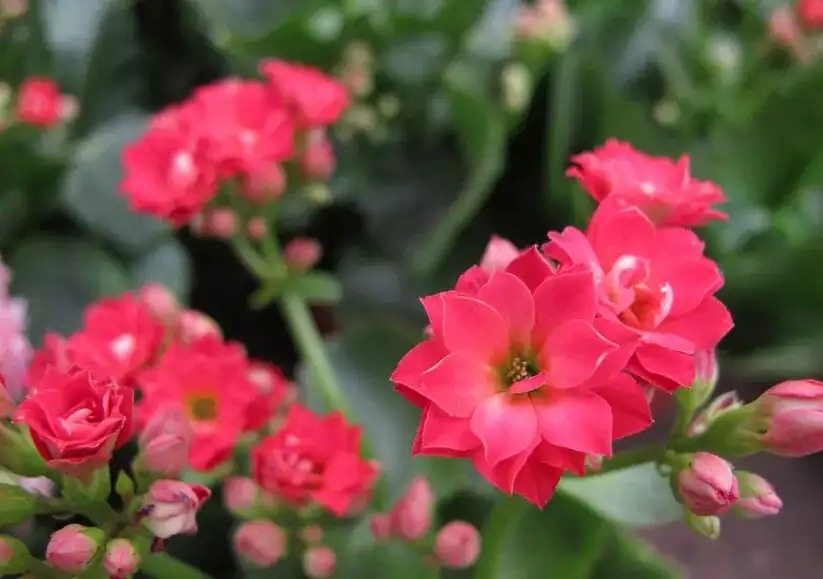
86-Mango
This large evergreen tree, part of the Anacardiaceae family, is native to India. Its leaves are leathery, alternate, and its flowers are small, polygamous, yellow or pale yellow, arranged in terminal panicles. Its drupes are large, flattened, 5-10 cm long and 3-4.5 cm wide. They are yellow when ripe and have a sweet taste, with a hard stone. The mango tree has a spherical crown and is an evergreen tree with a high canopy density, making it an excellent garden and street tree in tropical areas.
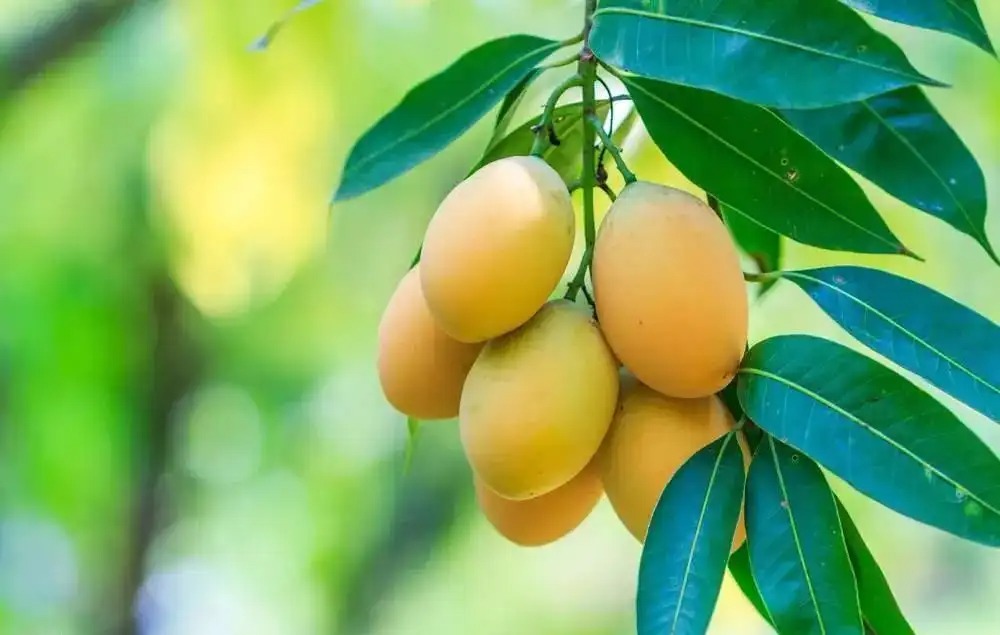
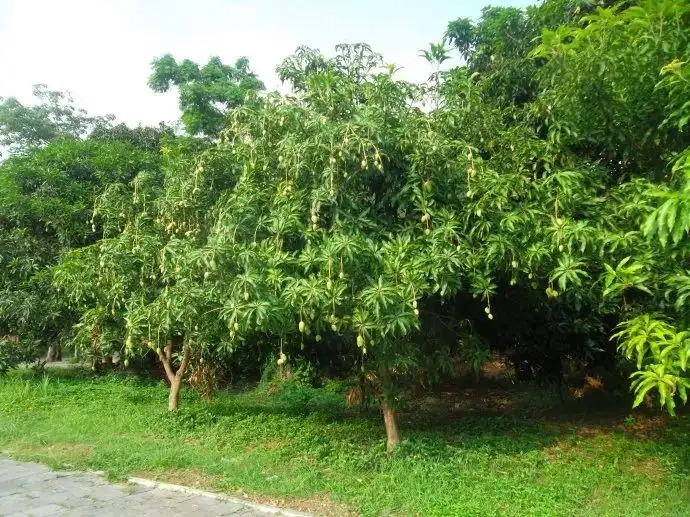


87-face
Also known as the Human Face Tree and Silver Lotus Fruit, this plant belongs to the Anacardiaceae family. It is a large evergreen tree, reaching heights exceeding 20 meters. It prefers ample sunlight, high temperatures, and high humidity, and thrives in deep, fertile, acidic soil. Its broad, lush green crown is highly attractive, making it an excellent choice for landscape gardens and roadside plantings. It is also a medicinal plant, with its fruit, root bark, and leaves all used as medicine.
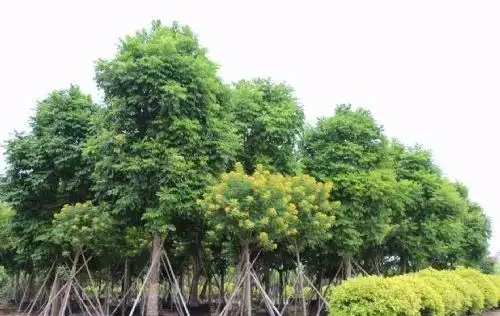
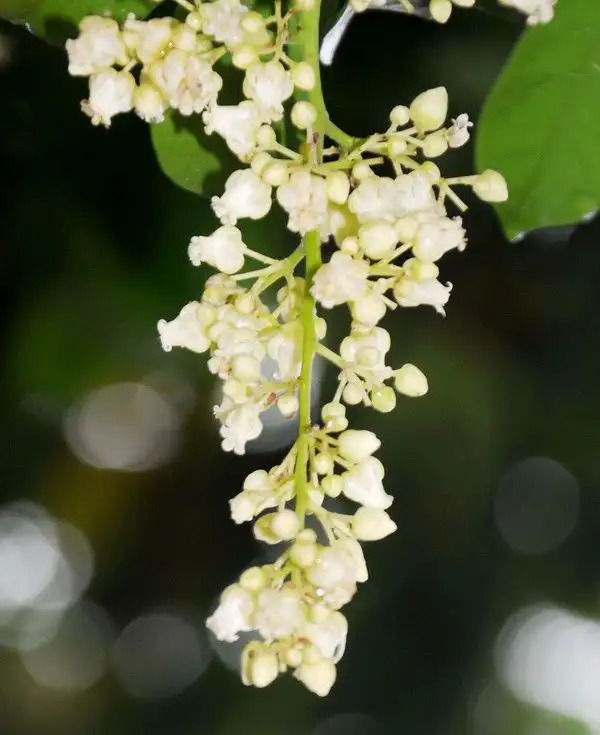
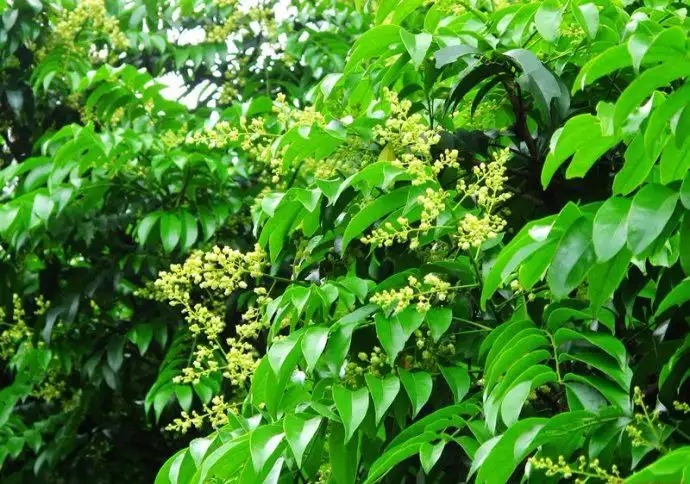
88- Melaleuca alternifolia
This tree, belonging to the Myrtaceae family and the genus Melaleuca, reaches up to 18 meters tall. Its bark is grayish white, thick and soft, flaking in thin layers; its young branches are grayish white. Its leaves are alternate, leathery, lanceolate or narrowly oblong, pointed at both ends, and contain numerous oil glands, resulting in a strong aroma. Its petioles are very short. Its flowers are white and densely clustered in spikes at the tops of branches, often with short hairs on the rachis. Its calyx is ovate, with or without hairs, and is round or ovate. Its style is linear and slightly longer than the stamens. Its capsule is nearly spherical, 5-7 mm in diameter. It blooms several times annually. A shade tree, its bark is attractive and fragrant, with various colors, making it suitable for use as a barrier or street tree. While it is often planted along roadsides as a street tree, its bark is a fire hazard, making it unsuitable for afforestation.
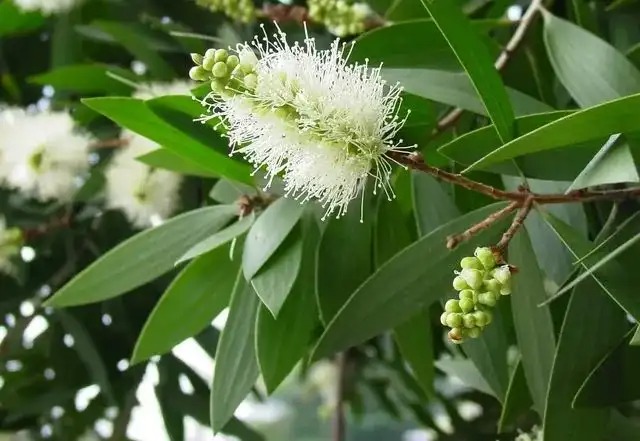
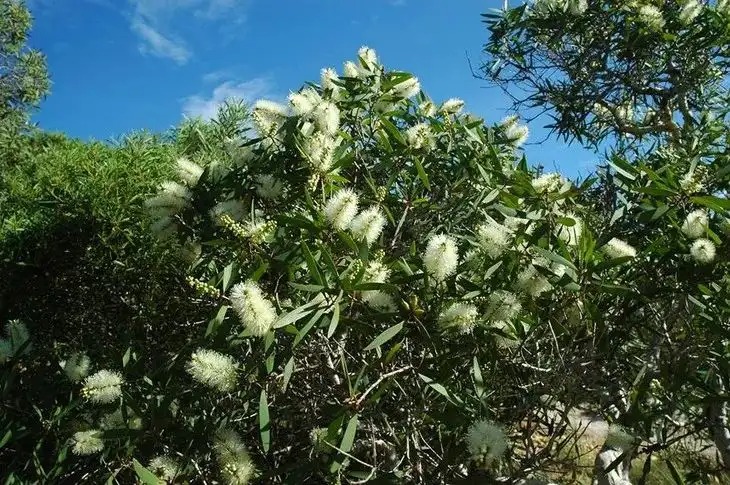
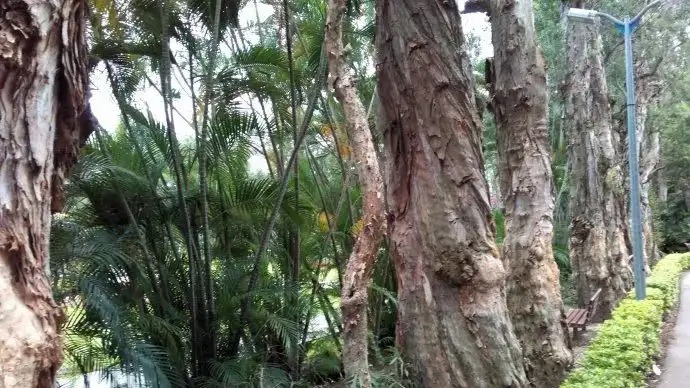
89-Bodhi fig
The tree has a graceful form, with branches adorned with aerial roots and a rugged, uneven trunk, giving it a sense of age yet vigor. Its numerous, spreading lateral branches and alternate, entire leaves are heart-shaped or ovate, with long, pointed tips. The leaves are dark green, spreading thickly and providing a dense shade, making it suitable for temples and roadside plantings. Its beautifully shaped leaves and fine veins make it an excellent ornamental tree, suitable for gardens, sidewalks, and landscaping in polluted areas.
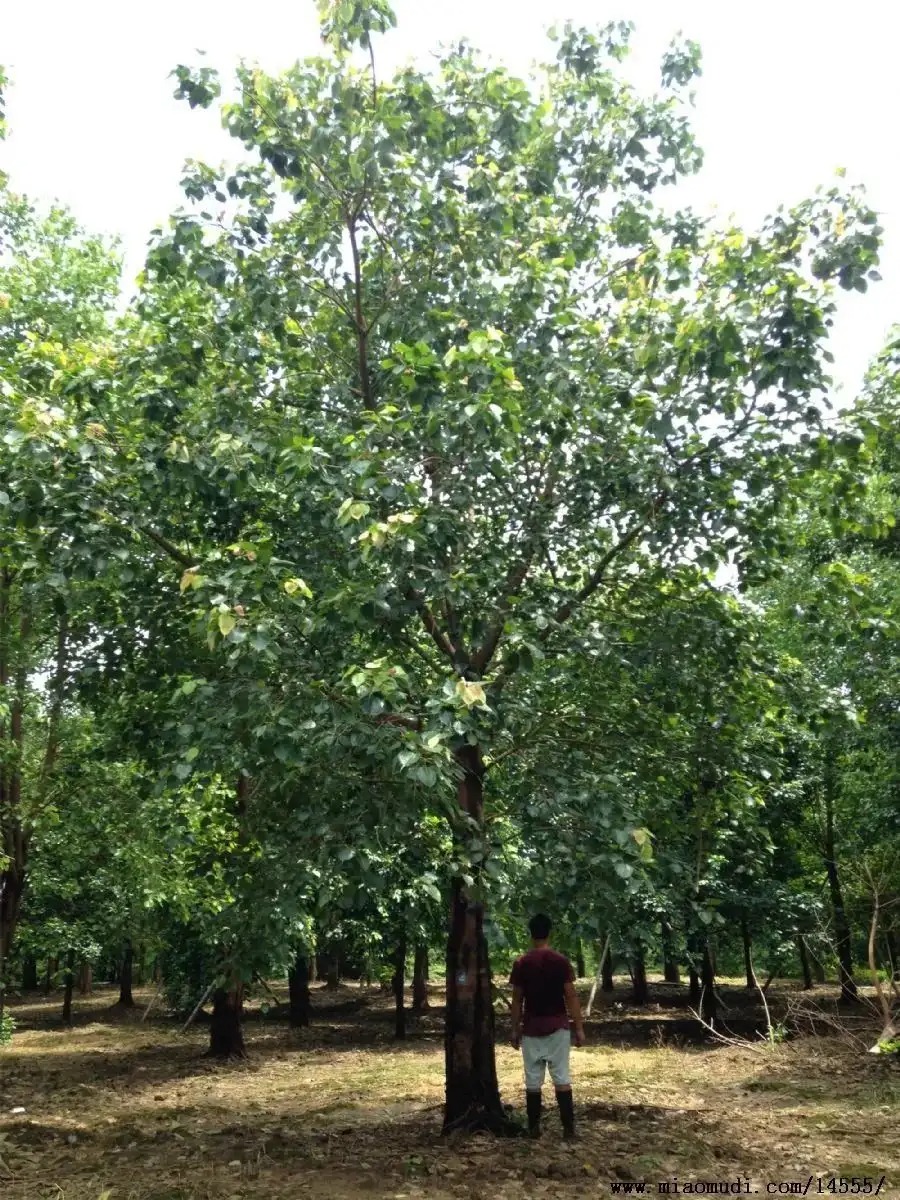


90-Cui Luli
The underground rhizomes of the lily of the valley spread out, forming a network of interwoven horizontal rhizomes. Buds sprout upward, sending out above-ground seedlings and, in turn, producing adventitious roots, forming new plants. The stems are slightly square, grooved, and reddish-brown. The single flowers are short-lived, blooming in the early morning and withering in the evening. The capsules are long, initially green, turning brown as they mature. The seeds, which are small and powdery, are released after the fruit cracks. Suitable for garden clusters or potted plants.
In flower borders, lilies can be interwoven with other flowers to create natural patches, showcasing the natural beauty of flowers and the beauty of diverse plant communities. Taller varieties of lilies can be used as linear plantings at the back of single-sided flower borders or in the center of double-sided flower borders, while dwarf varieties can be used as edging material at the edges. Lilies have a long flowering period, making them ideal for flower bed arrangements. Their high heat tolerance makes them a valuable addition to summer flower beds. Their elegant blue-purple color stands out against more common flowers and can be combined with other plants to create a colorful flower bed pattern. Planting lilies in foundation plantings, such as in narrow strips around buildings and between roads, can enrich building facades and enhance the surrounding environment. Alternatively, planting lilies at the base of walls can help soften the harsh architectural lines between the foundation, corners, and the ground.
The dwarf variety of the ground cover, Liriodendron truncatum, has dark green foliage and densely packed small flowers. It can grow for years and can be used as a ground cover to add depth to the landscape. Liriodendron truncatum is highly resistant to drought, poor soils, and saline-alkali soils, so it can be paired with rocks, walls, or gravel to create a unique rock garden landscape.
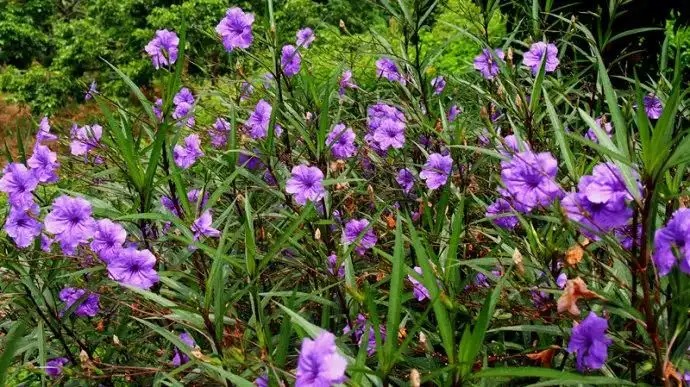
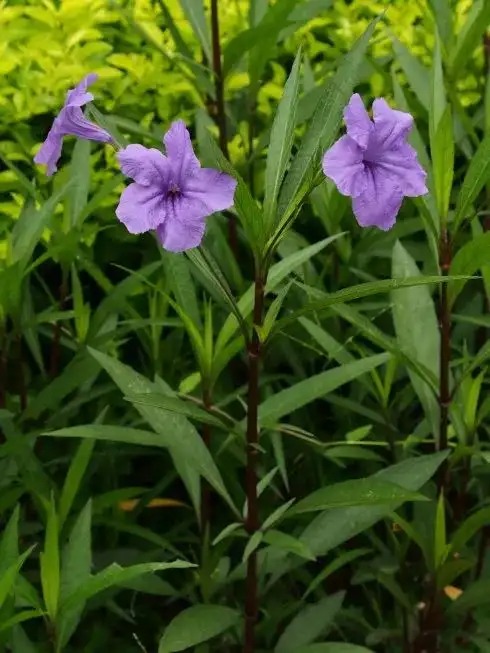

91-Asparagus cochinchinensis
Other names include: Three Hundred Sticks, Wuzhu, Silk Winter, Tiger Tail Root, Asparagus Grass, and Mingtian Winter. Asparagus has a spindle-shaped root, leaf-like branches typically clustered in groups of three, pale green axillary flowers, and ripe red berries. It is a perennial herbaceous plant of the Liliaceae family and the genus Asparagus. It grows in wetlands along the edges of mountain forests, in shrubbery on hilly land, or on grassy slopes. It is typically harvested in autumn and winter, washed, and its fibrous roots removed. It is then boiled or steamed in boiling water until thoroughly cooked. The outer skin is removed while still hot, washed, and sun-dried for later use. The tuberous root of Asparagus is commonly used in Traditional Chinese Medicine and therefore holds high medicinal value.
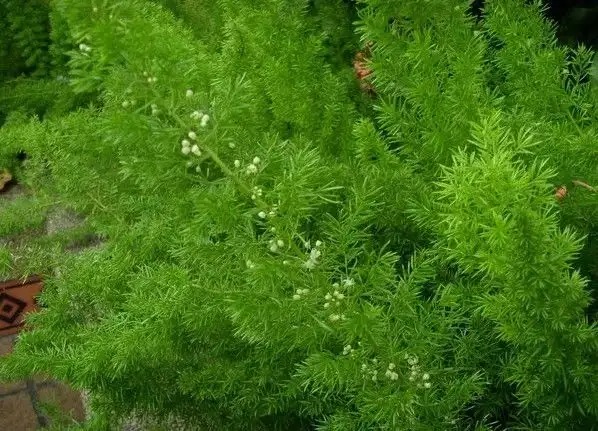

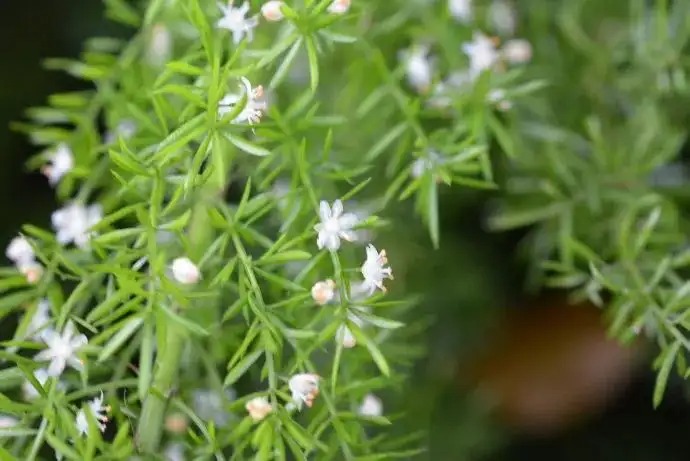
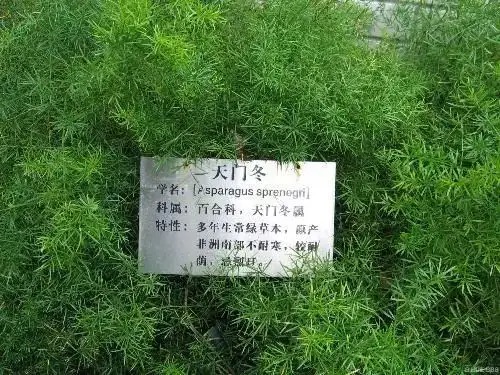
92-Canna
This perennial herb can reach 1.5 meters in height. The plant is green and hairless, covered in a waxy, white powder. It has a tuberous rhizome and tufted branches. Its leaves are simple and alternate, with sheath-like petioles and ovate-oblong leaves. Flowers are solitary or opposite in a raceme. The sepals are three, greenish-white with red tips. The corolla is mostly red, with 2-3 bright red outer staminodes. The lip is lanceolate and curved. The capsule is long-ovate and green, with flowering and fruiting from March to December. It is a common ornamental plant in subtropical and tropical regions. It prefers warmth and full sun and is not cold-tolerant. It has a relaxed soil profile and grows best in loose, fertile, well-drained sandy soil, but is also adaptable to fertile clay soil. This perennial herb is native to tropical regions including tropical America, India, and the Malay Peninsula.
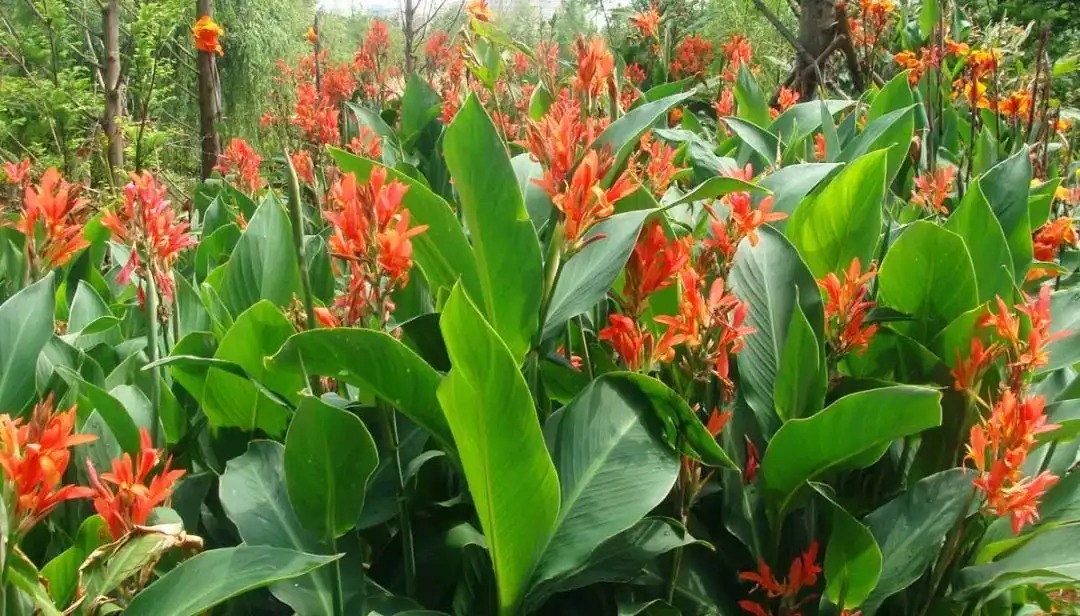
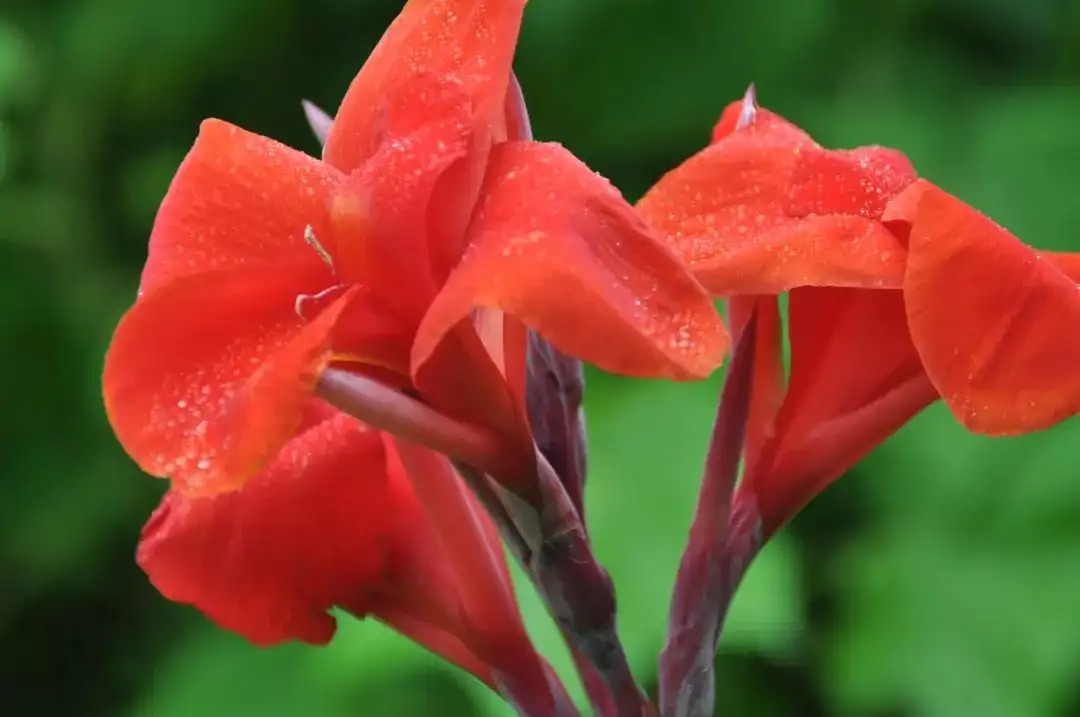
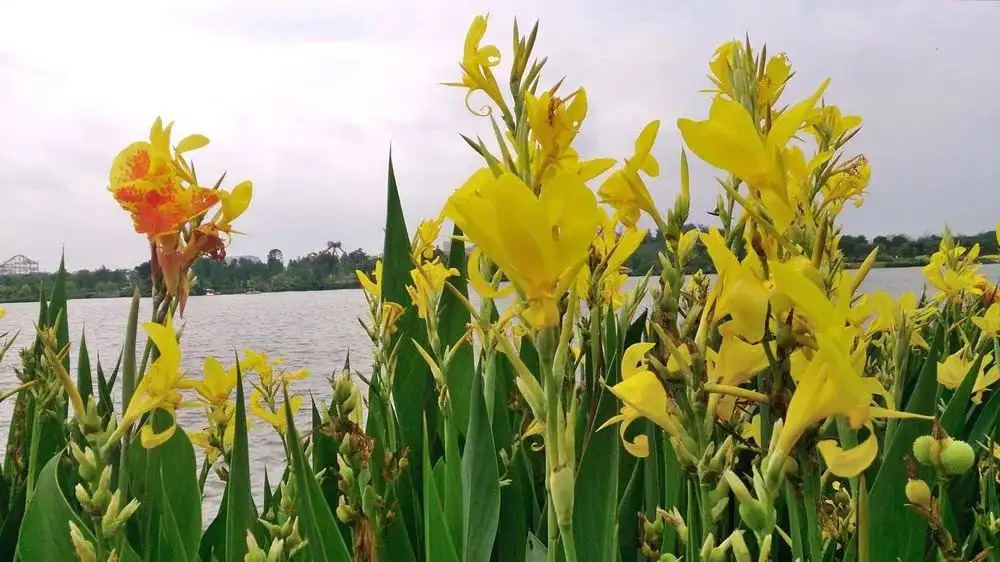

93-Iris Orchid
The stem is short and inconspicuous. The leaves are 5-6 in two rows, overlapping at the base, flattened and thickened on both sides, and articulated at the base. The peduncle emerges from the center of the leaf cluster, 20-25 cm long, more than twice the length of the leaves, and is nearly cylindrical, with narrow wings on the lower sides. The inflorescence is up to 16 cm long and 5-6 mm in diameter, drooping, and densely packed with hundreds of small flowers. The flowers are reddish-brown; the petals are ovate-oblong, 0.9-1.1 mm long and about 0.6 mm wide, with irregularly serrated edges. The lip is broadly ovate or nearly semicircular in outline, about 1.5 mm long and wide, with inconspicuous three lobes. The capsule is elliptical. Flowering and fruiting occur from August to December.
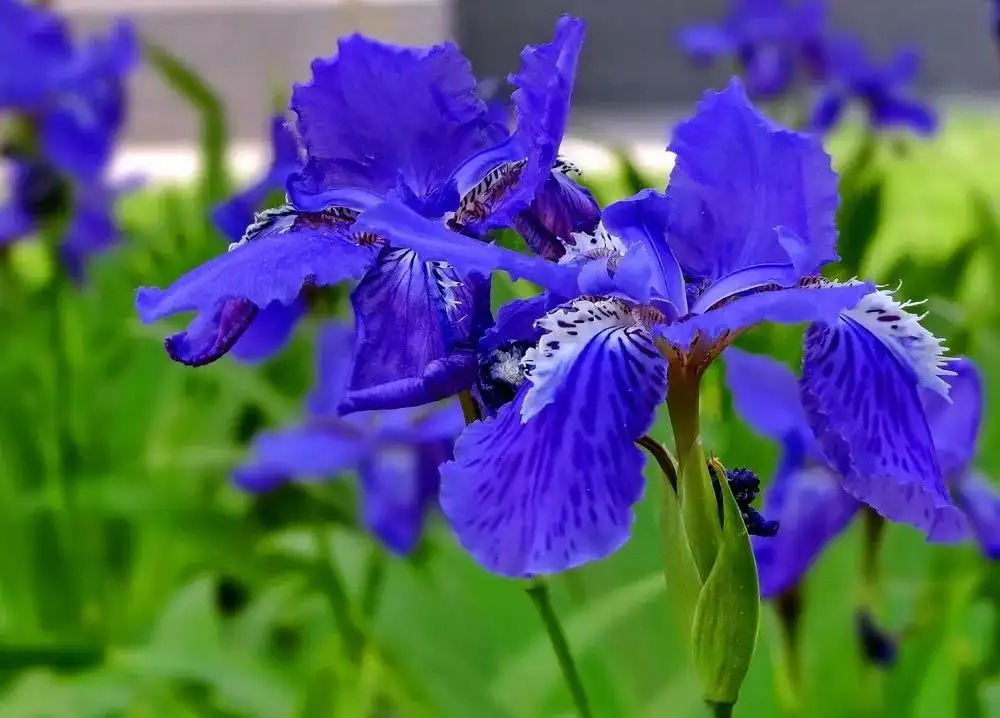
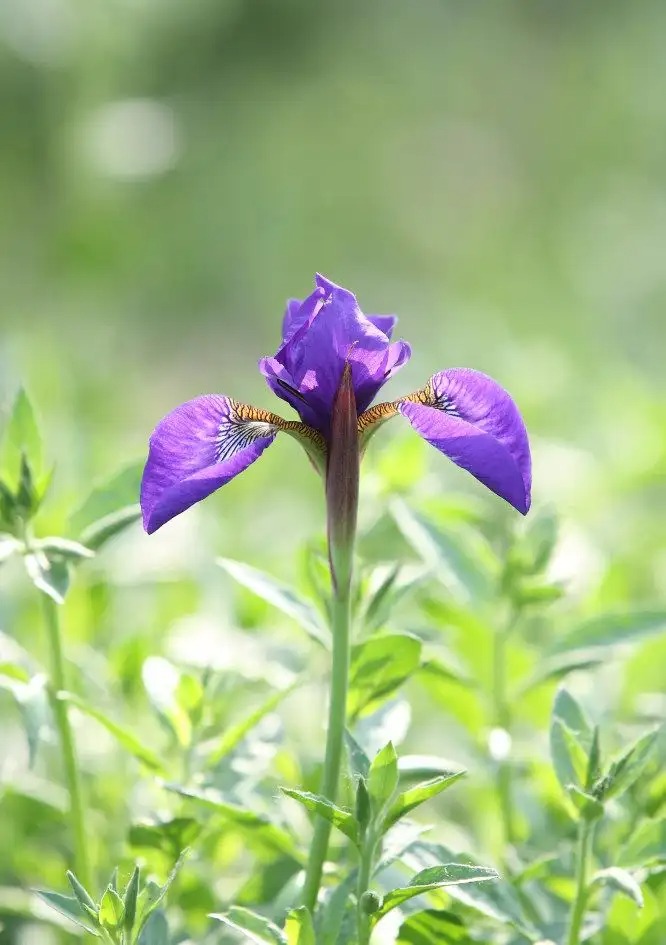
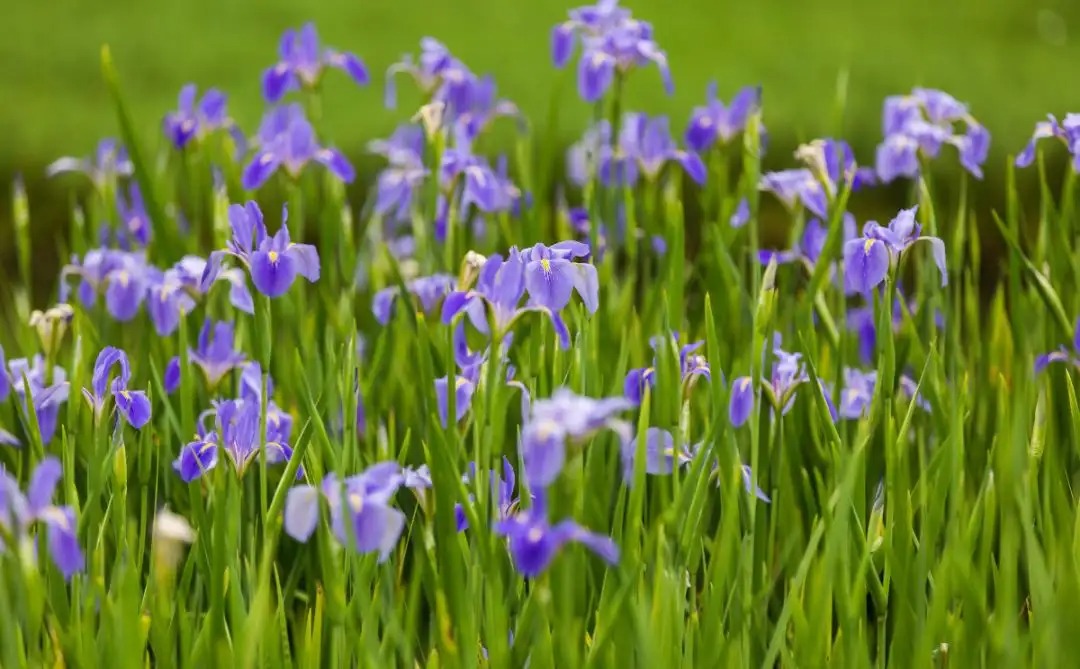
94-Peanut
Peanut is a perennial herbaceous plant of the genus Aralia in the family Fabaceae, native to tropical Asia and South America. It has alternate compound leaves with two pairs of obovate leaflets. The stem is creeping, about 10-15 cm tall. It grows prostrate. The flowers are axillary, butterfly-shaped, and golden yellow, blooming from spring to autumn. Peanut is highly resistant to harmful gases and can be used as a ground cover plant in gardens and highway isolation belts. Due to its well-developed root system, it can also be planted on highways and slopes to prevent soil erosion. It can also be used as green manure for soil improvement, for pasture park greening, and for soil and water conservation mulch. Peanut is highly ornamental, evergreen all year round, and is not prone to weeds, pests and diseases. It generally does not require pruning, which can effectively save manpower and material resources. It is a very promising and excellent ground cover plant.
1
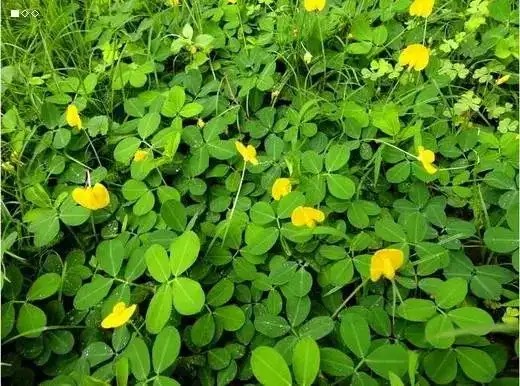
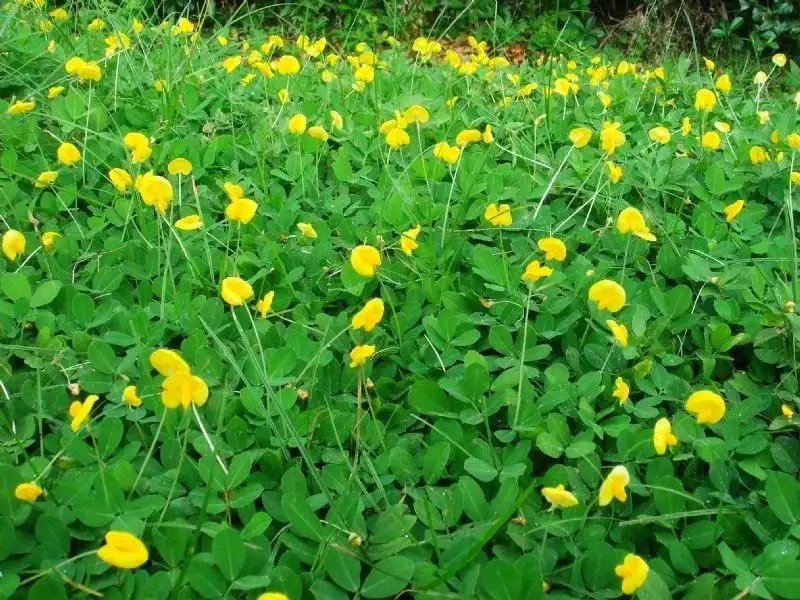
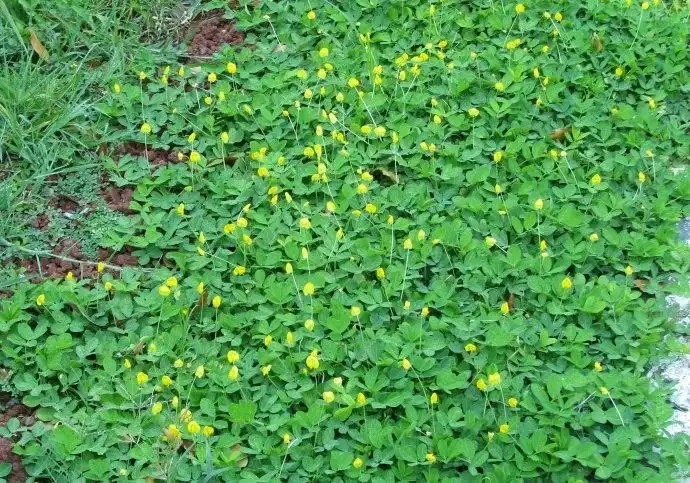
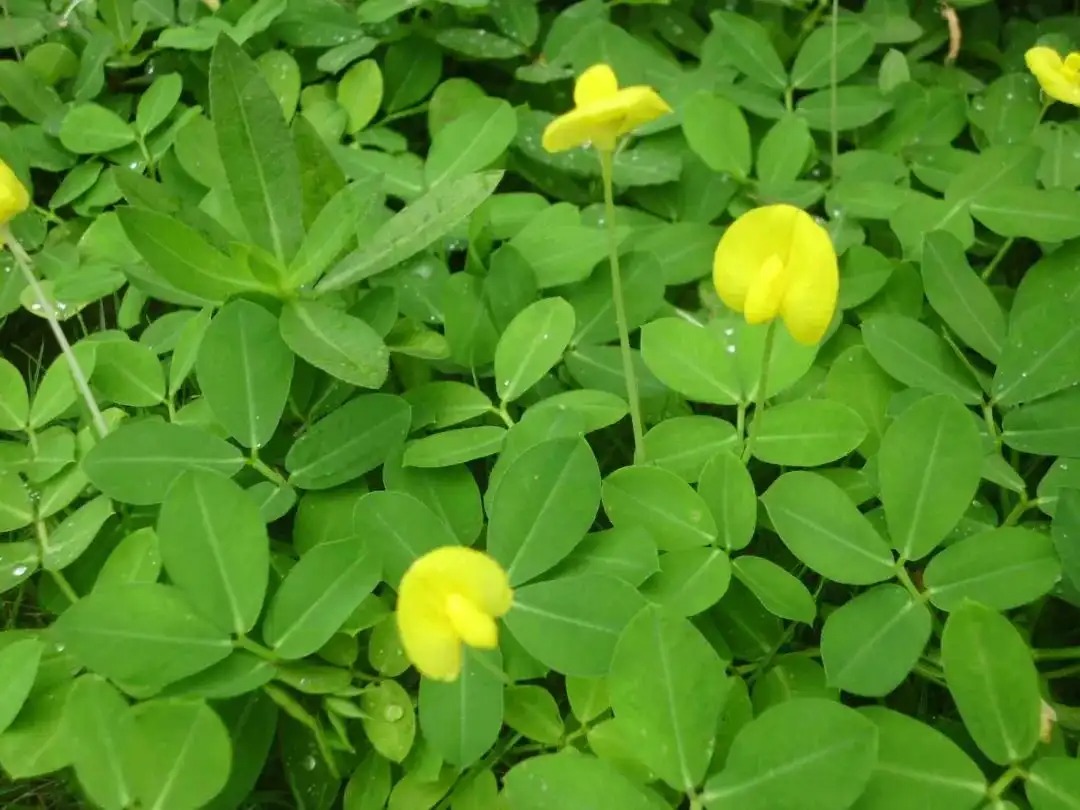
95-Flying Grass
This herb is the dried whole herb of Euphorbia pulcherrima (Euphorbia pulcherrima), a member of the Euphorbiaceae family. It is harvested in summer and autumn, washed, and sun-dried. It has a pungent, sour, and cool nature; it is slightly toxic. It has the effects of clearing heat and detoxifying, promoting dampness and relieving itching, and promoting lactation. It is used to treat lung abscesses, mastitis, furuncles, ulcers, dental caries, dysentery, diarrhea, stranguria with heat, hematuria, eczema, tinea pedis, itchy skin, and postpartum lactation.
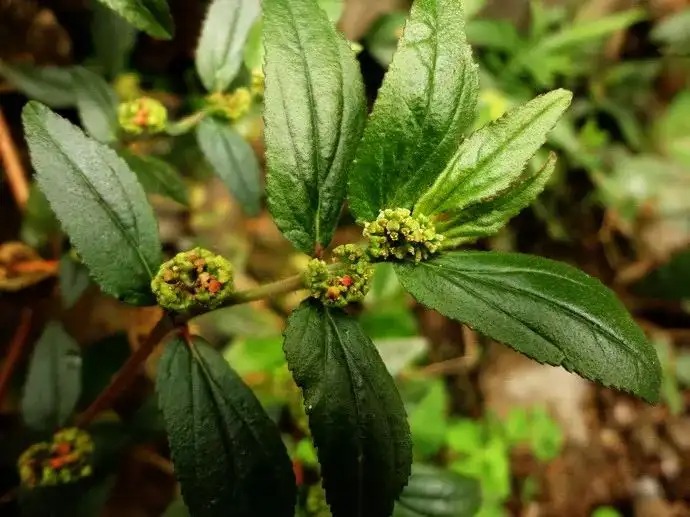

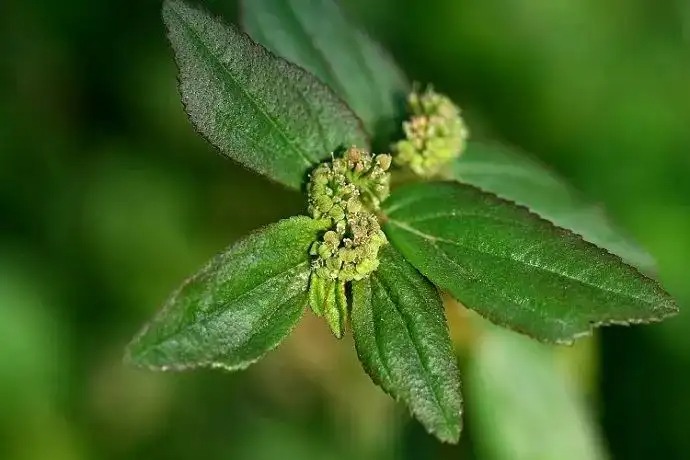
96-Anthurium
A perennial evergreen herb in the Araceae family. Its stems are short internodes; its leaves, green, leathery, and entire, arise from the base and are oblong-cord-shaped or ovate-cord-shaped. Its petioles are slender, and its spathes are flat, leathery, and waxy, with an orange-red or scarlet sheen. Its inflorescences are yellow and bloom continuously year-round. Anthurium candidum is native to tropical rainforests such as Costa Rica and Colombia. It often grows epiphytically on trees, sometimes on rocks, or directly on the ground. It prefers warm, humid, semi-shaded environments and avoids direct sunlight. Its flowers are uniquely beautiful and long-lasting, making it suitable for potted plants, cut flowers, or for beautifying clumps in shaded garden areas.
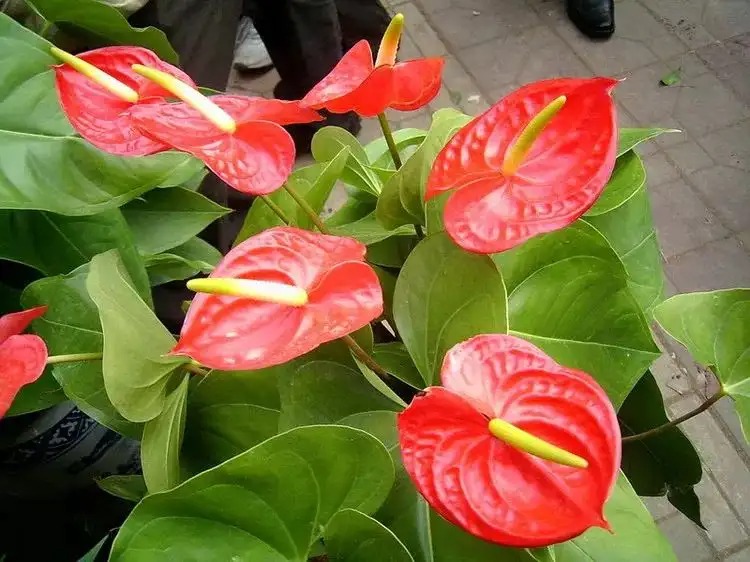

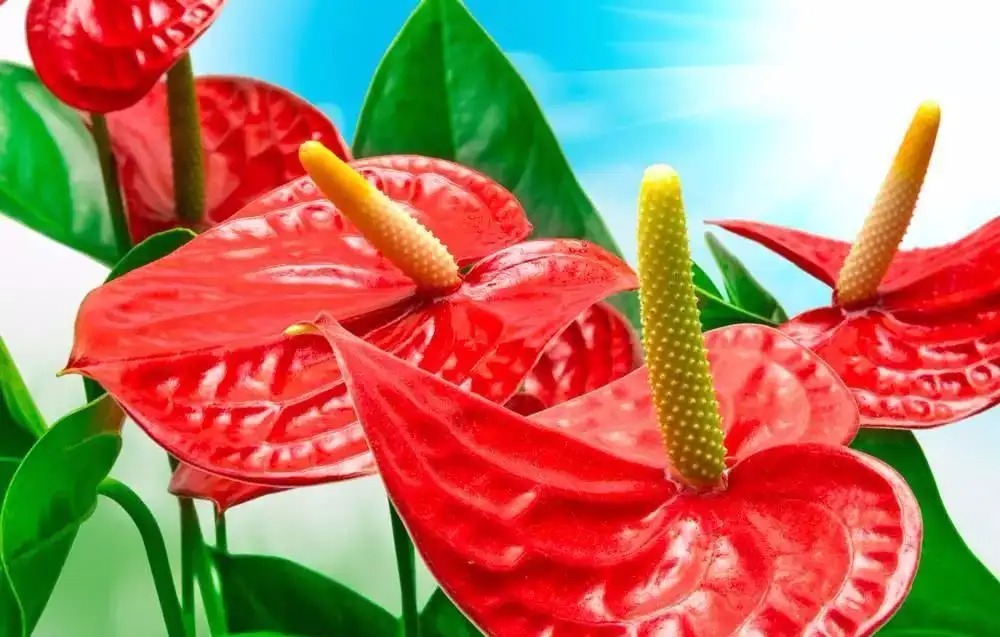
97-Pothos chinensis (Golden Pothos)
This large evergreen vine, belonging to the genus Epipremnum, grows in tropical regions, often climbing rocks and tree trunks in rainforests. Its strong clinging nature, well-developed aerial roots, and colorful leaves, which remain evergreen year-round, with long, drooping branches, make it an excellent foliage plant. It can be placed on palm-woven columns or tree trunks for greening, in foyers and hotels, or cultivated into a hanging shape for study rooms, windowsills, walls, and walls. It can also be used as a ground cover under shaded trees, making it a well-suited indoor flower. It absorbs benzene, trichloroethylene, and formaldehyde from the air. A pot of pothos in an 8-10 square meter room acts as an air purifier, effectively absorbing harmful gases such as formaldehyde, benzene, and trichloroethylene.

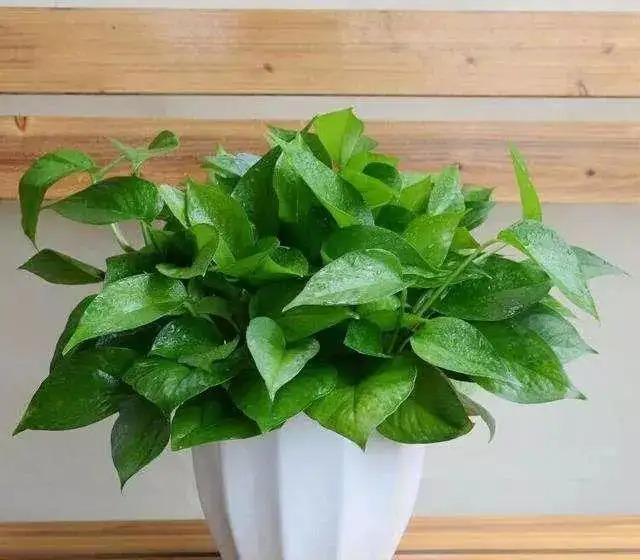
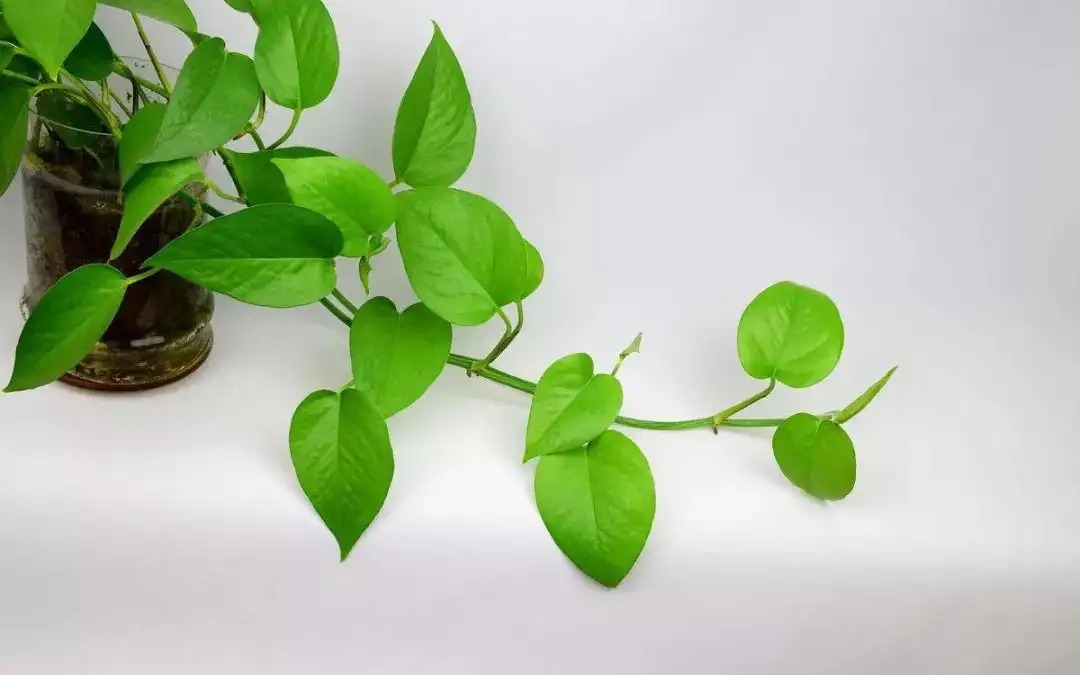
98-Bamboo
Also known as Guanyin bamboo, tendon bamboo, palm bamboo, and dwarf palm bamboo, it is an evergreen foliage plant of the genus Bambusa in the family Arecaceae. It has leaf nodes, encased in sheaths with brown reticular fibers. It is a clumping shrub, 2-3 meters tall, with an upright cylindrical, noded stem 1.5-3 cm in diameter. Its stem is slender, finger-like, unbranched, with leaf nodes and a sheath at the top that breaks down into a slightly loose, horsetail-like, light black, rough, and hard reticular fiber.
The bamboo palm is a typical indoor foliage plant. Because it tolerates shade and humidity and prefers diffuse light, it can be placed indoors in bright, bright areas for extended periods. Even if kept in the dark for three consecutive months without sunlight, it can still thrive and maintain its deep green foliage. The bamboo palm grows tall and straight, with lush branches and leaves, a graceful posture, and beautiful leaves. Green all year round, it resembles bamboo but isn't, offering a beautiful and elegant tropical aesthetic. It is currently the most widely cultivated indoor foliage plant in homes. In southern China, it is often planted in clusters beneath large trees or near rockeries in courtyards, creating a natural tropical forest landscape. In northern China, it can be grown in pots, with large clumps beautifully placed either side of conference rooms or hotel entrances. A well-proportioned and well-spaced bamboo palm bonsai in a shallow pot in your living room, accentuated by a few rocks, creates a delicate and beautiful effect.
Bamboo palms, similar to Monstera, can eliminate heavy metal pollution and carbon dioxide. As large-leafed ornamental plants, they can absorb over 80% of various harmful gases, purifying the air. They can also eliminate heavy metal pollution and have a certain resistance to sulfur dioxide pollution. Of course, as large-leafed foliage plants, their greatest characteristic is their ability to digest carbon dioxide and produce oxygen, which is unmatched by other plants.
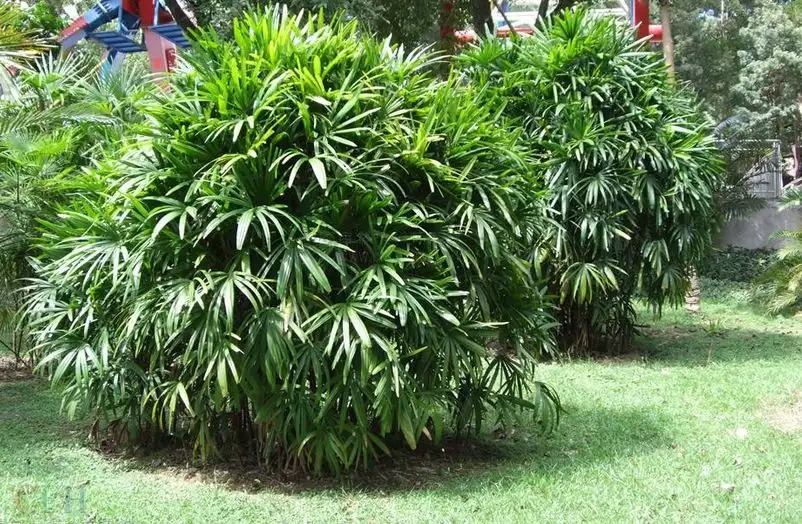
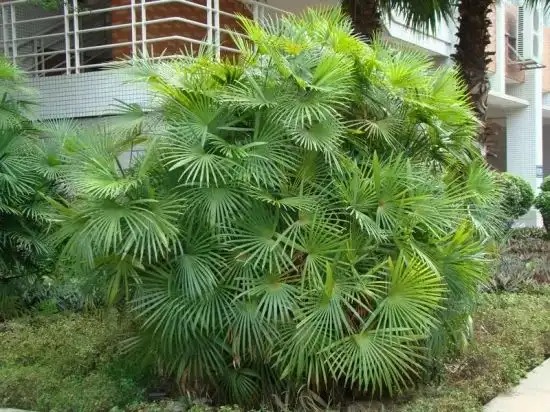
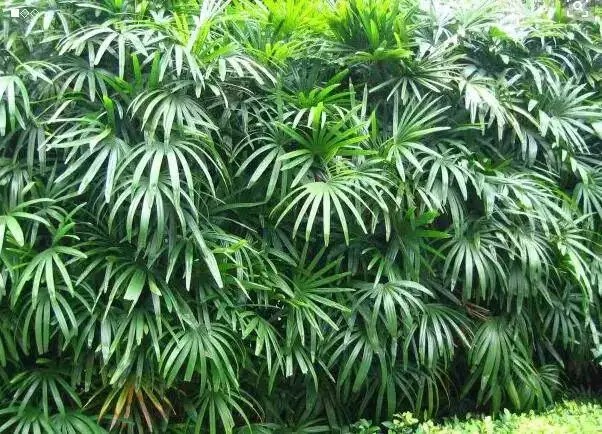
99-Asparagus fern
Also known as cloud pine, asparagus fern, and cloud bamboo, it can reach several meters in height. Its roots are slightly fleshy, and its stems are soft, tufted, and slender. The stems are heavily branched and nearly smooth. The leaf-like branches are bristly and slightly triangular; the scale-like leaves have slightly spiny spurs at the base or no distinct spurs. The flowers are white with short stalks and bloom from September to October. The berries are purple-black when ripe and contain one to three seeds. Fruiting occurs from winter to spring. Asparagus fern is a highly ornamental plant, perfect for living rooms or study rooms, purifying the air while adding a scholarly atmosphere. Its roots are used medicinally to treat acute tracheitis, moistening the lungs and relieving coughs.

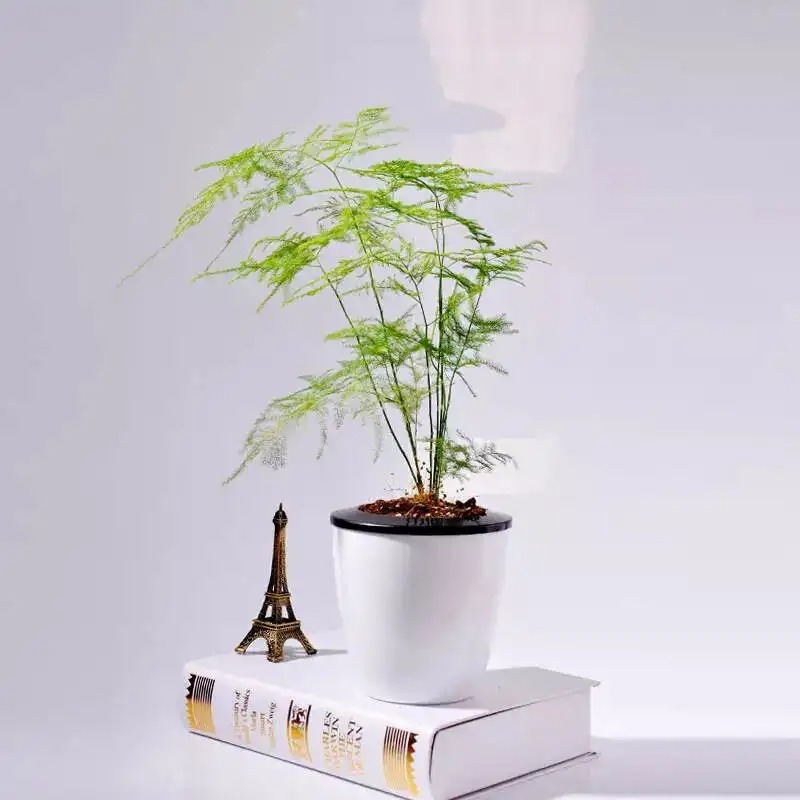
100-Jackfruit
Jackfruit is an evergreen tree in the genus Jackfruit, Moraceae. It grows 10-20 meters tall, with dark brown bark. Its leaves are oval and spirally arranged. The flowers are monoecious, and the fruit, when ripe, turns yellow-brown, with warty projections and coarse hairs on the surface. Jackfruit has a straight trunk, a strong trunk, a dense canopy, and a high fruit yield, making it an excellent landscaping material. It can be planted in courtyards, as a street tree, or in small gardens, providing shade and a beautiful viewing spot.
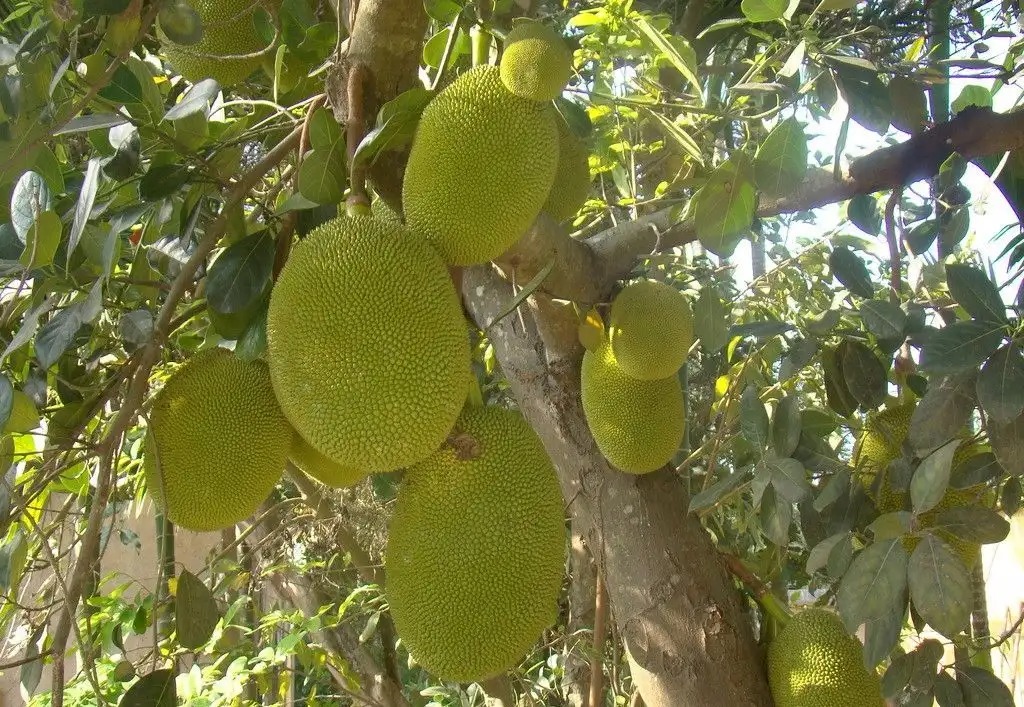

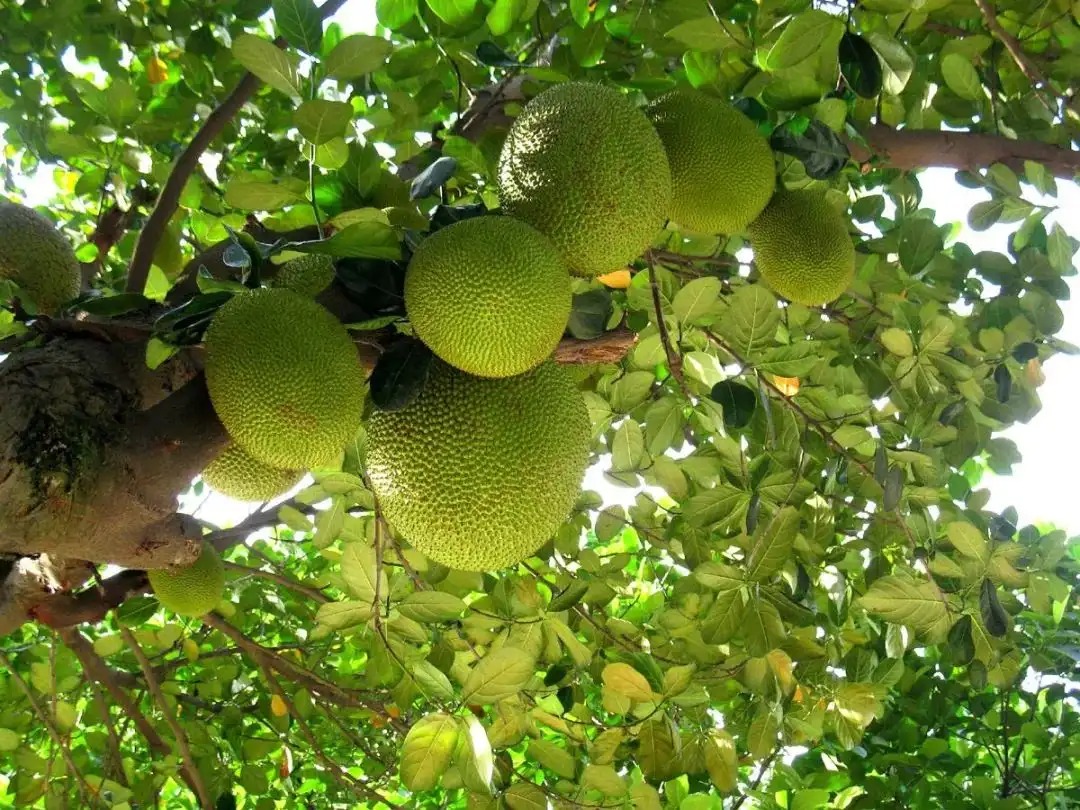
Fake dragon head

Veronica paniculata
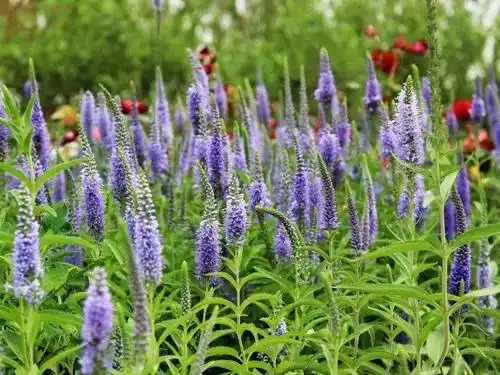
Tradescantia
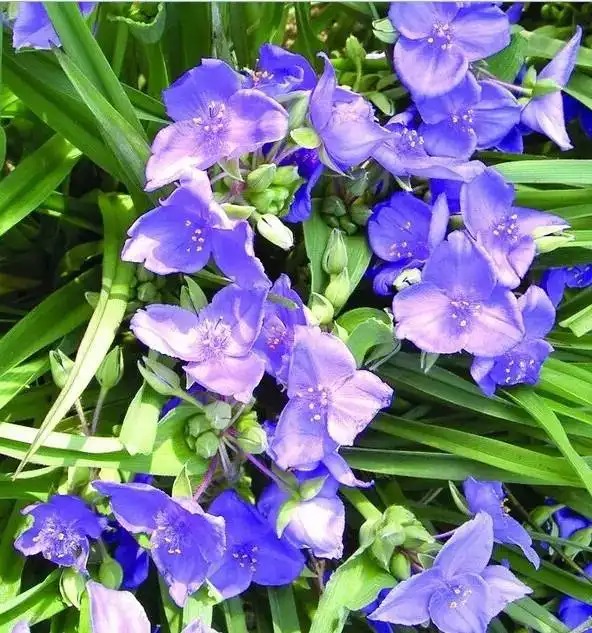
Martian Flower
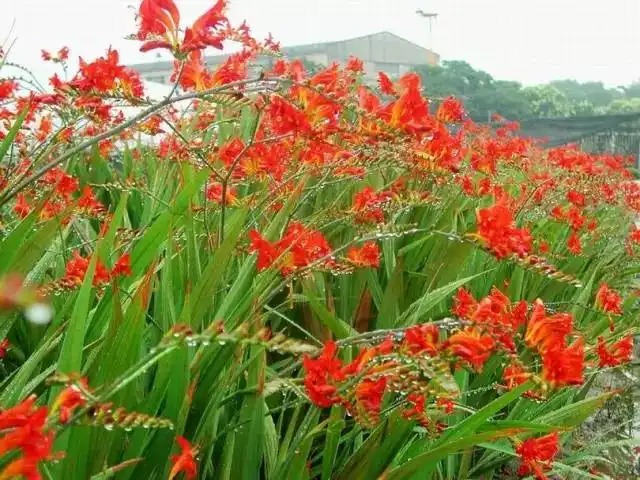
Iris

Rosemary
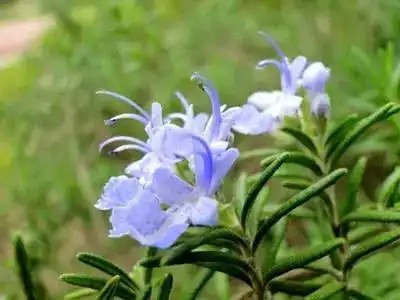
Fruit Orchid
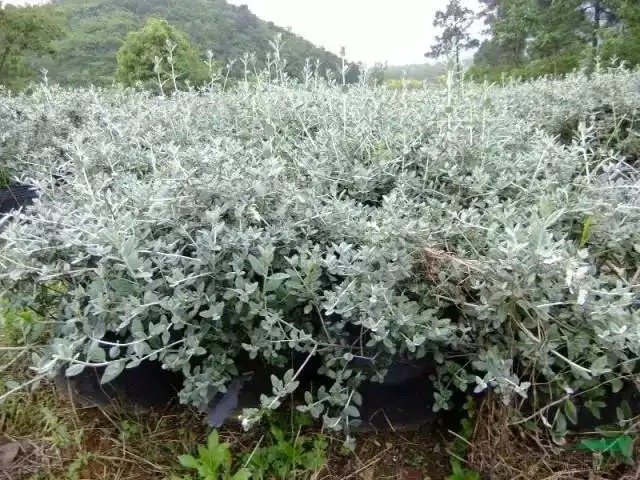
Vitex agnus-flowered
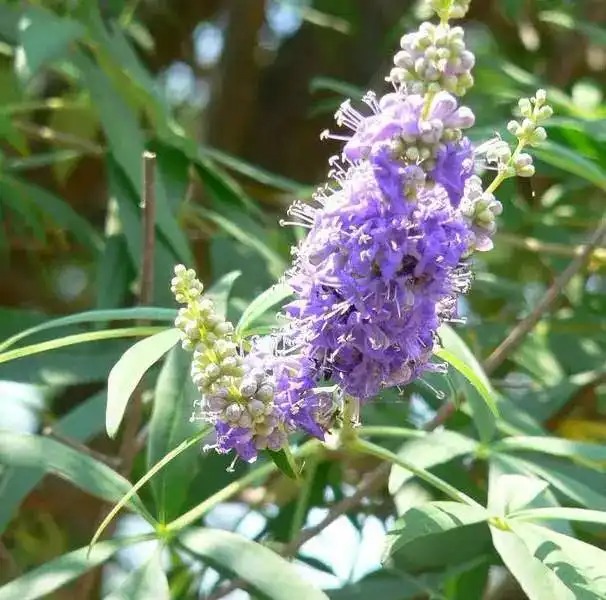
Caryopteris
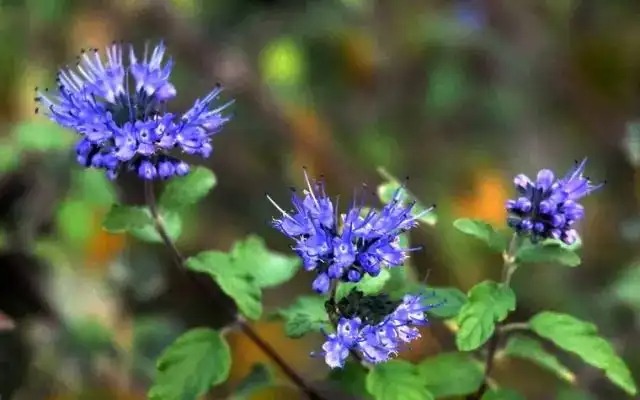
American Forsythia
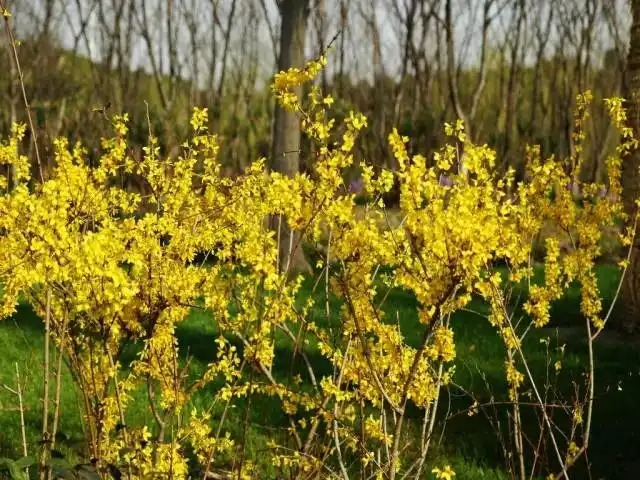
Silver Princess Little Wax
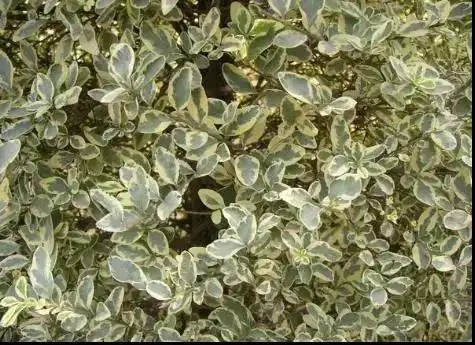
Fragrant jasmine

Cotoneaster serrata

Mediterranean Viburnum
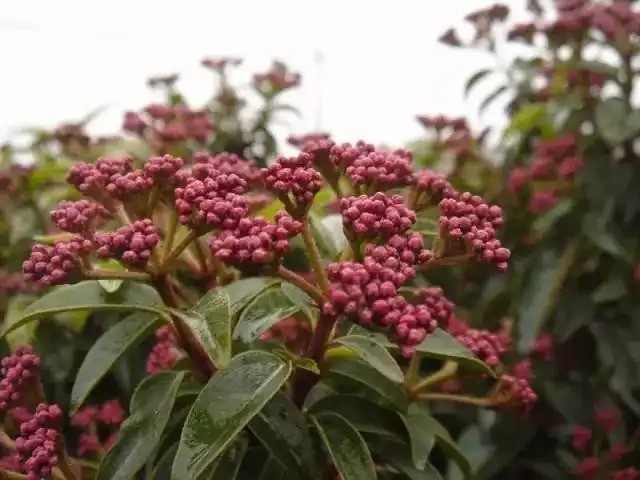
Sambucus sambucus
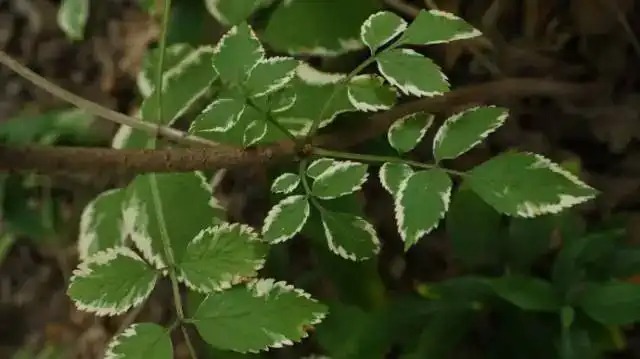
Abelia grandiflora
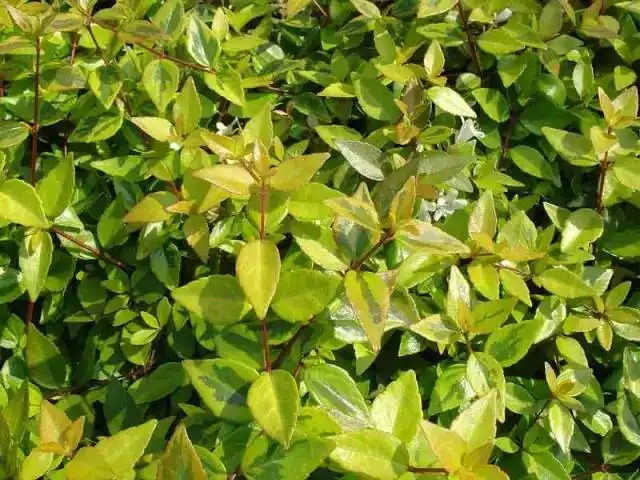
Hairy kernel tree

Creeping bright green honeysuckle

Snowball ice-growing Deutzia
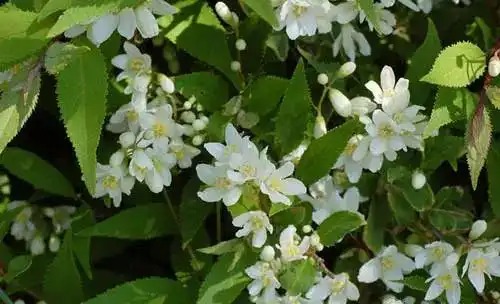
Colorful Salix babylonica

Creeping pot grass
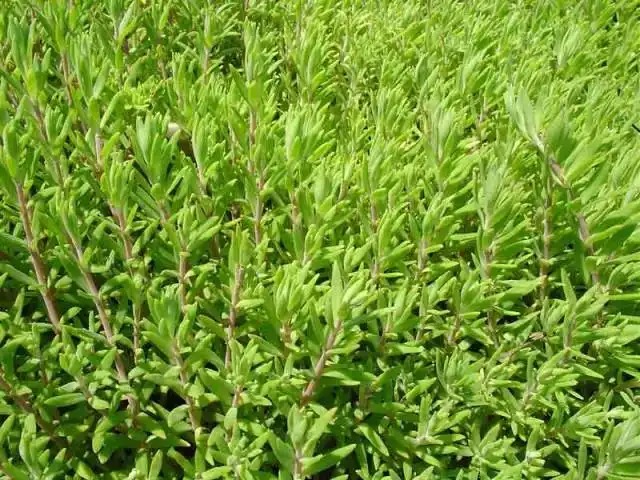
German sedum

Sedum
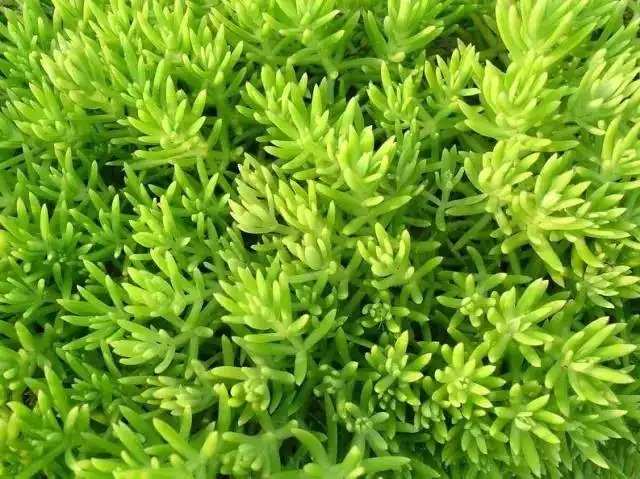
Sedum rotundifolia

Coreopsis grandiflora

Double Coreopsis
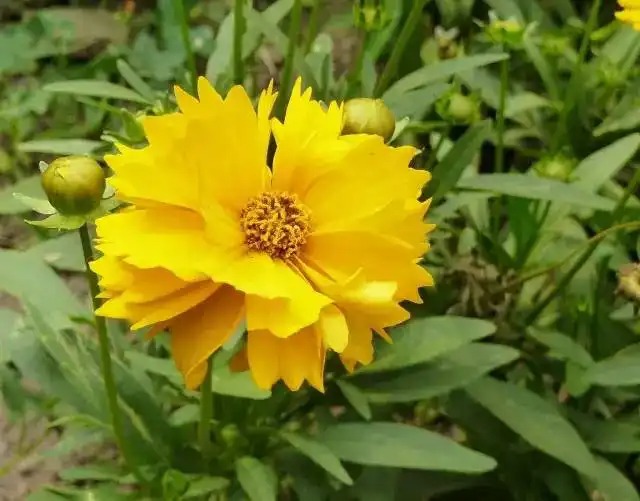
Shasta daisy

Golden chrysanthemum
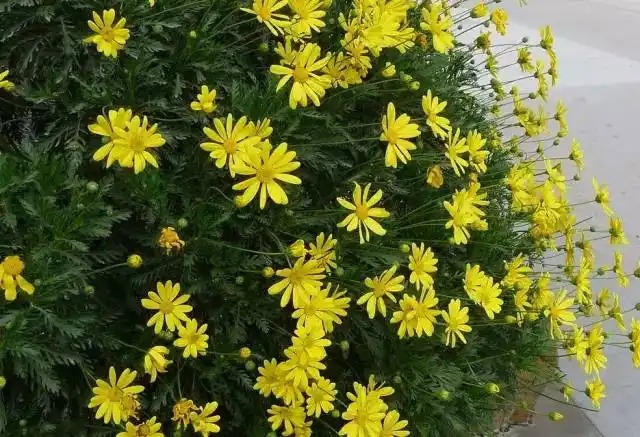
Artemisia silverii
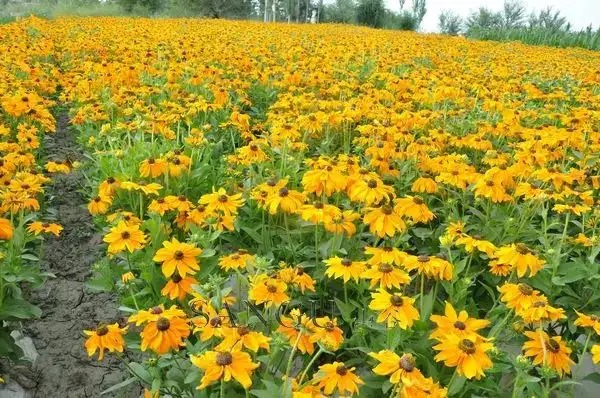
Golden Plate Achillea Millefolium
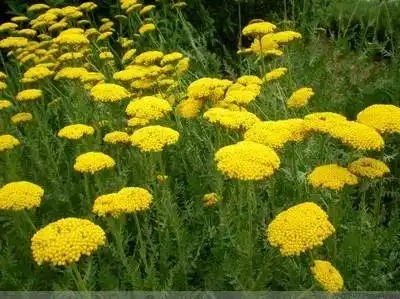
Achillea millefolium
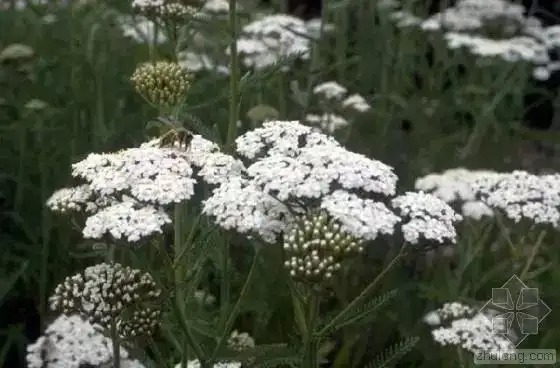
Perennial chrysanthemum

Yaju
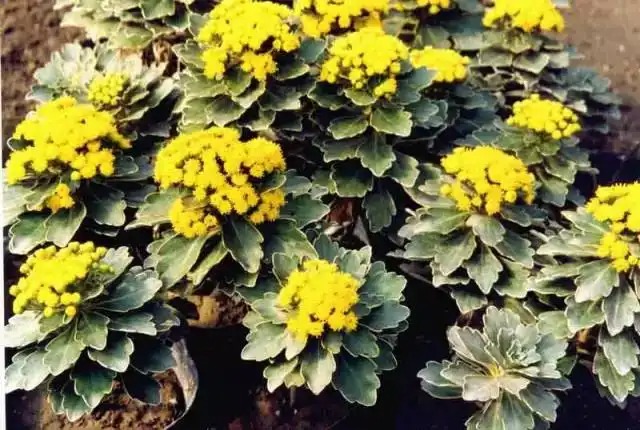
Chrysanthemum
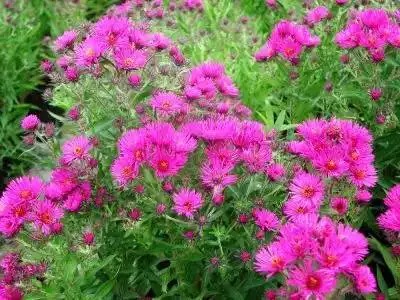
Silver chrysanthemum
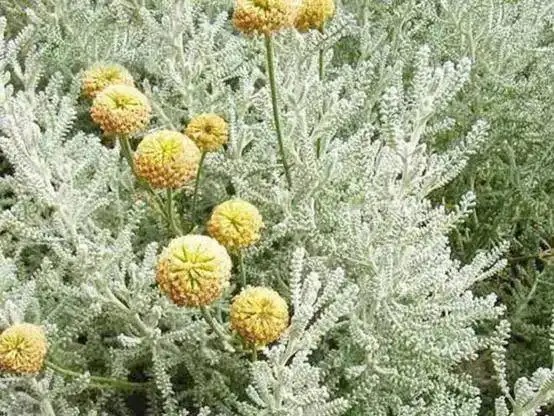
Purple chrysanthemum
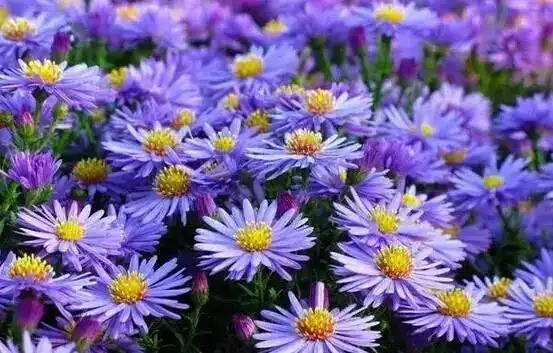
Echinacea
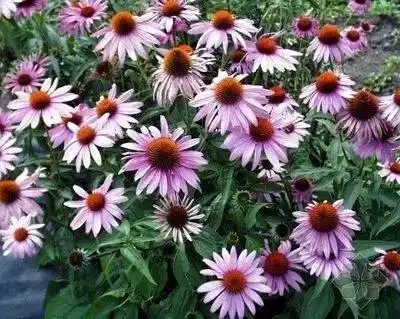
Chijin Powder
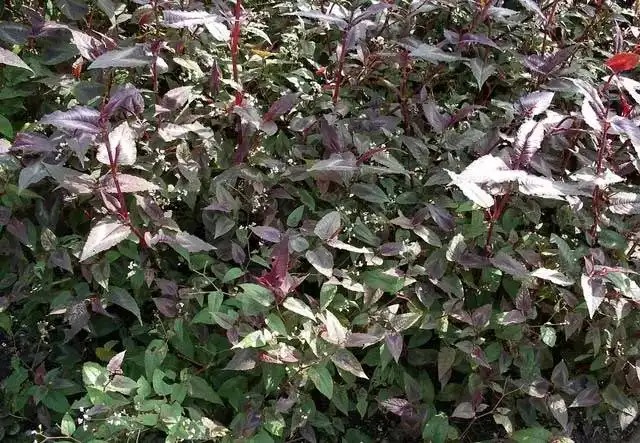
Aspidistra
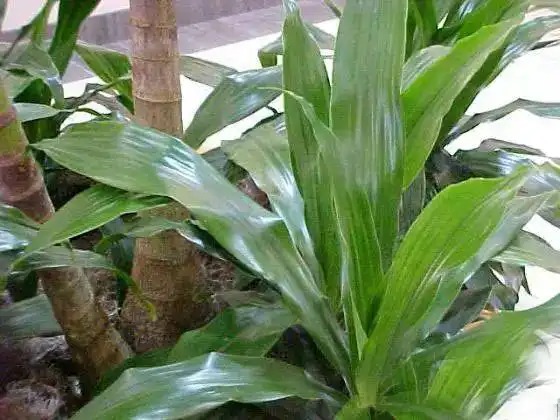
Beautiful evening primrose
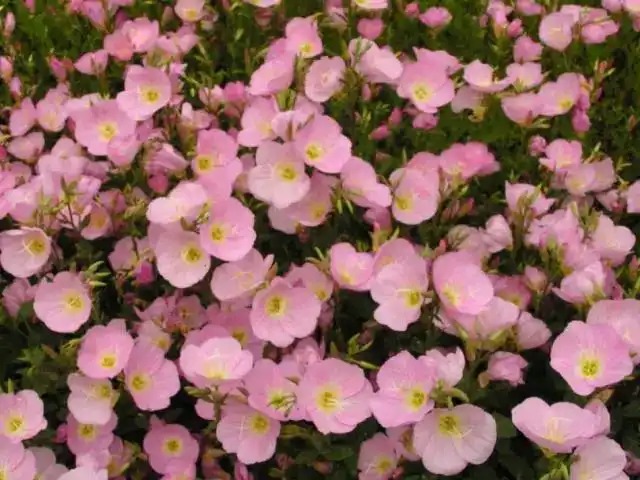
Willow Saddle Grass
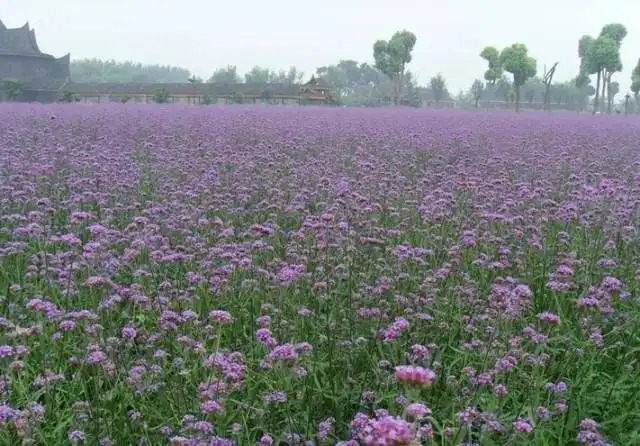
Perennial Verbena

Houttuynia cordata
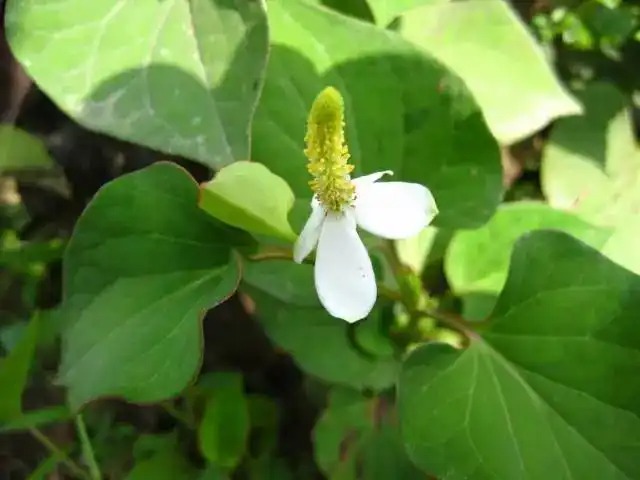
Purple-leaved Duck Celery
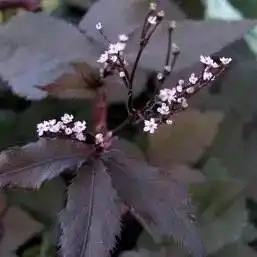
Ground cover dianthus
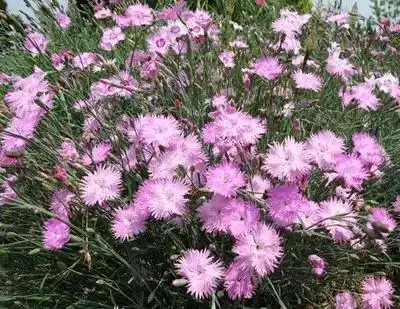
Golden Leaf Acorus
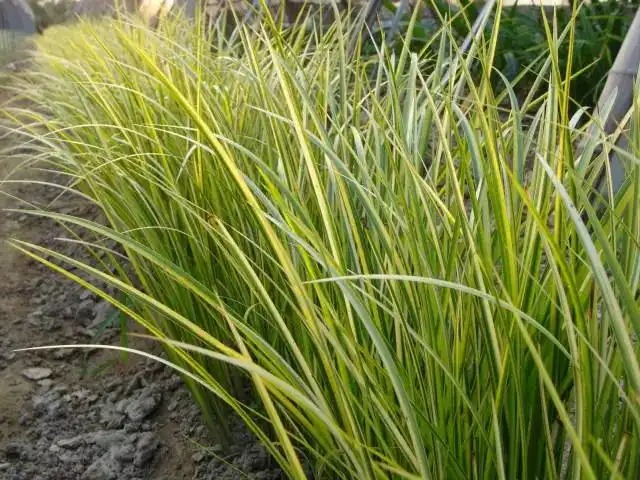
Willow
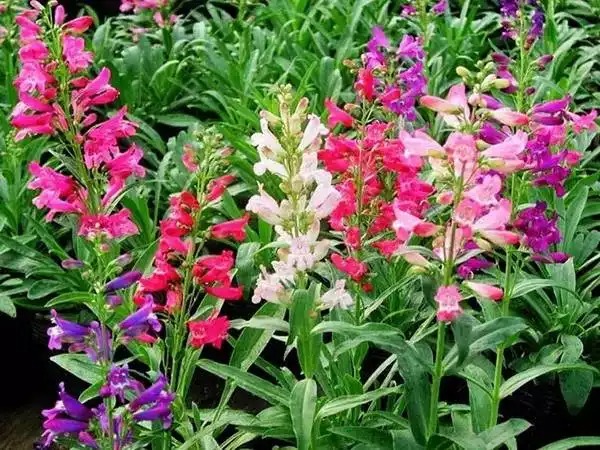
Sedum chinense
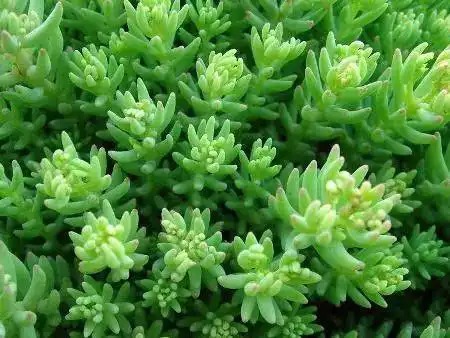
Red Ice Flower
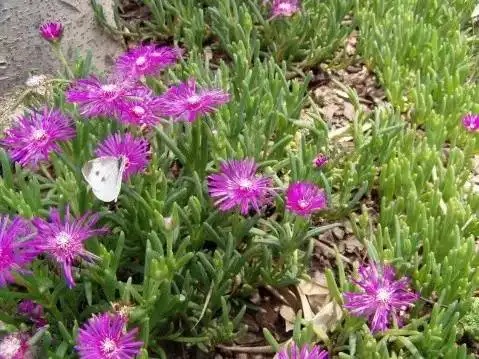
Jade belt grass
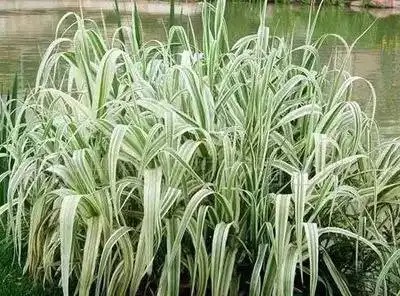
Miscanthus slenderleaf
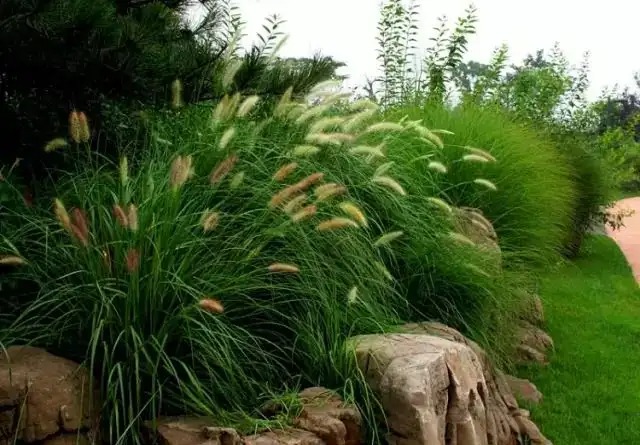
Silver-edged awn

Dwarf pampas grass
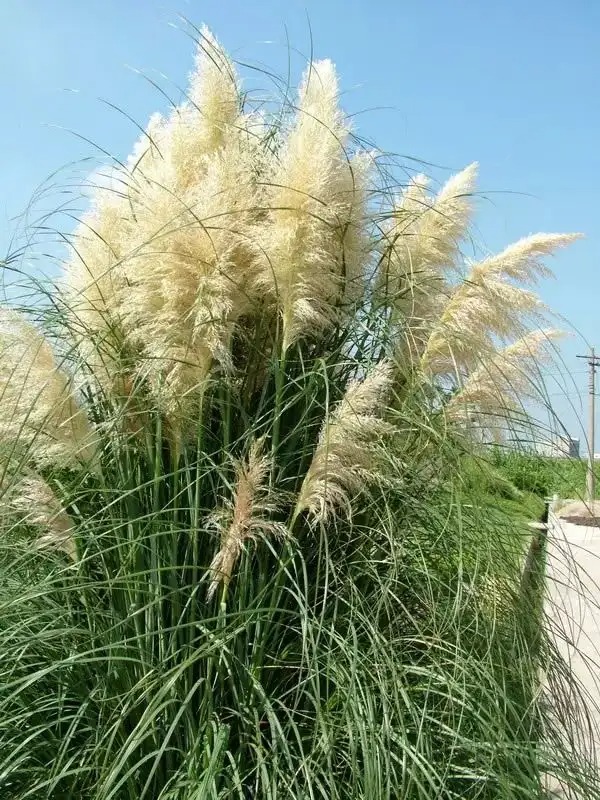
pampas grass
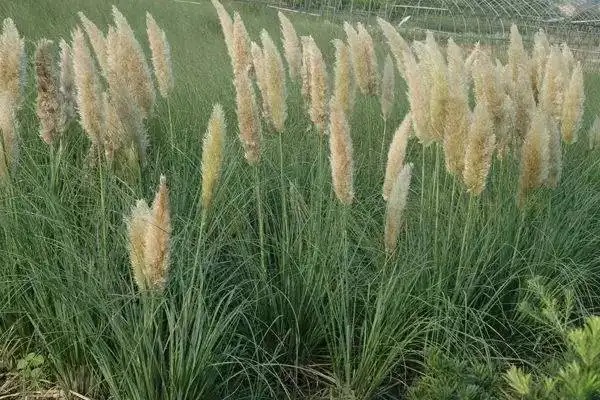
Stipa tenuifolia

Bluegrass

Carex striata
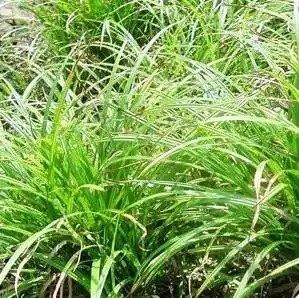
Geranium

kale

Five-color grass
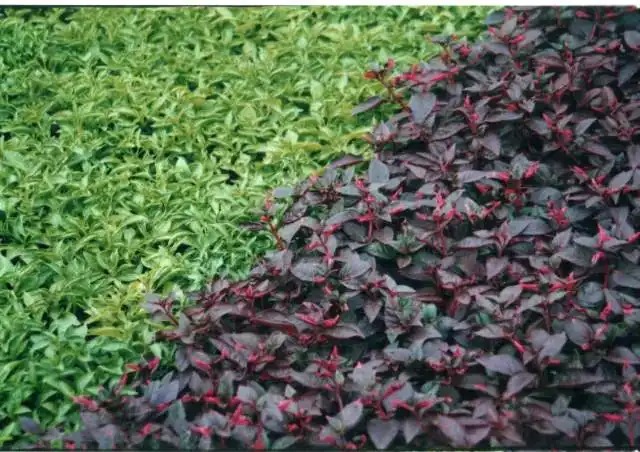
Blue Fescue

Golden Leaf Ligustrum lucidum
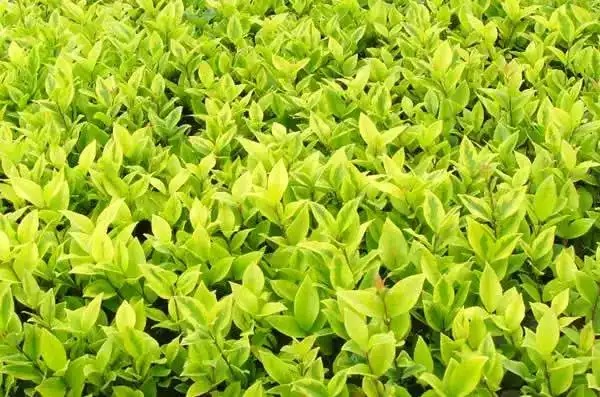
Sweet clover
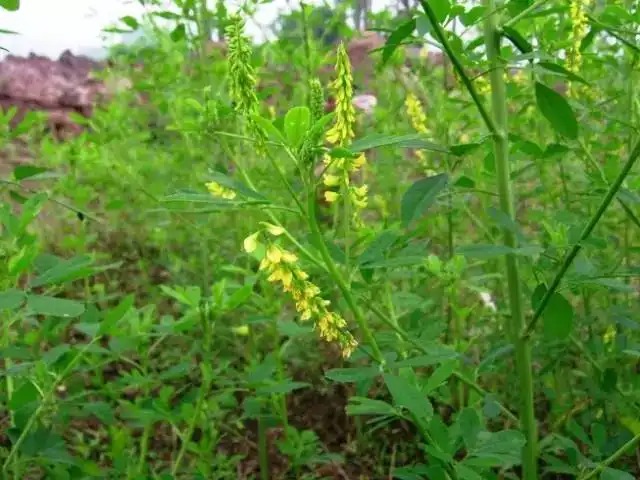
Cypress

Zhugecai

Delphinium
